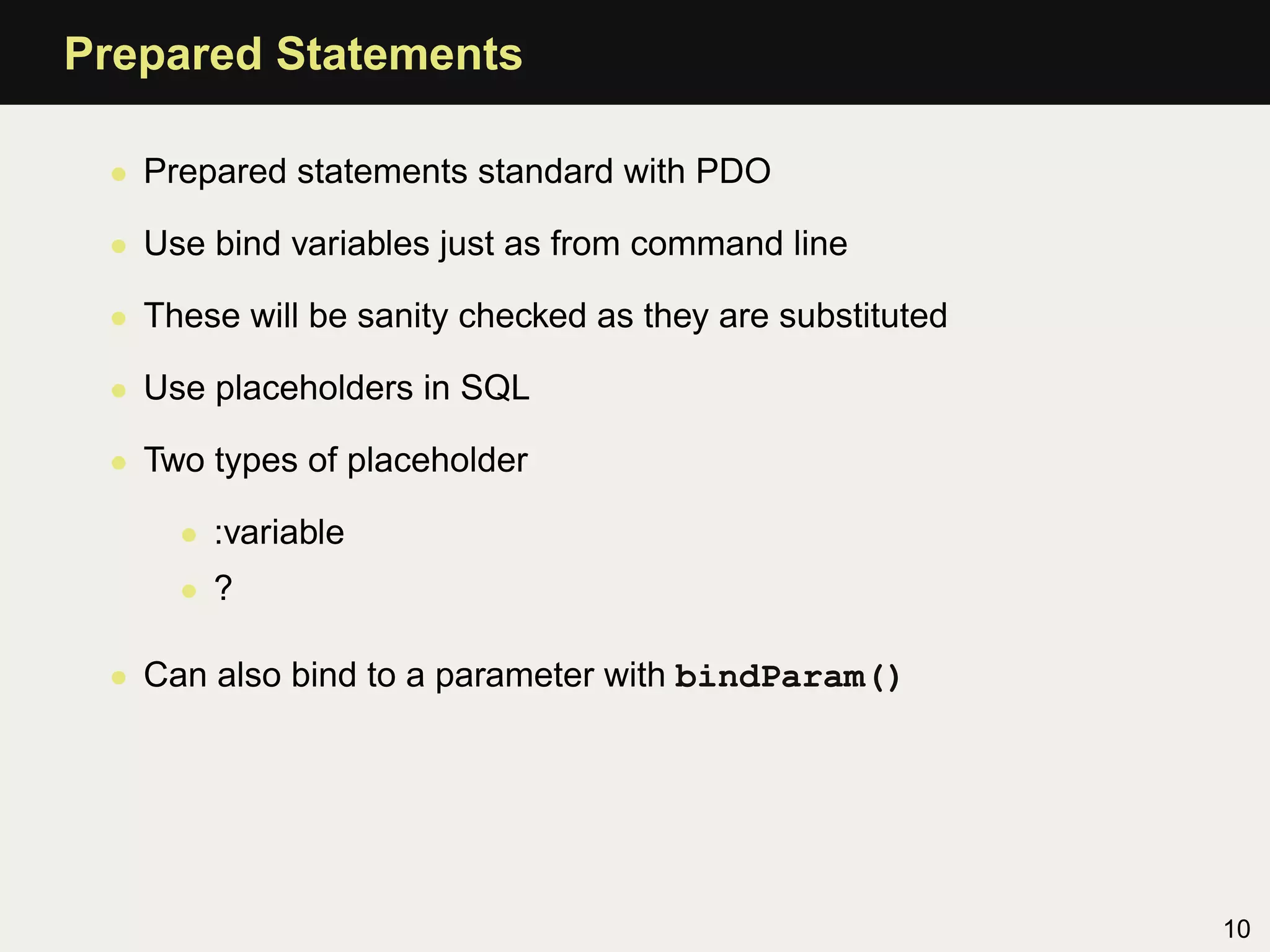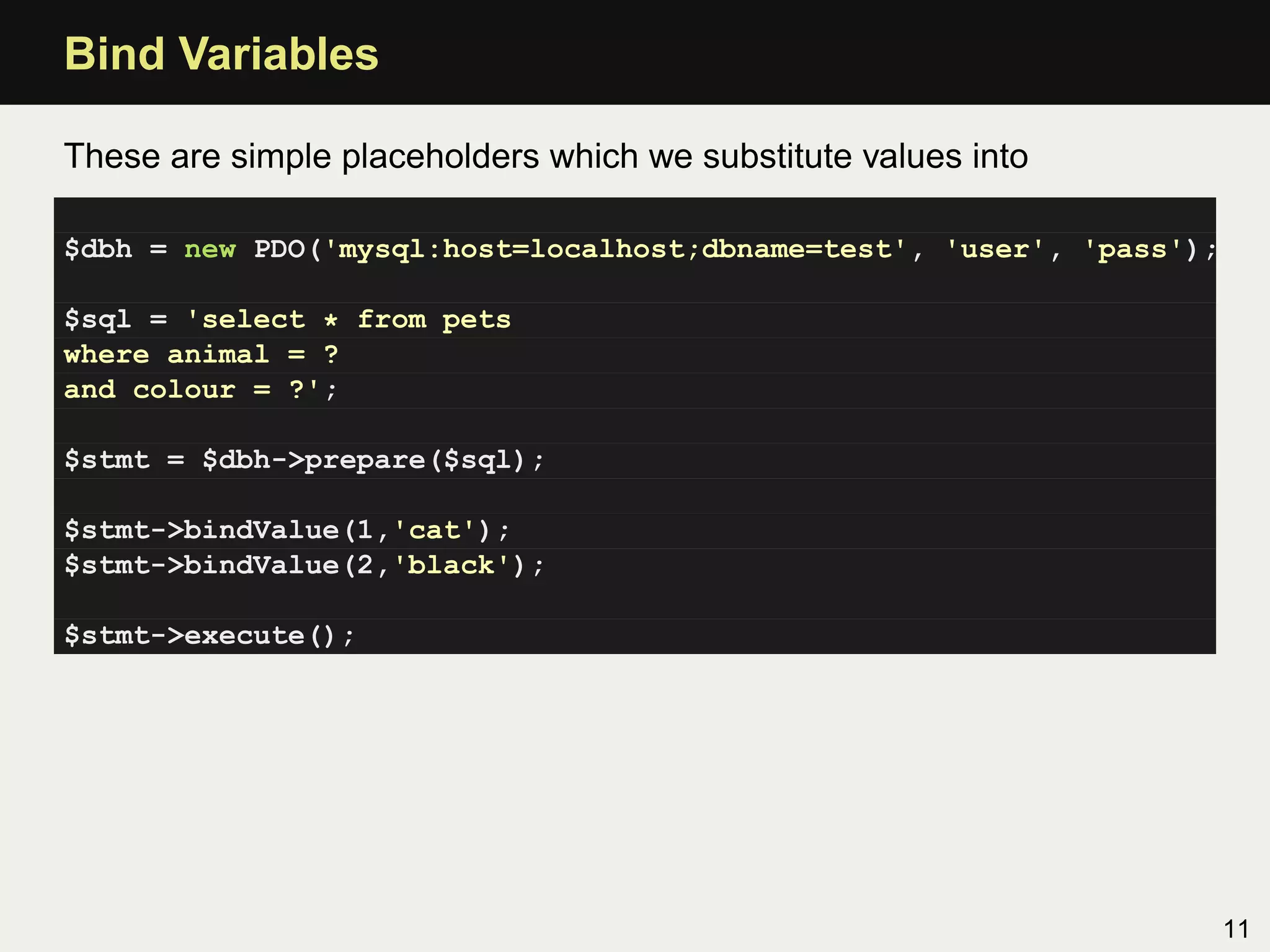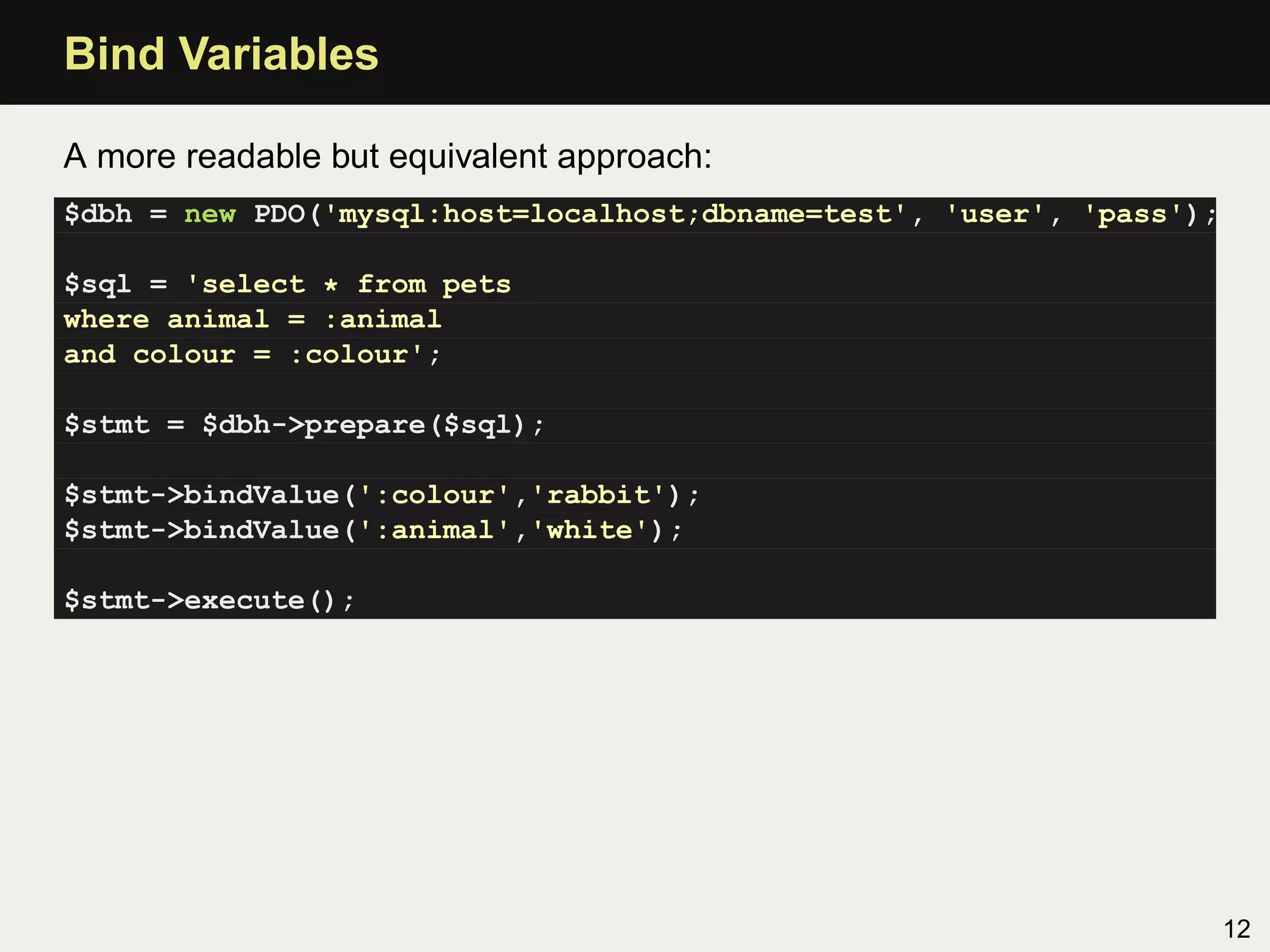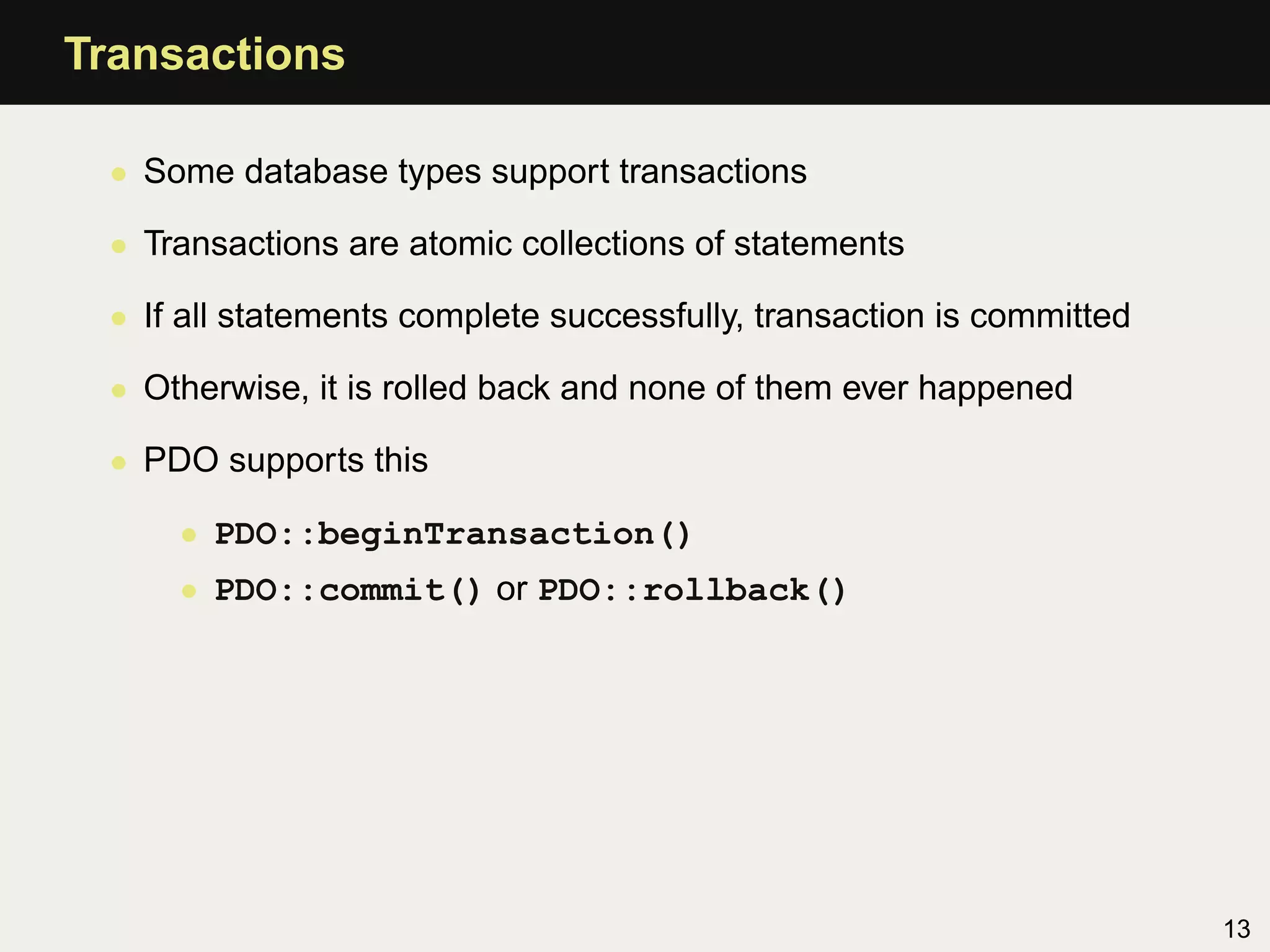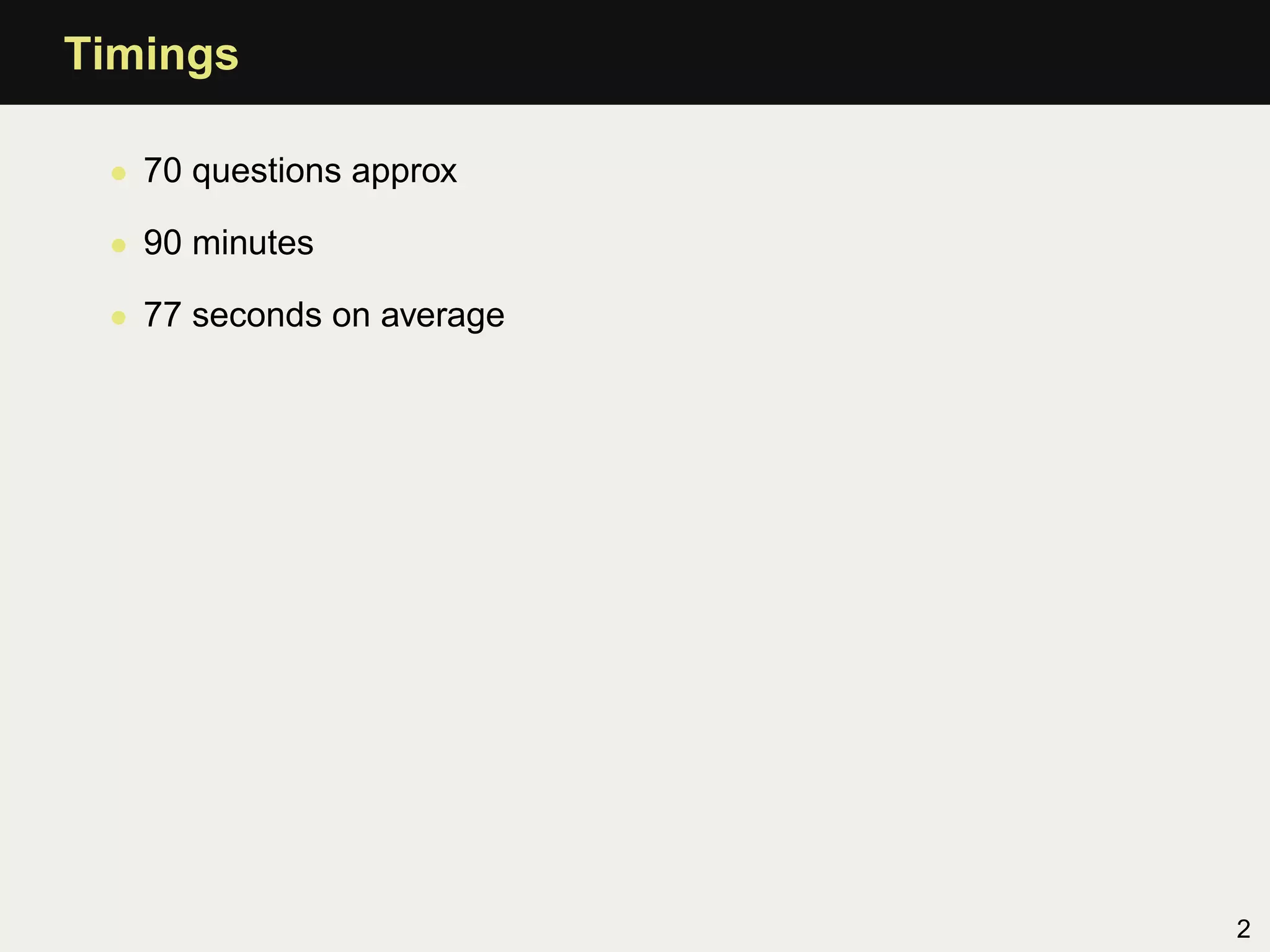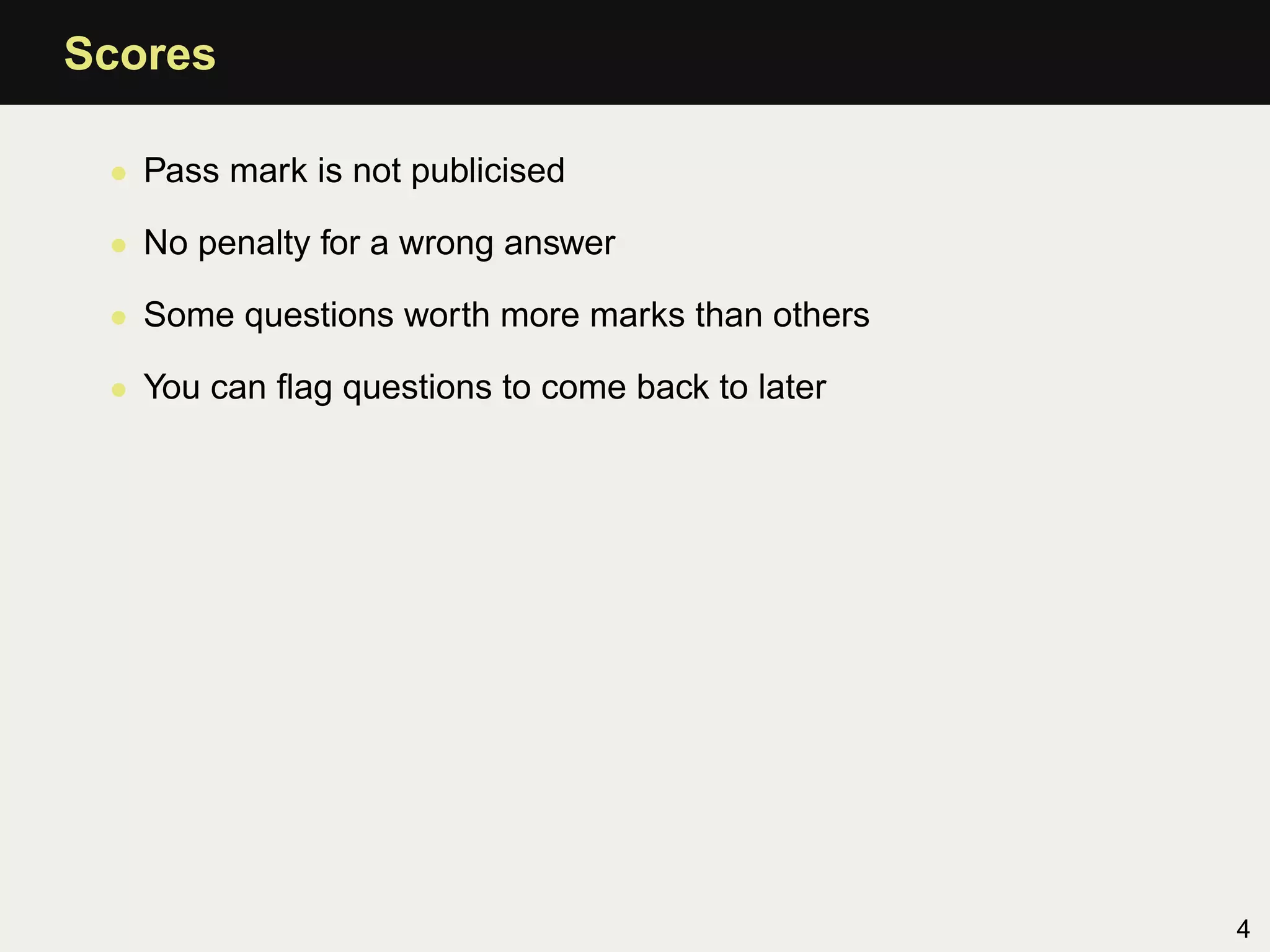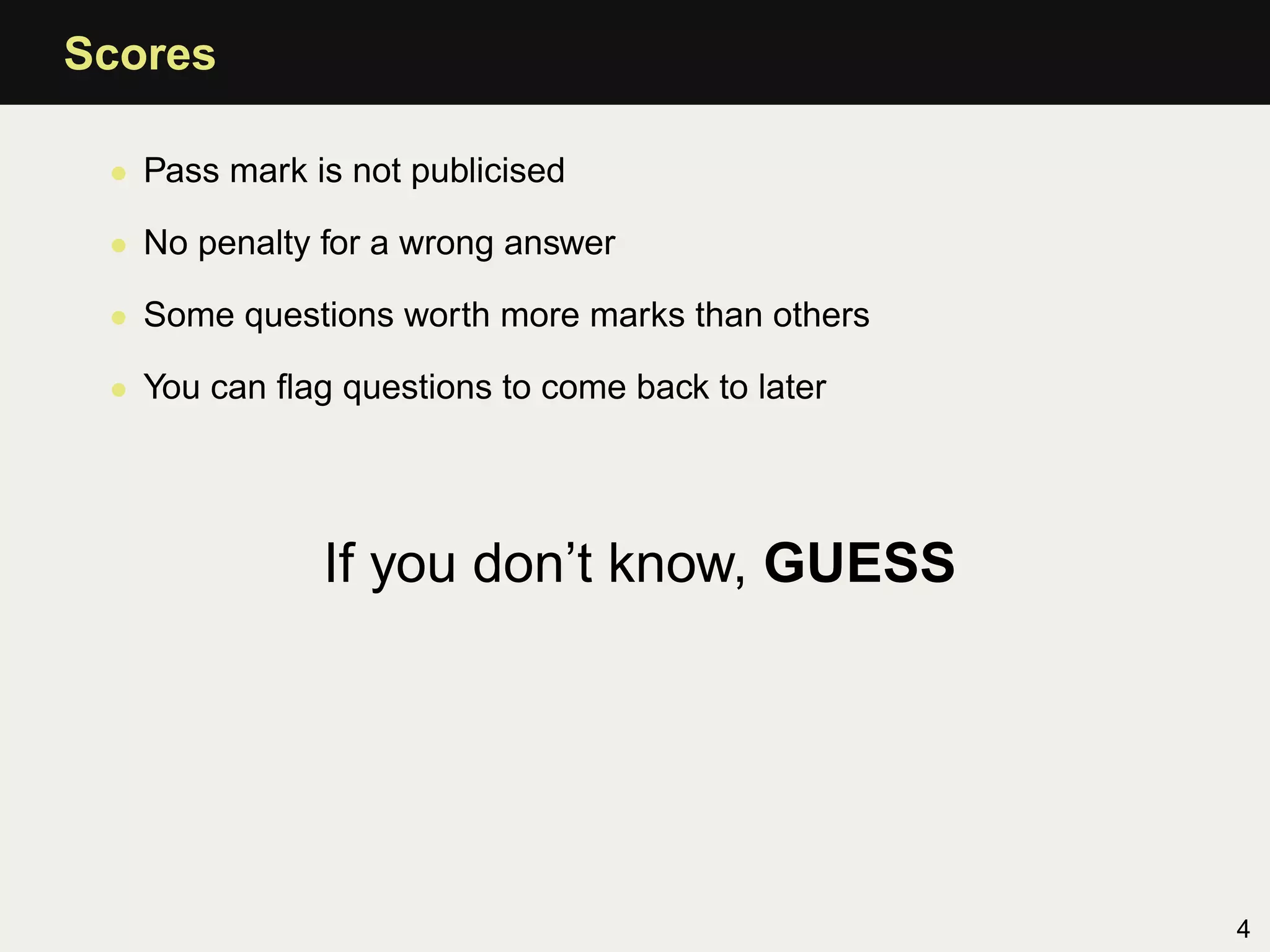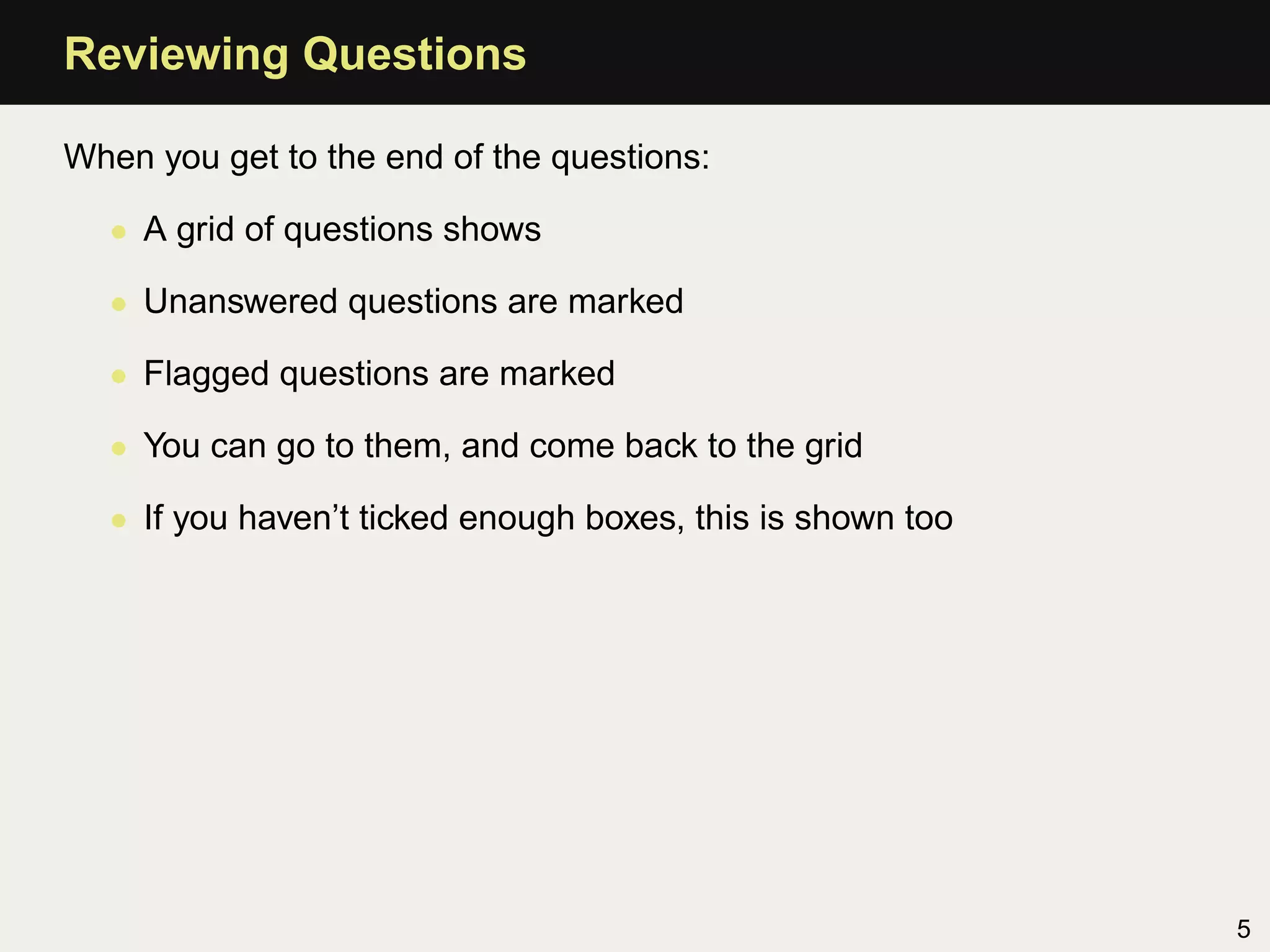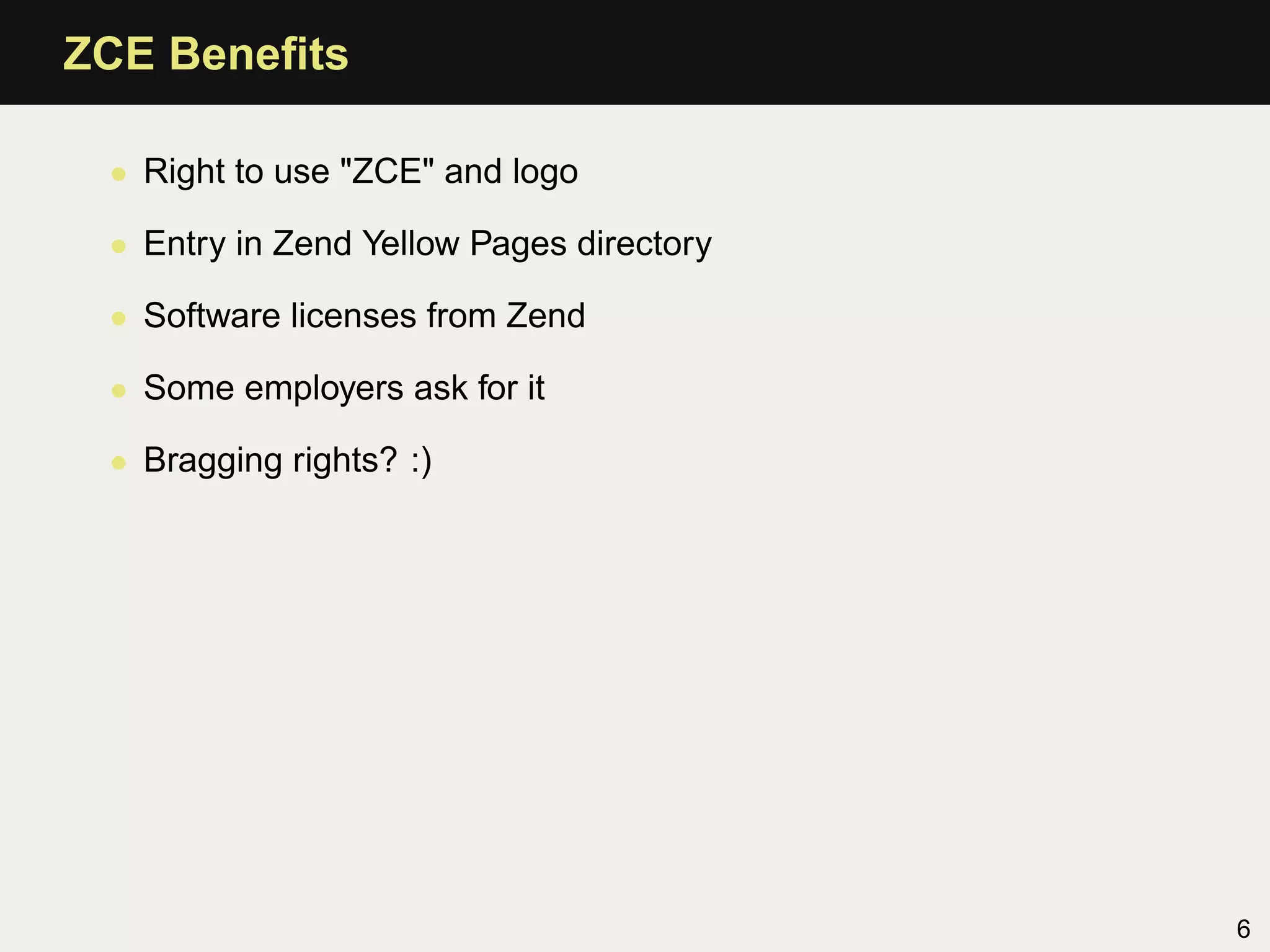The document is a comprehensive guide for PHP certification exam preparation, outlining essential topics from PHP syntax to data types, operators, and control structures. It emphasizes key resources like the PHP manual, PHP functions, and coding best practices. Additionally, it covers advanced concepts such as anonymous functions, file handling, and configuration settings relevant to PHP development.

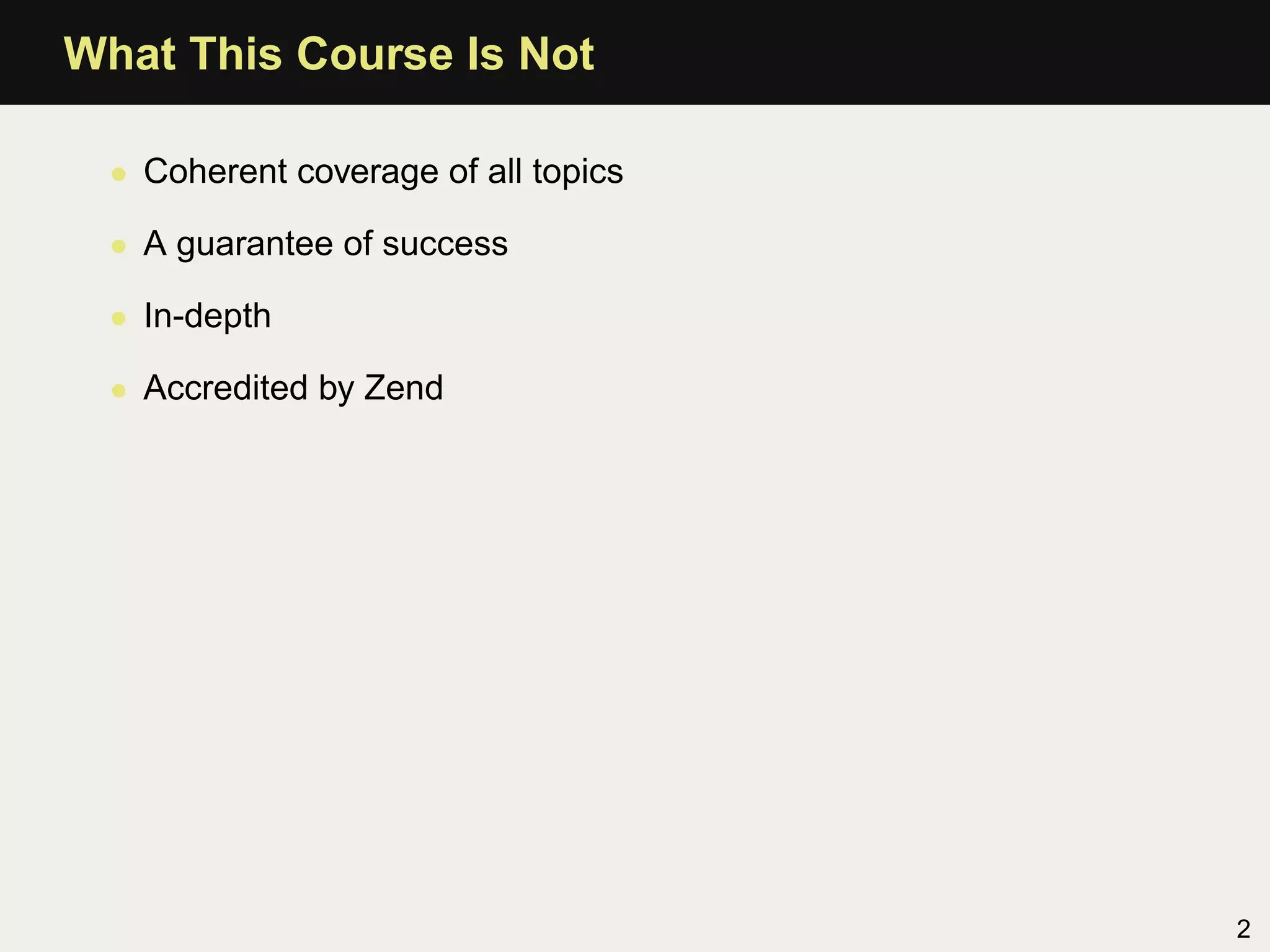
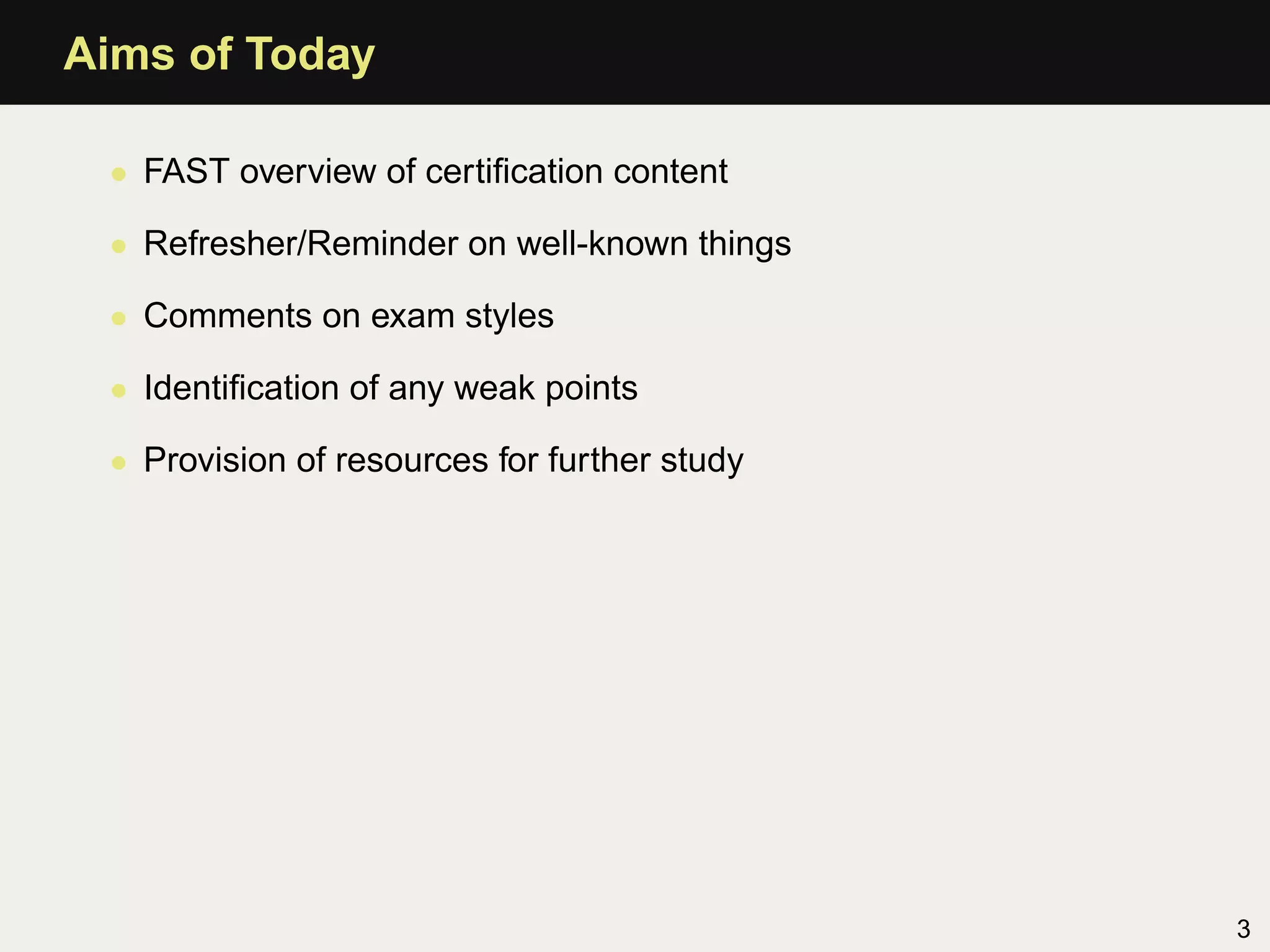

![Most Important Resource: php.net
• Main Page: http://php.net
• Local versions: http://uk2.php.net
• Many translations available
• Cool Shortcut: http://php.net/[function name]
• Redirects you straight to that page
• http://php.net/array_walk
•
http://uk2.php.net/manual/en/function.array-walk.php
5](https://image.slidesharecdn.com/all-110517124055-phpapp02/75/Zend-Certification-Preparation-Tutorial-5-2048.jpg)
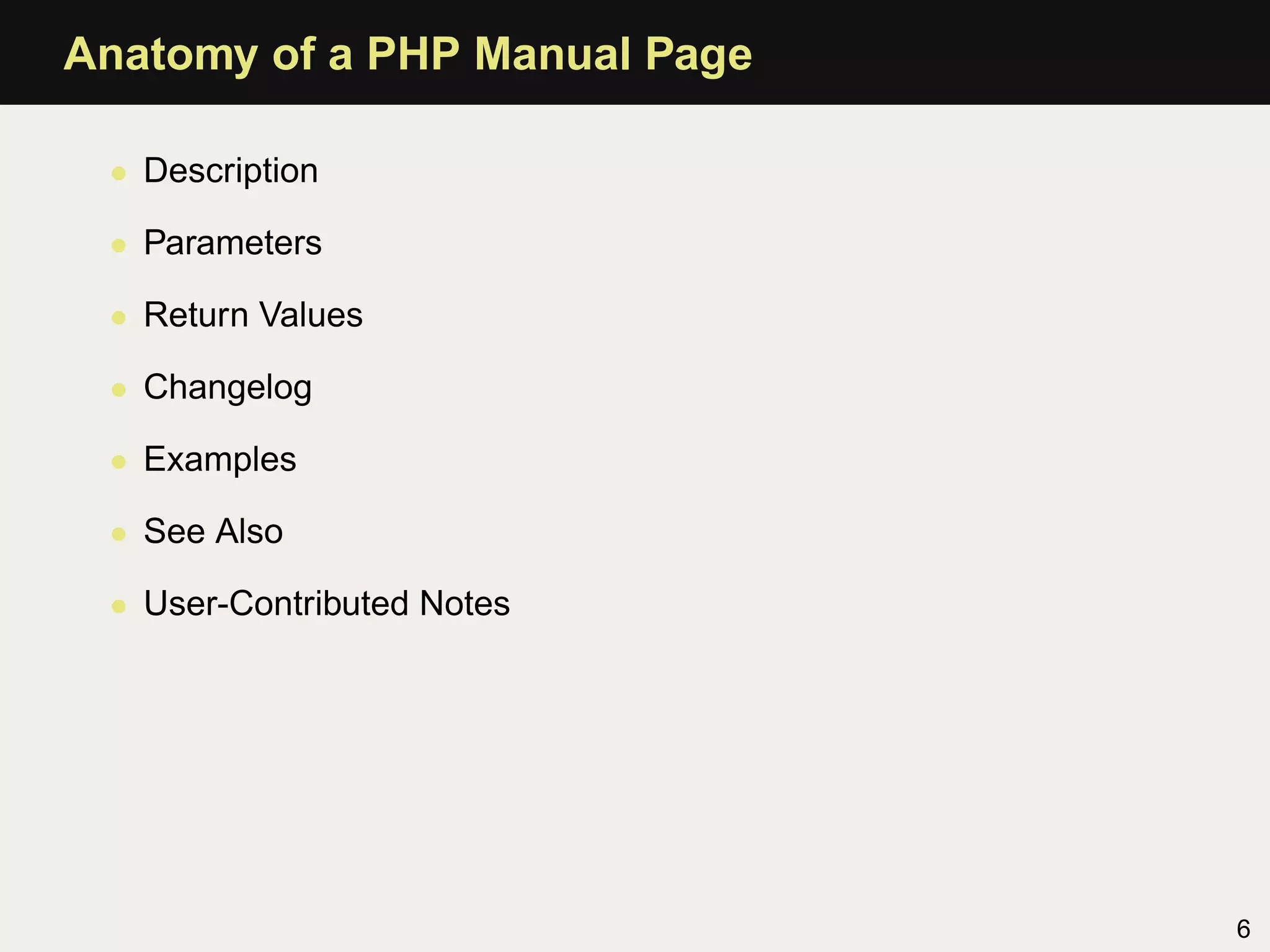
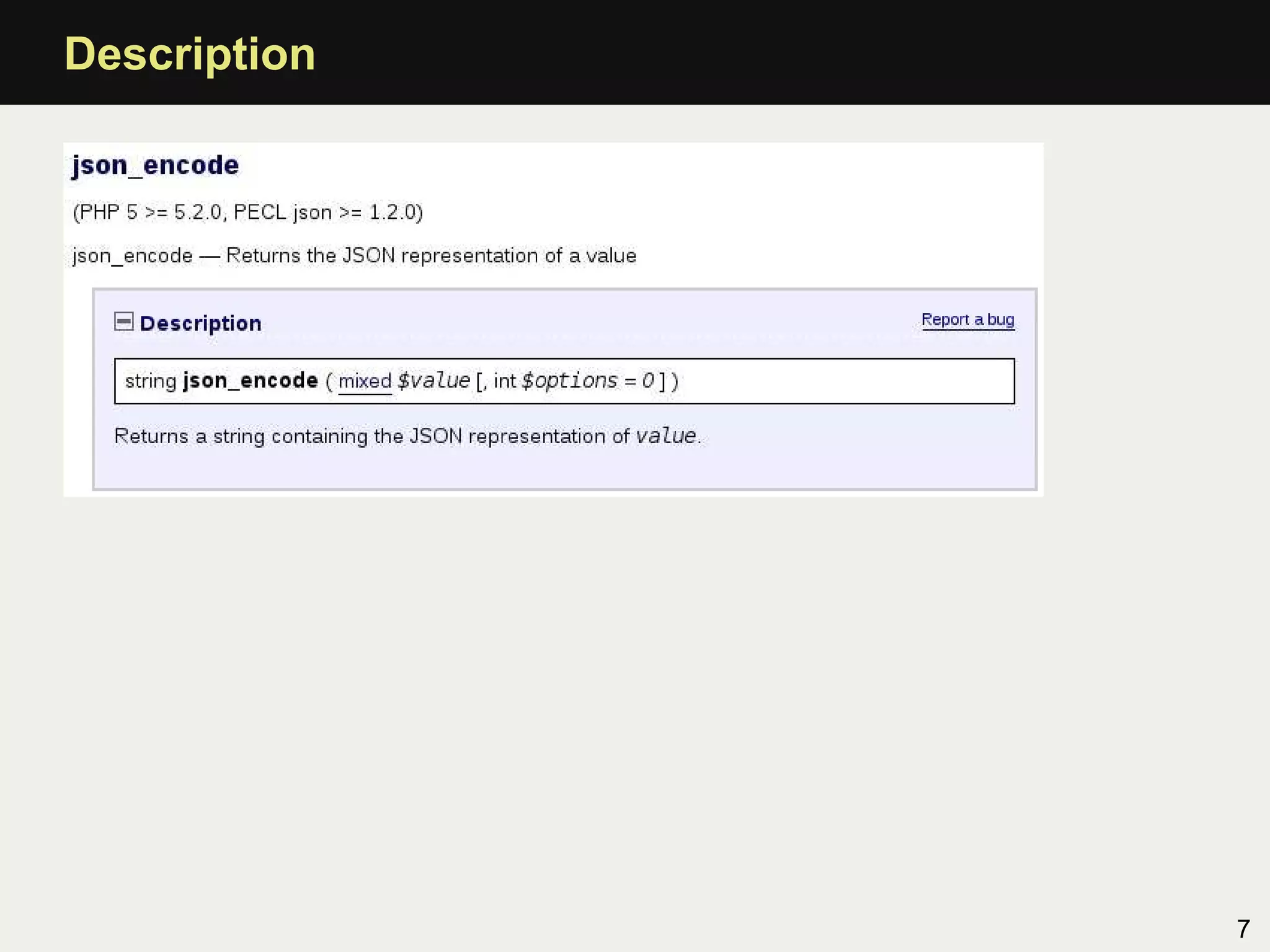
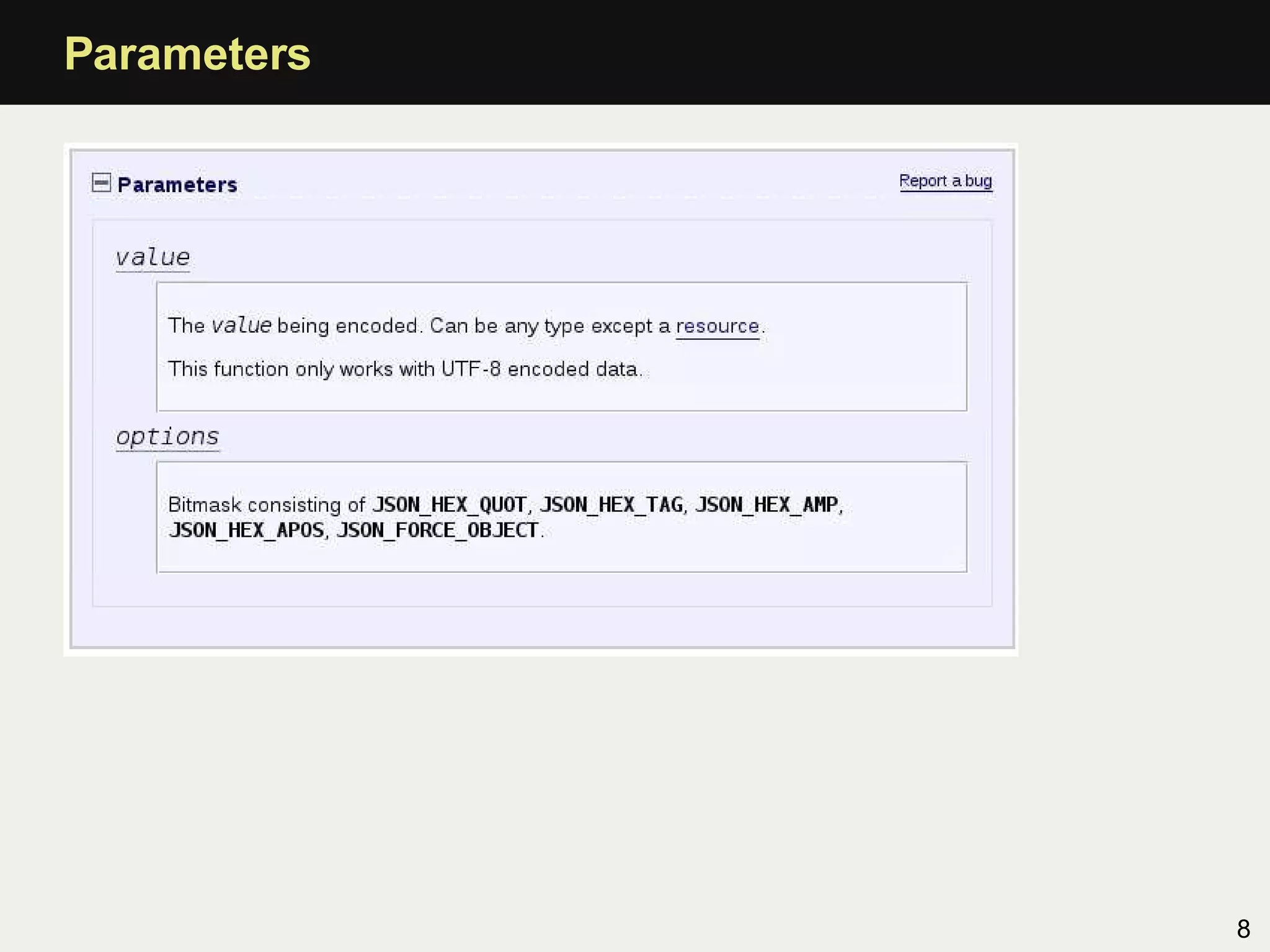

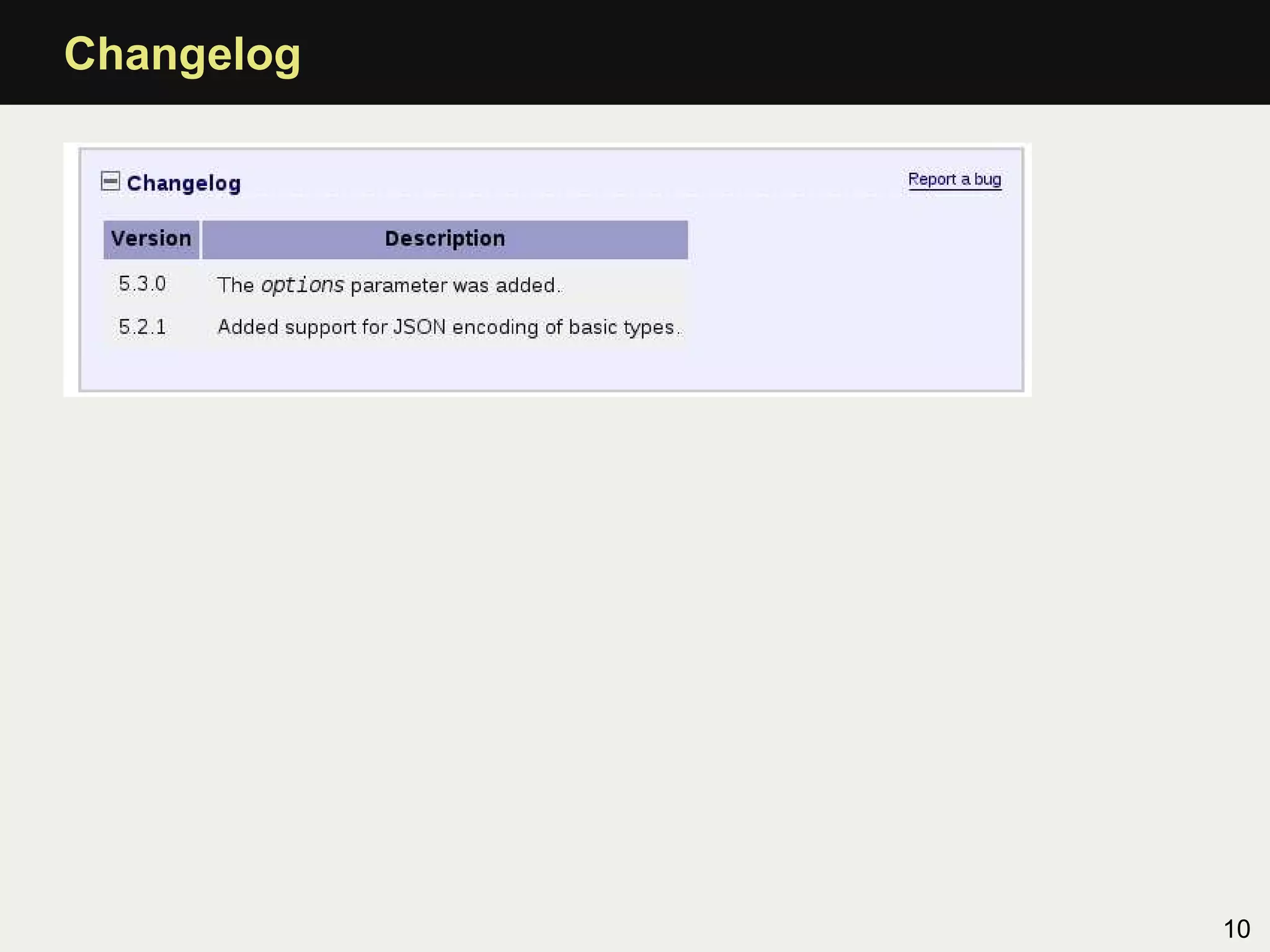
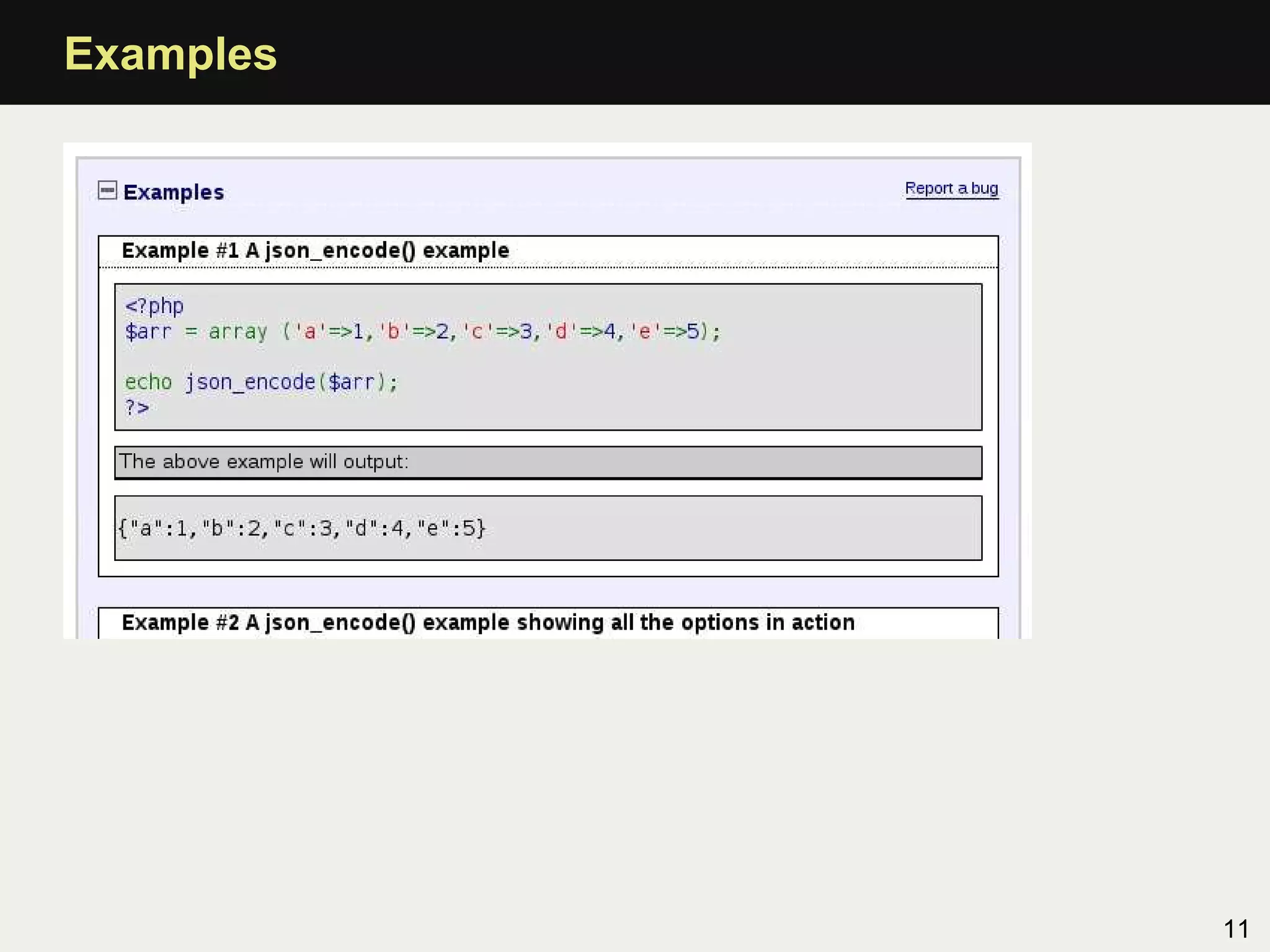

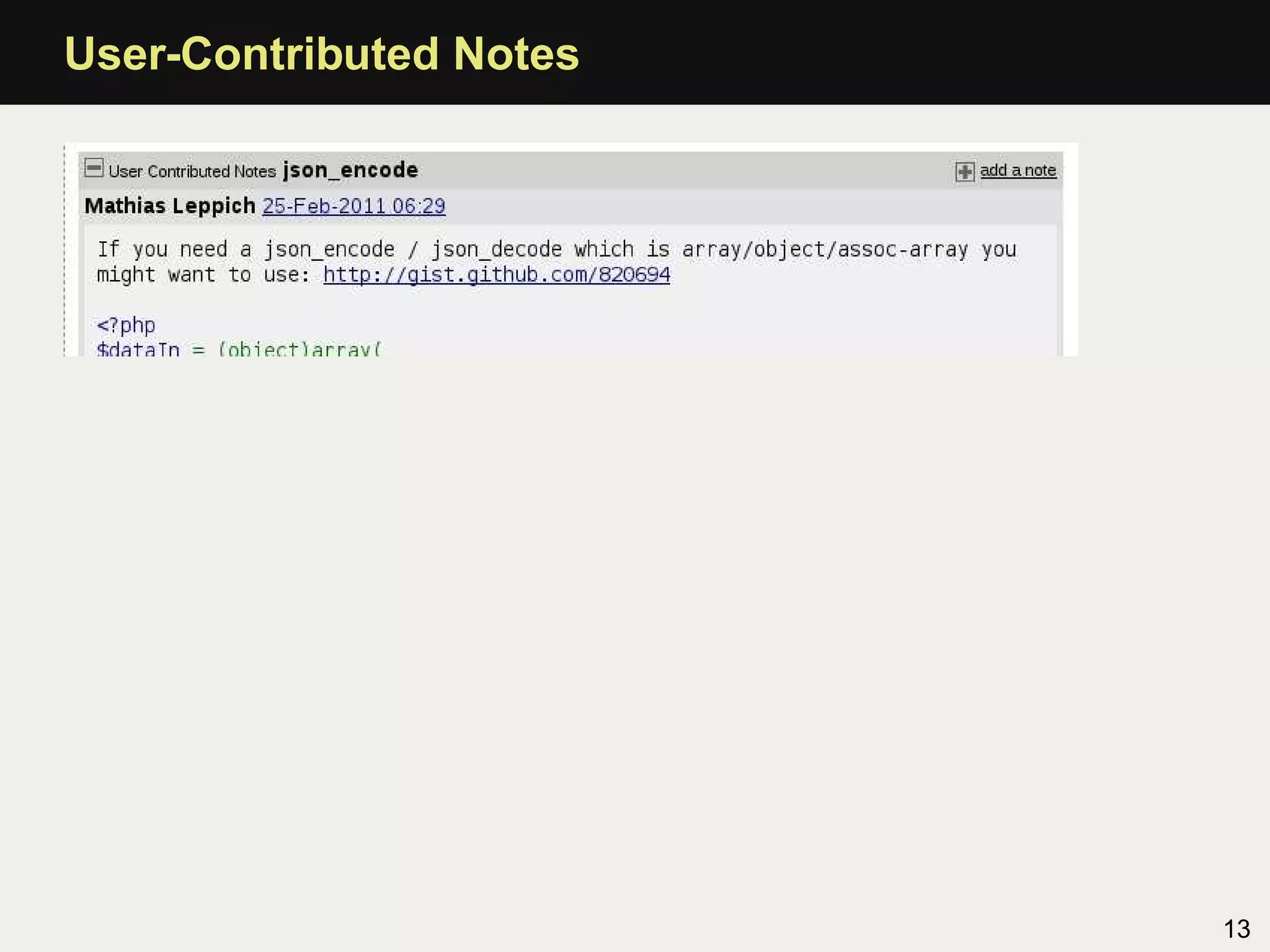

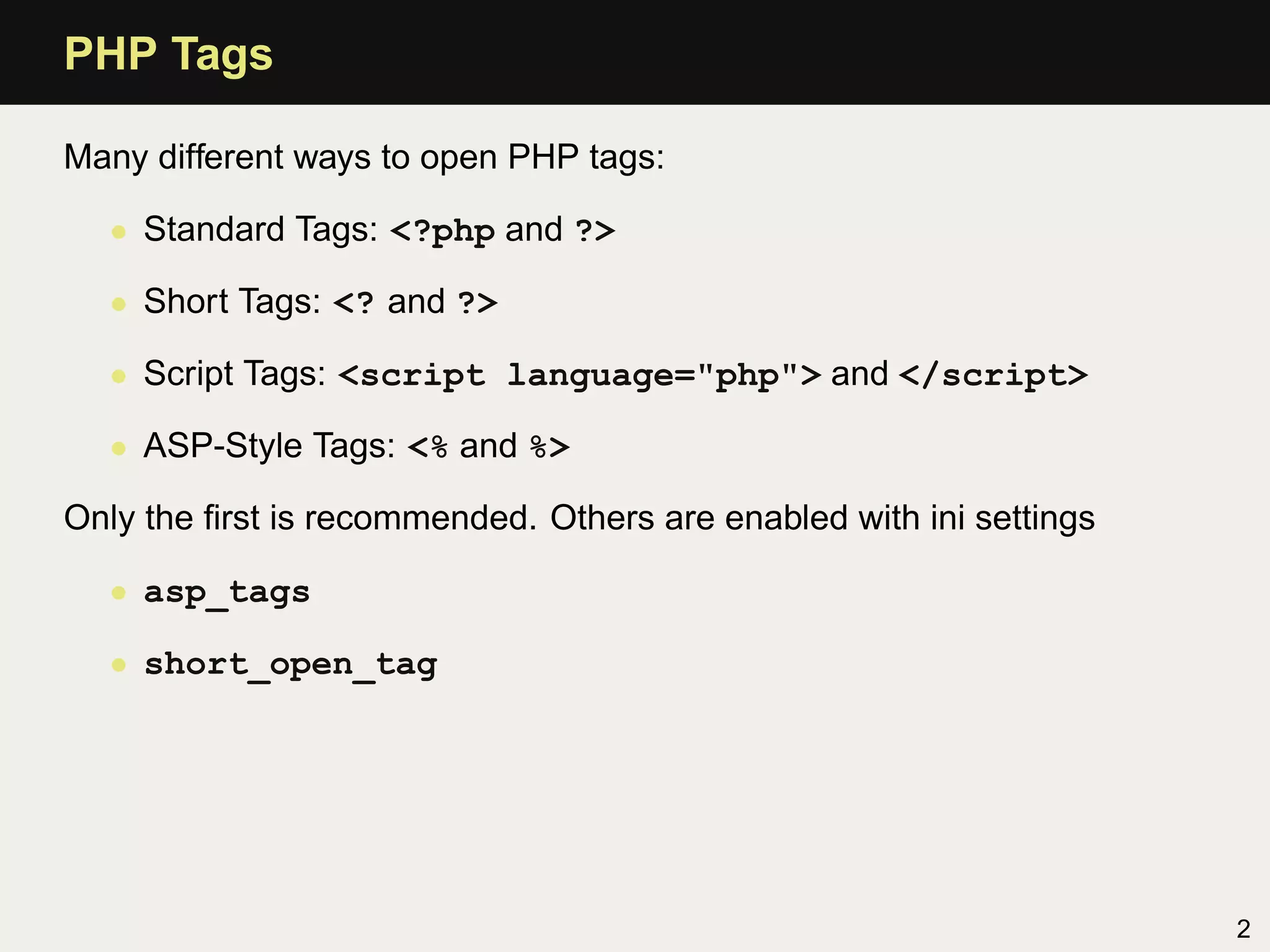
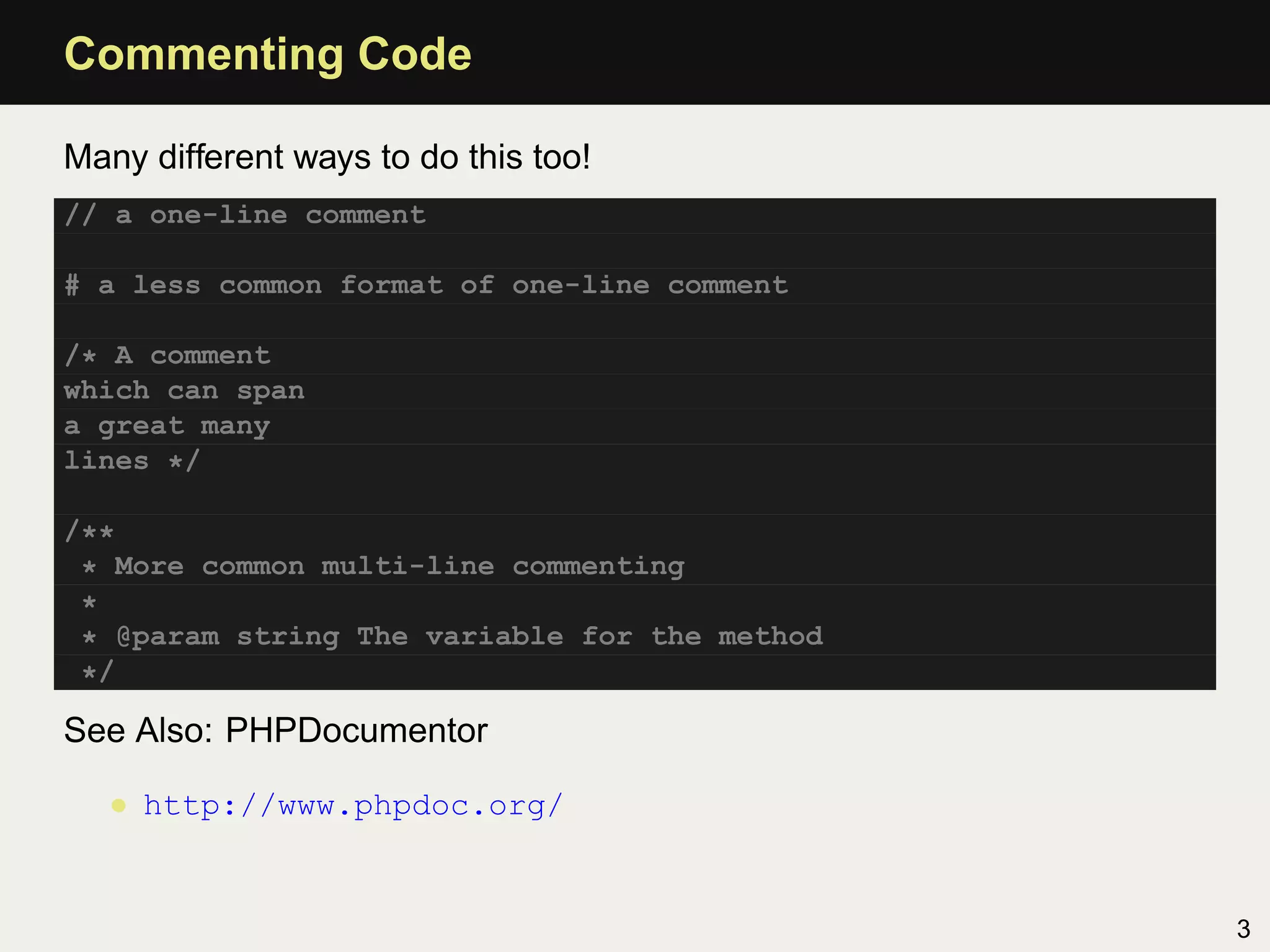
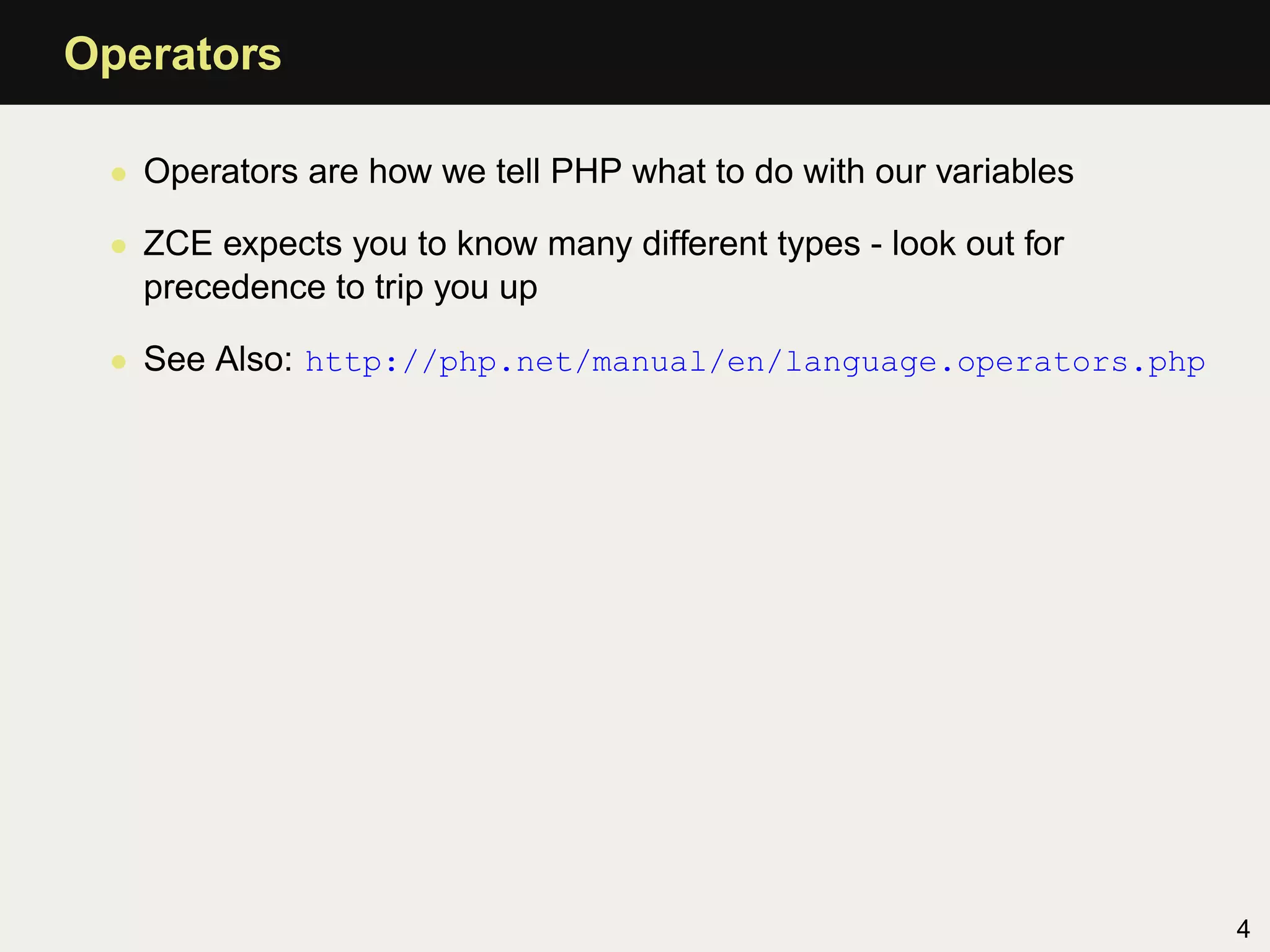
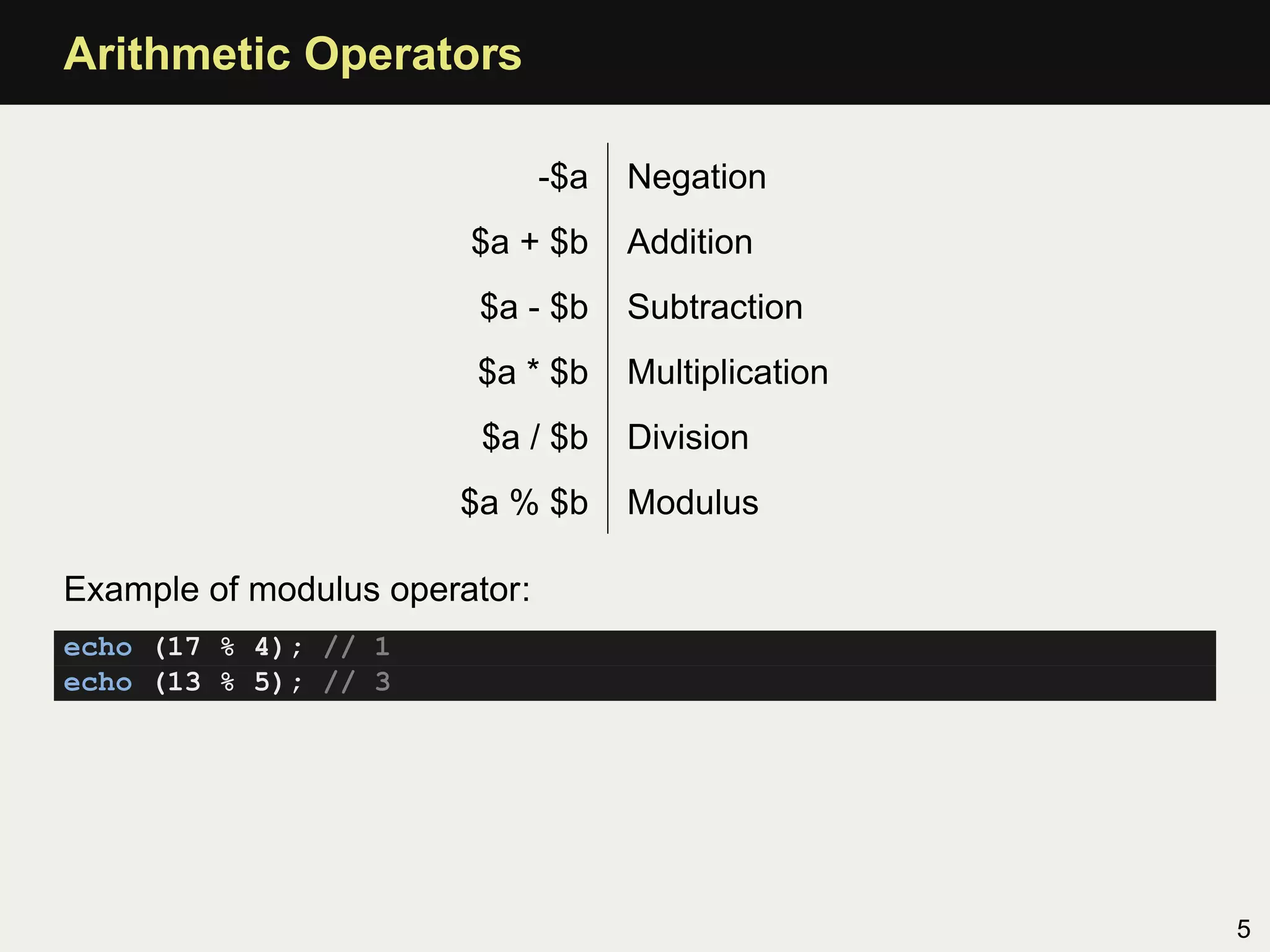
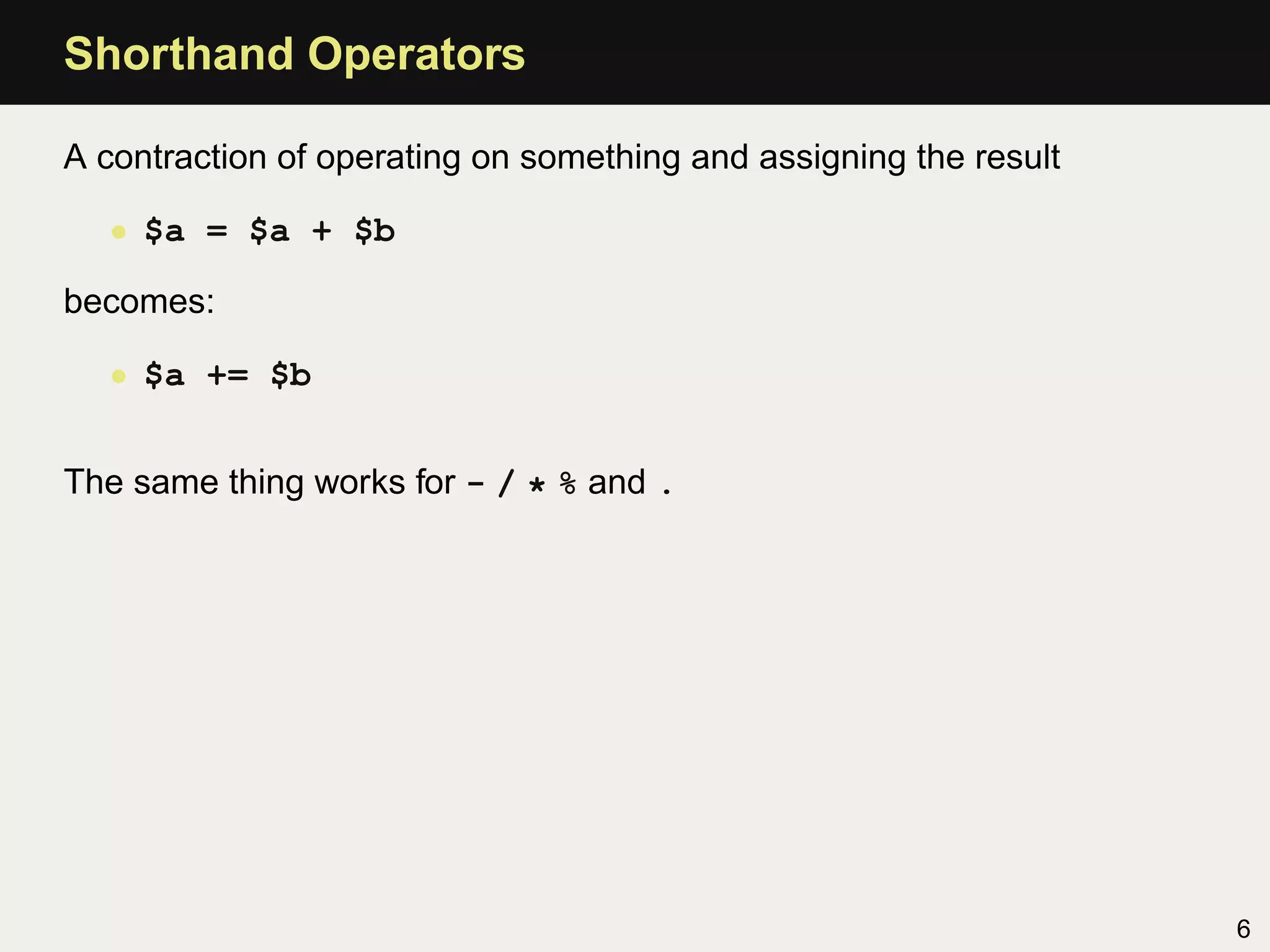
![Ternary Operator
This is a shortcut for an if/else statement.
$a = isset($_GET['param1']) ? $_GET['param1'] : 10;
There’s a contraction of it too, where the first two items match:
$pages = $_GET['pages'] ? $_GET['pages'] : 20;
$pages = $_GET['pages'] ?: 20;
7](https://image.slidesharecdn.com/all-110517124055-phpapp02/75/Zend-Certification-Preparation-Tutorial-20-2048.jpg)
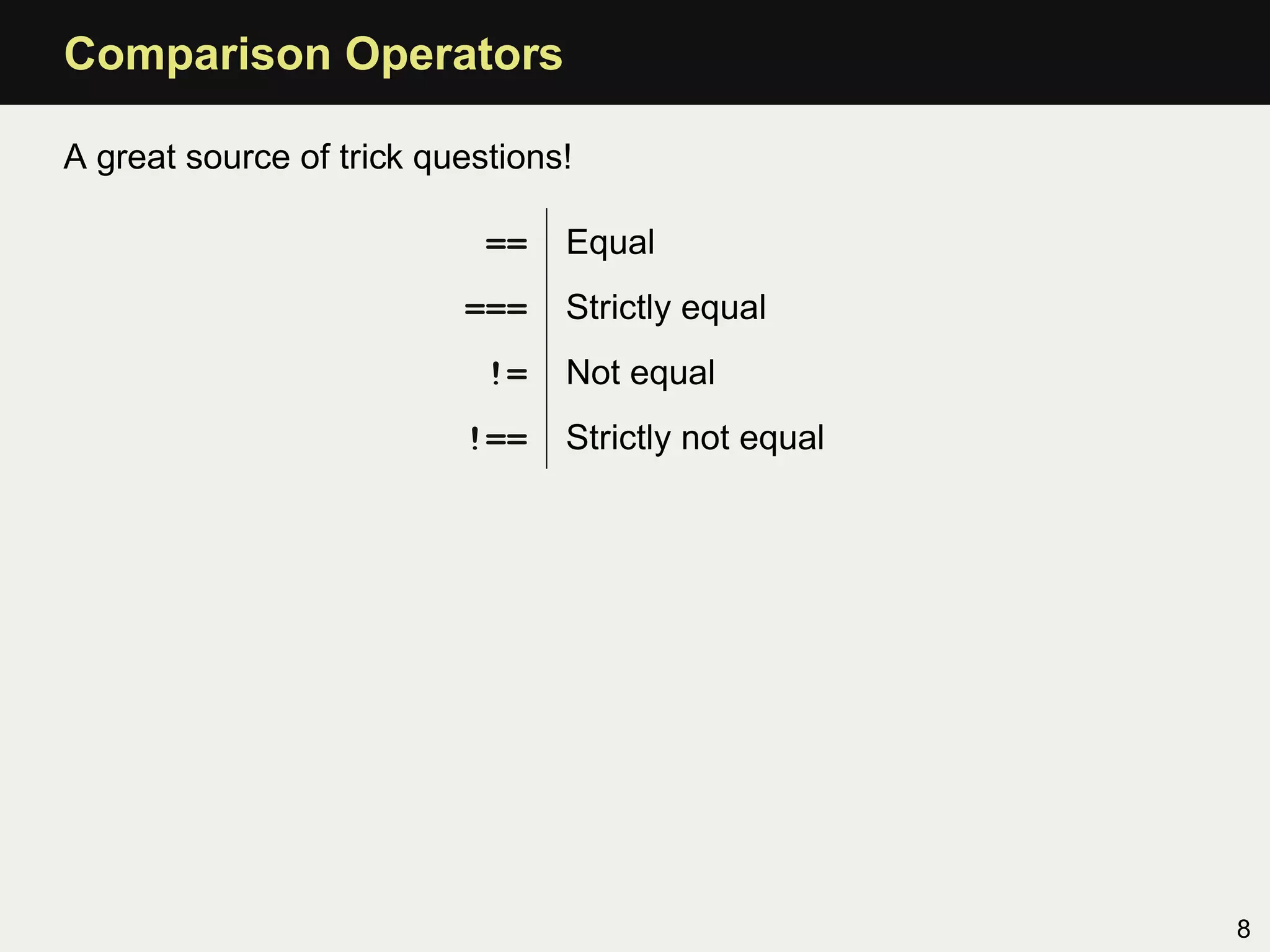
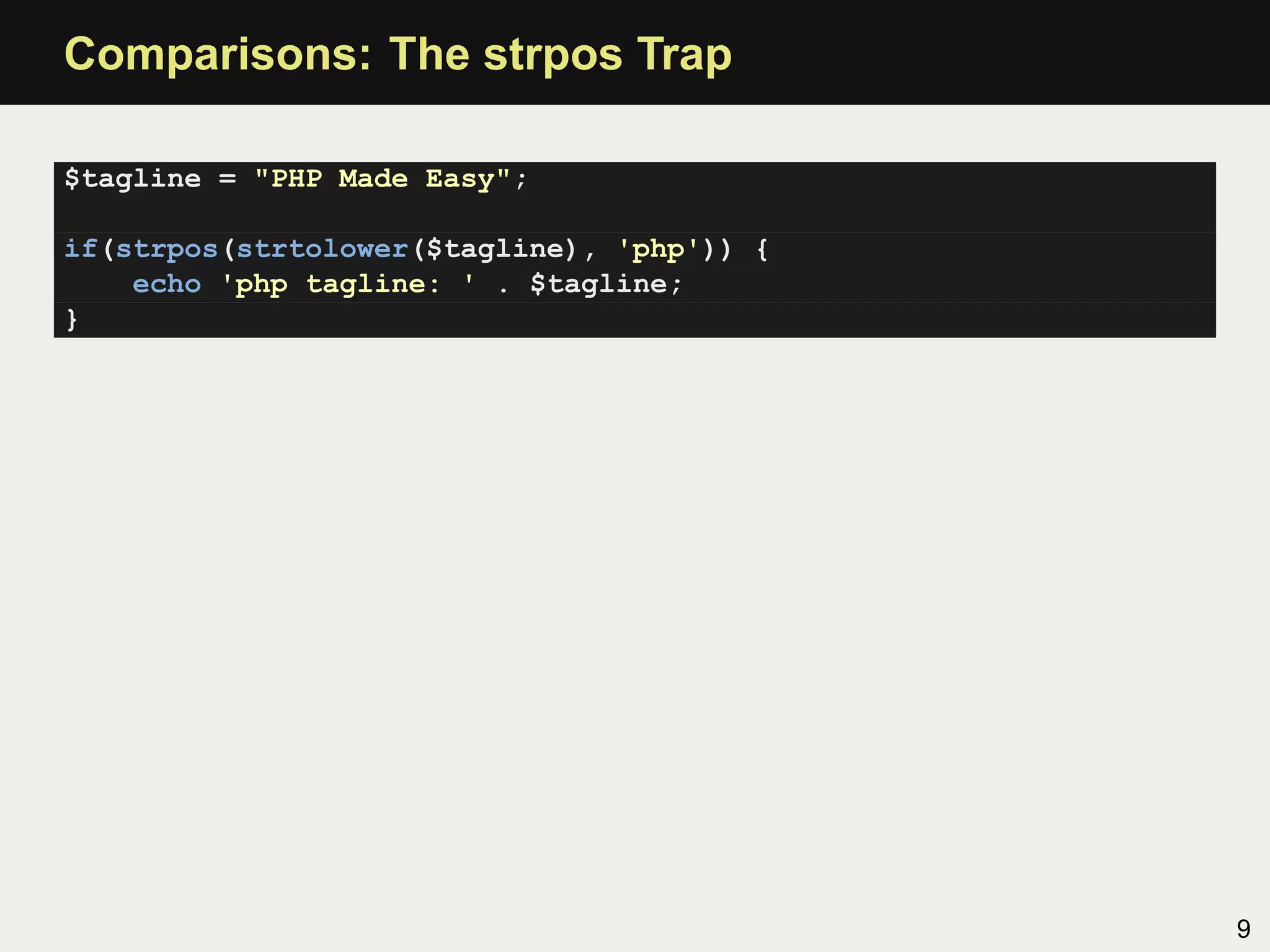
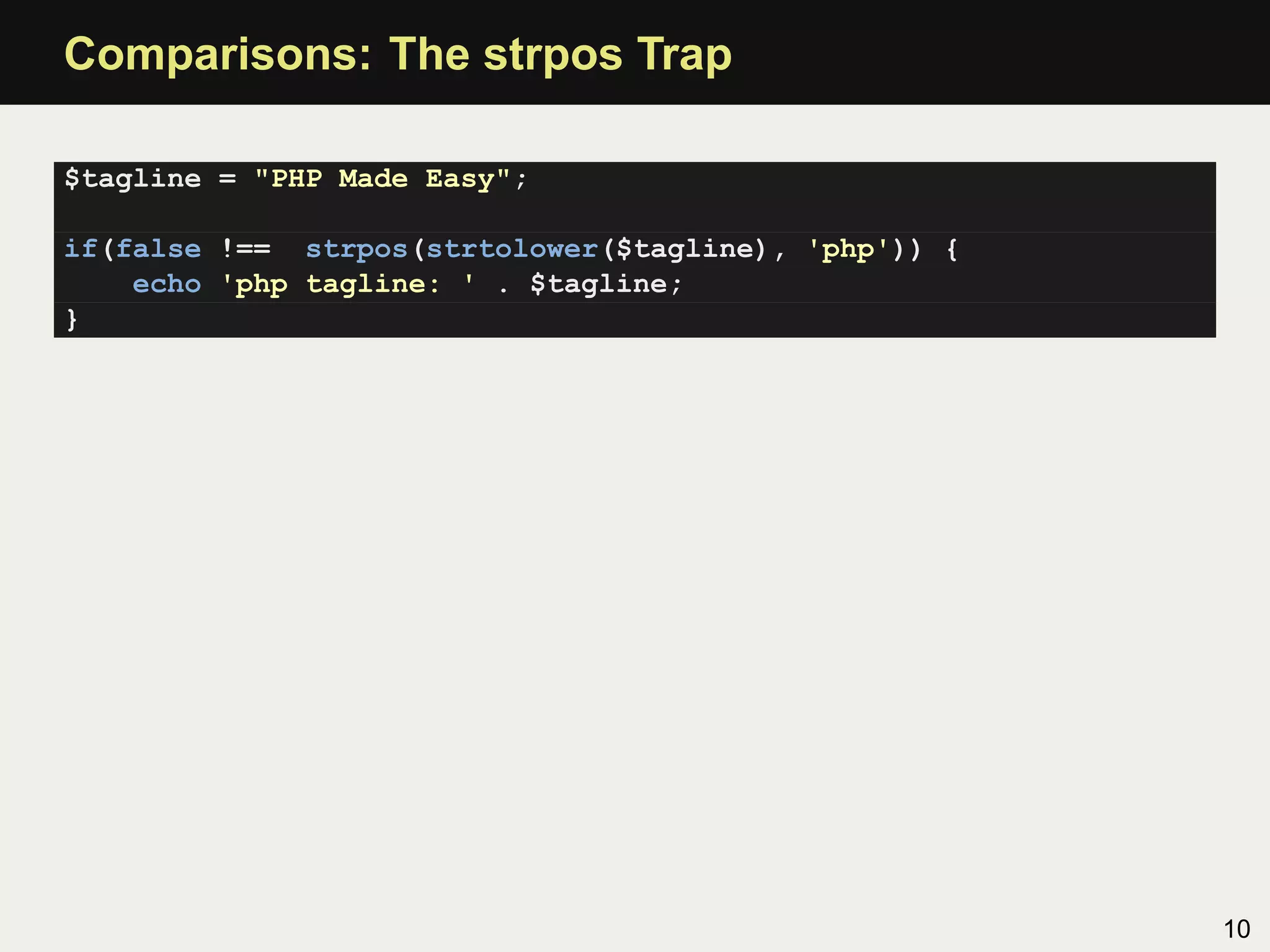
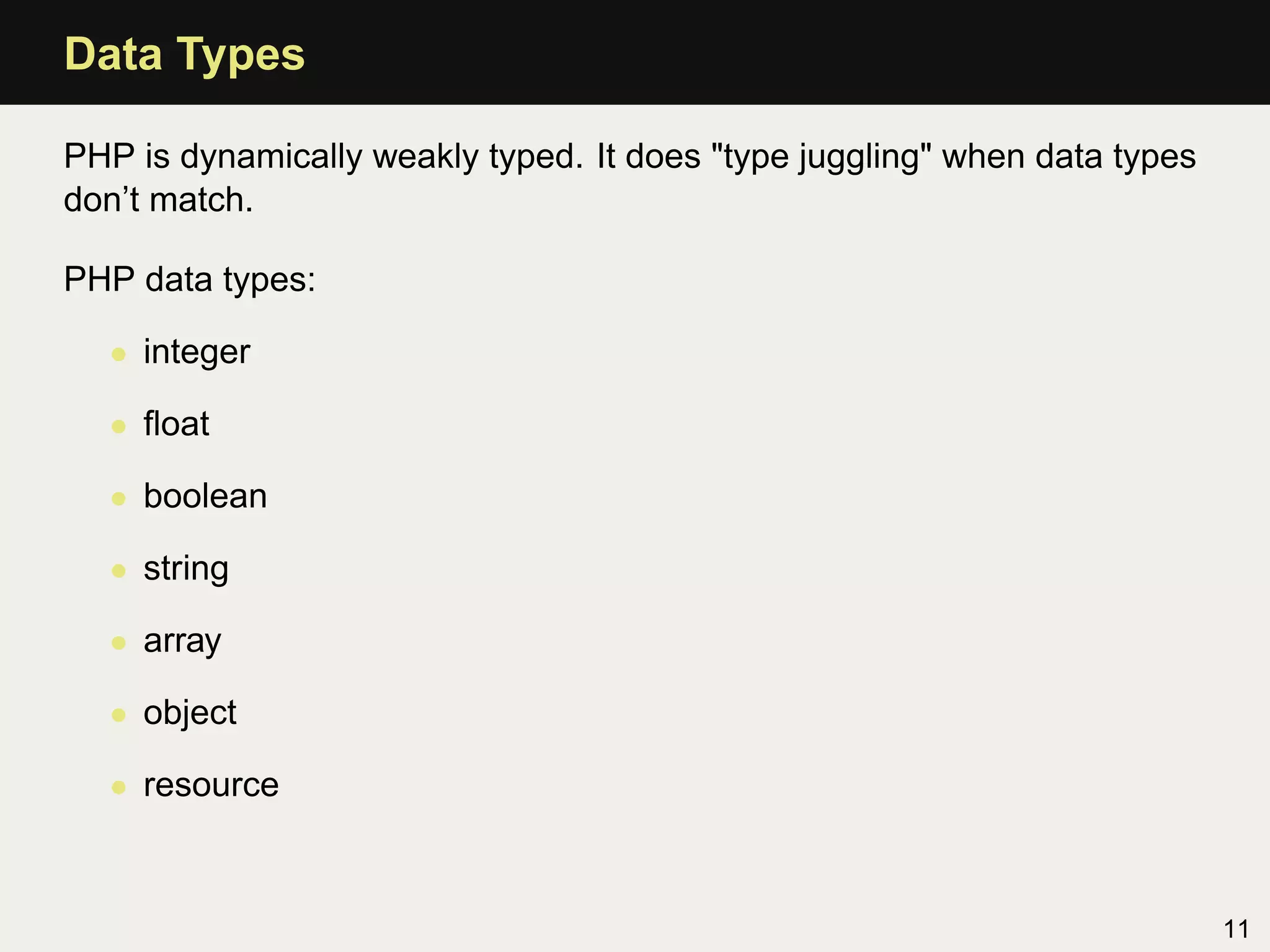
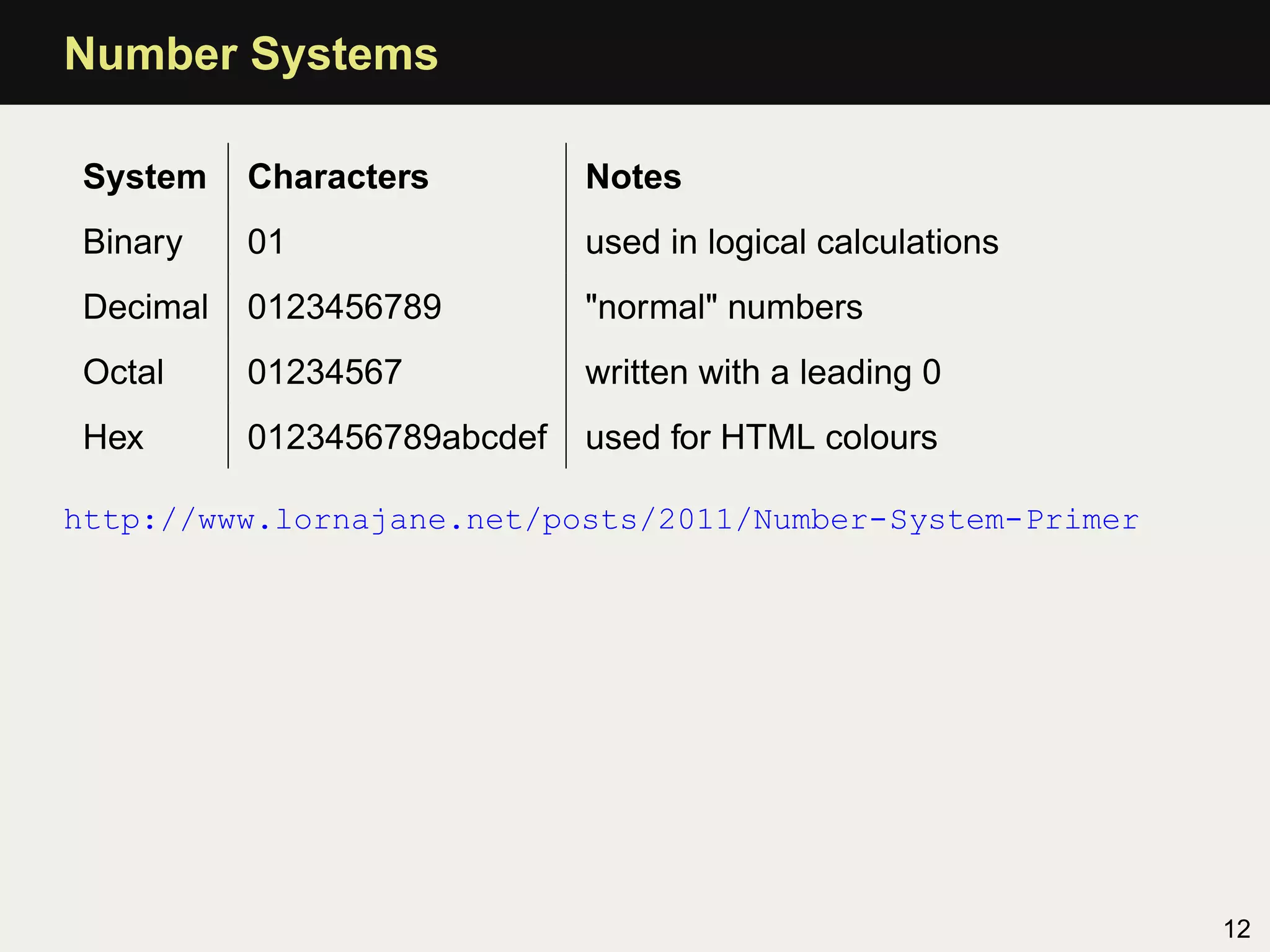
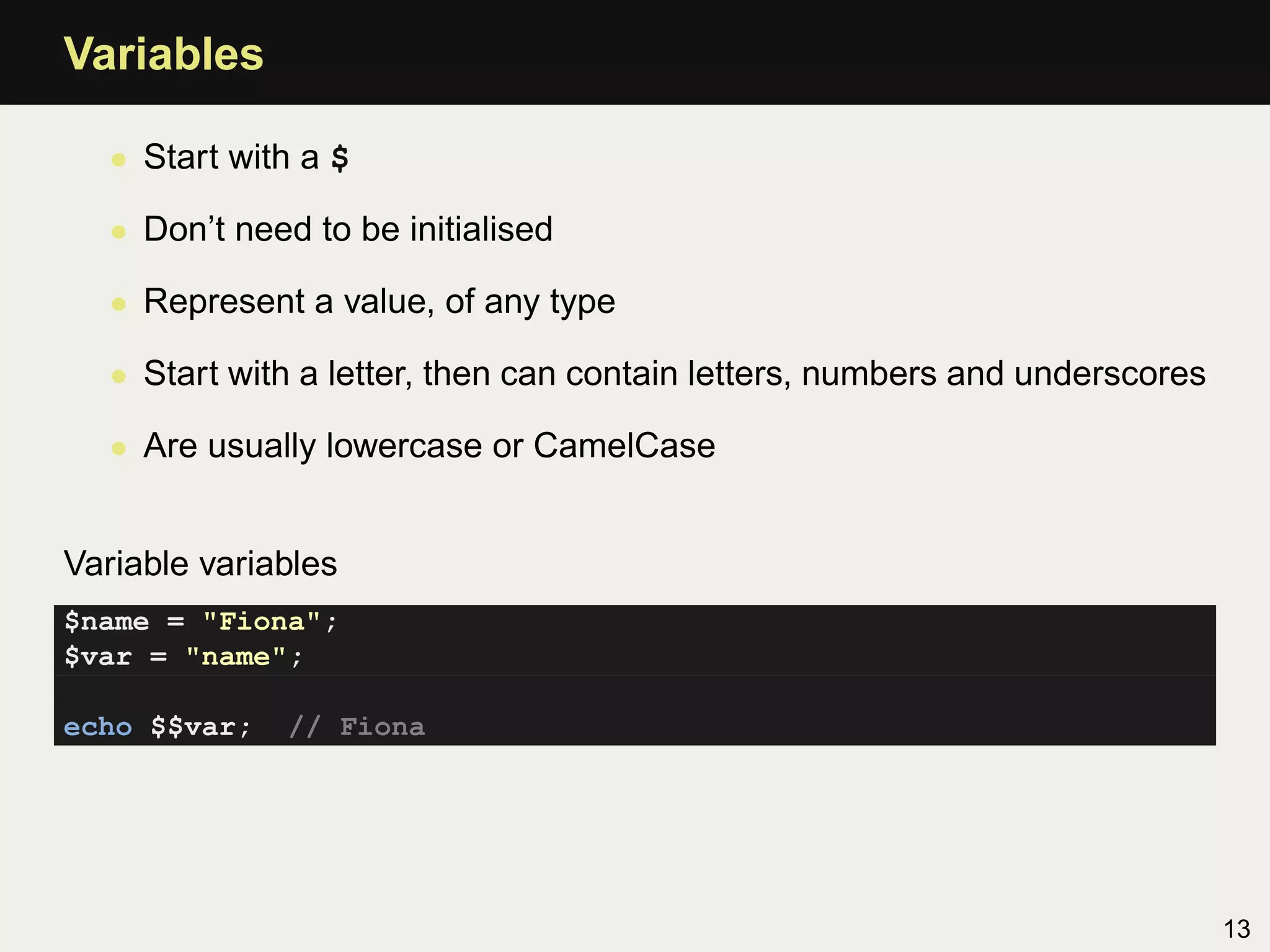
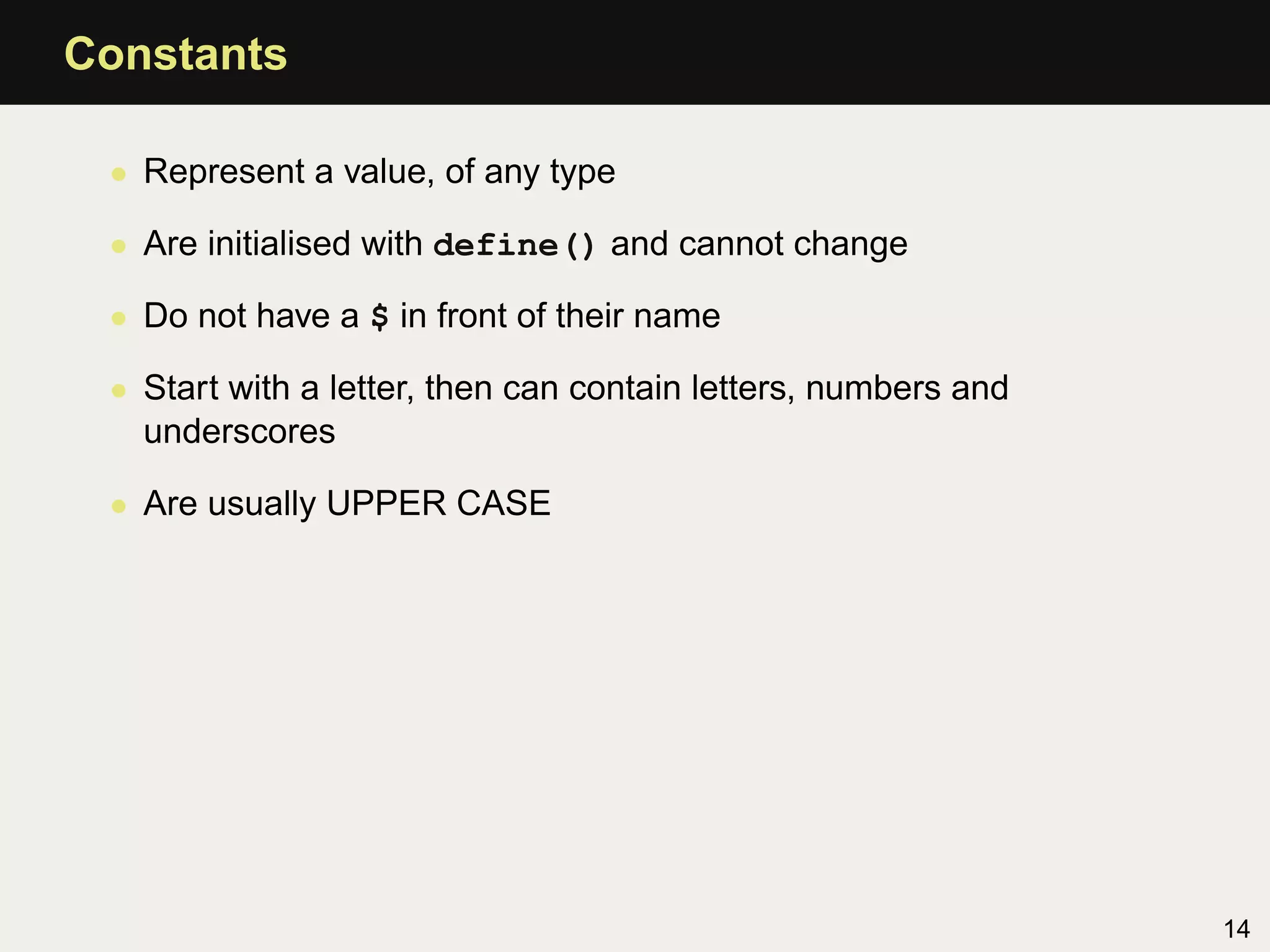
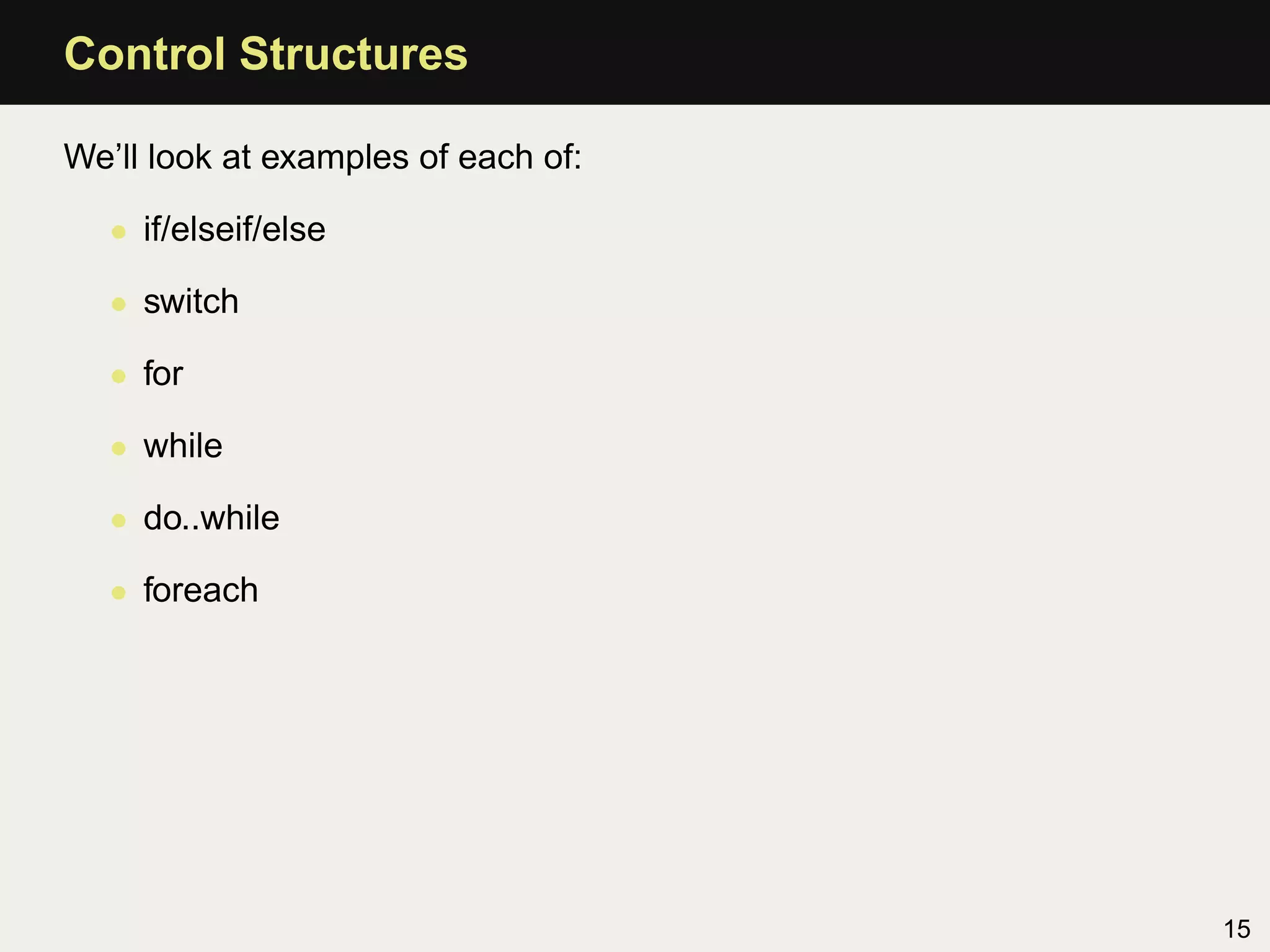
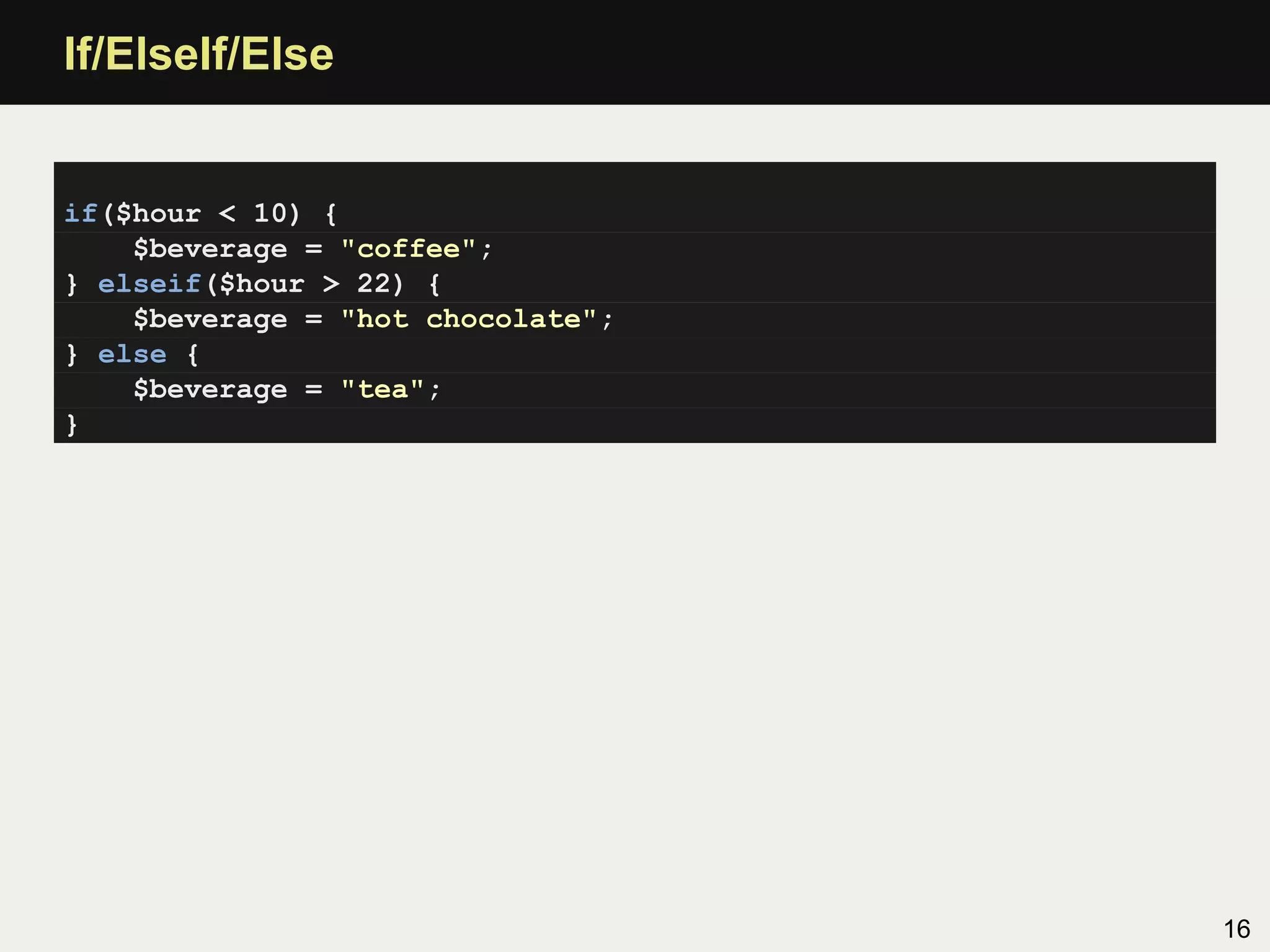
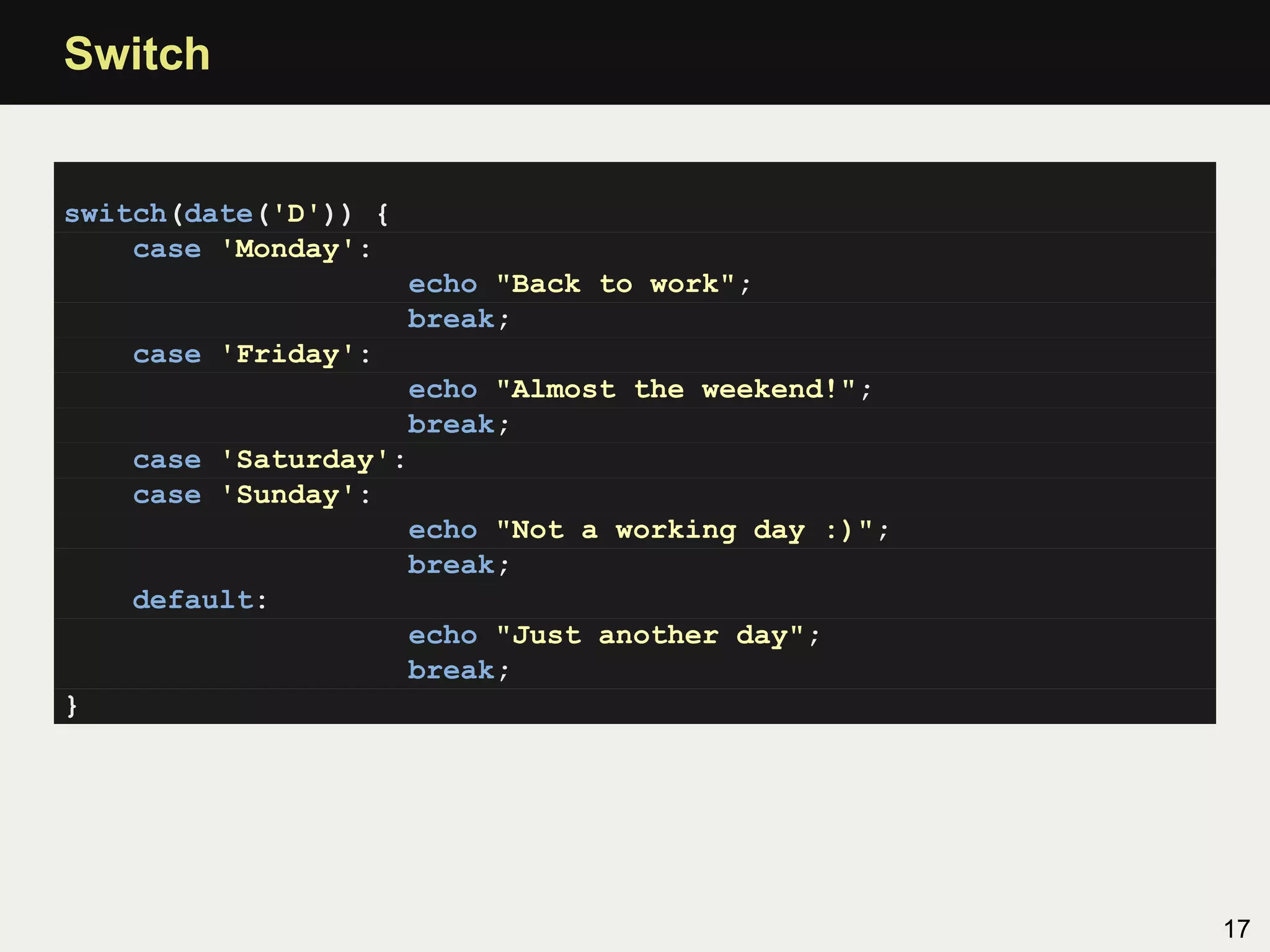
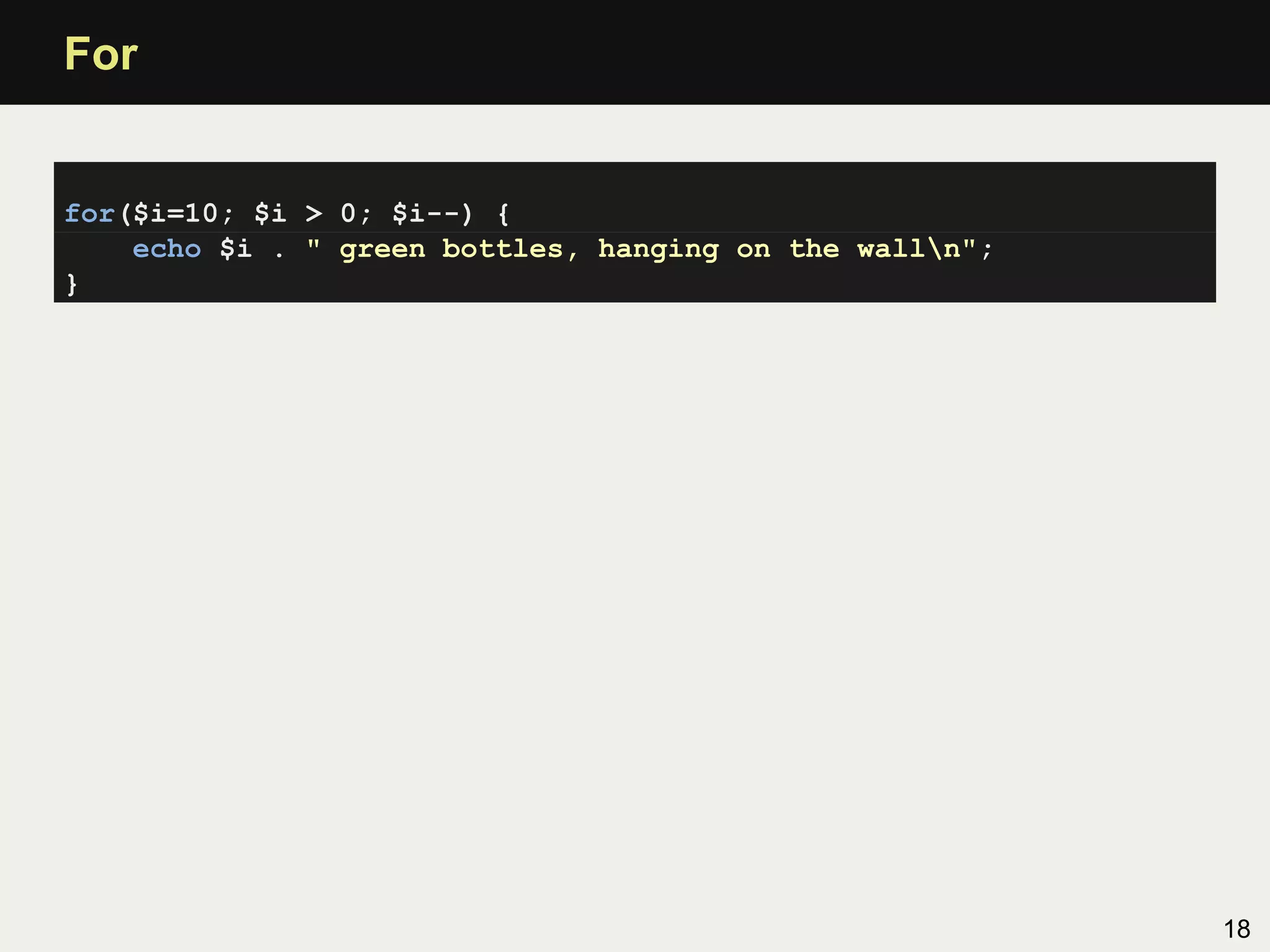

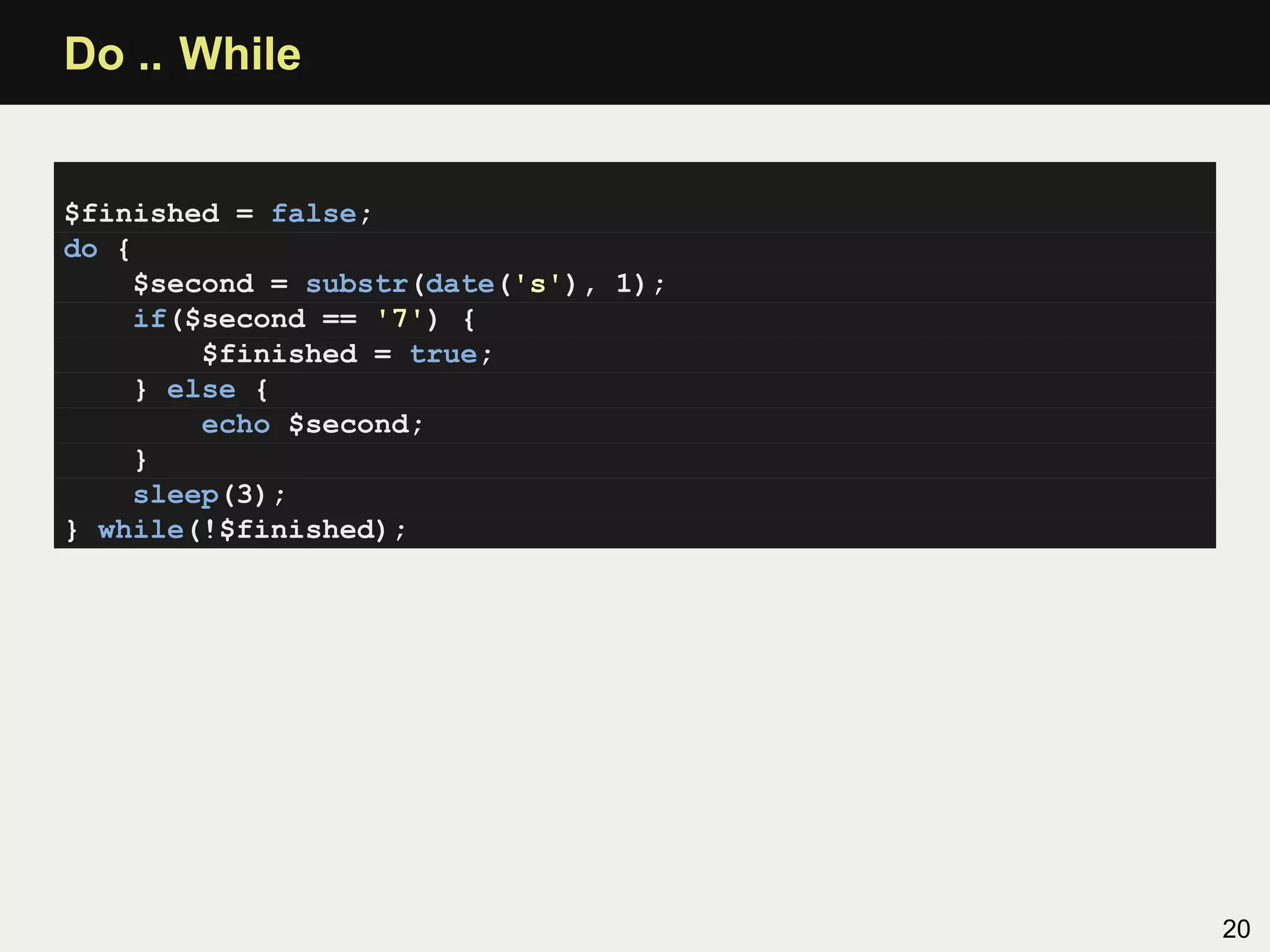
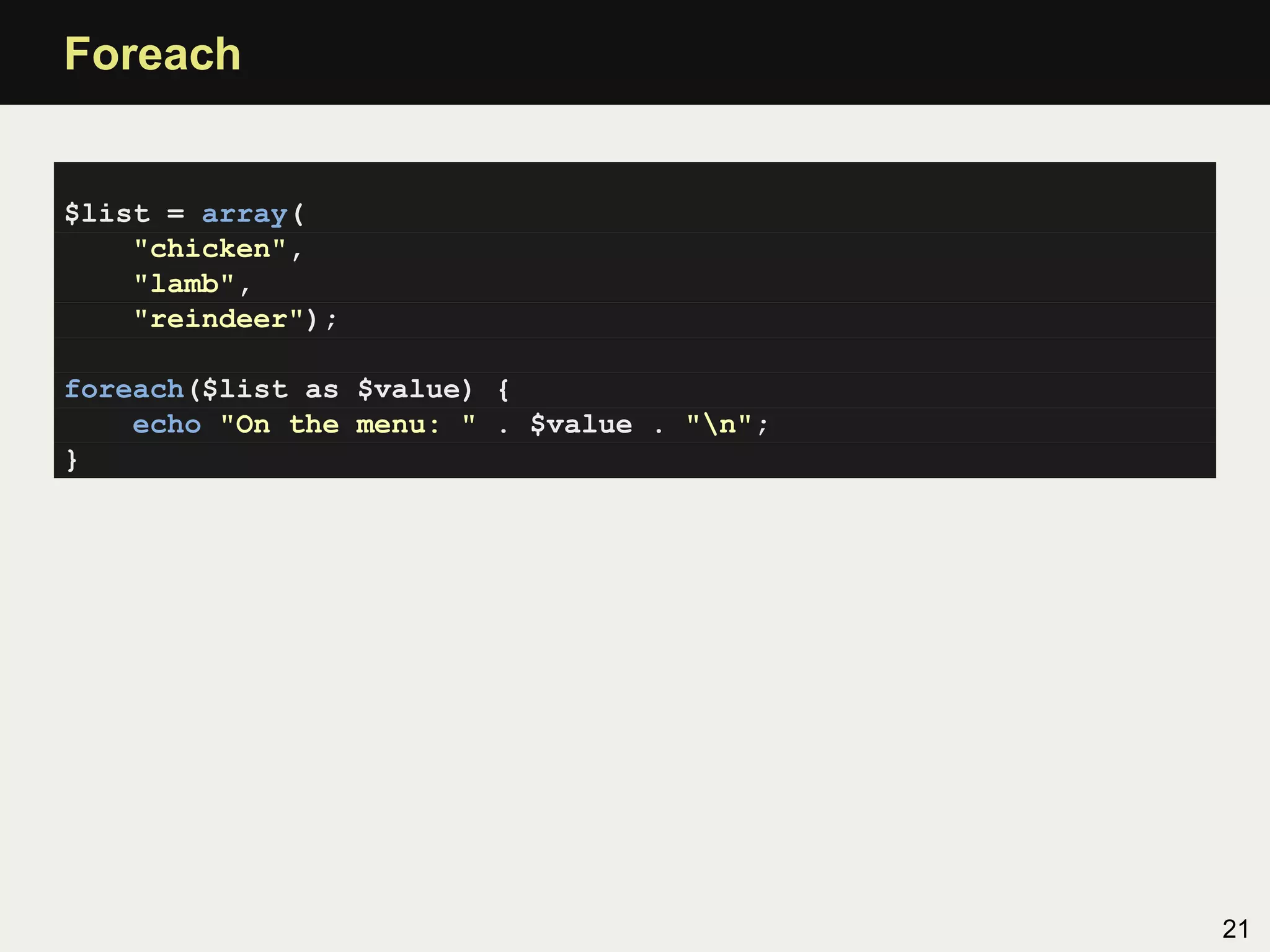
![Foreach
$list = array(
"chicken",
"lamb",
"reindeer");
// make plural
foreach($list as $key => $value) {
$list[$key] = $value . "s";
}
foreach($list as $value) {
echo "On the menu: " . $value . "n";
}
22](https://image.slidesharecdn.com/all-110517124055-phpapp02/75/Zend-Certification-Preparation-Tutorial-35-2048.jpg)
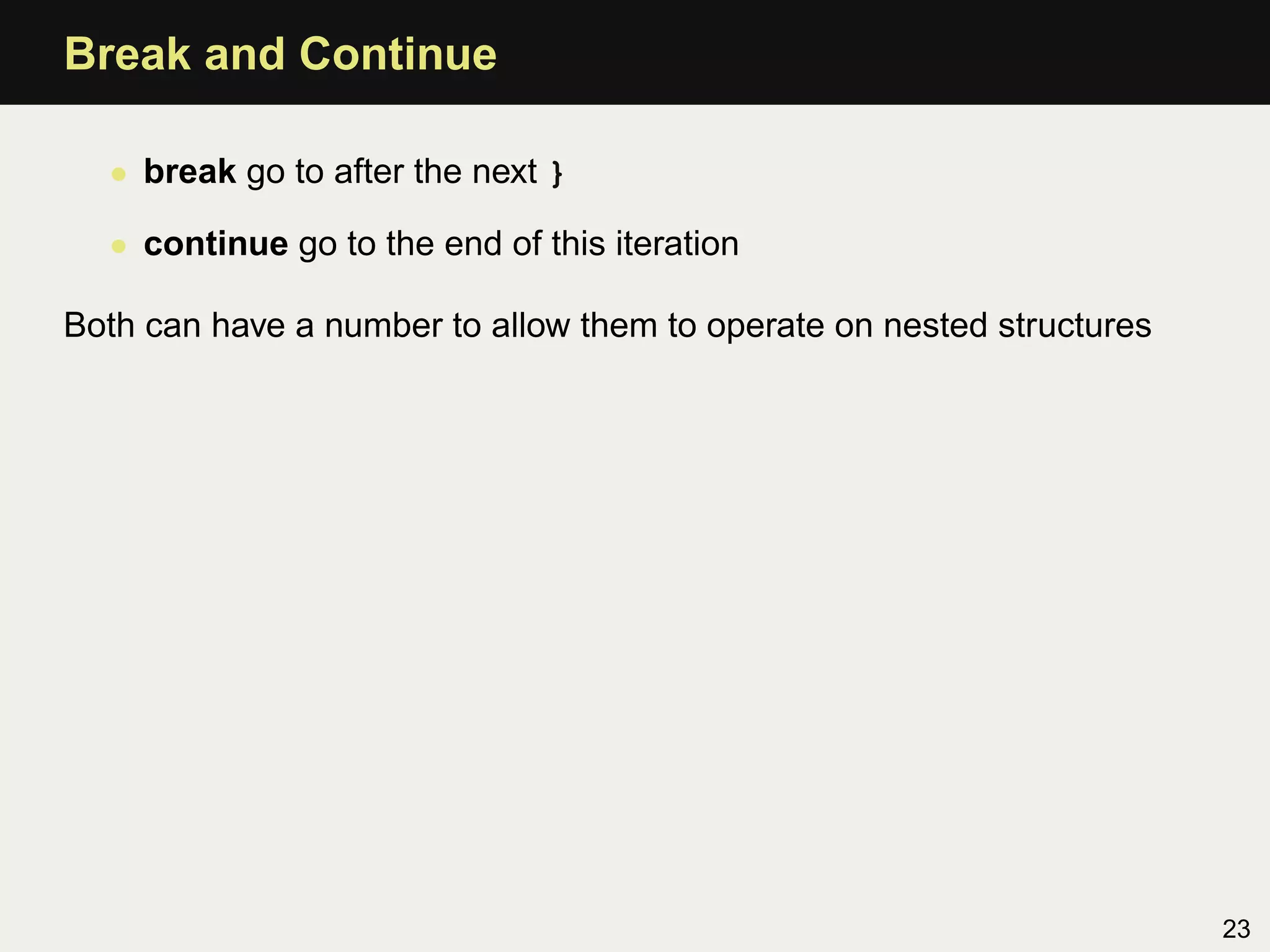

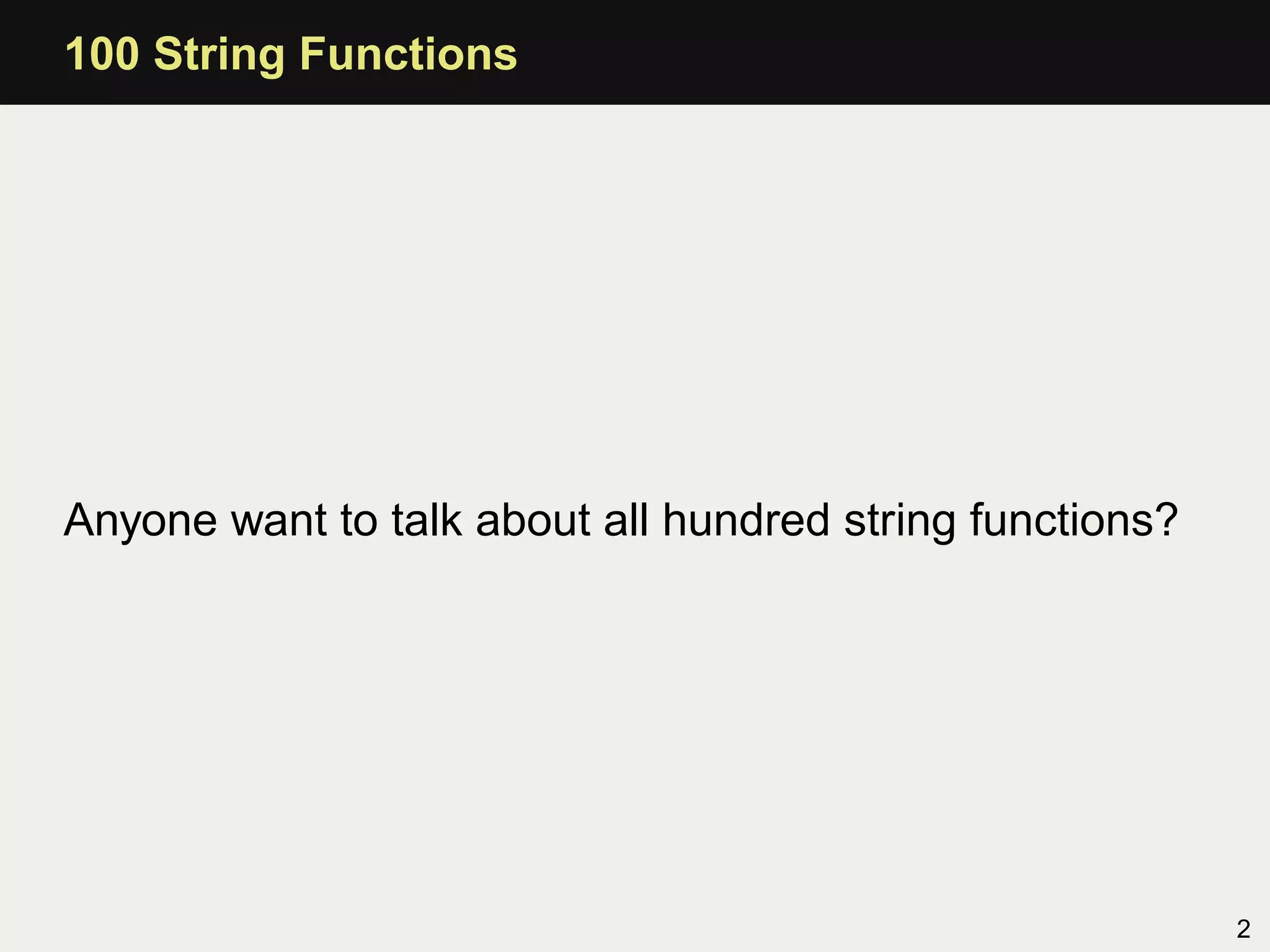
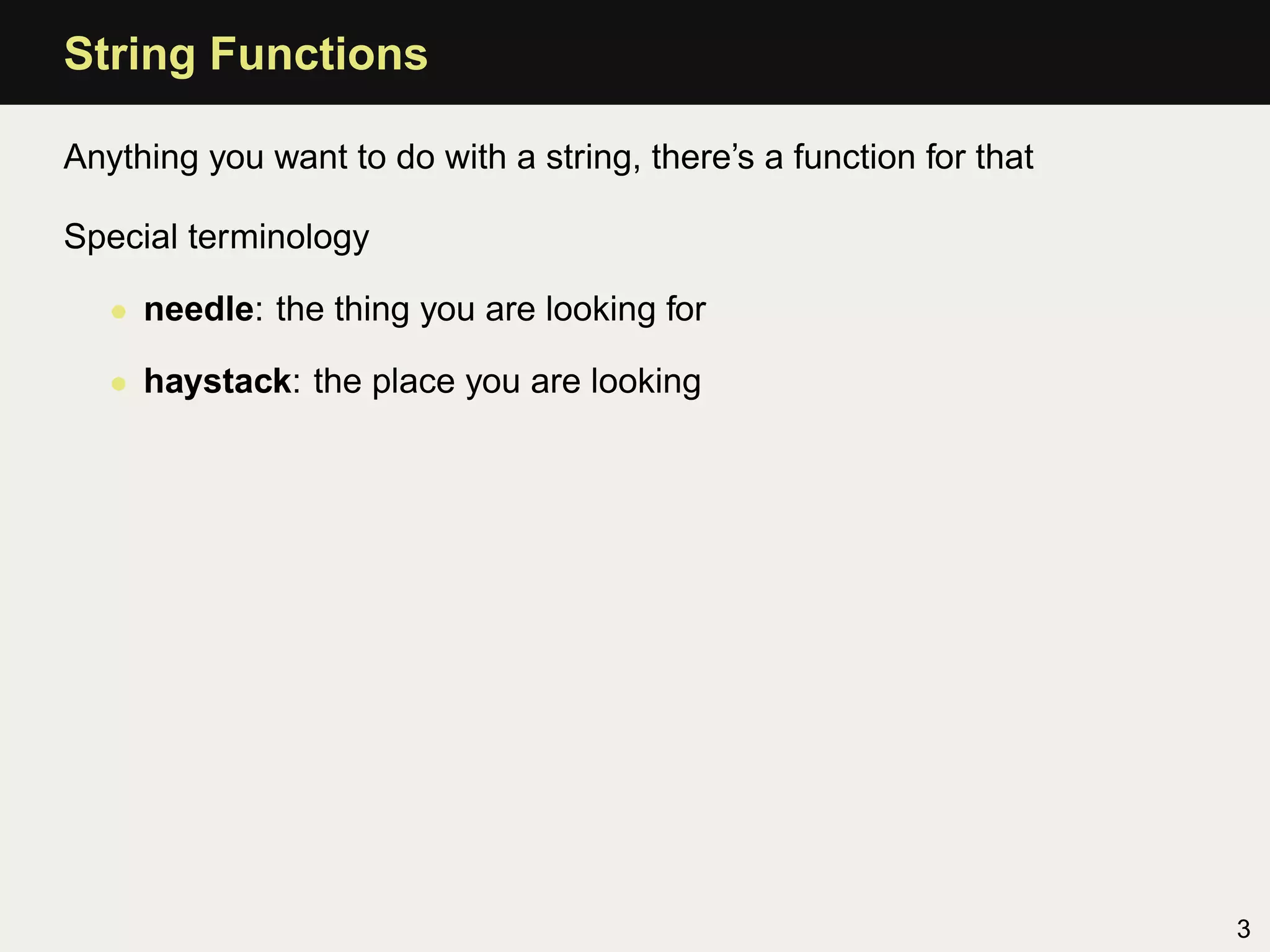
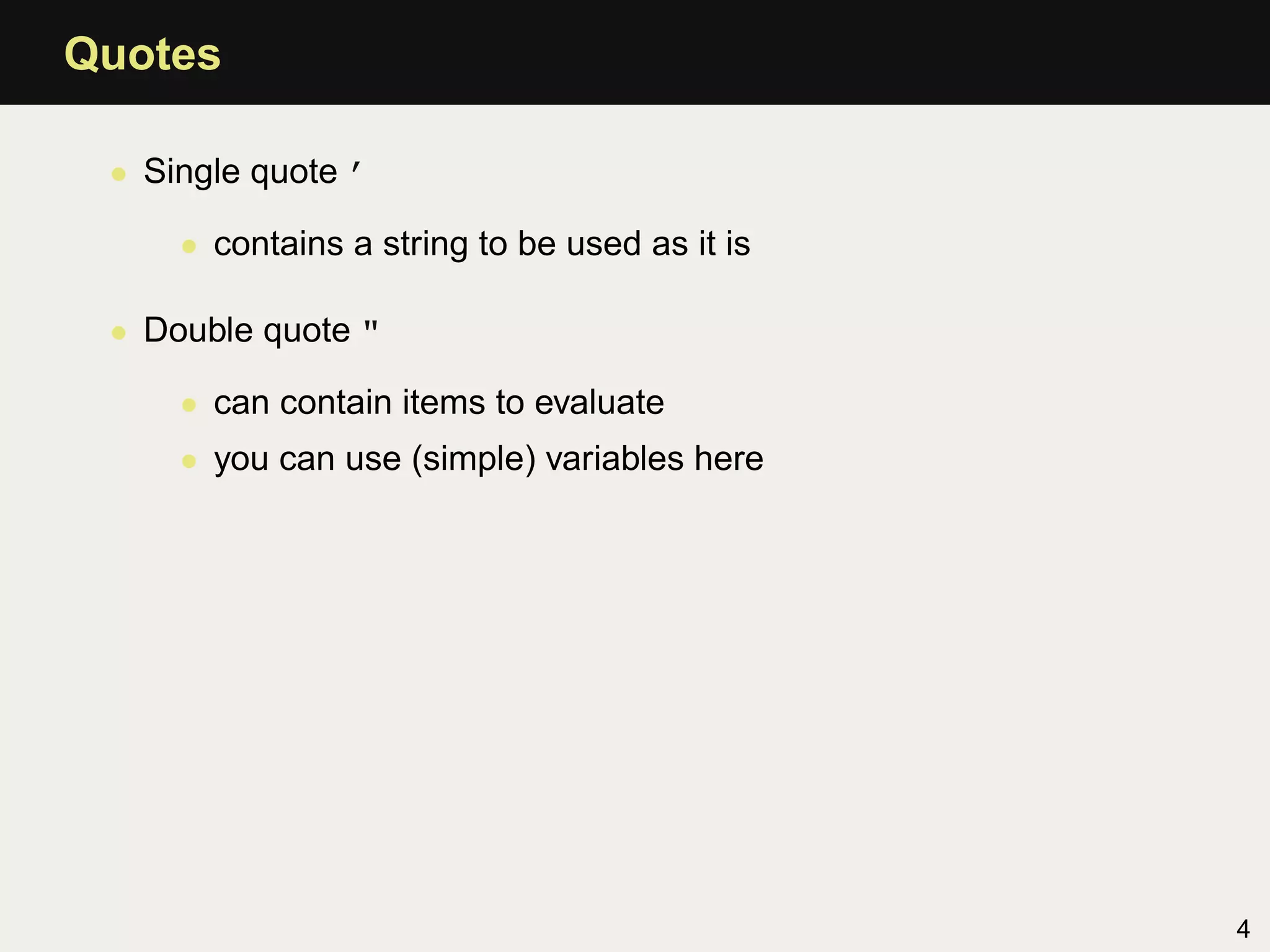
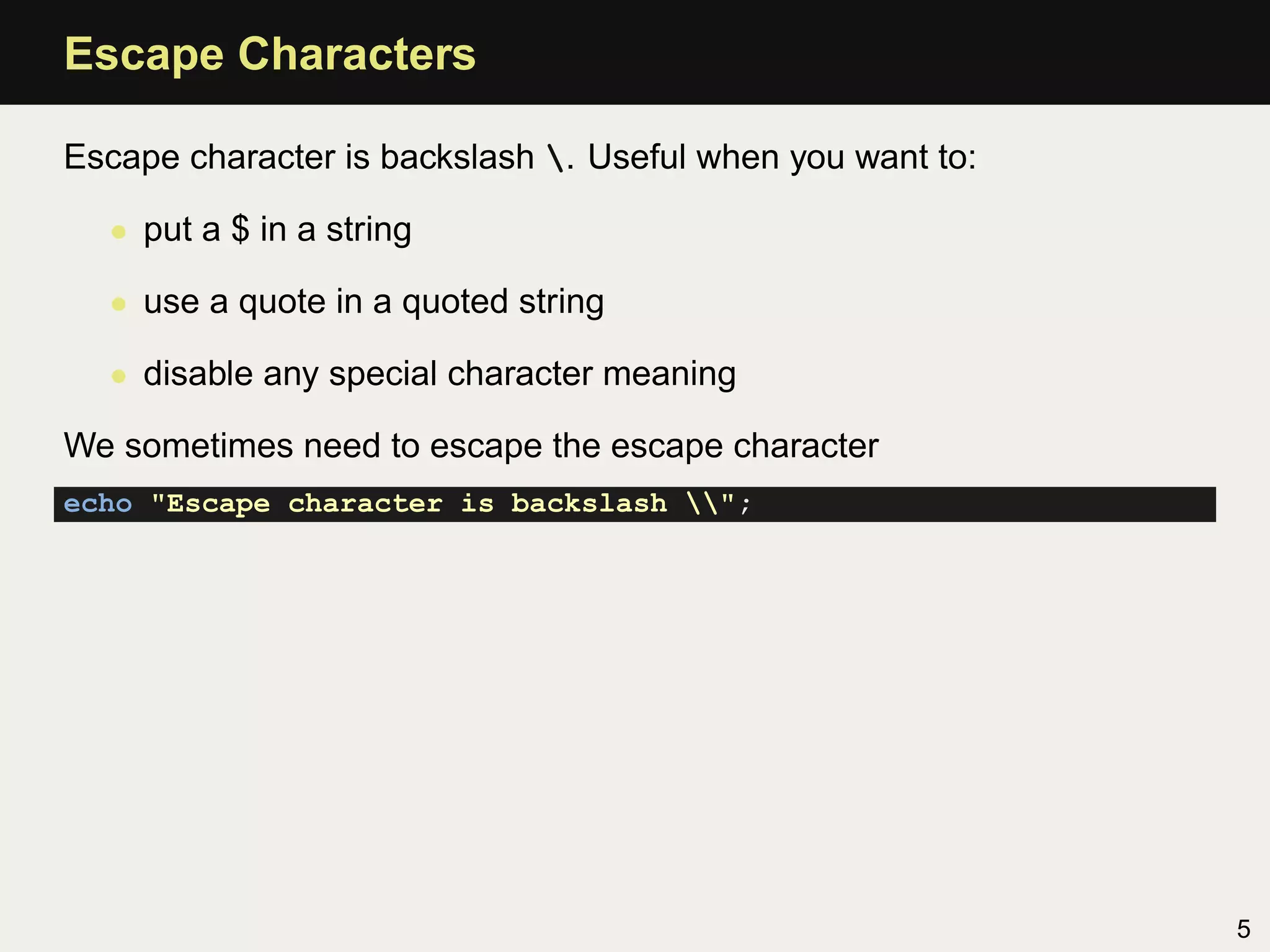
![Formatting Strings
Often we’ll concatenate as we need to, but we can also use formatting
functions
$animals = array(
array("animal" => "cat", "legs" => 4),
array("animal" => "bee", "legs" => 6),
array("animal" => "peacock", "legs" => 2));
foreach($animals as $animal) {
printf("This %s has %d legsn",
$animal['animal'], $animal['legs']);
}
See also: *printf() and *scanf()
6](https://image.slidesharecdn.com/all-110517124055-phpapp02/75/Zend-Certification-Preparation-Tutorial-42-2048.jpg)
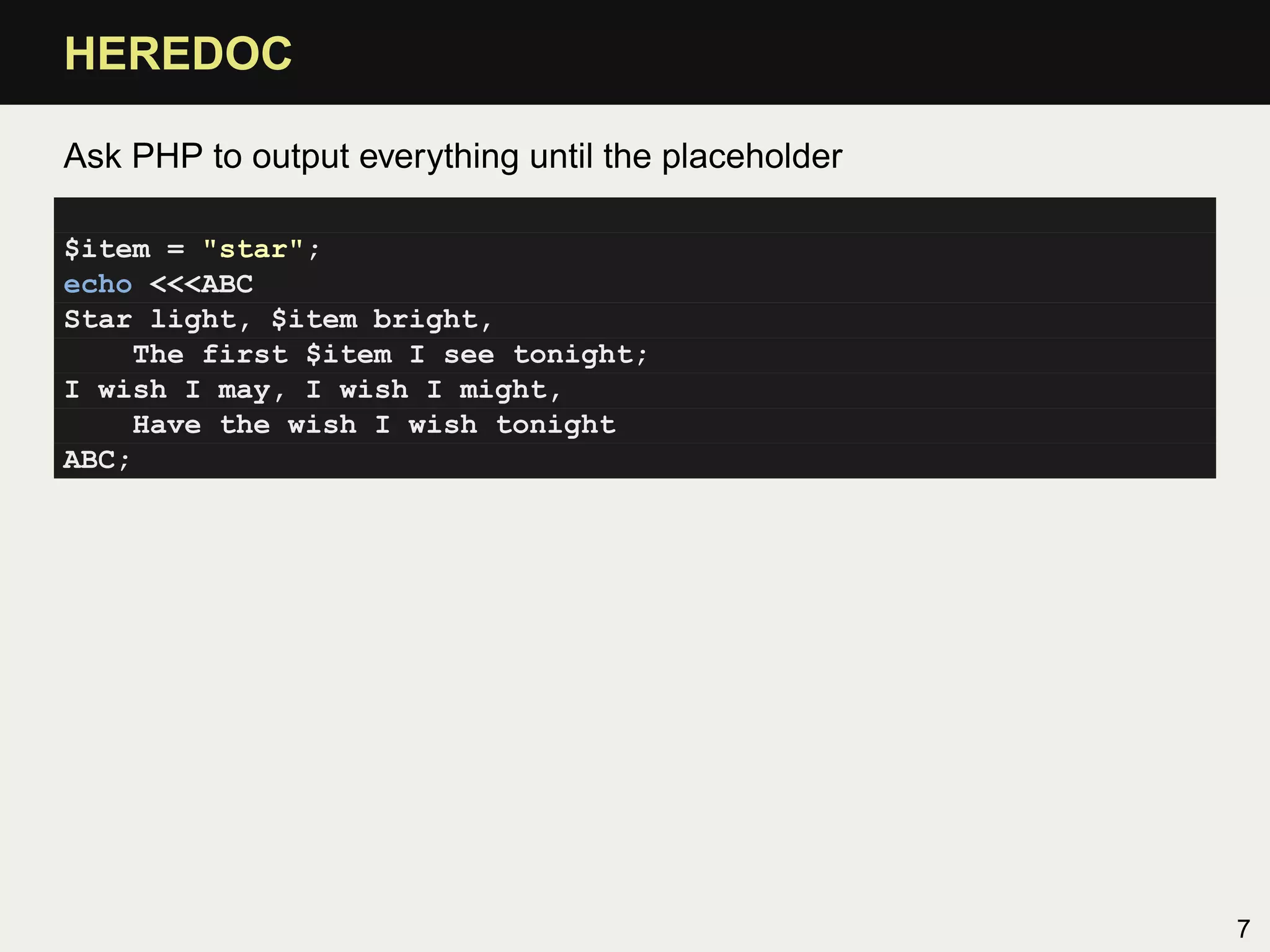
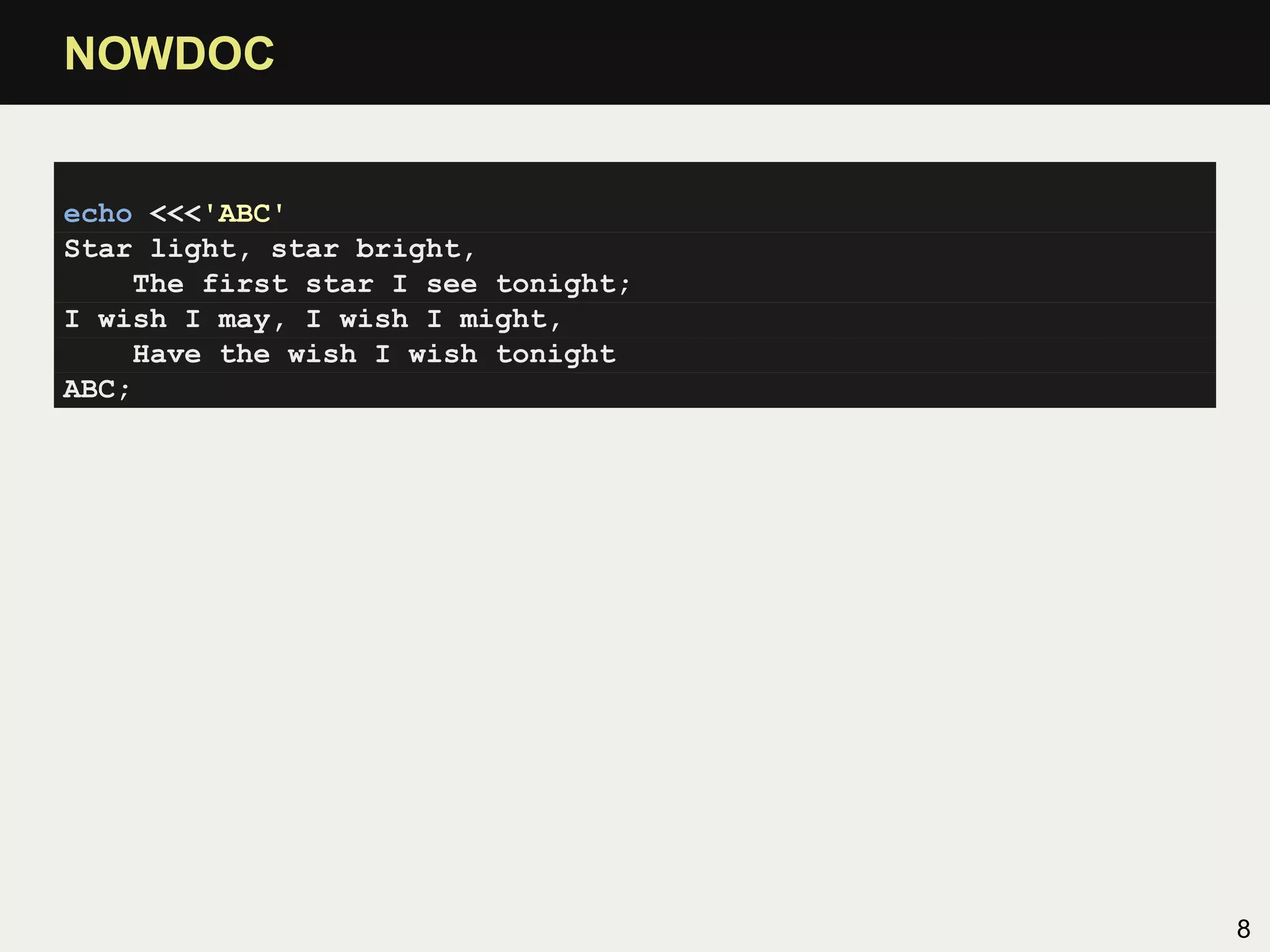
![Regular Expressions
• Often abbreviated to "RegEx"
• Describe a pattern for strings to match
/b[aeiou]t/
Matches "bat", "bet", "bit", "bot" and "but"
9](https://image.slidesharecdn.com/all-110517124055-phpapp02/75/Zend-Certification-Preparation-Tutorial-45-2048.jpg)
![Regular Expressions
• Often abbreviated to "RegEx"
• Describe a pattern for strings to match
/b[aeiou]t/
Matches "bat", "bet", "bit", "bot" and "but"
Also matches "cricket bat", "bitter lemon"
9](https://image.slidesharecdn.com/all-110517124055-phpapp02/75/Zend-Certification-Preparation-Tutorial-46-2048.jpg)
![Using Regex in PHP
$pattern = '/b[aeiou]t/';
// returns the number of times there's a match
echo preg_match($pattern, "bat"); // 1
Many other string handling functions use regex, and there’s also
preg_match_all
10](https://image.slidesharecdn.com/all-110517124055-phpapp02/75/Zend-Certification-Preparation-Tutorial-47-2048.jpg)
![Character Ranges
We can use ranges of characters, e.g. to match hex:
/[0-9a-f]*/
11](https://image.slidesharecdn.com/all-110517124055-phpapp02/75/Zend-Certification-Preparation-Tutorial-48-2048.jpg)
![Character Ranges
We can use ranges of characters, e.g. to match hex:
/[0-9a-f]*/
Upper and lower case are distinct; for alphanumeric: /[0-9a-zA-Z]/
11](https://image.slidesharecdn.com/all-110517124055-phpapp02/75/Zend-Certification-Preparation-Tutorial-49-2048.jpg)
![Character Ranges
We can use ranges of characters, e.g. to match hex:
/[0-9a-f]*/
Upper and lower case are distinct; for alphanumeric: /[0-9a-zA-Z]/
If you want to allow another couple of characters, go for it:
/[0-9a-zA-Z_]/
11](https://image.slidesharecdn.com/all-110517124055-phpapp02/75/Zend-Certification-Preparation-Tutorial-50-2048.jpg)
![Character Ranges
We can use ranges of characters, e.g. to match hex:
/[0-9a-f]*/
Upper and lower case are distinct; for alphanumeric: /[0-9a-zA-Z]/
If you want to allow another couple of characters, go for it:
/[0-9a-zA-Z_]/
To match any character, use a dot .
11](https://image.slidesharecdn.com/all-110517124055-phpapp02/75/Zend-Certification-Preparation-Tutorial-51-2048.jpg)
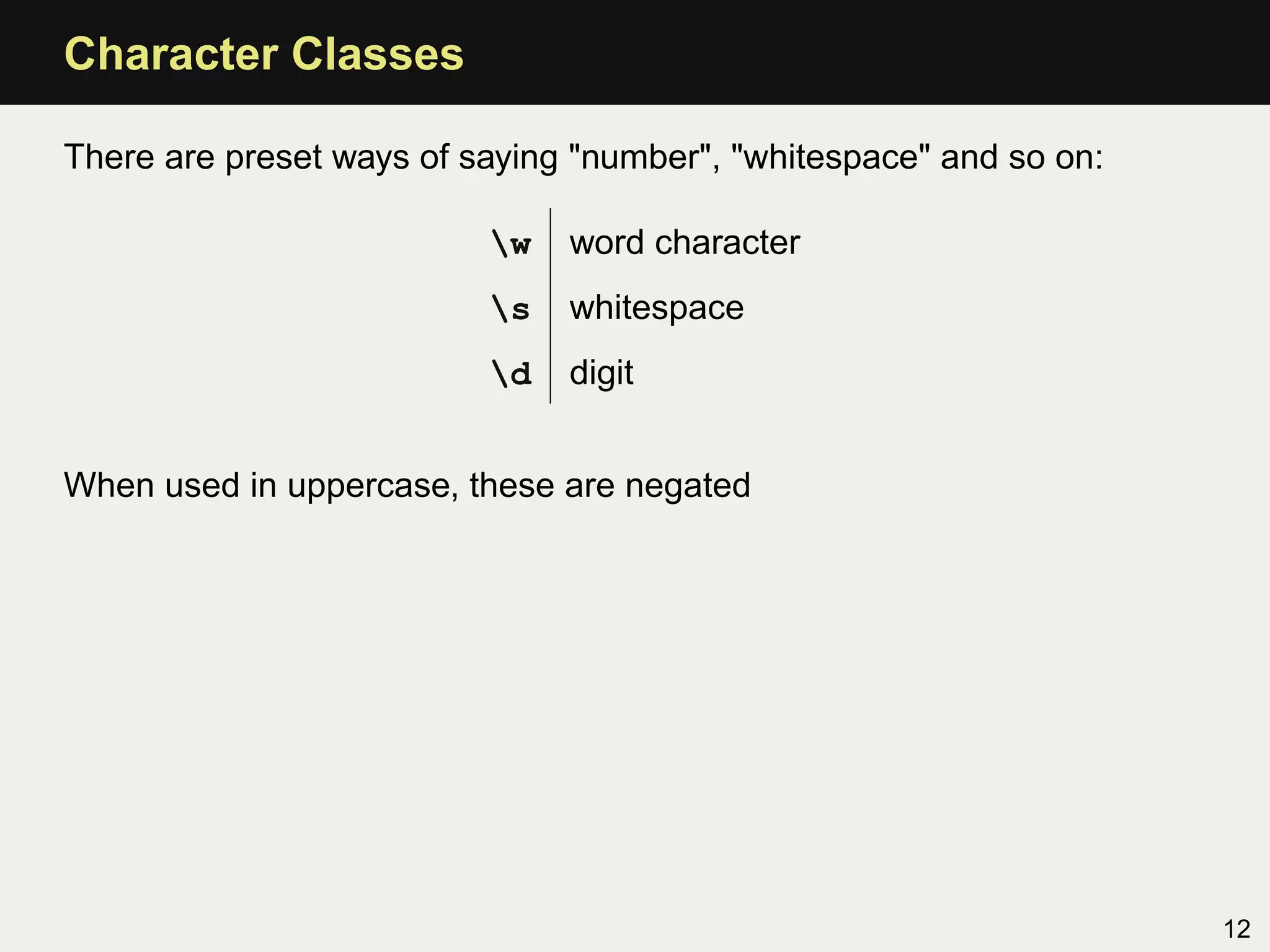
![Pattern Modifiers
We can add modifiers to our pattern, to say how many matching
characters are allowed.
? 0 or 1 time
* 0 or more times
+ 1 or more times
{n} n times
{n,} n or more times
{n,m} between n and m times
{,m} up to m times
/b[aeiou]*t/
Matches "bat" and "bit" etc, but also "boot" and "boat"
13](https://image.slidesharecdn.com/all-110517124055-phpapp02/75/Zend-Certification-Preparation-Tutorial-53-2048.jpg)
![Anchoring Patterns
To stop us from matching "cricket bat", we can anchor
^ start of line
$ end of line
A start of string
Z end of string
/^b[aeiou]t/ Will match "battering ram" but not "cricket bat"
14](https://image.slidesharecdn.com/all-110517124055-phpapp02/75/Zend-Certification-Preparation-Tutorial-54-2048.jpg)

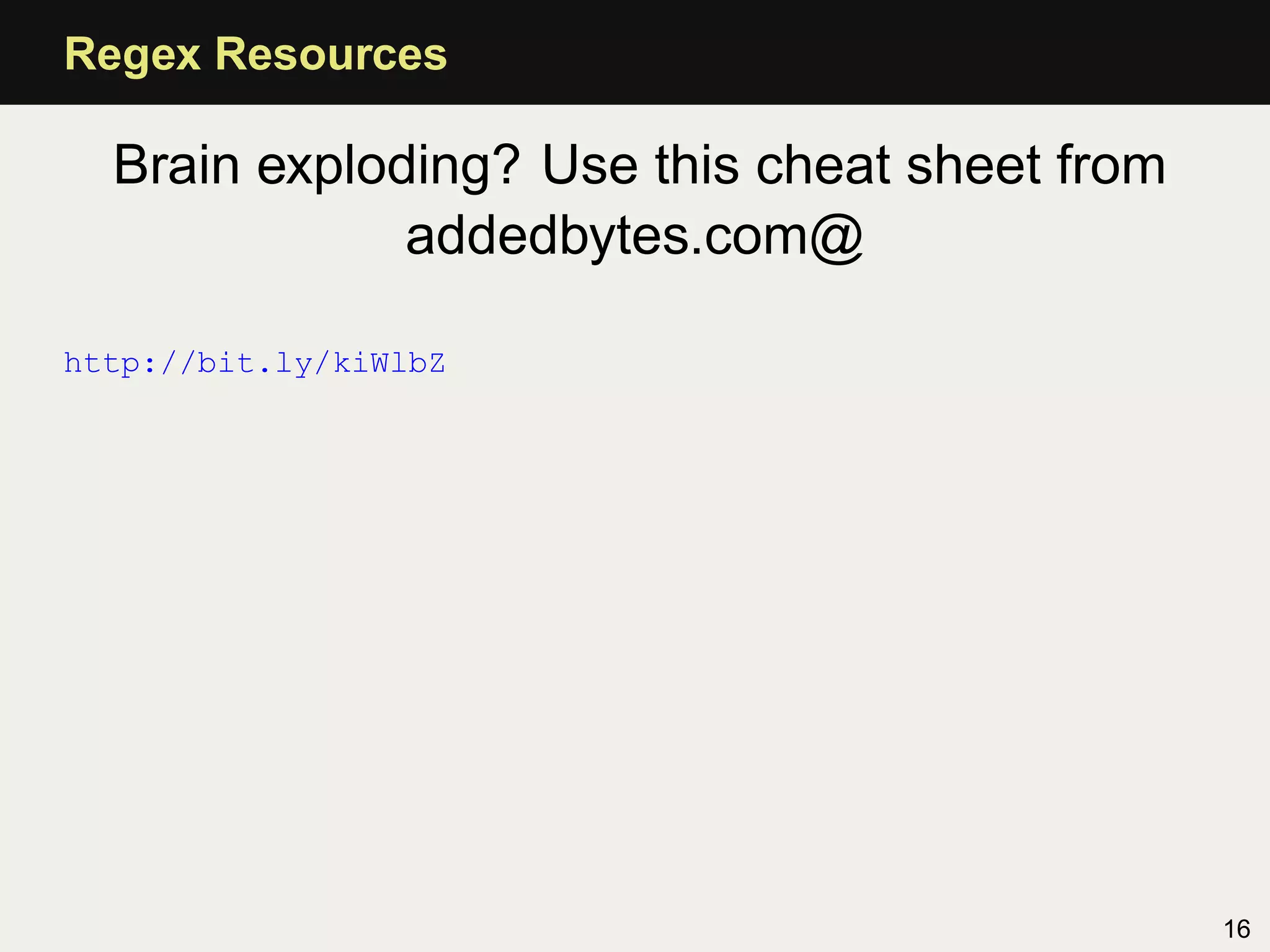
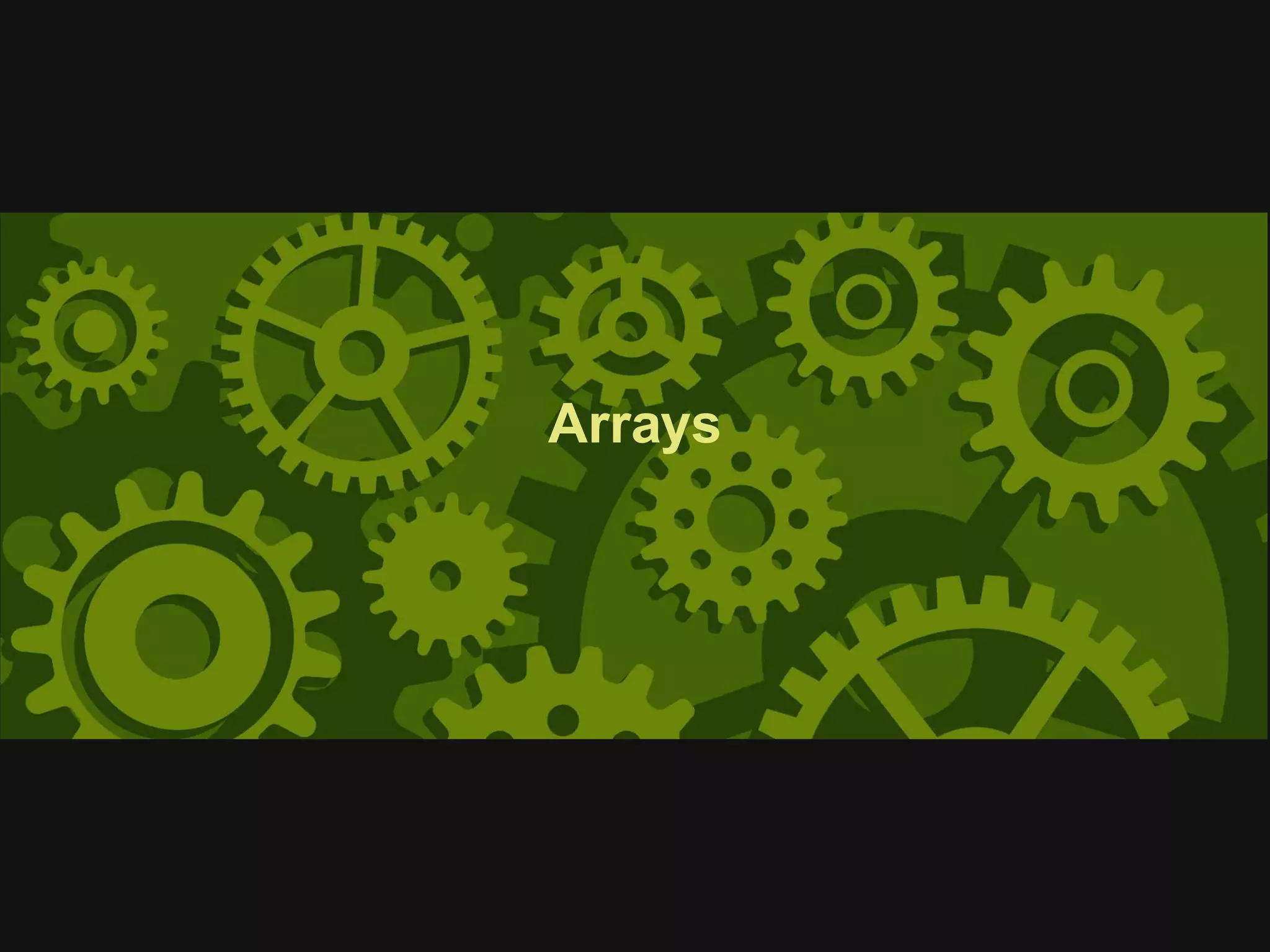
![Array Syntax
Some examples of the syntax around arrays:
$items = array("pen", "pencil", "ruler");
$items[7] = "calculator";
$items[] = "post-its";
var_dump($items);
Outputs this:
Array
(
[0] => pen
[1] => pencil
[2] => ruler
[7] => calculator
[8] => post-its
)
This is an enumerated array
2](https://image.slidesharecdn.com/all-110517124055-phpapp02/75/Zend-Certification-Preparation-Tutorial-58-2048.jpg)
![Associative Arrays
Associative arrays have named keys
$characters[] = array("name" => "Lala",
"colour" => "Yellow");
$characters[] = array("name" => "Tinky Winky",
"colour" => "Purple");
This is a nested associative array
Array
(
[0] => Array
(
[name] => Lala
[colour] => Yellow
)
[1] => Array
(
[name] => Tinky Winky
[colour] => Purple
) 3](https://image.slidesharecdn.com/all-110517124055-phpapp02/75/Zend-Certification-Preparation-Tutorial-59-2048.jpg)
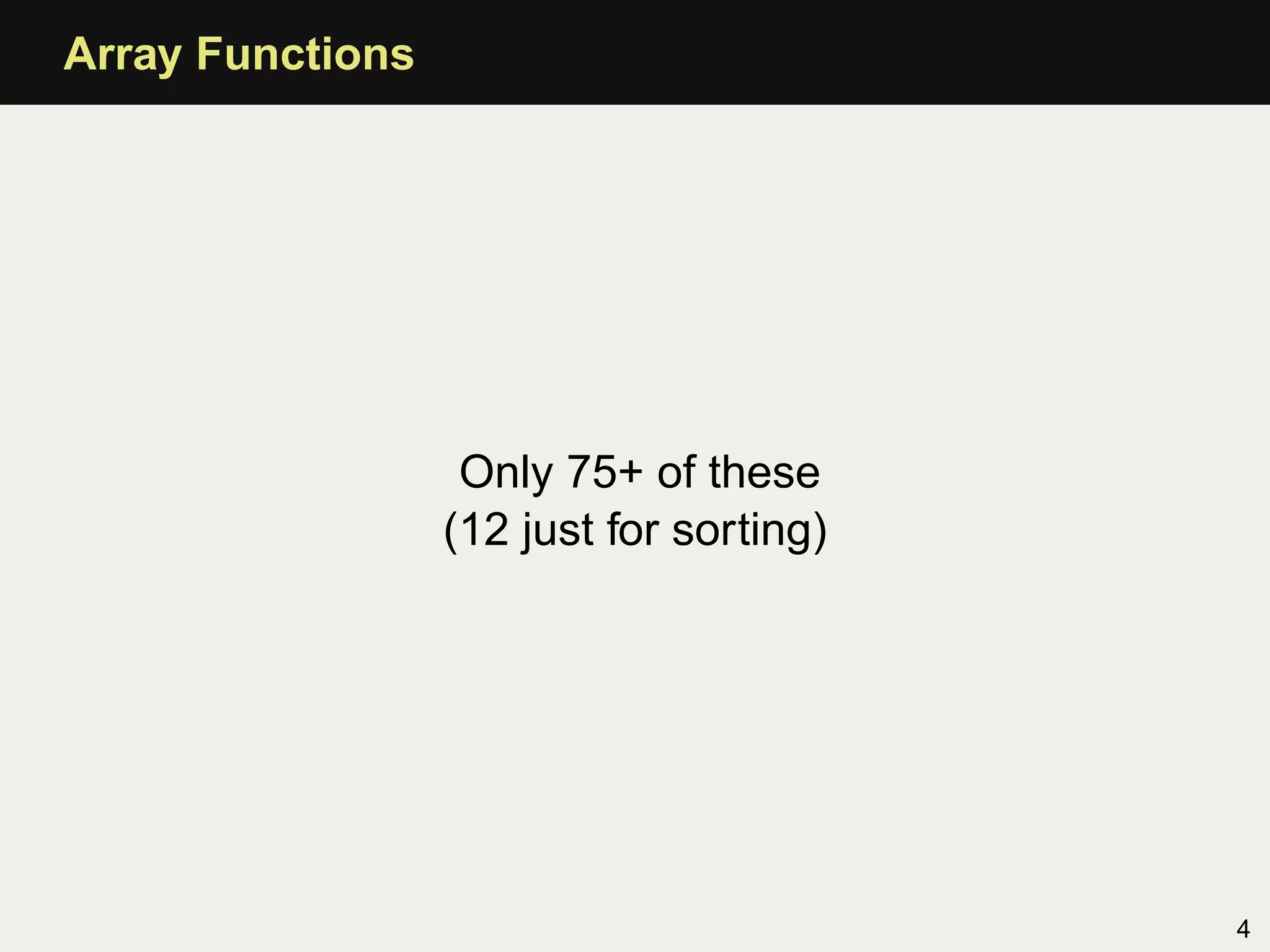

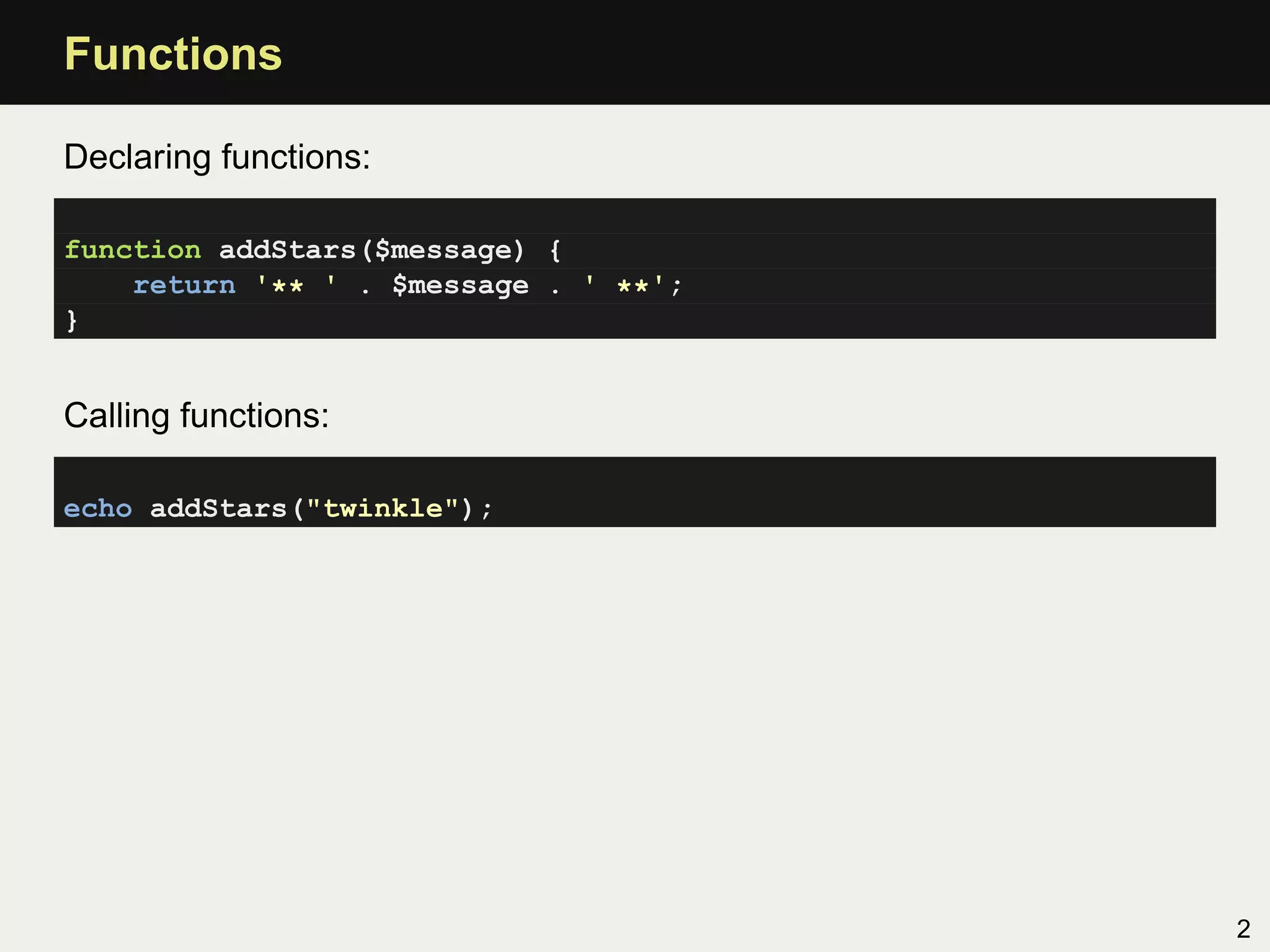

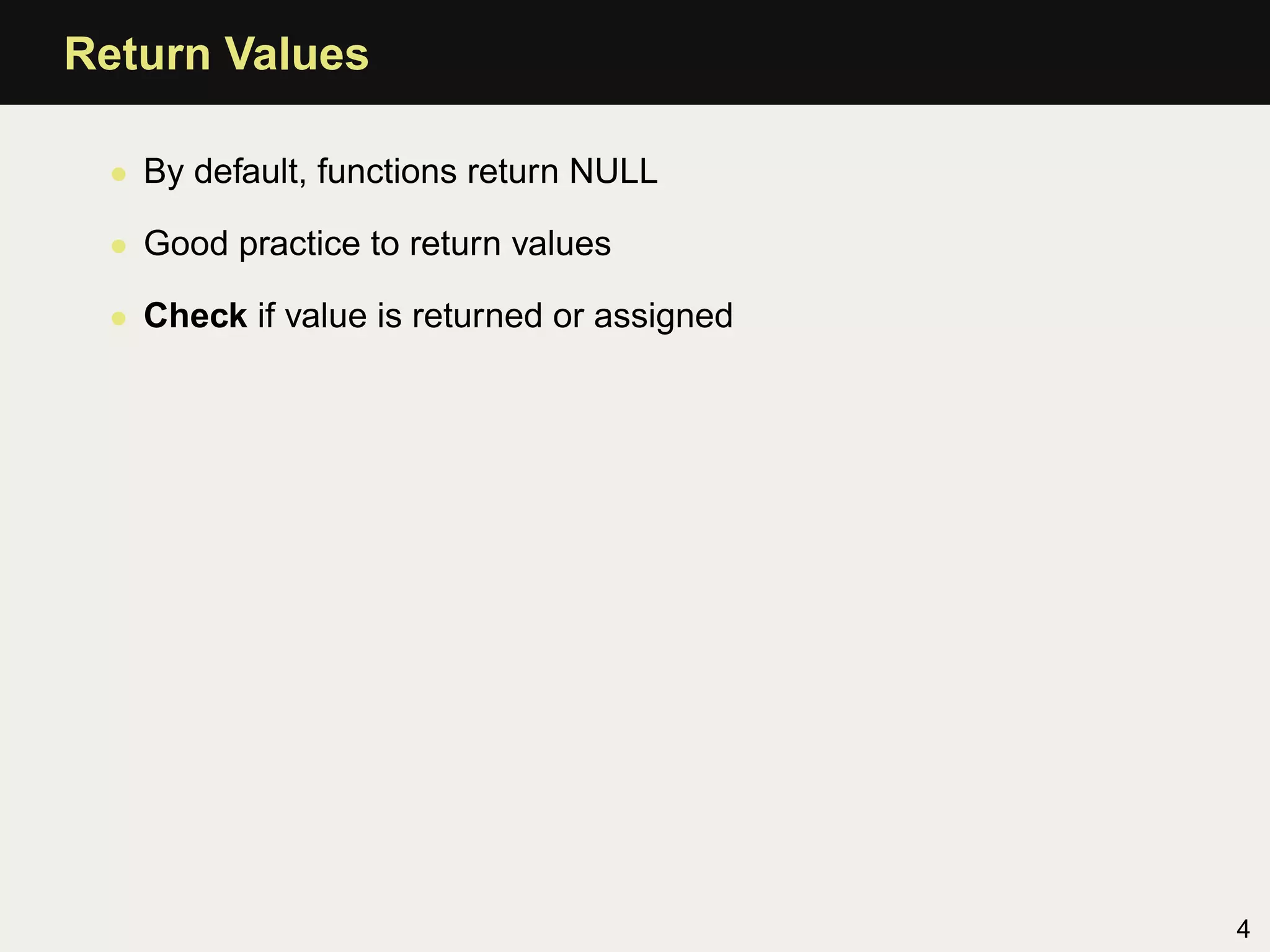

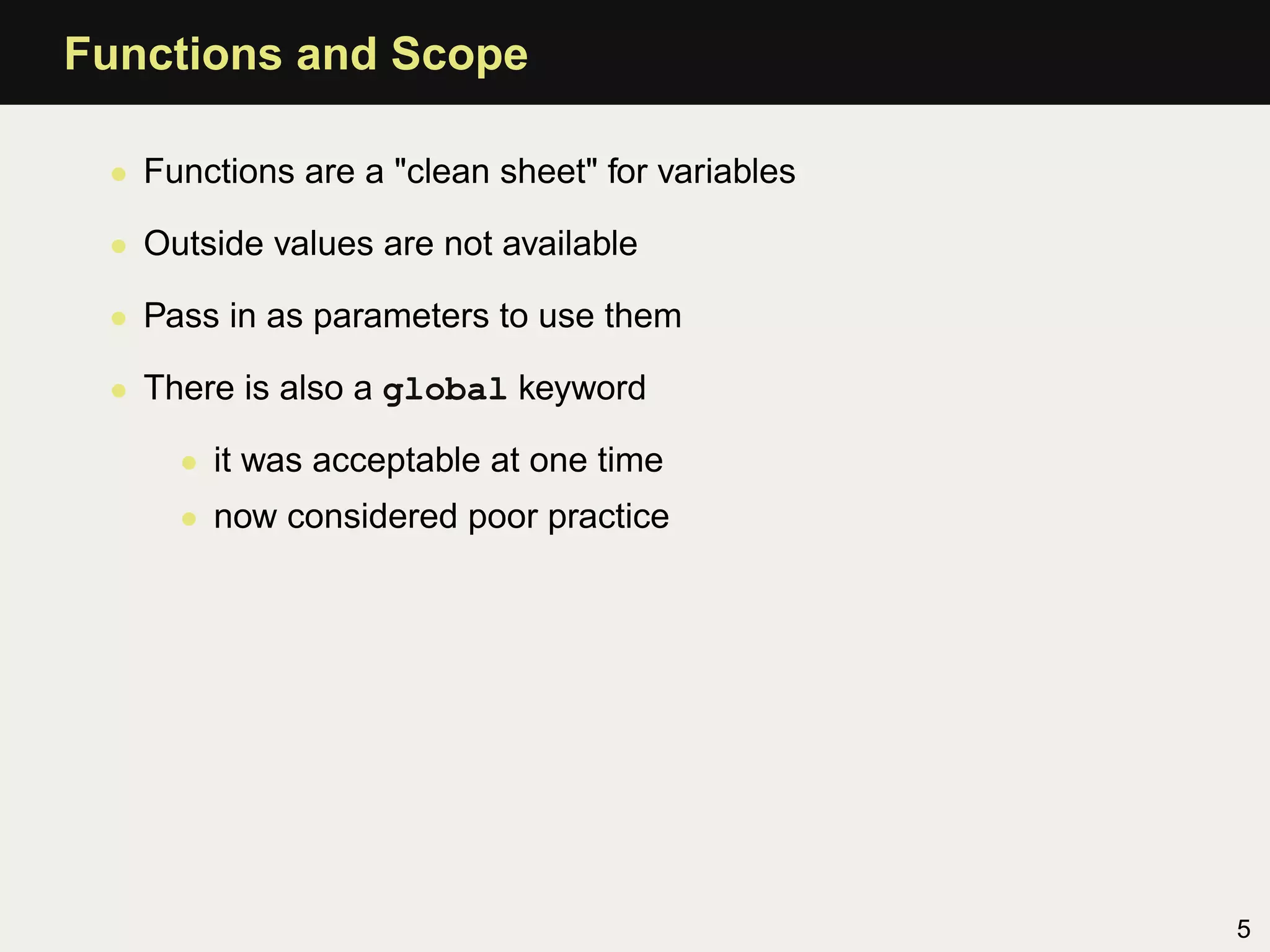
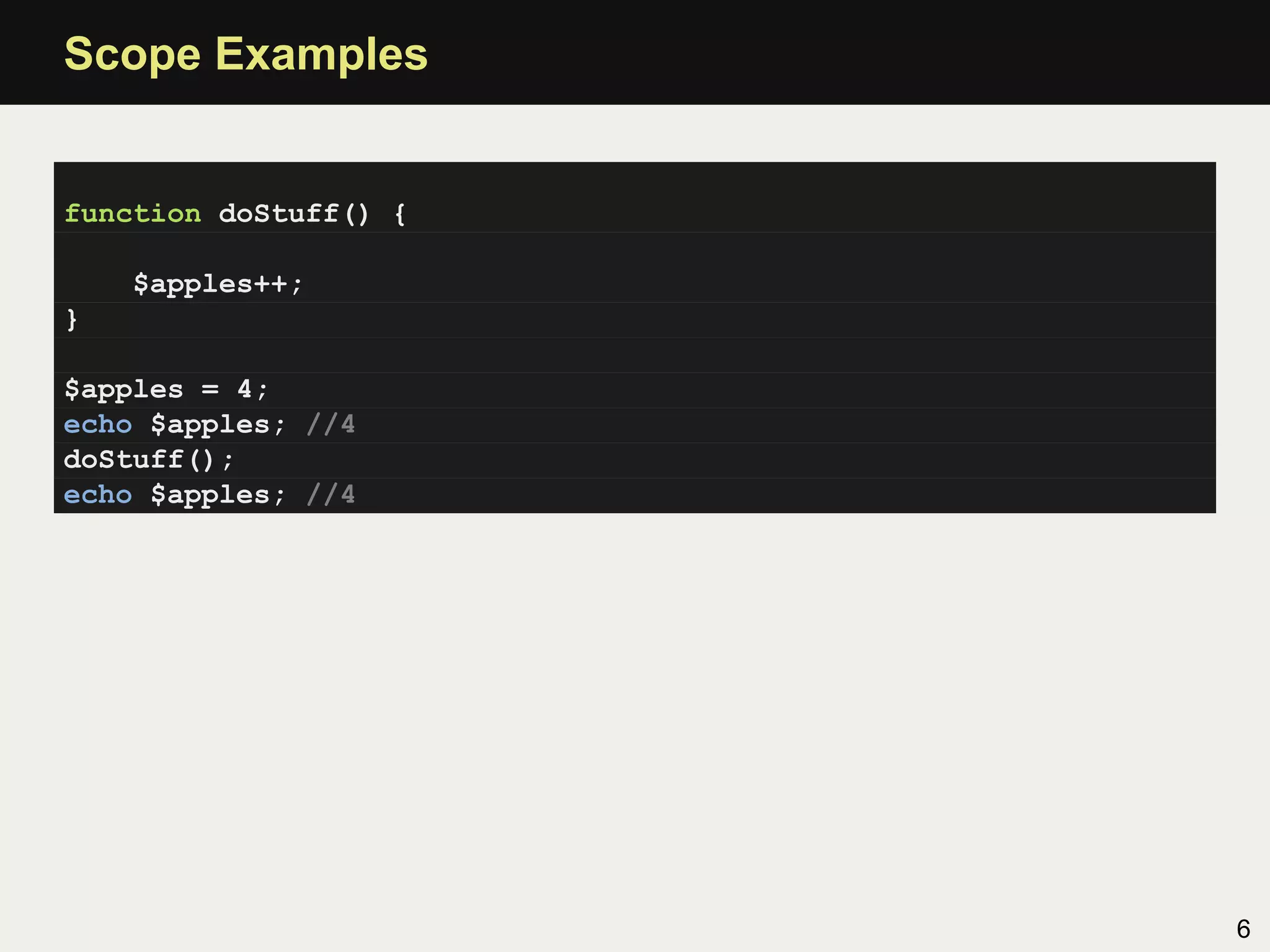
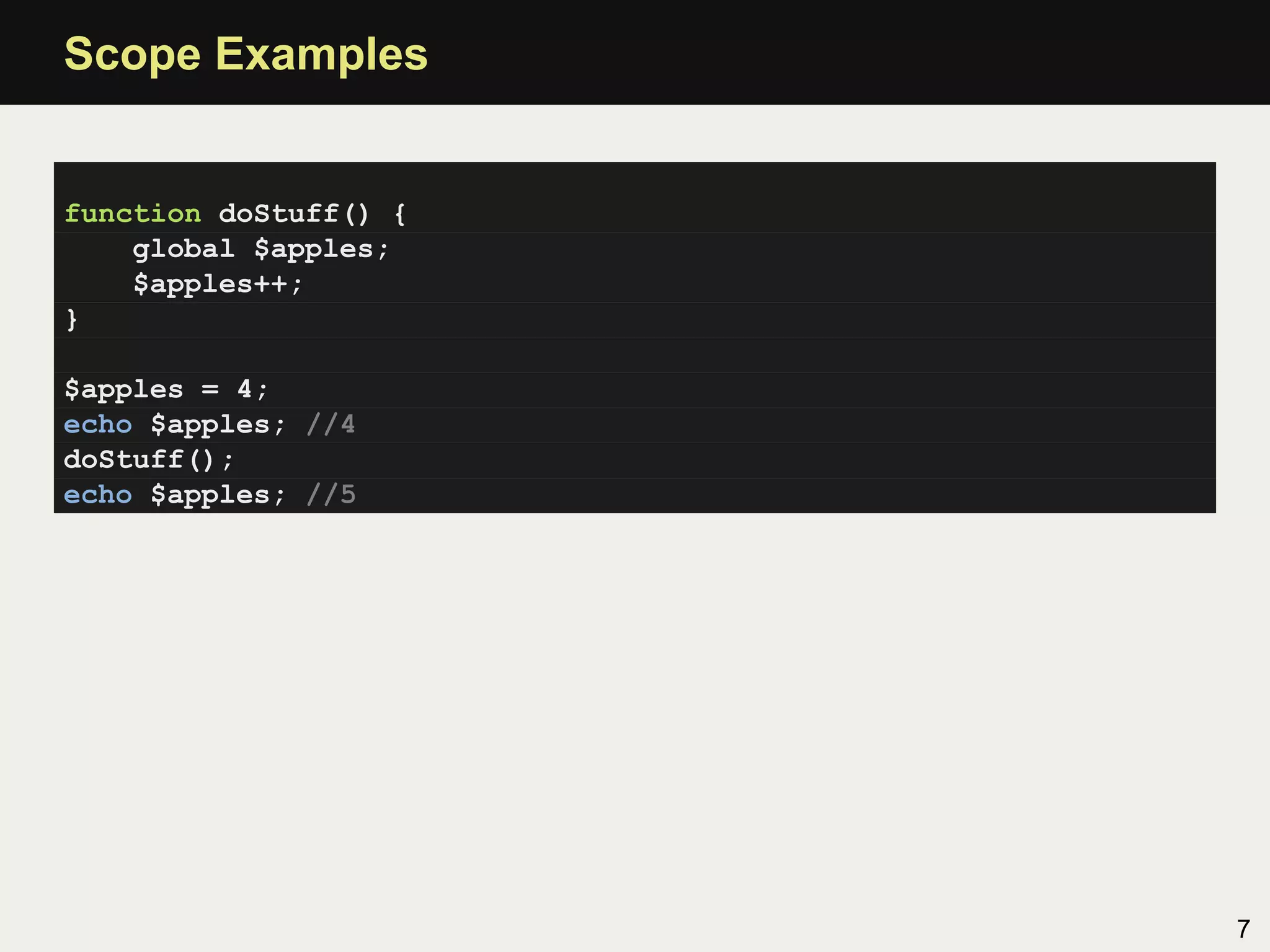
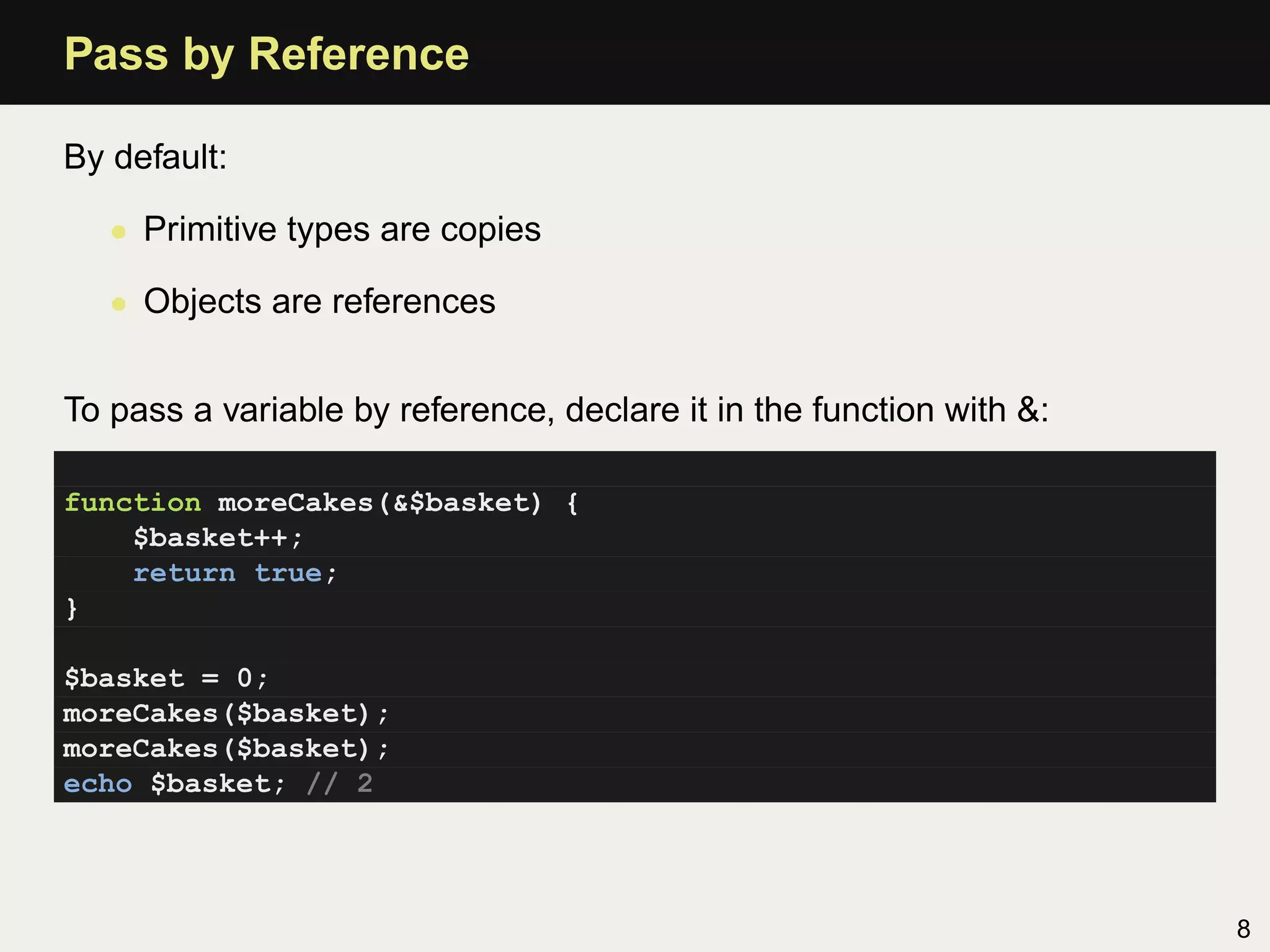
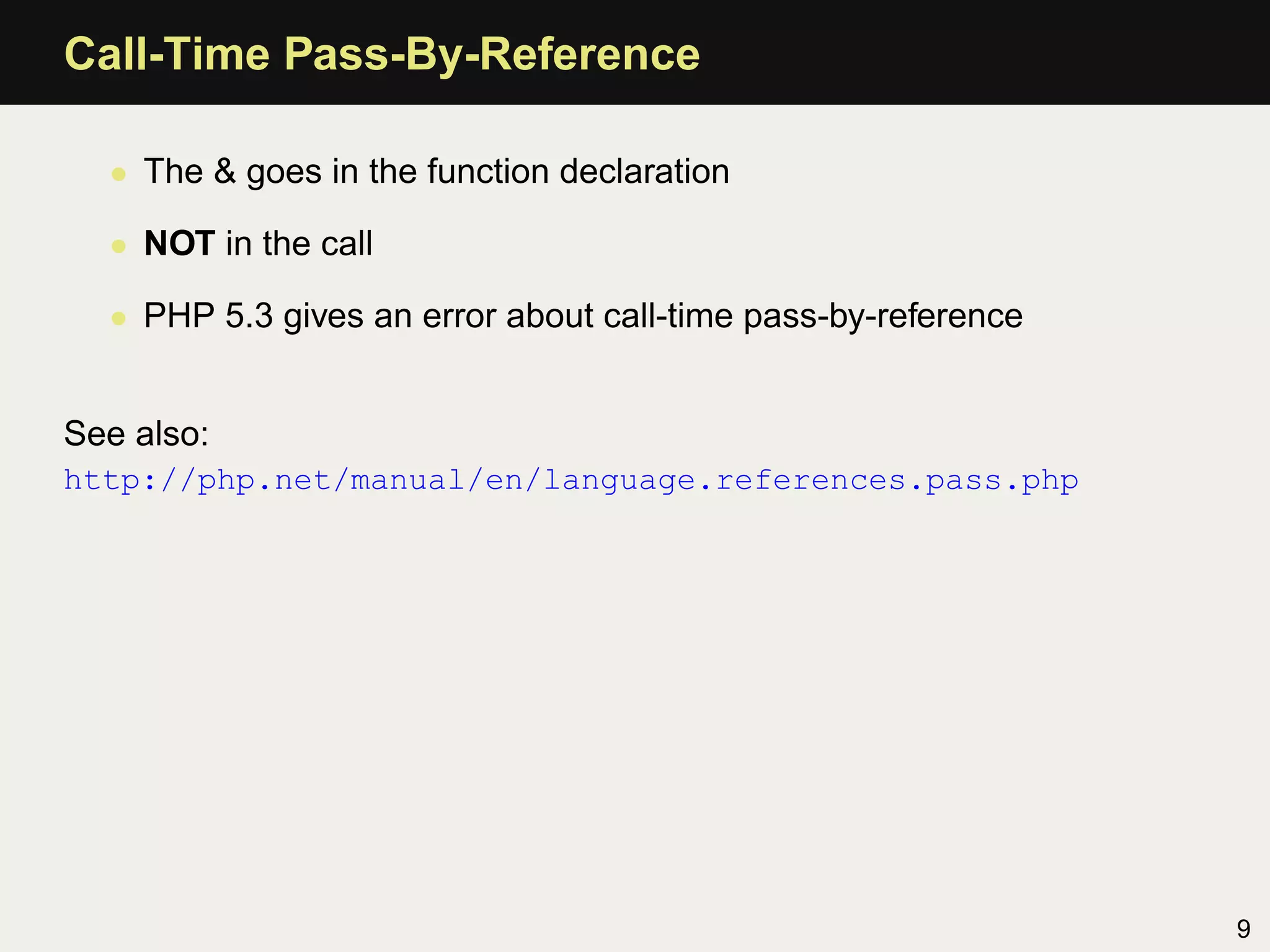

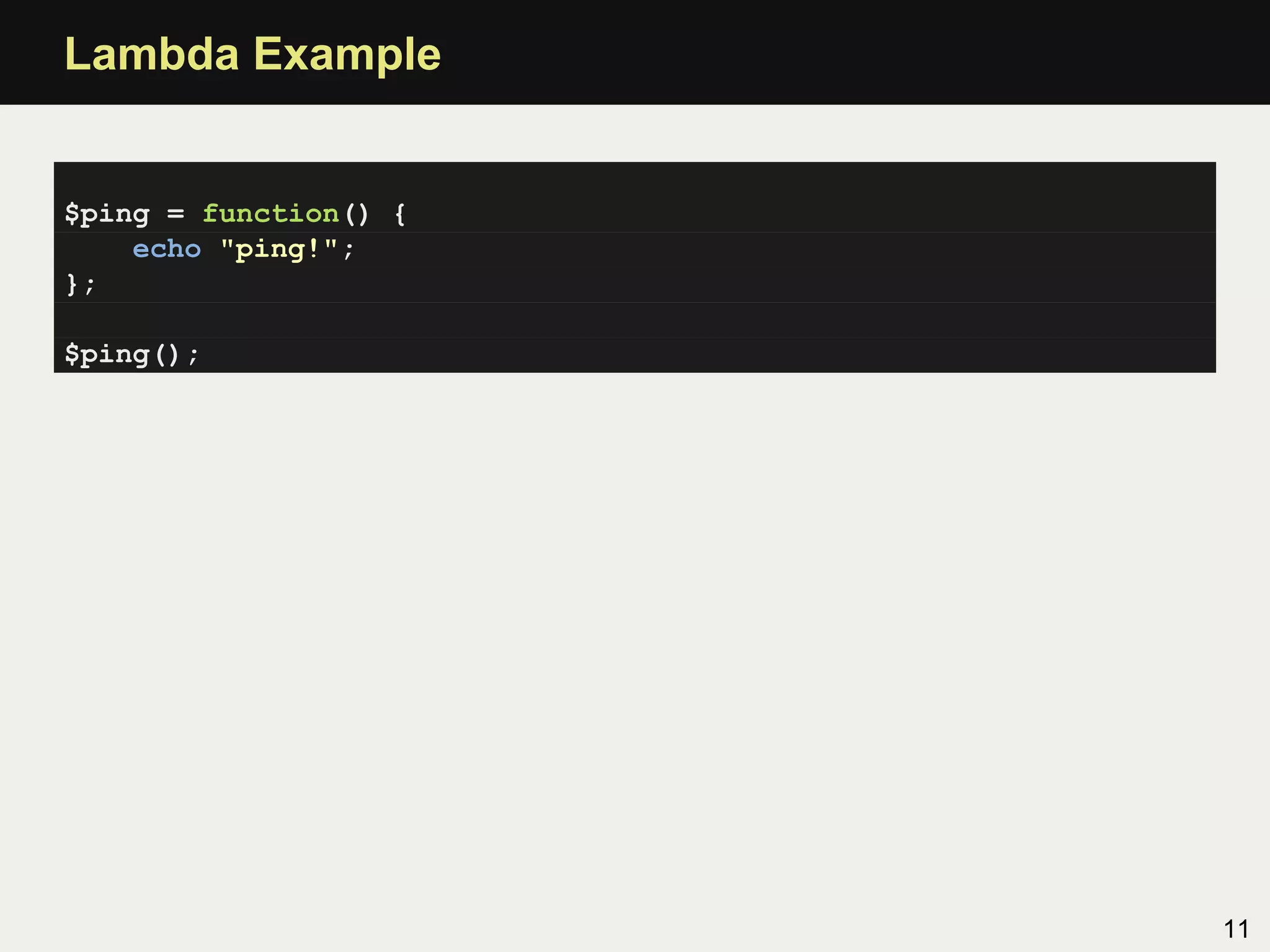
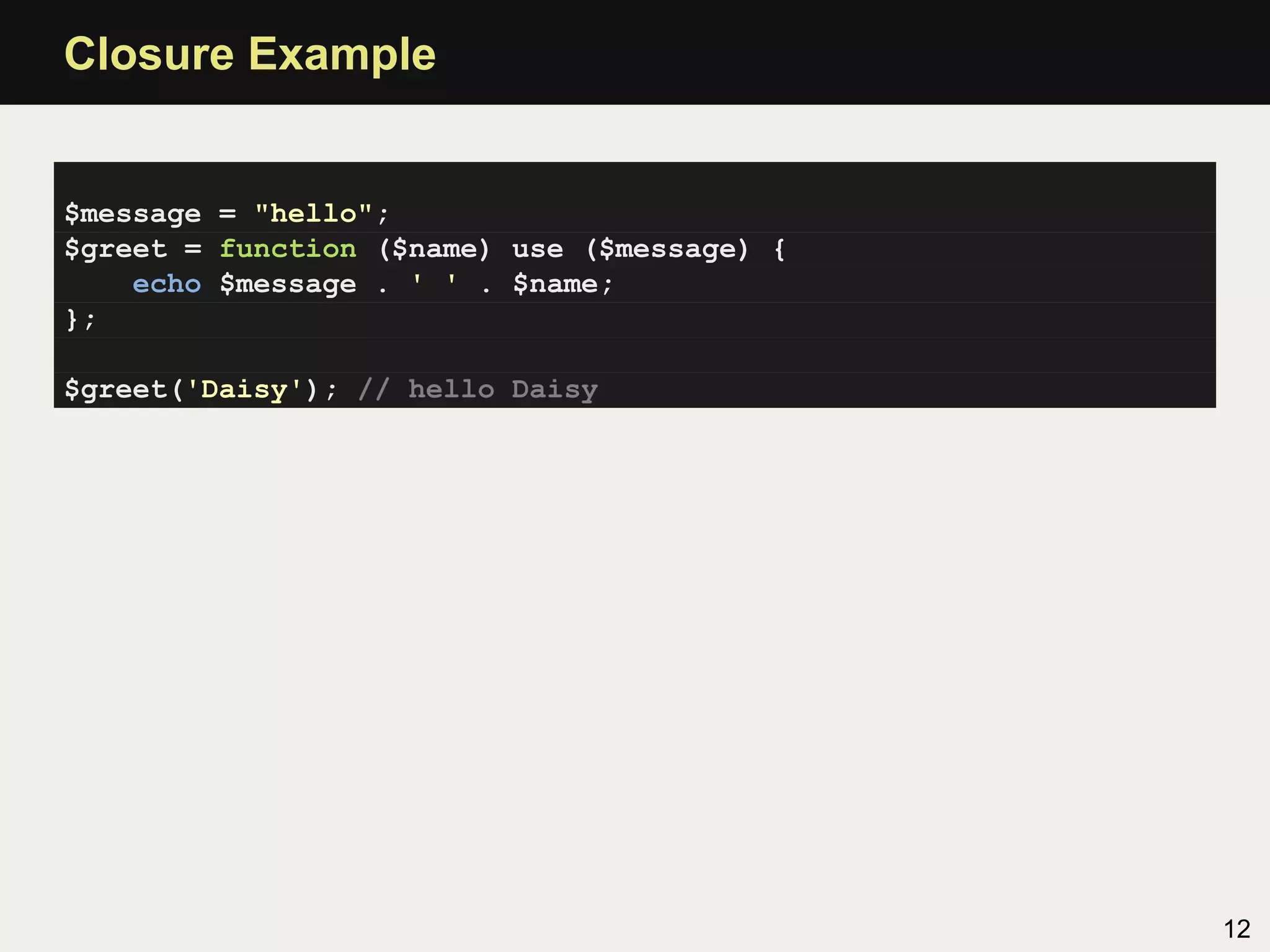
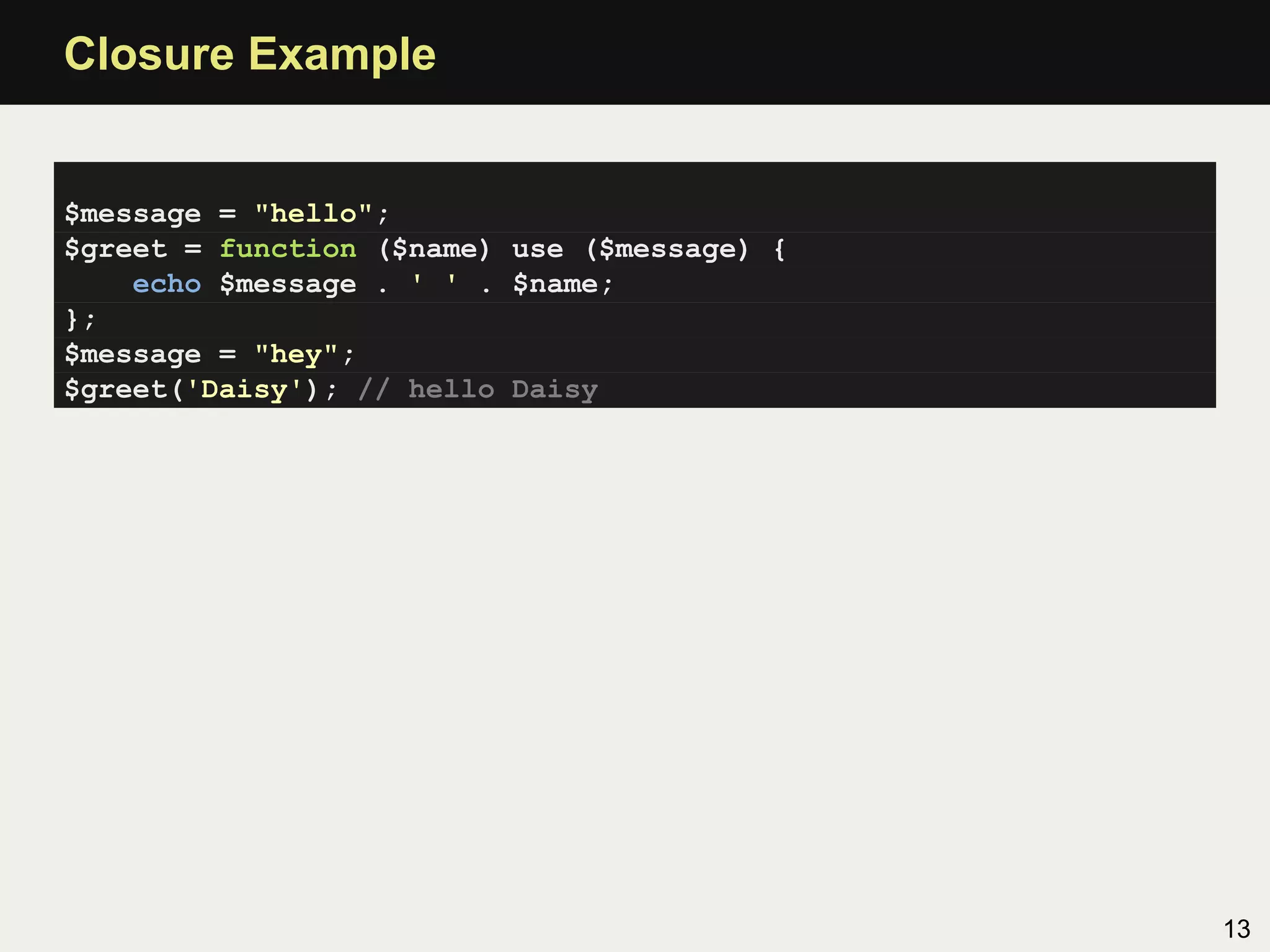
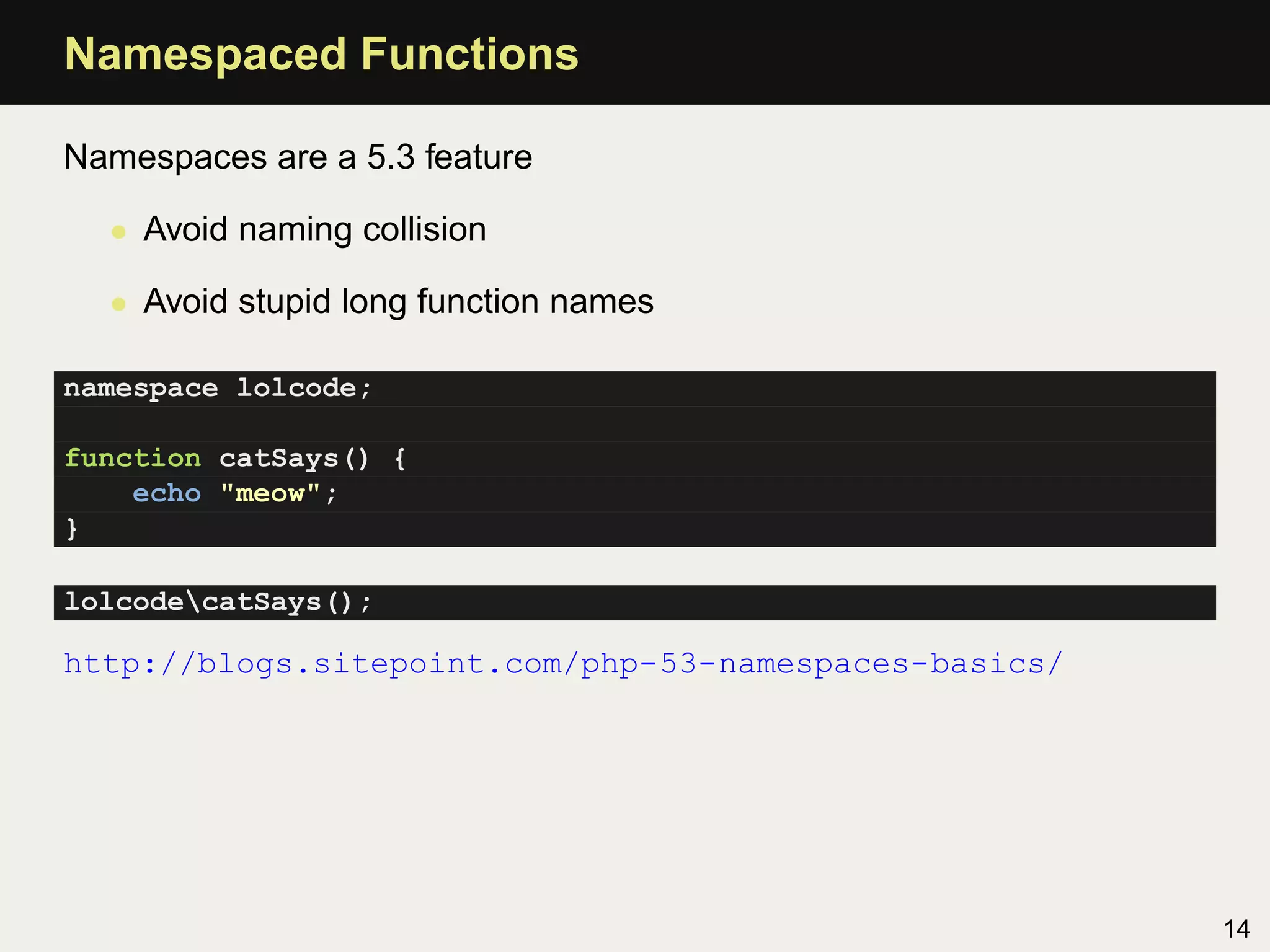

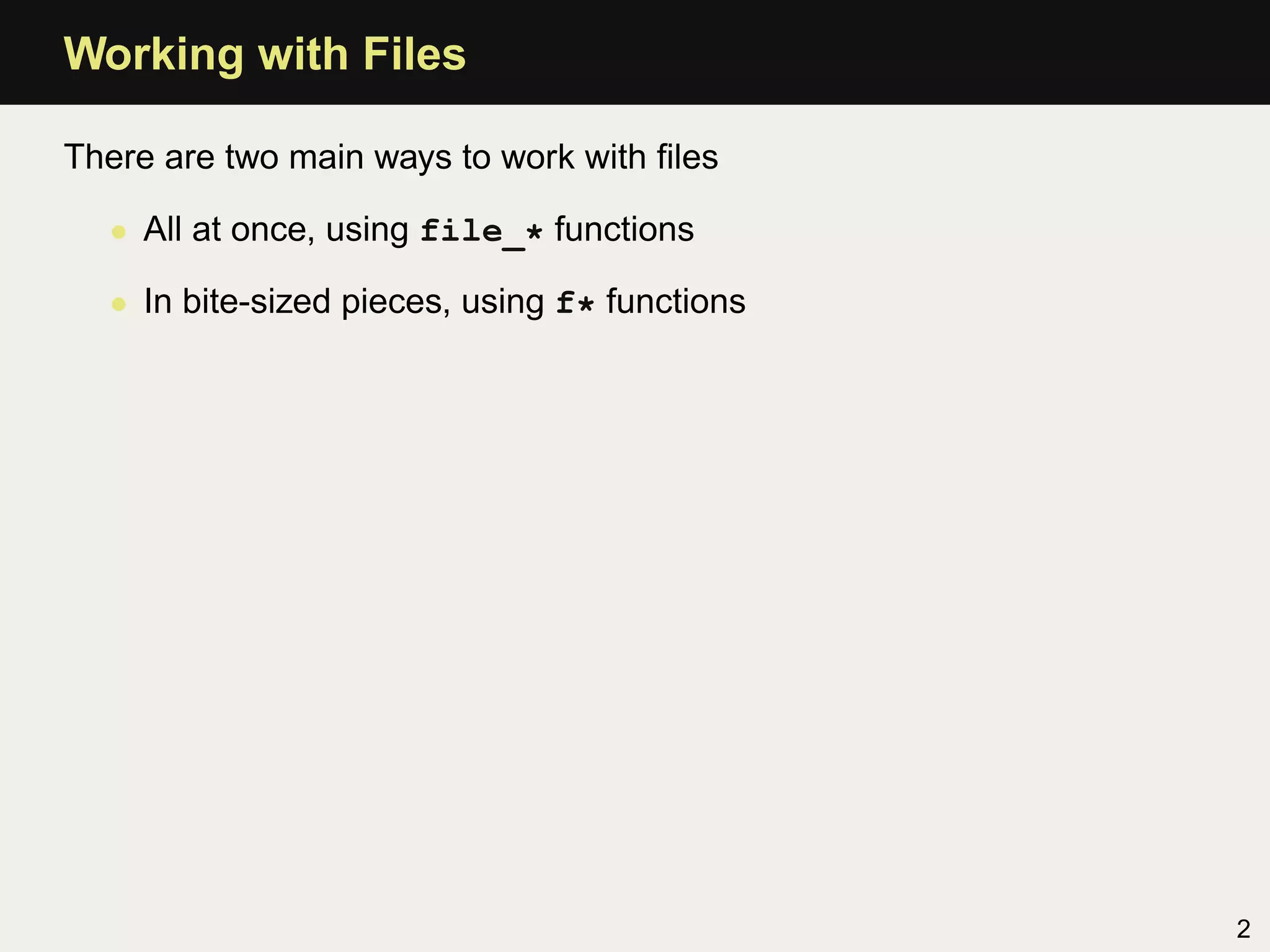
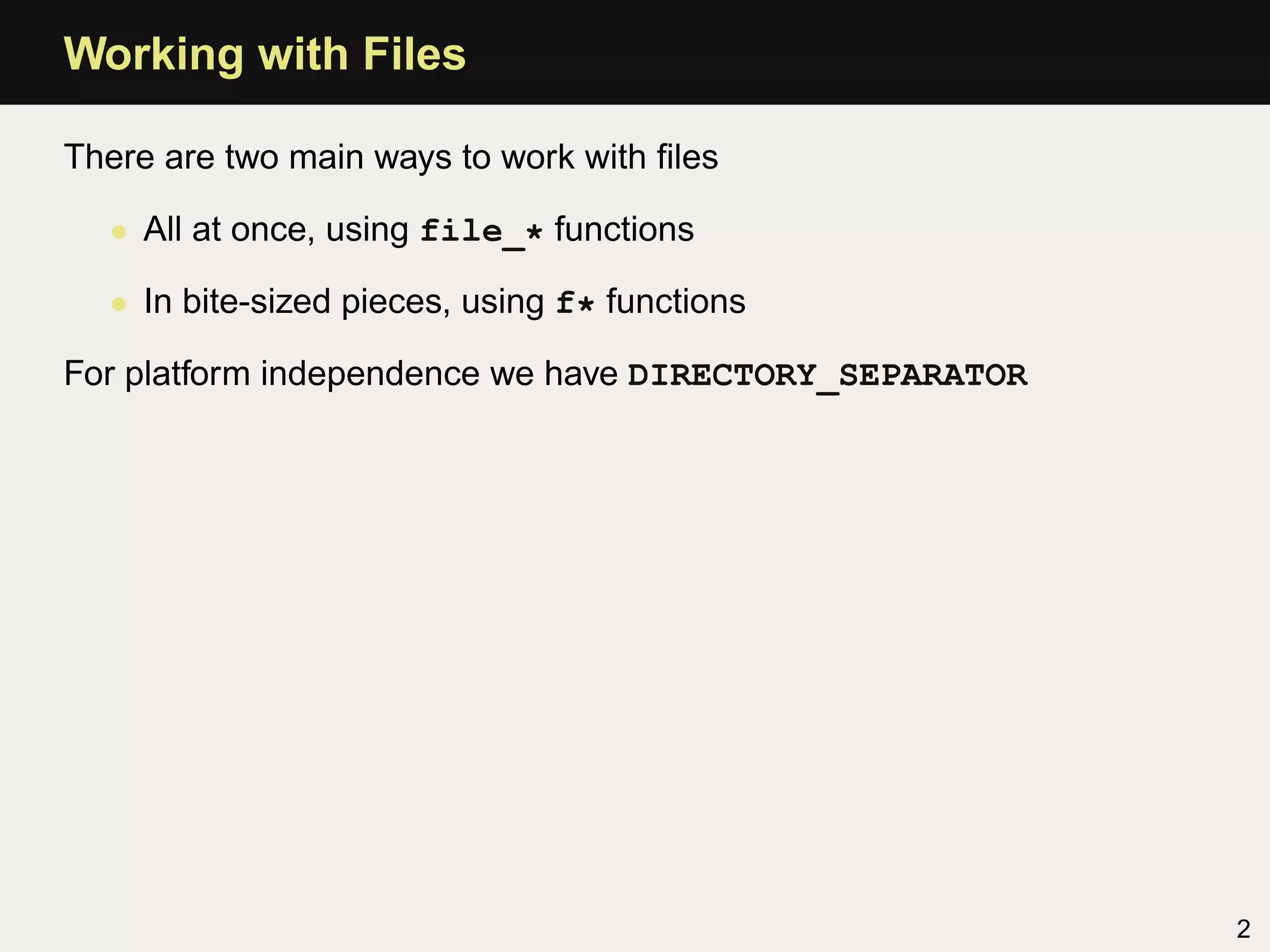
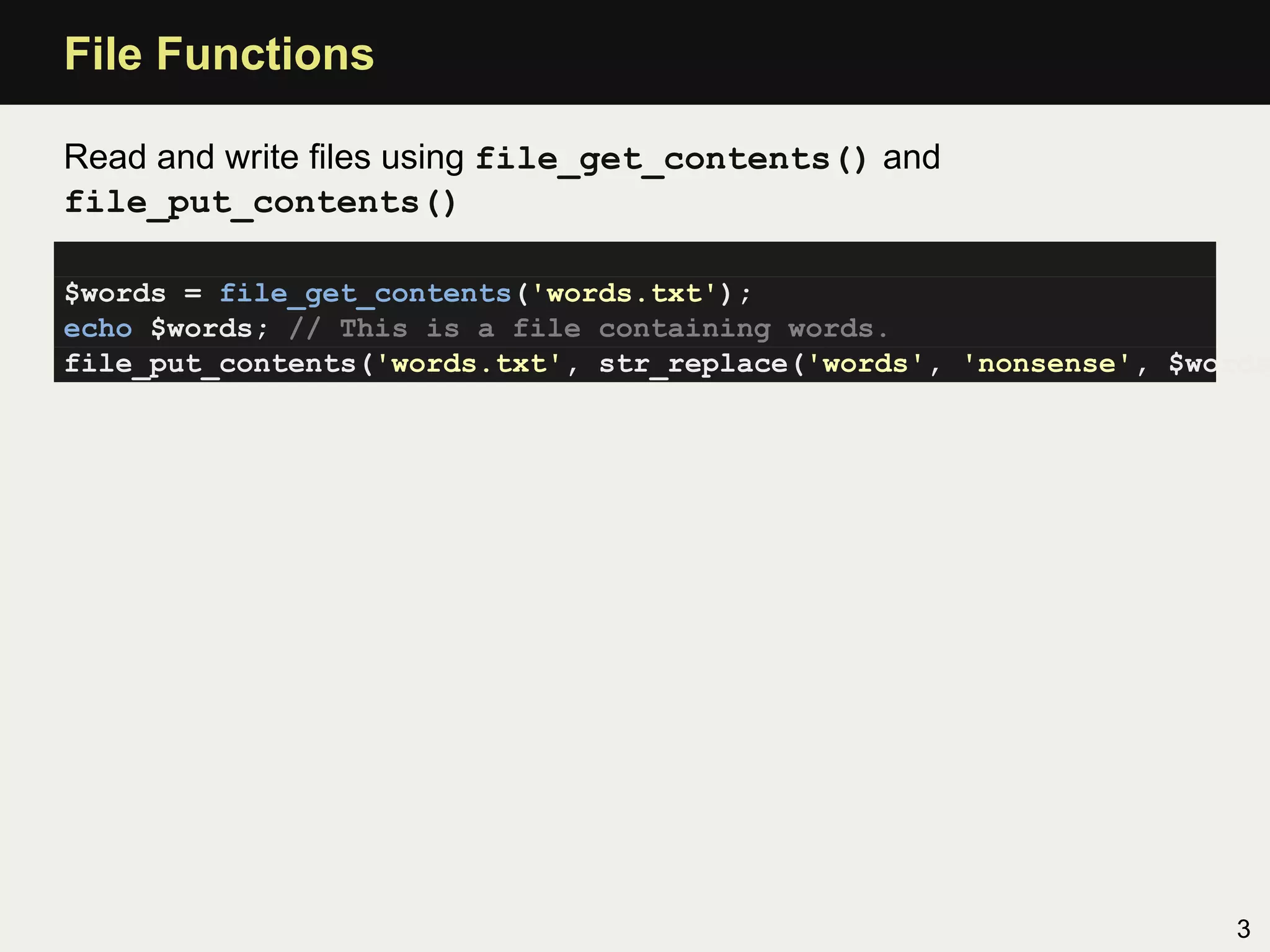
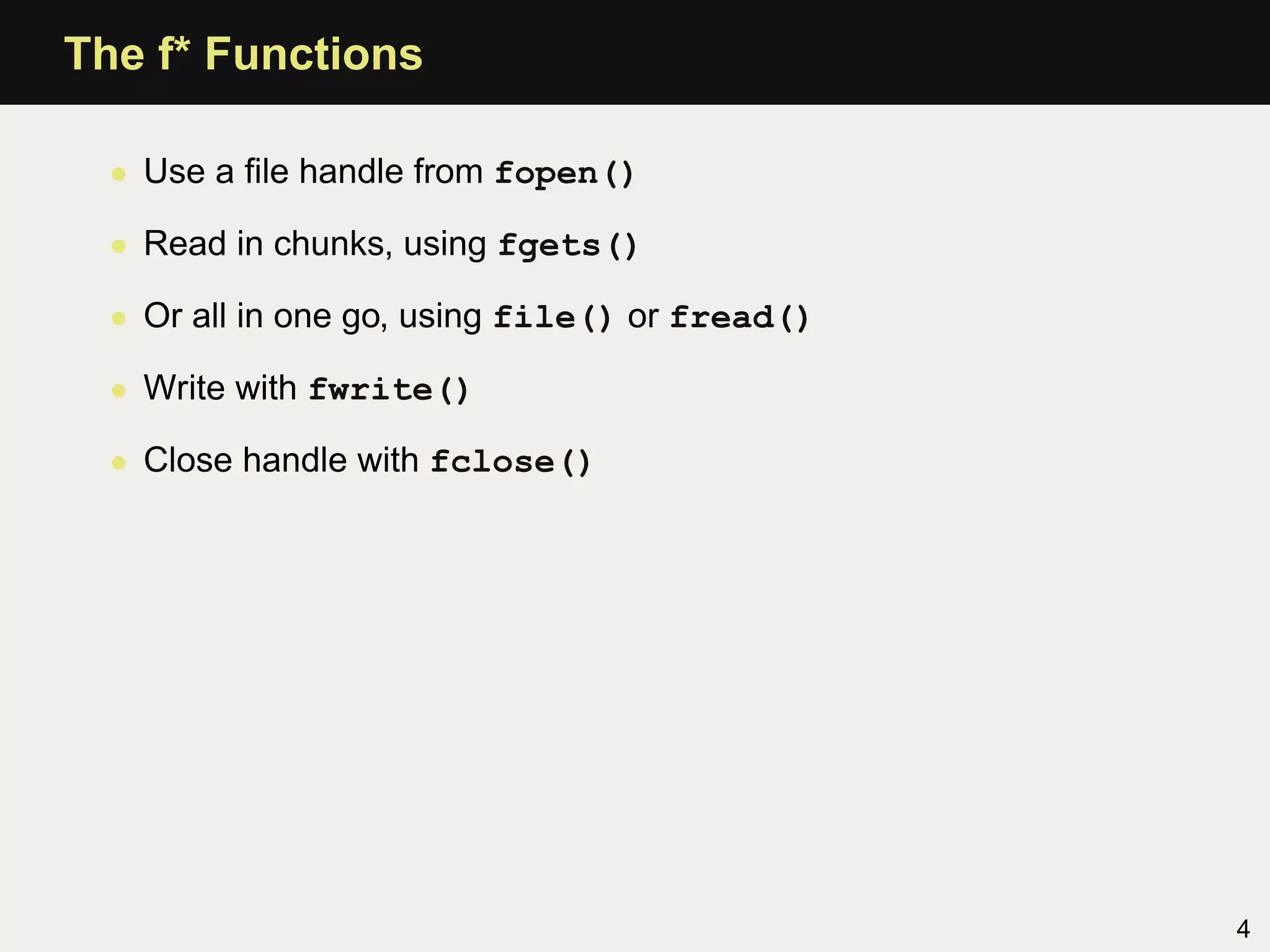
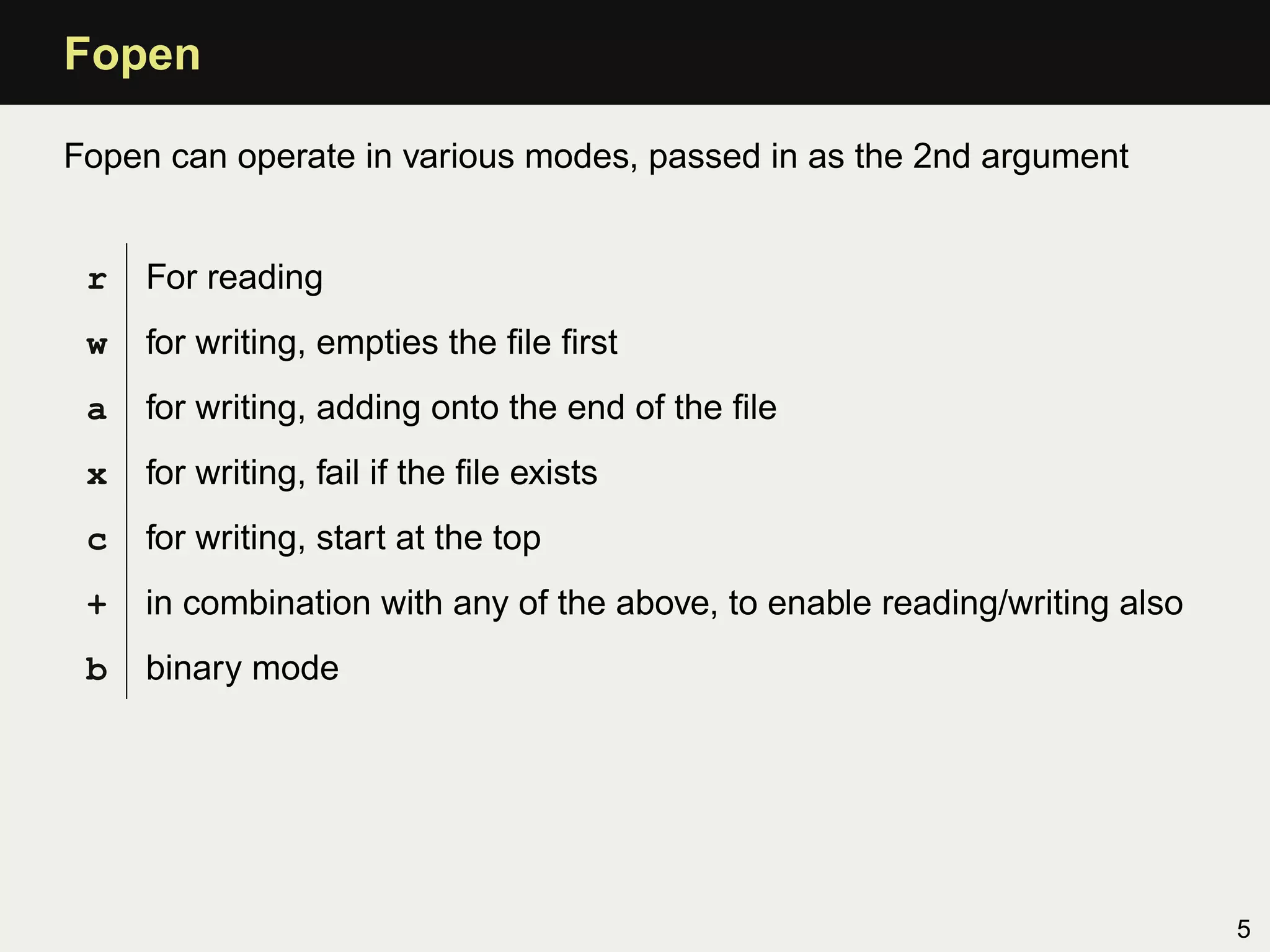
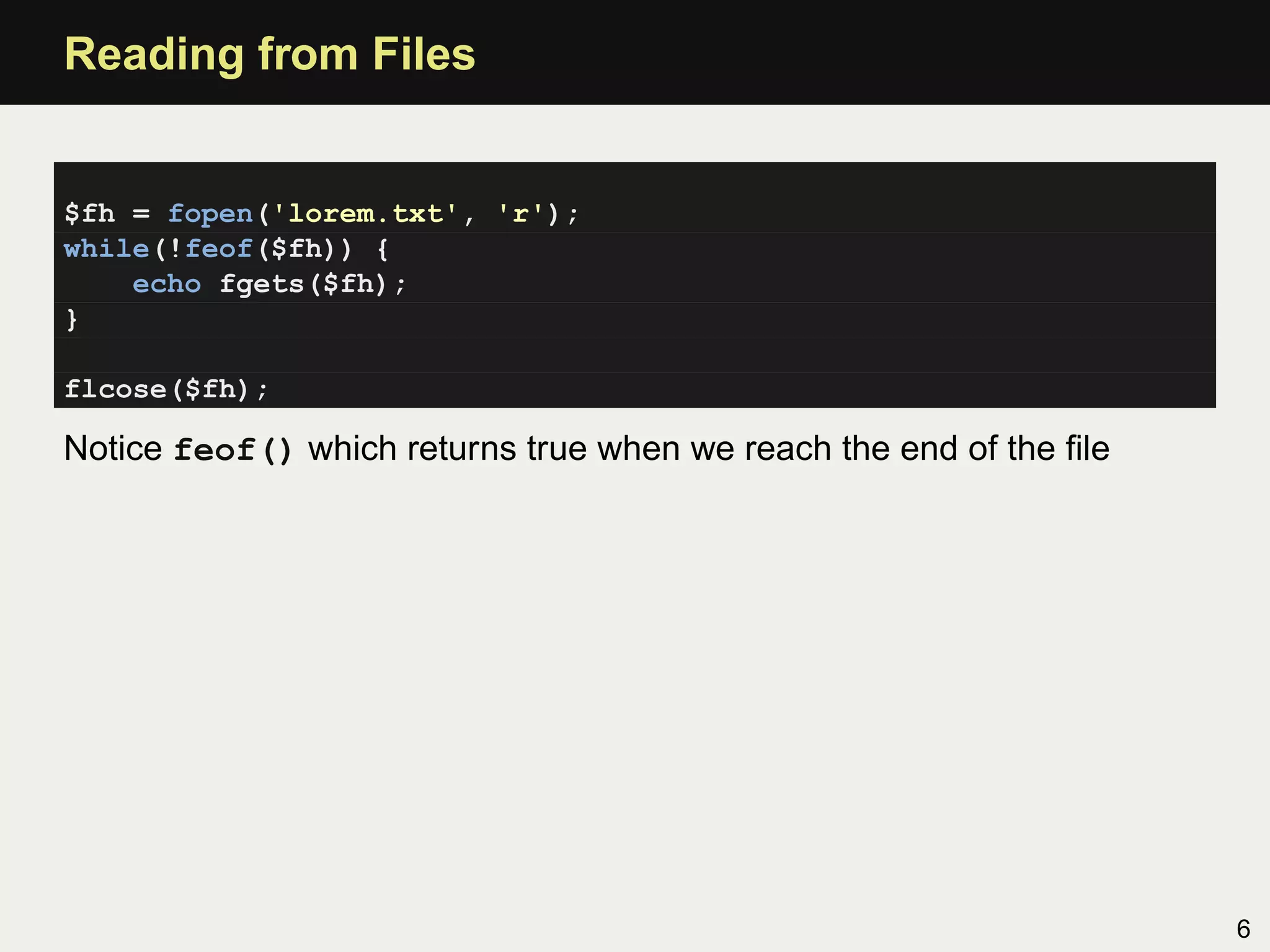
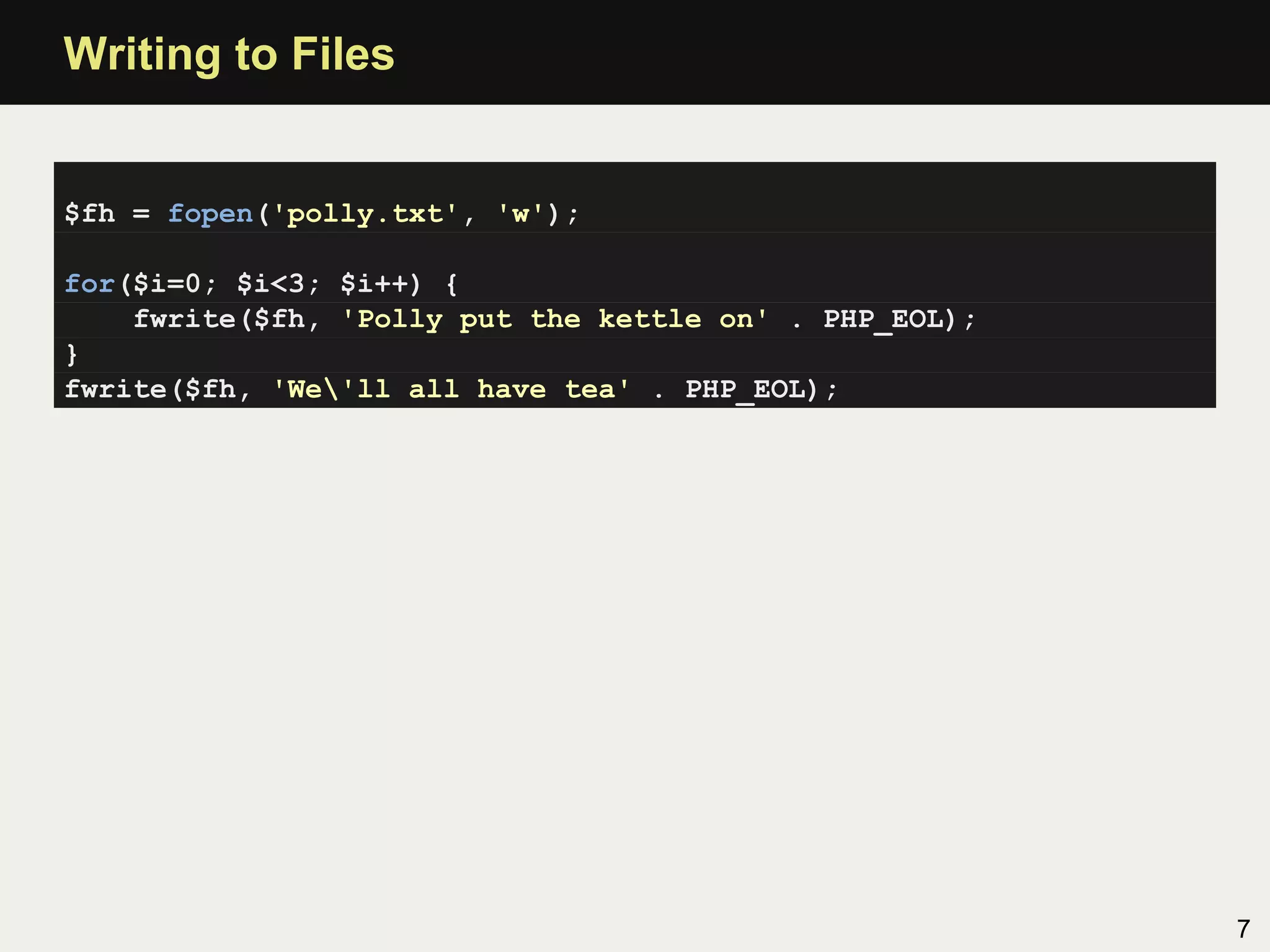
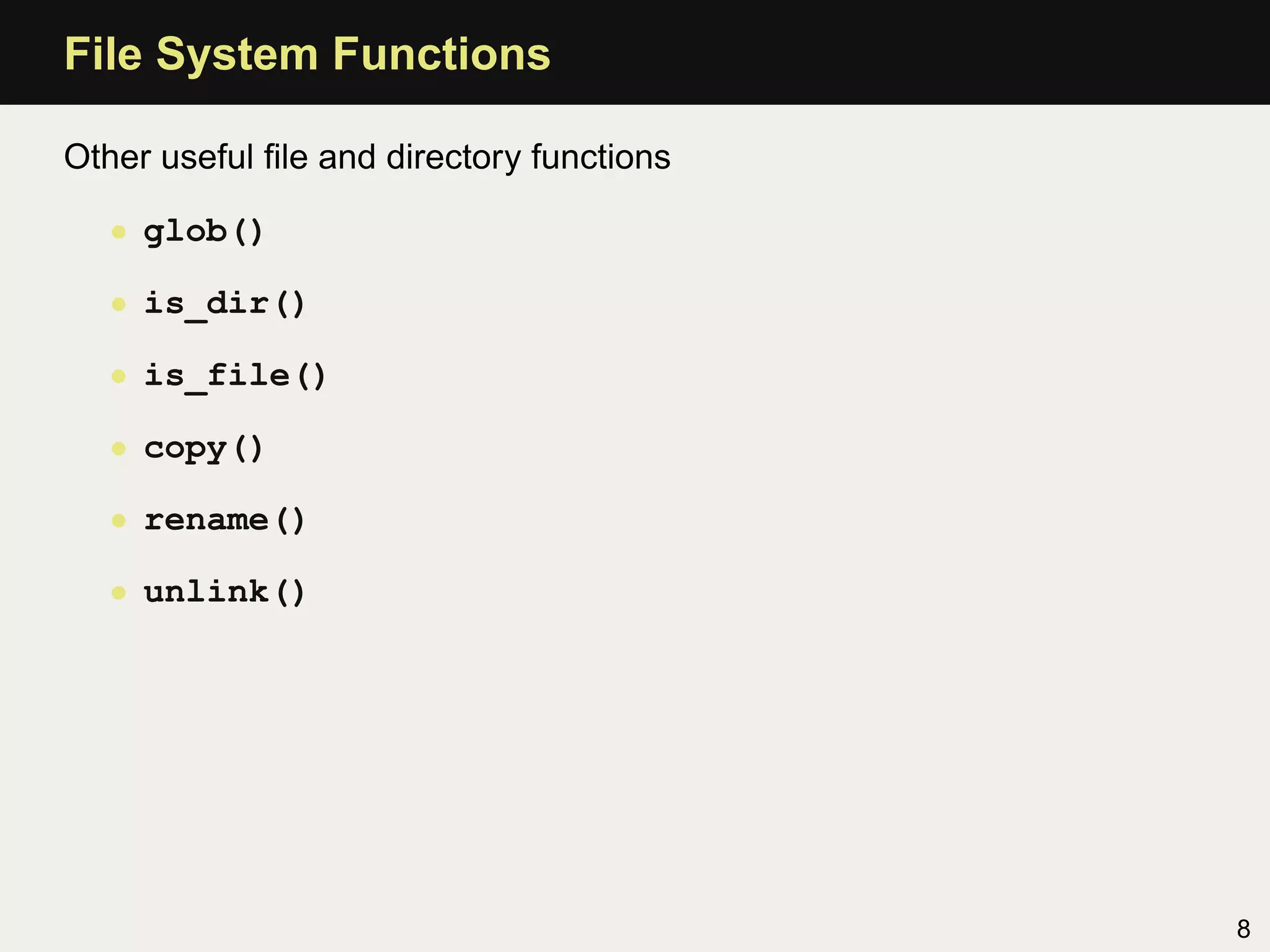

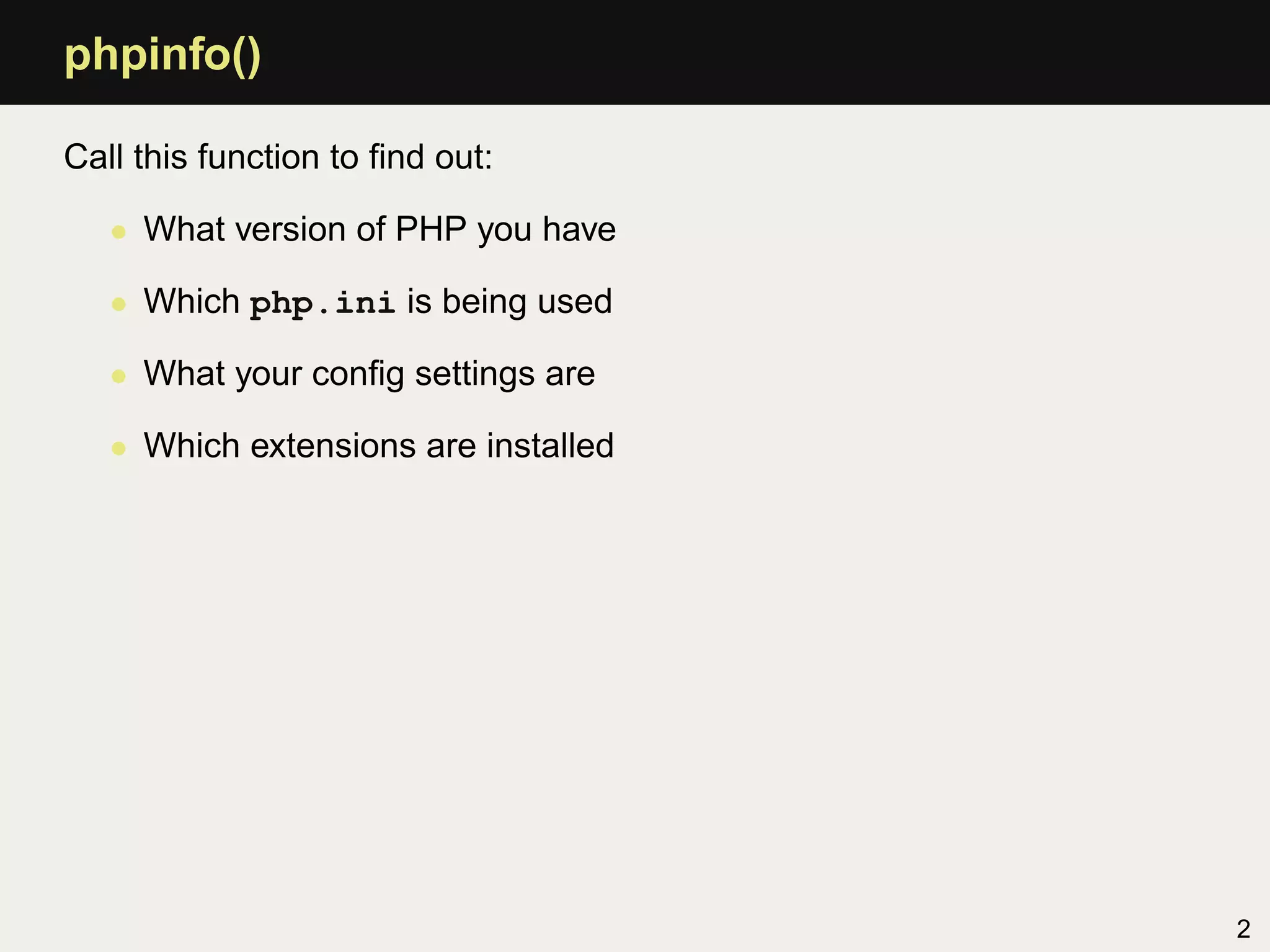
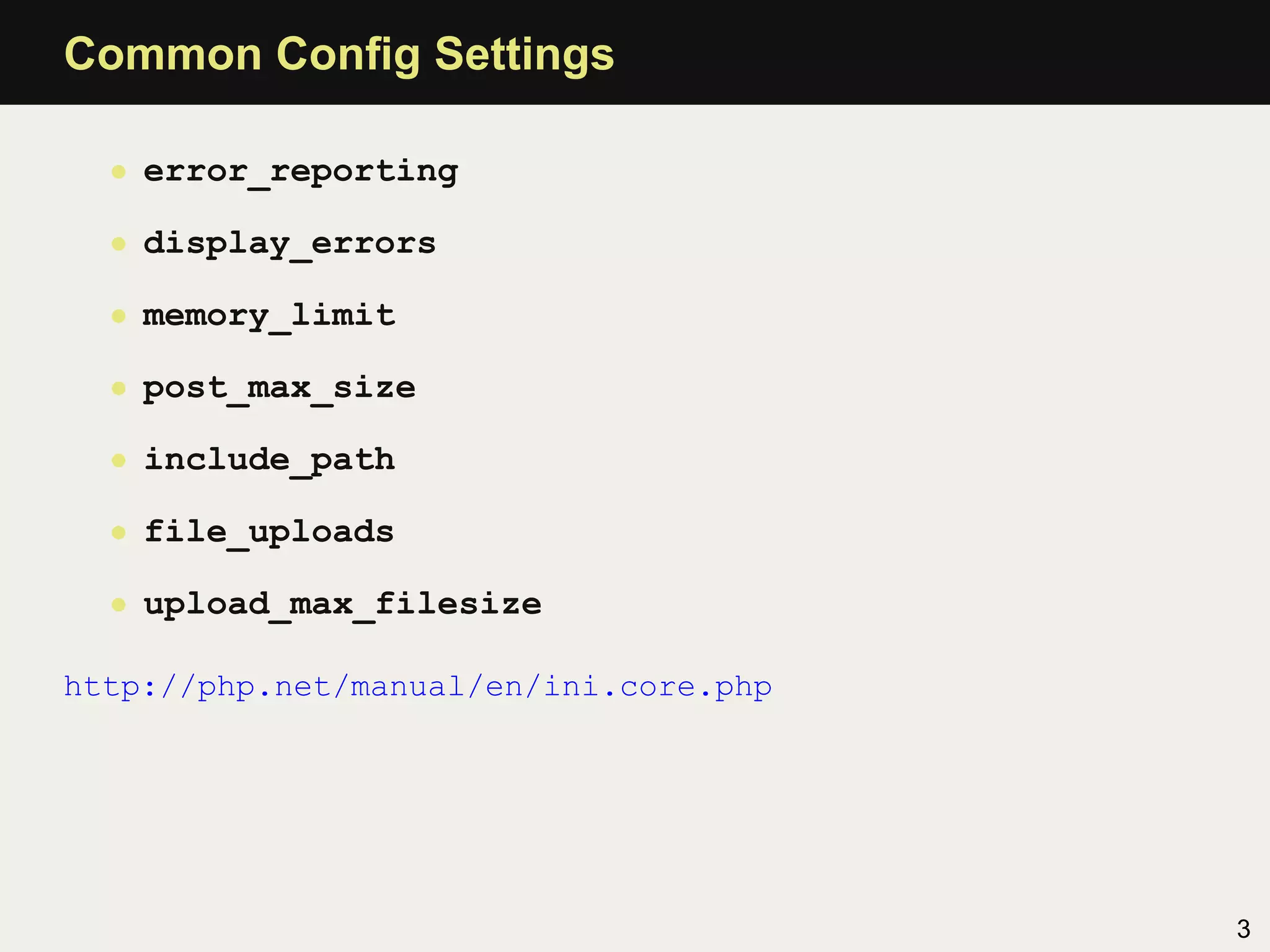
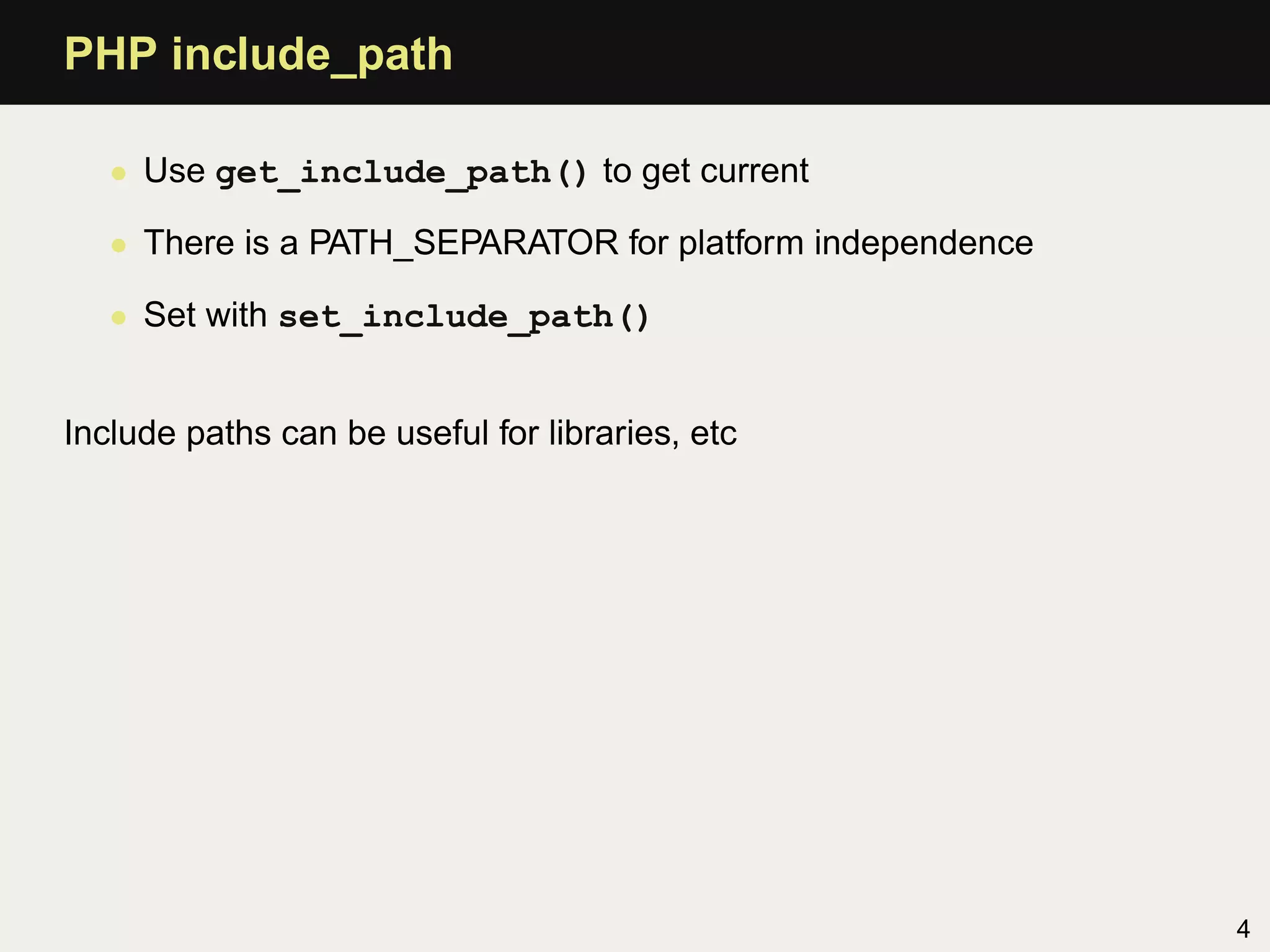

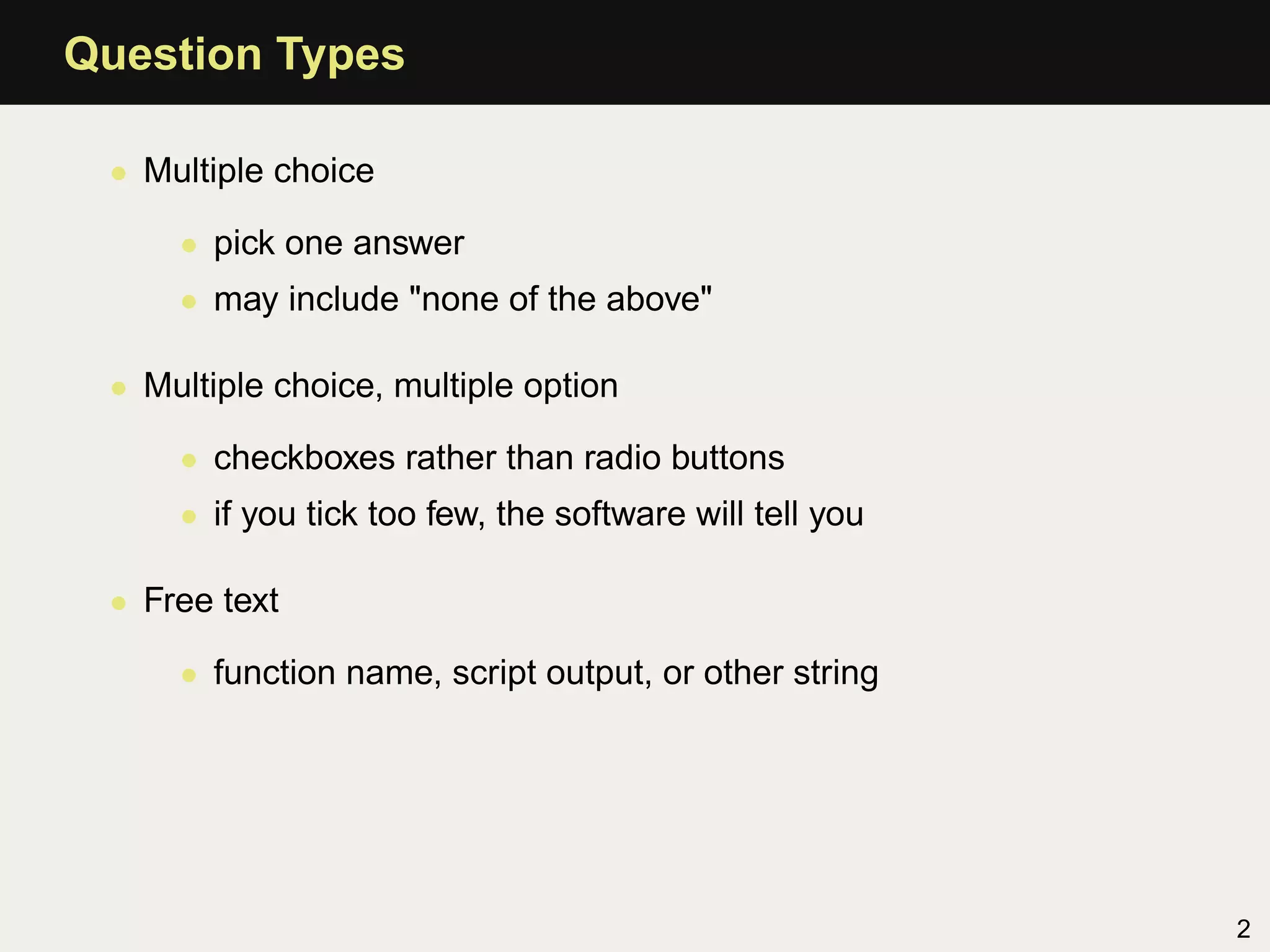
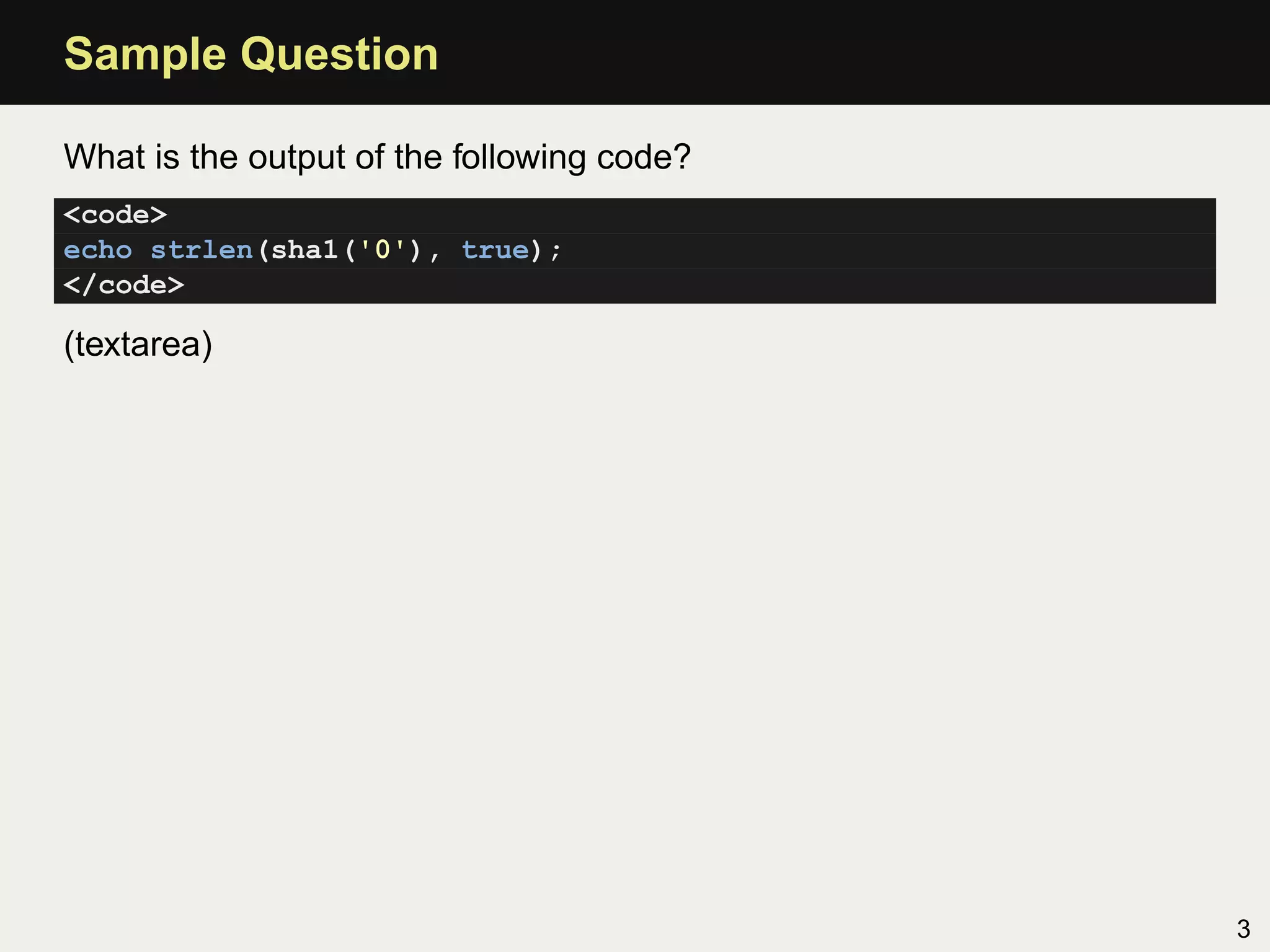
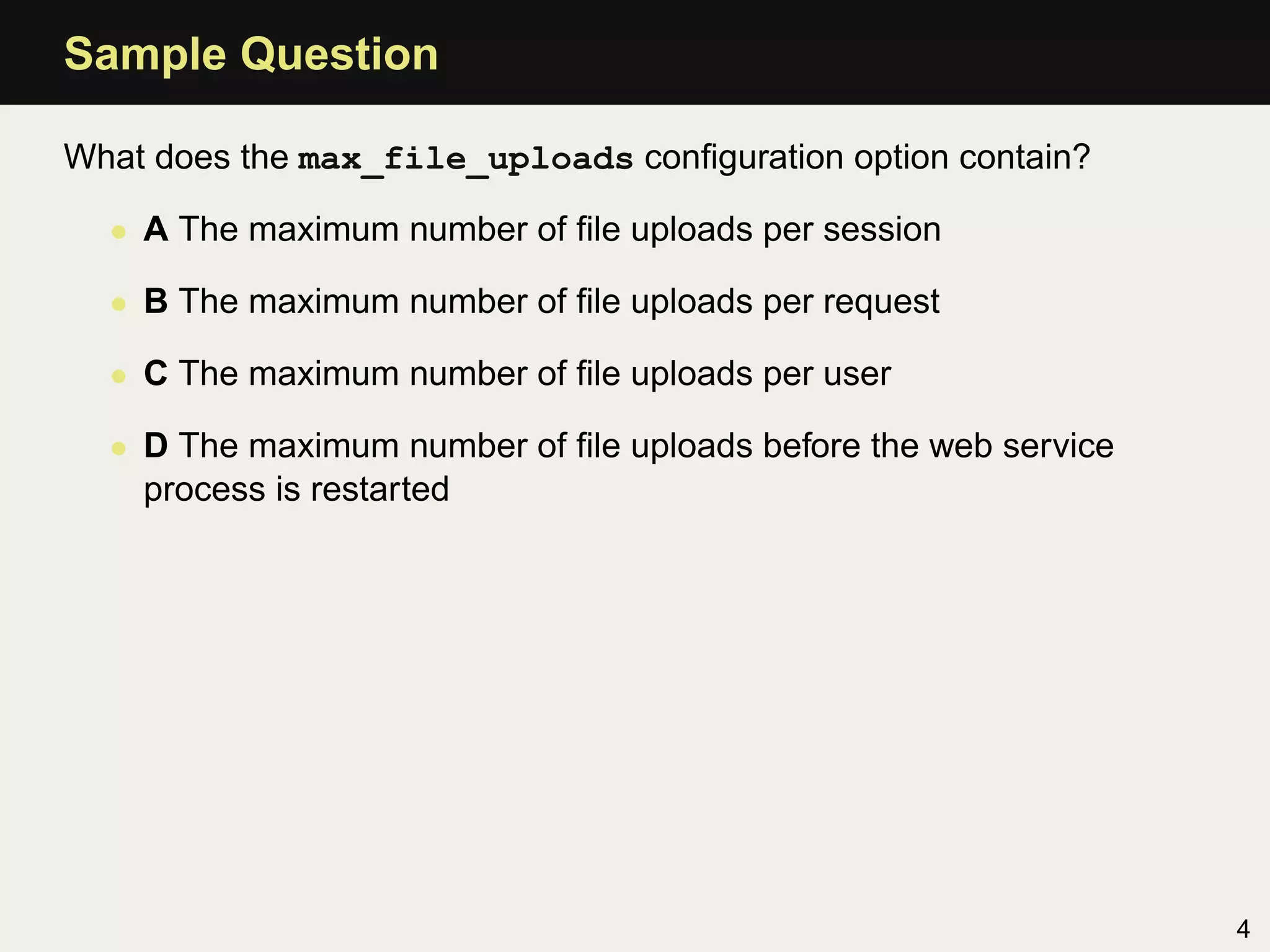
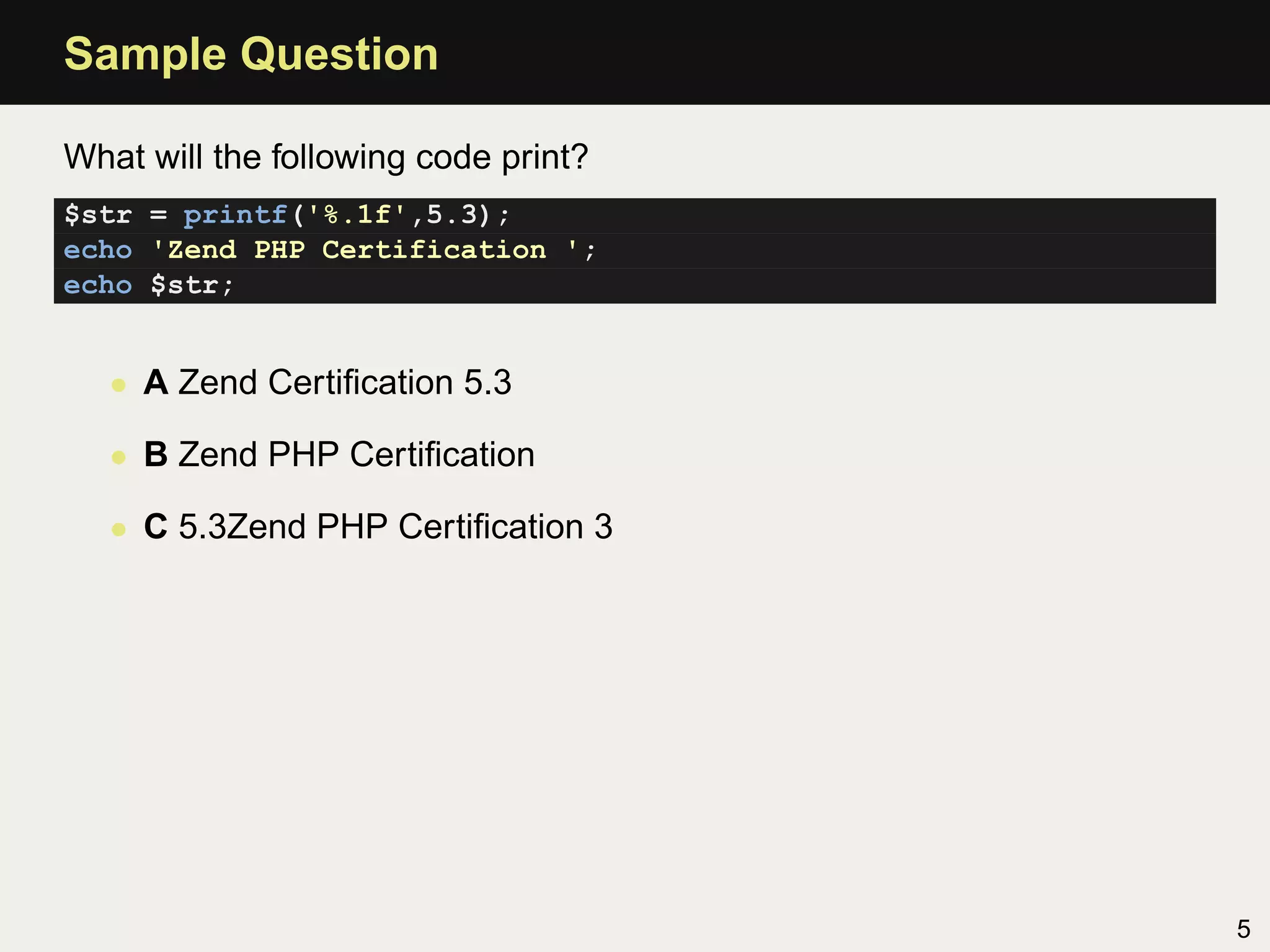
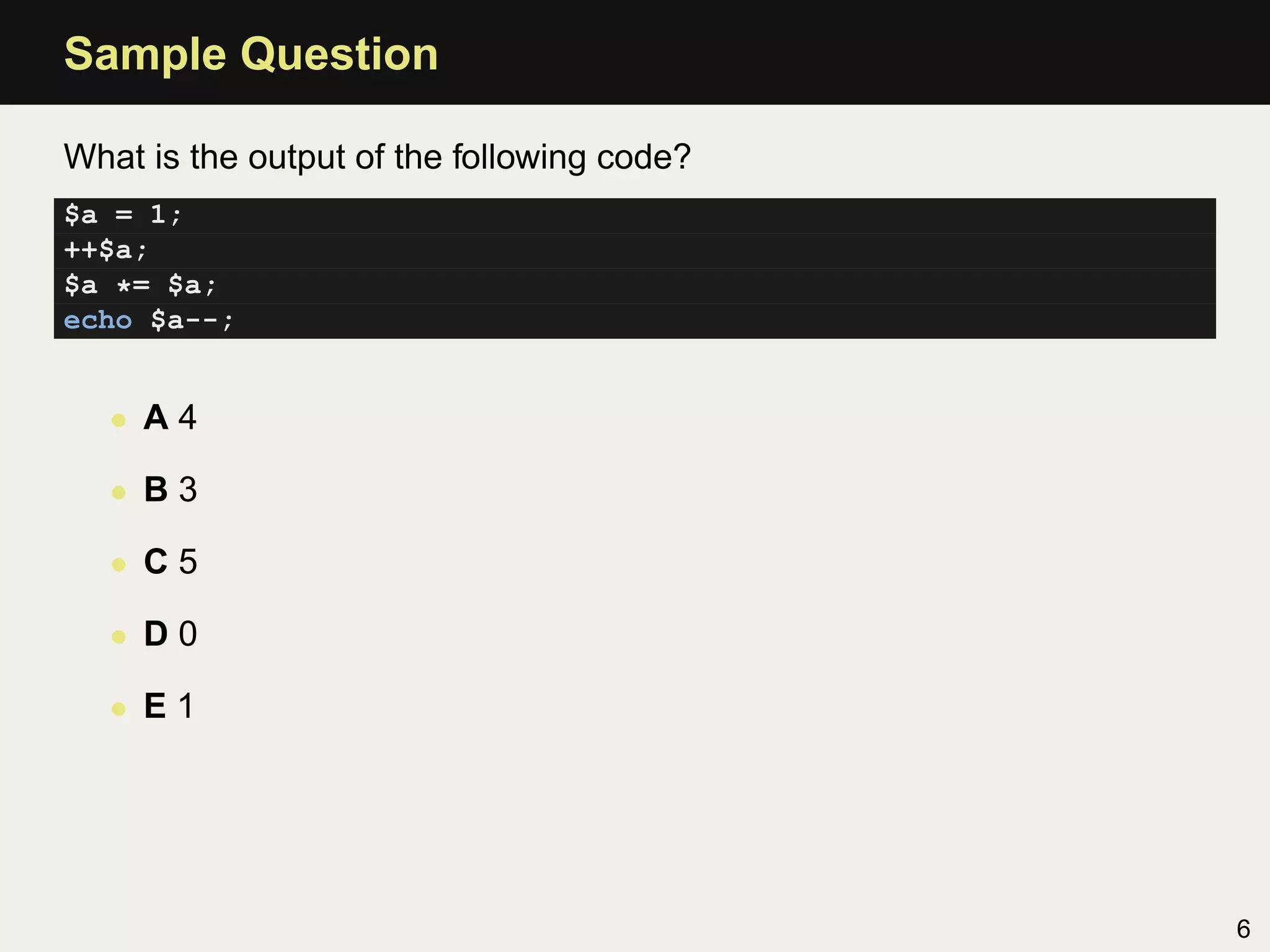
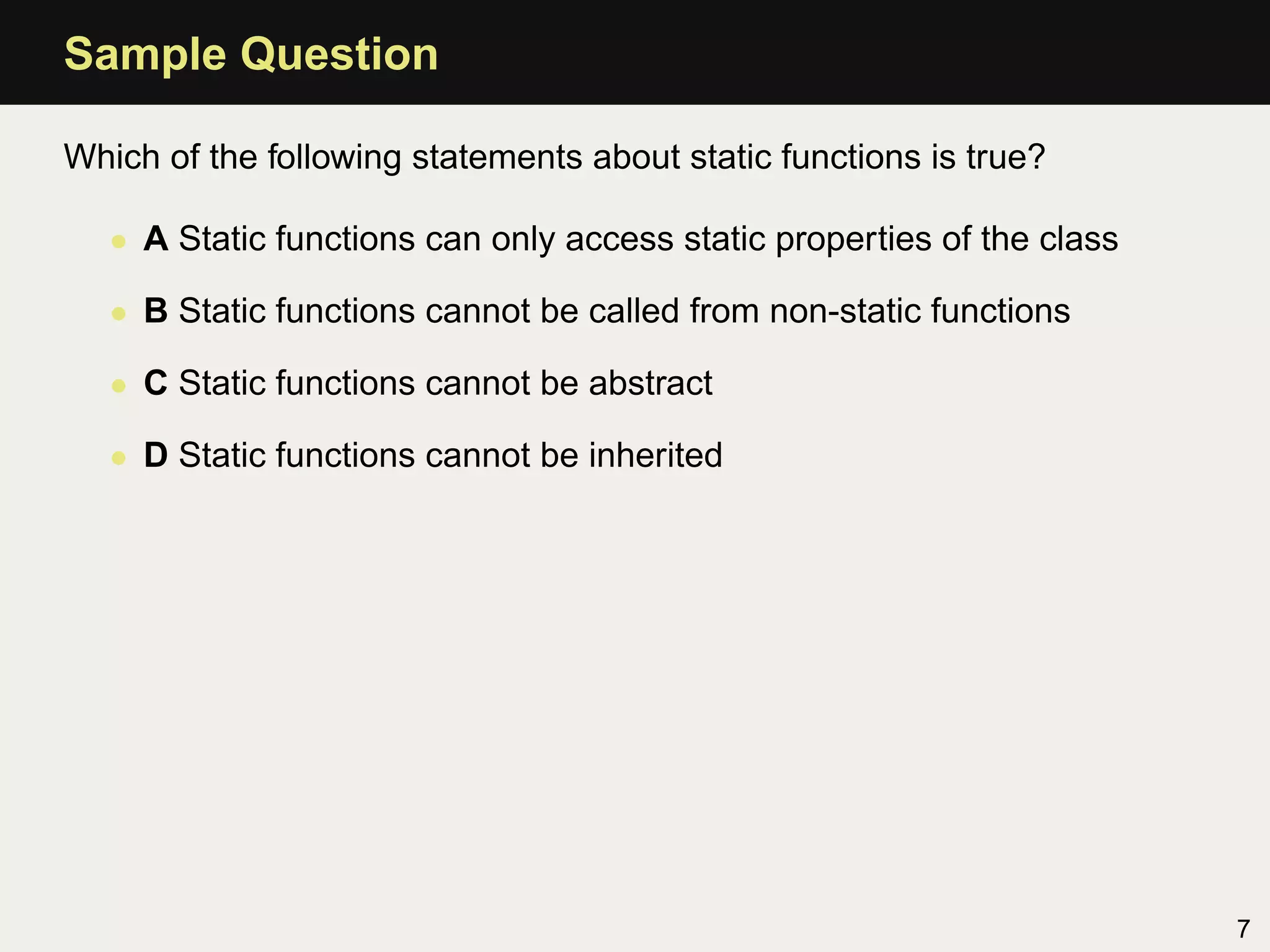
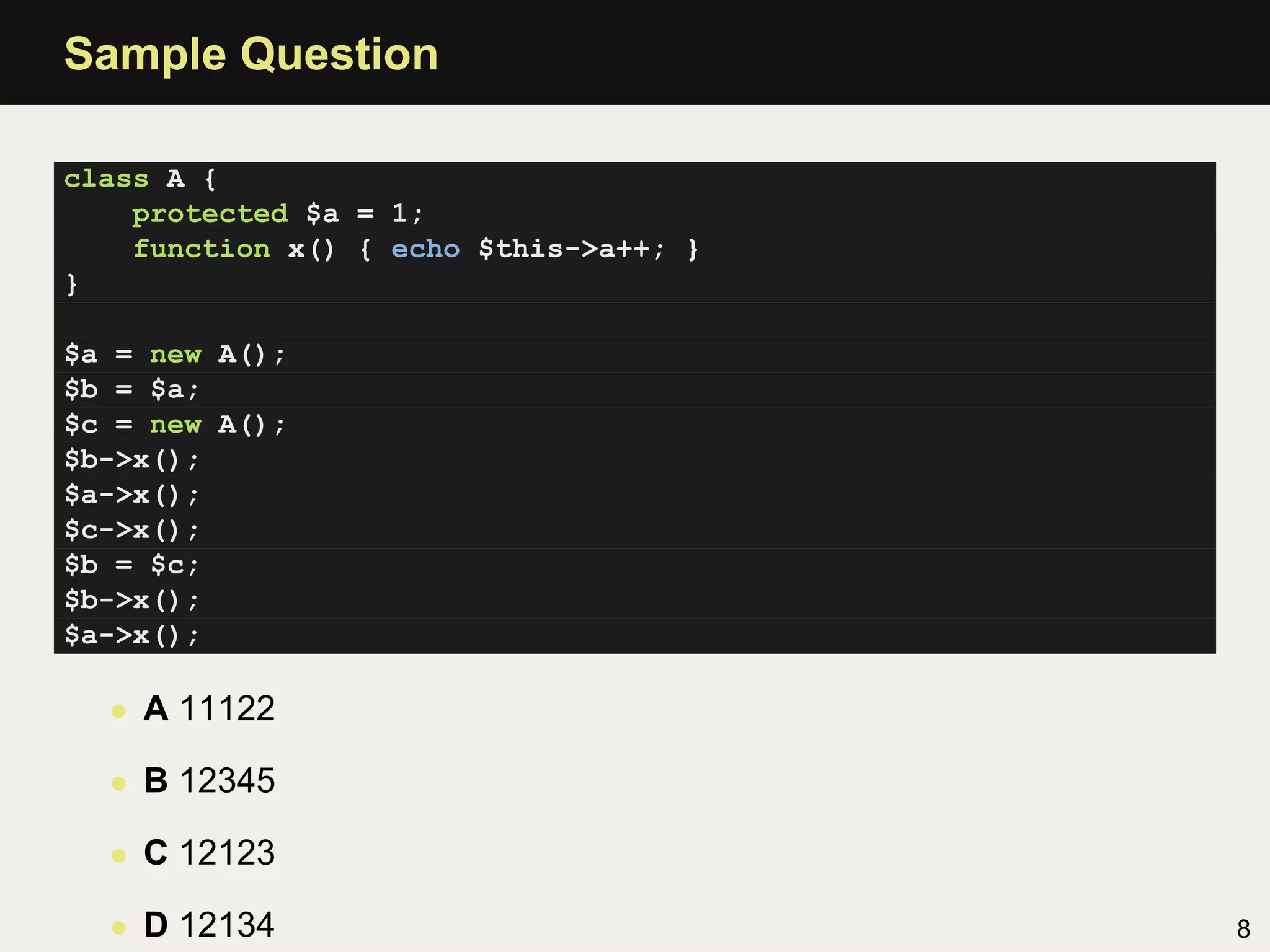

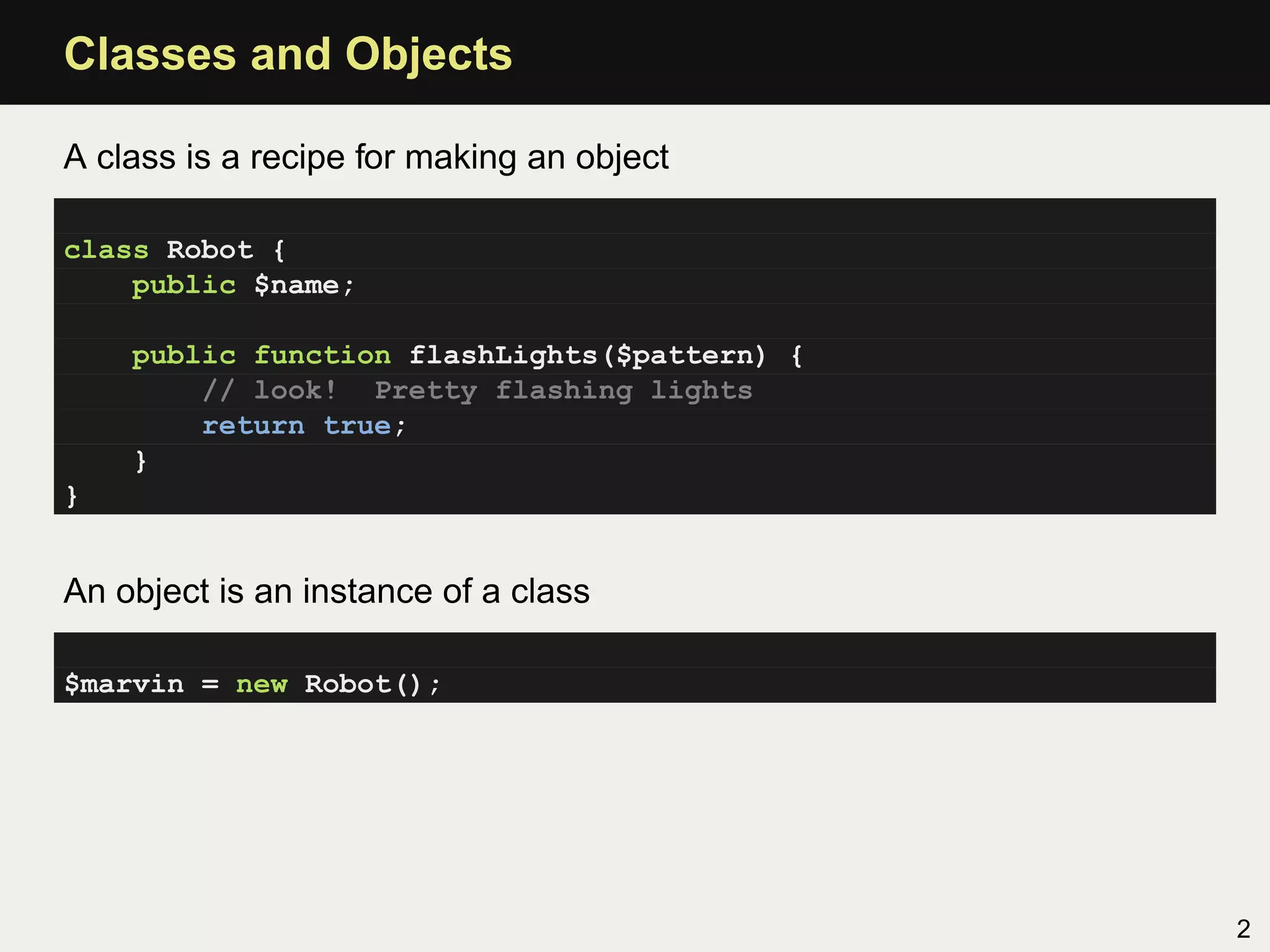
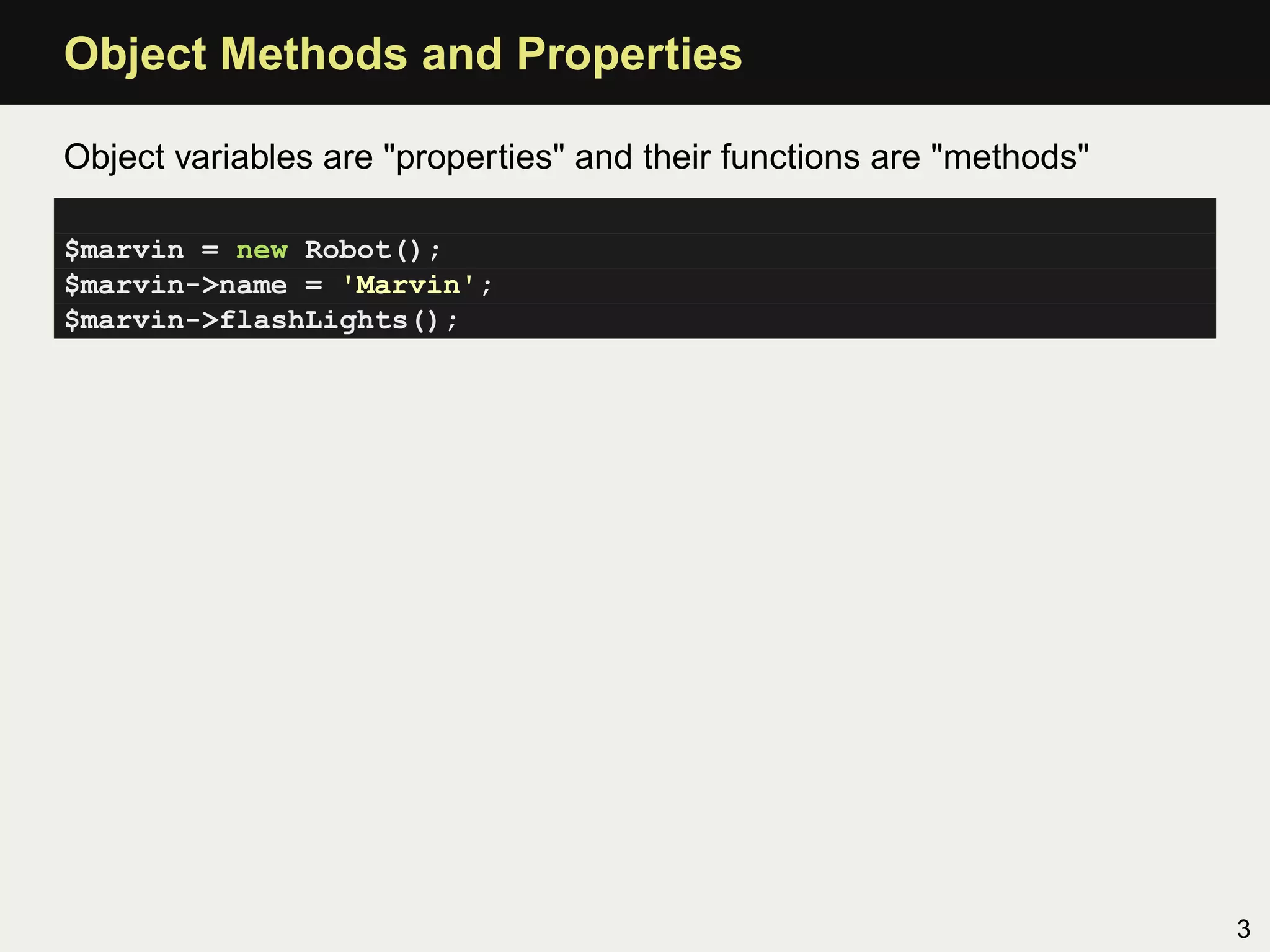
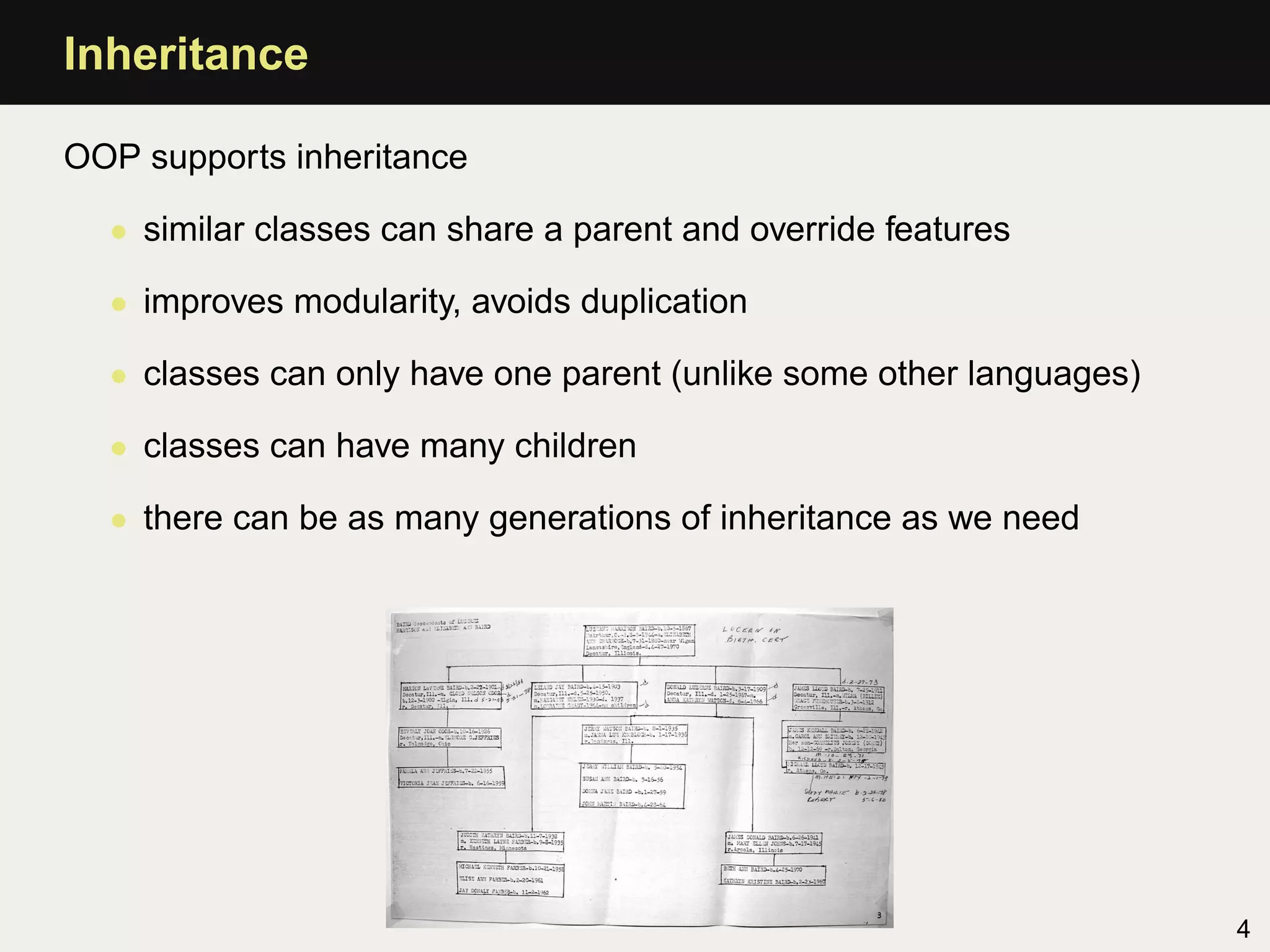
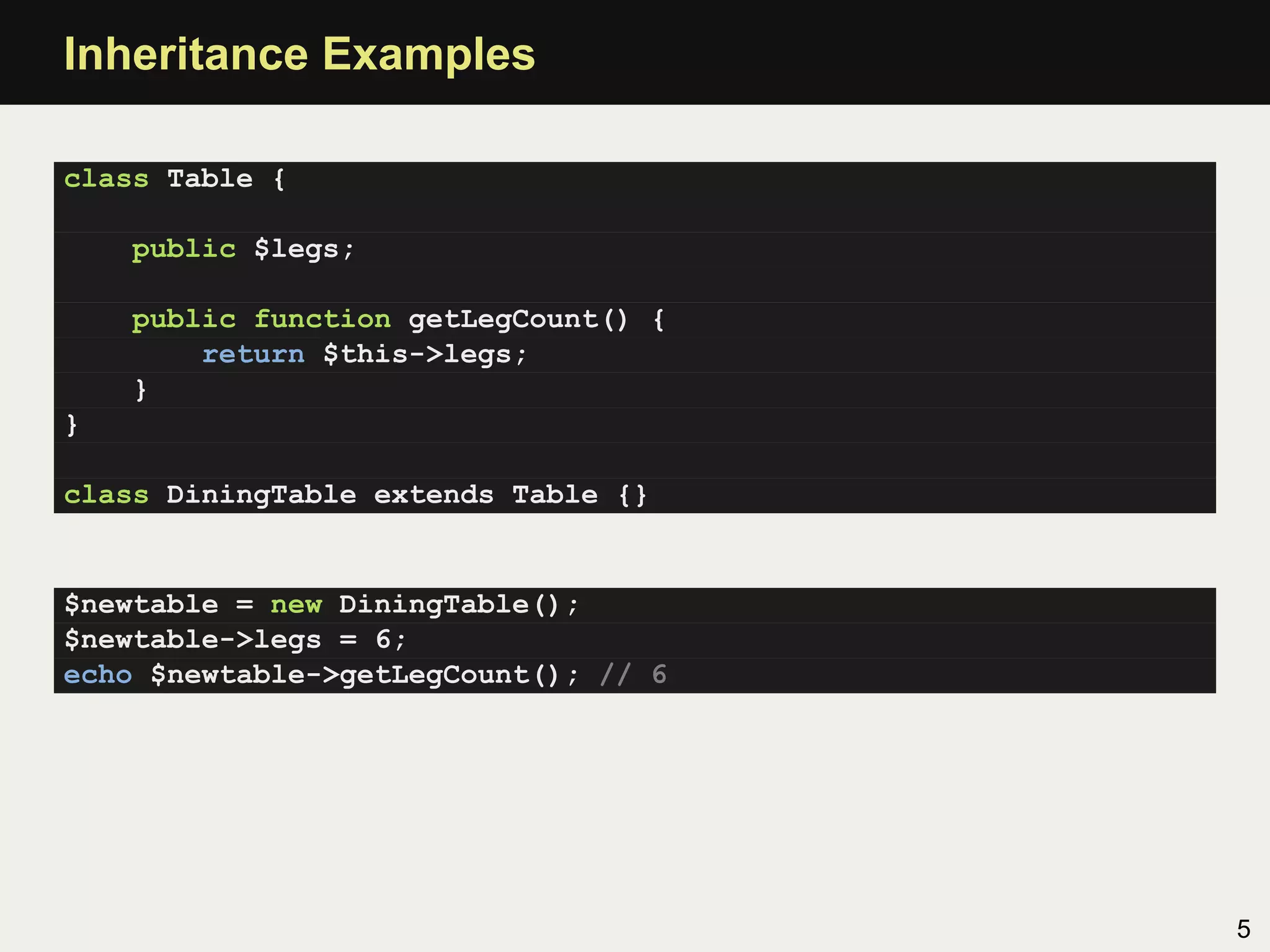
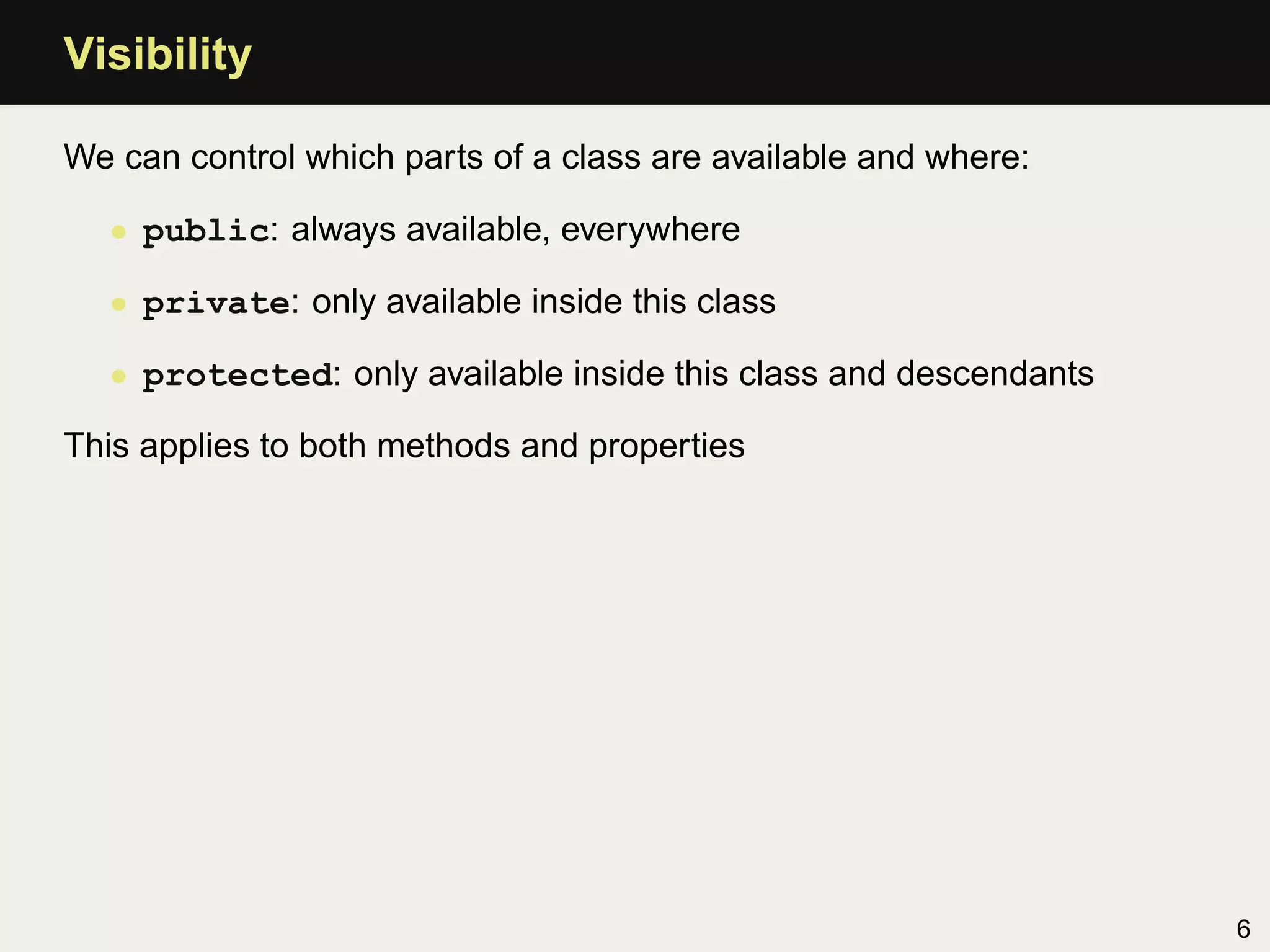
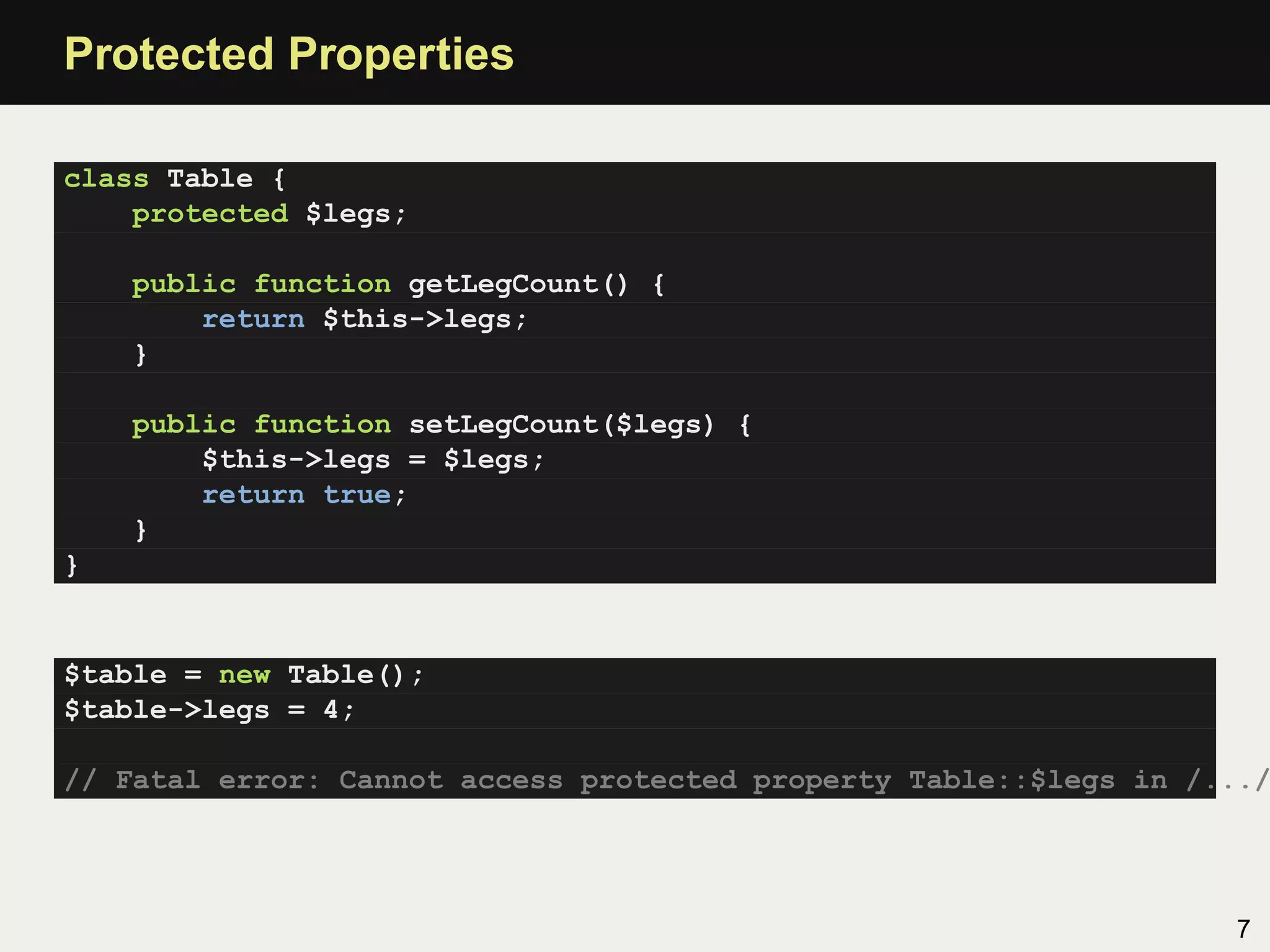



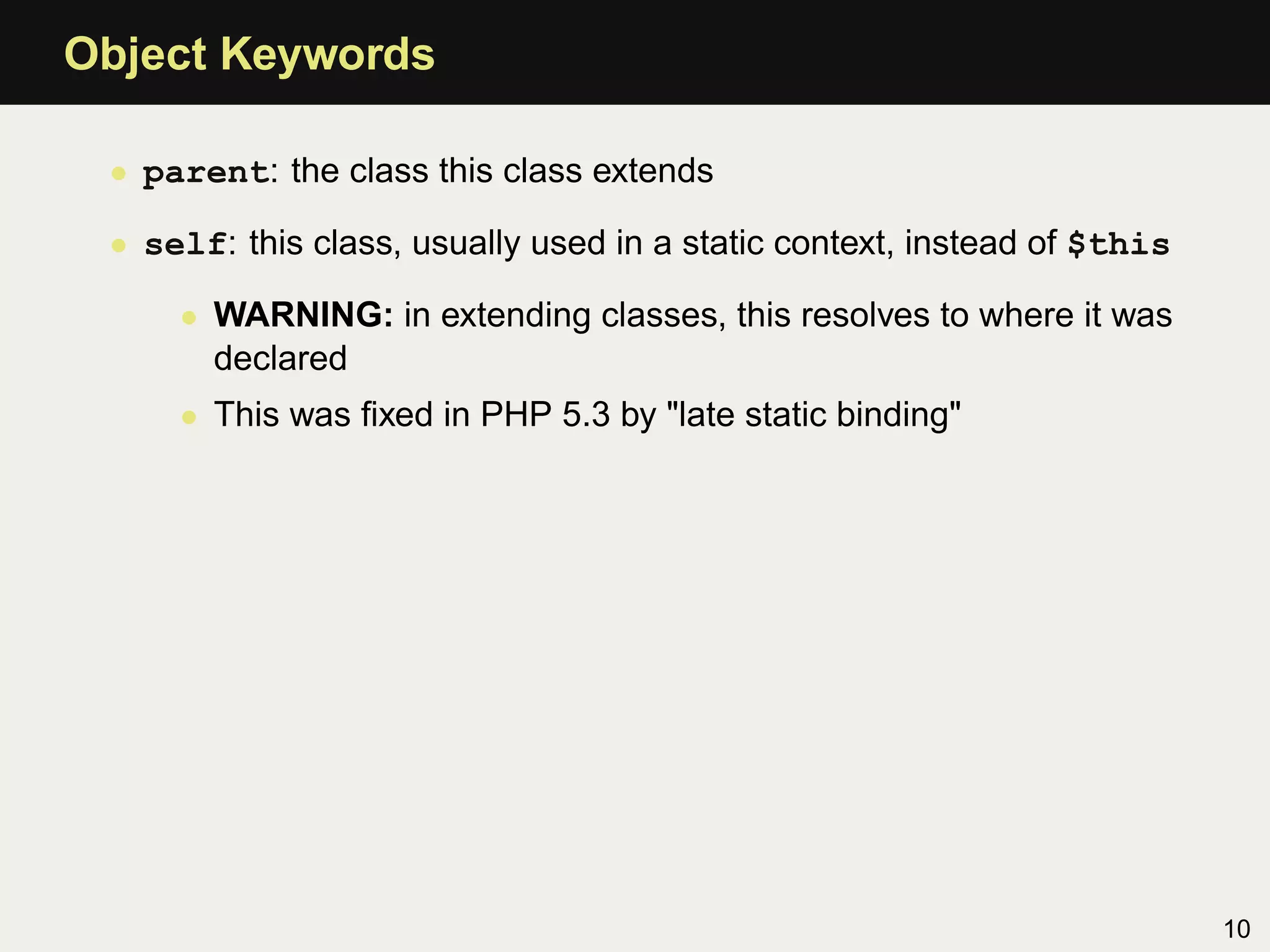
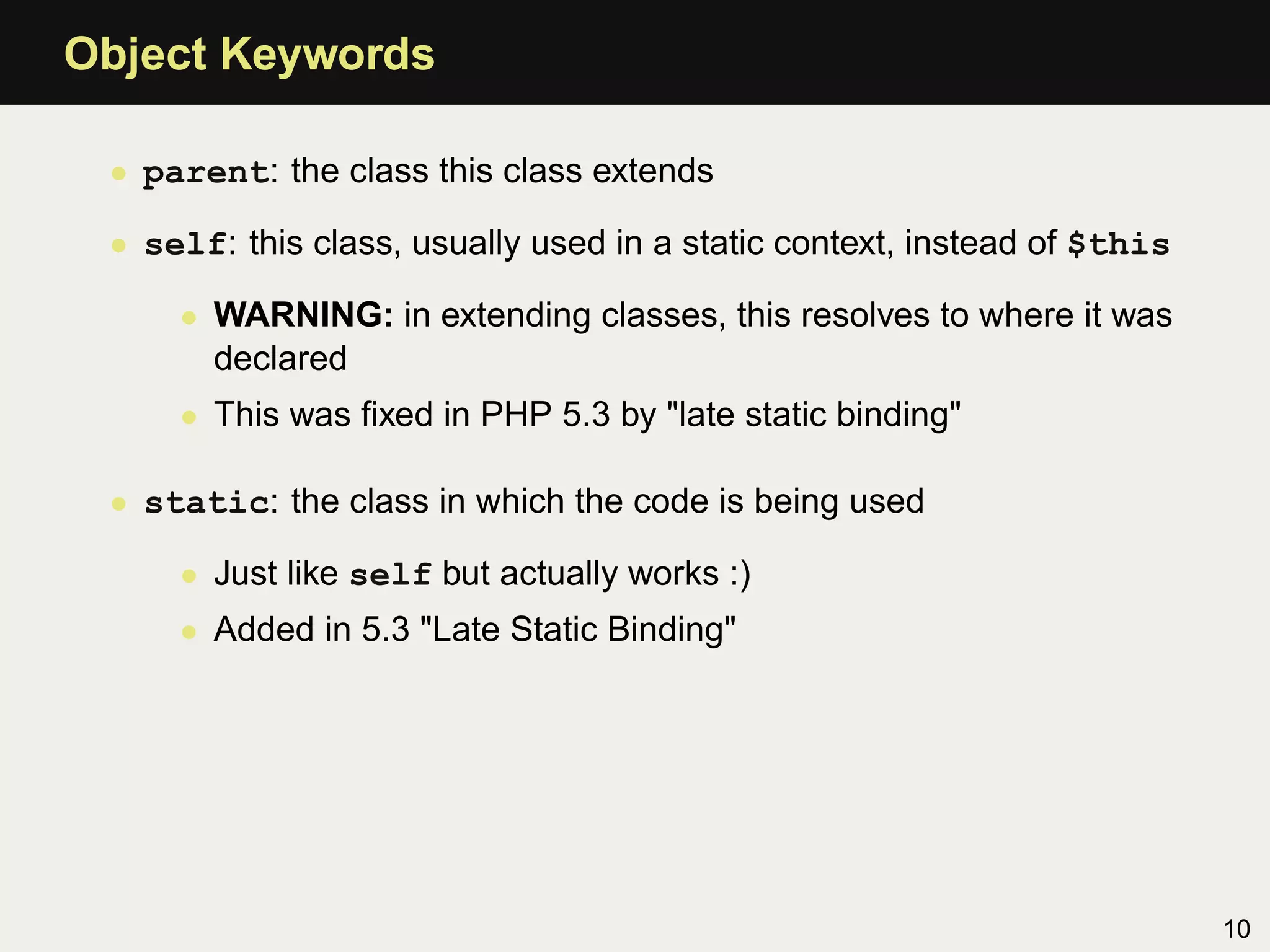
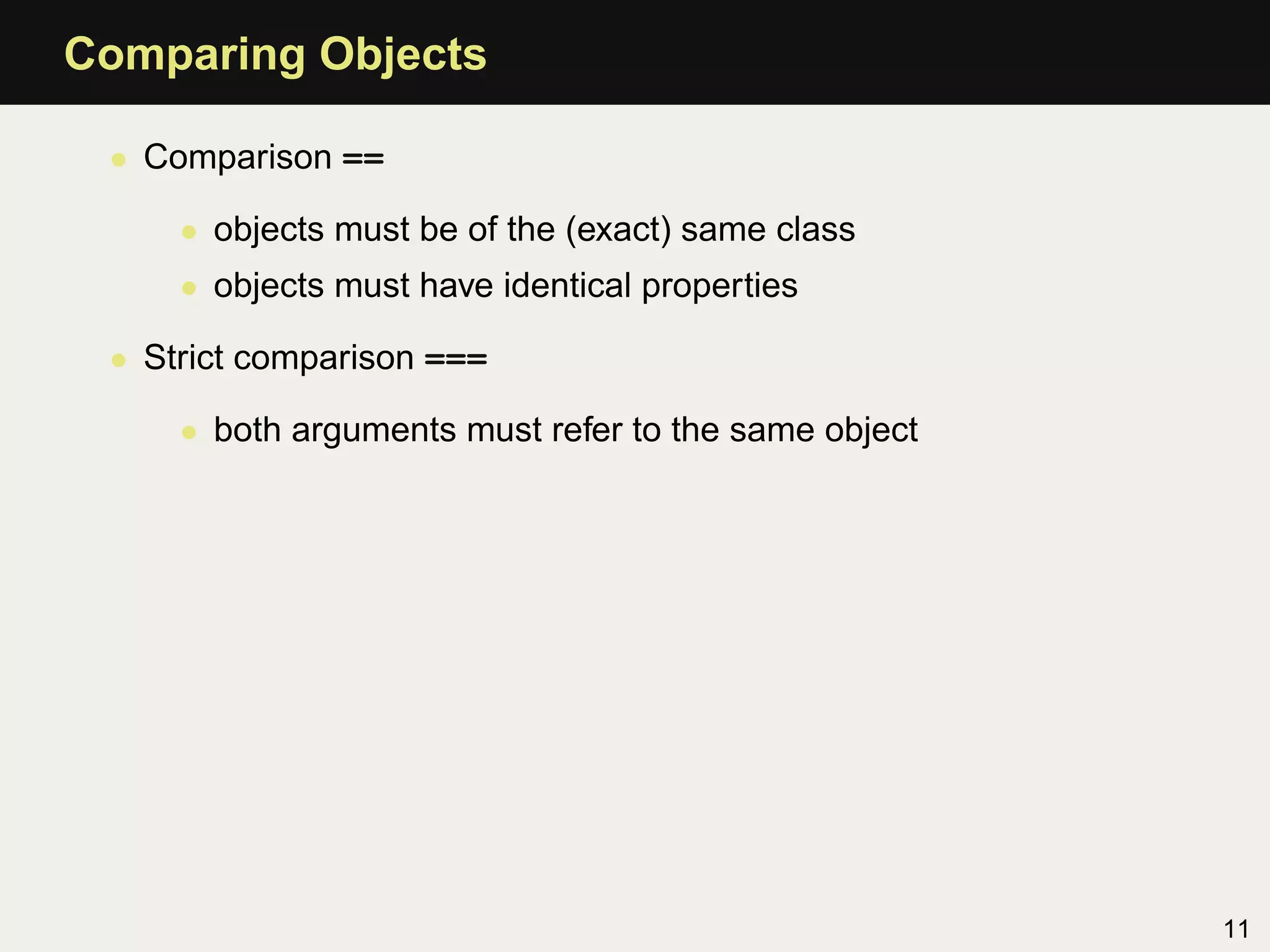
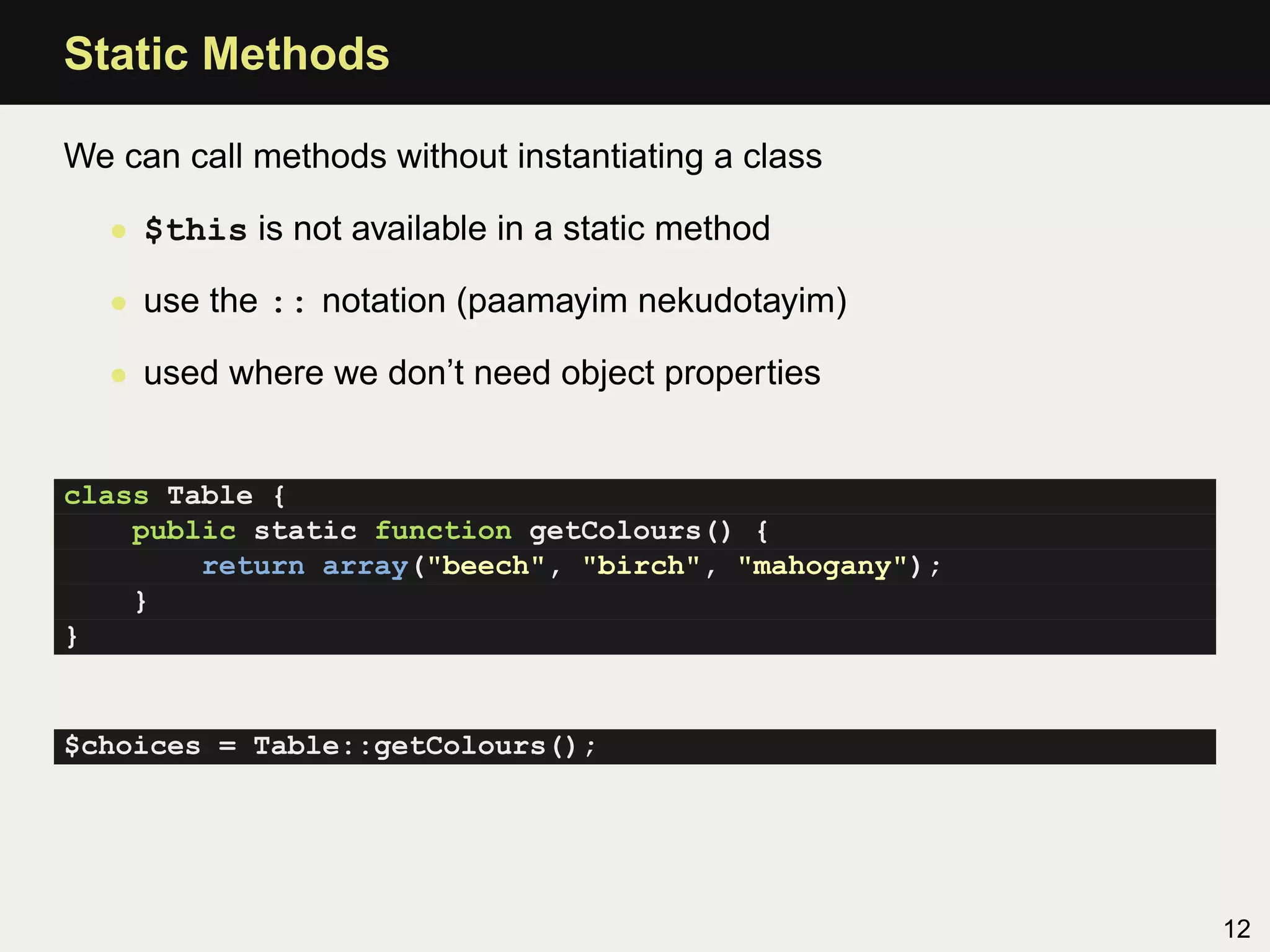

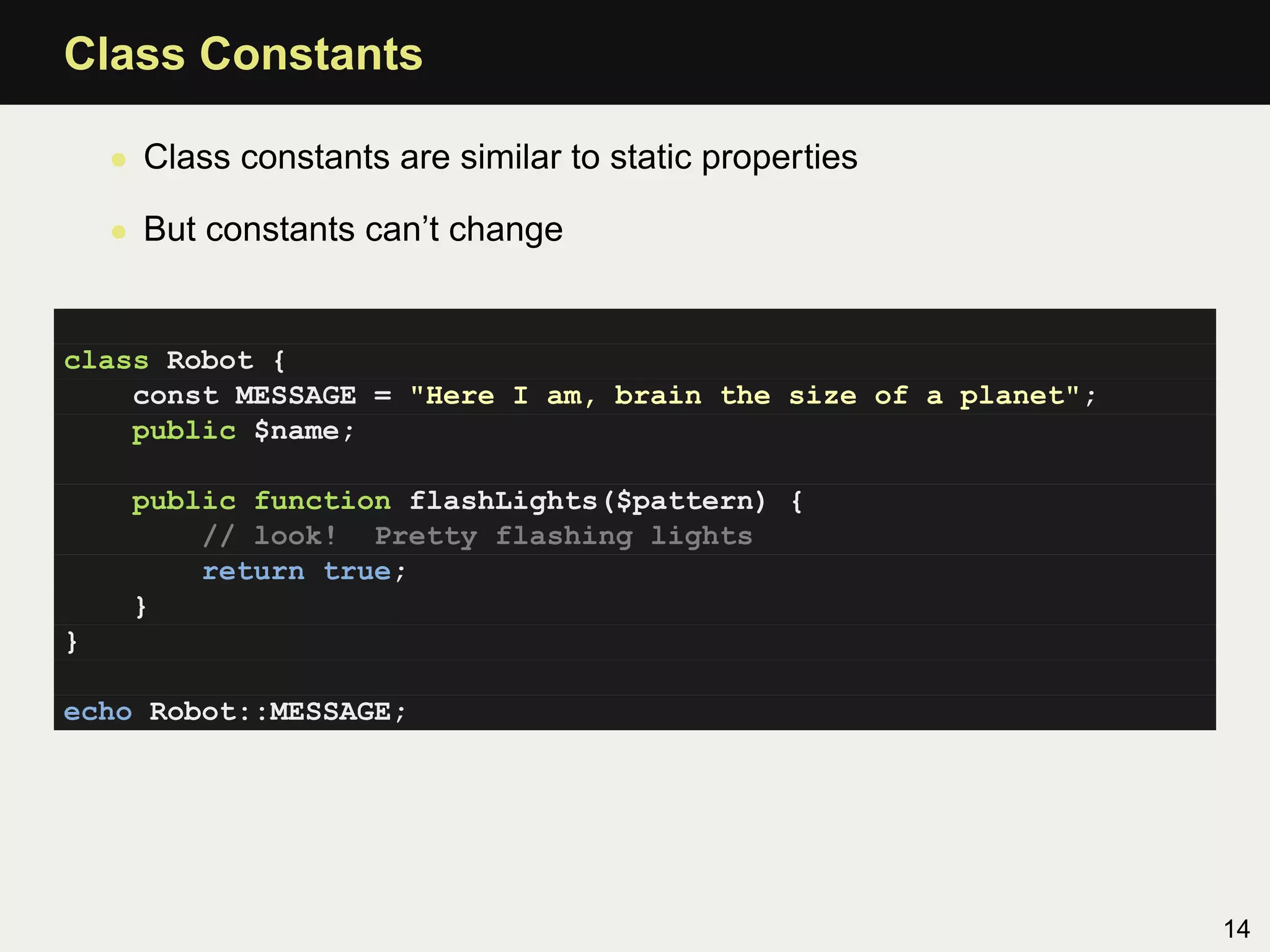
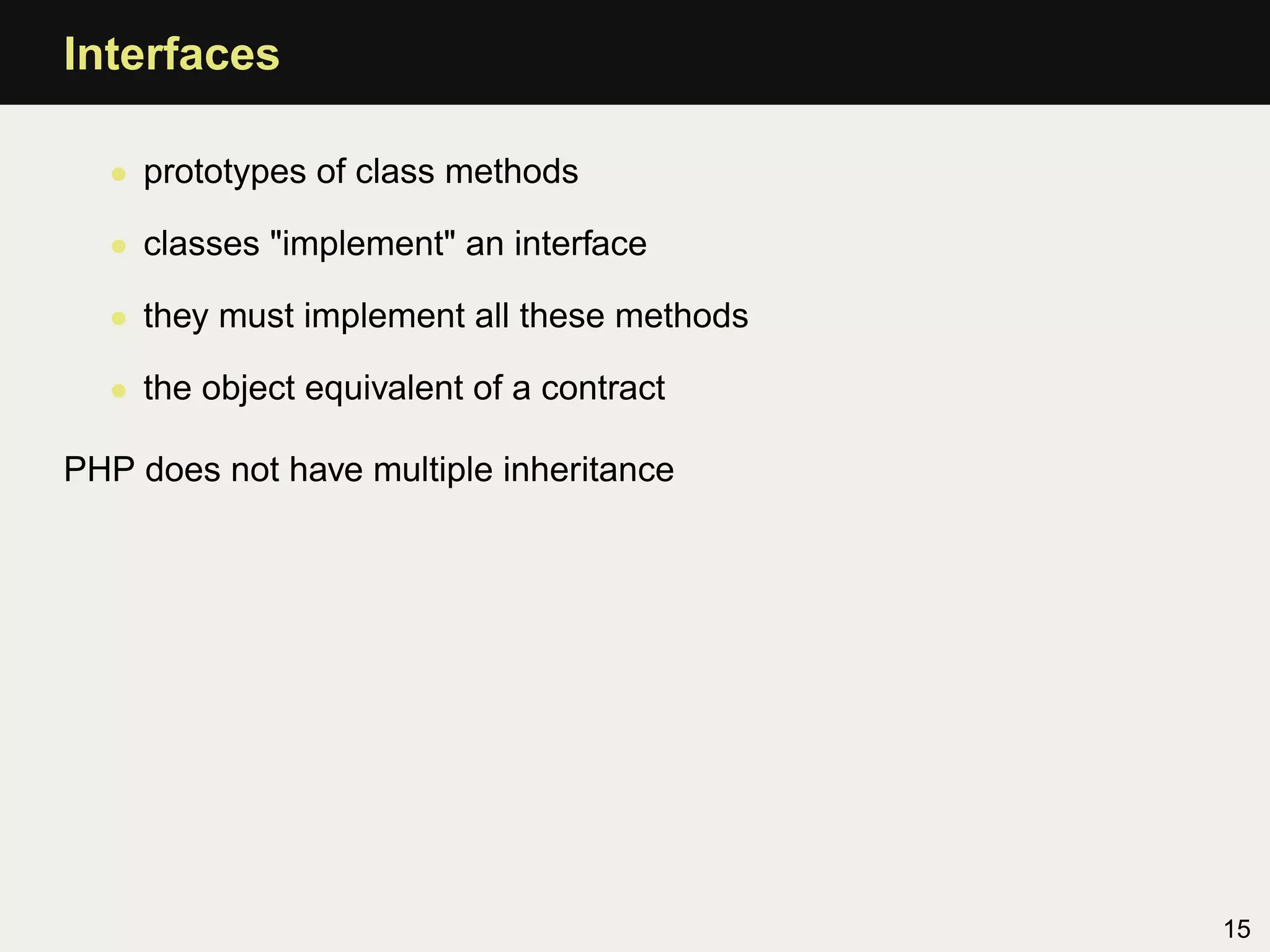

![Autoloading
Use include and require to bring class code into our applications.
We can also use autoloading if our classes are predictably named.
function __autoload($classname) {
if(preg_match('/[a-zA-Z]+Controller$/',$classname)) {
include('../controllers/' . $classname . '.php');
return true;
} elseif(preg_match('/[a-zA-Z]+Model$/',$classname)) {
include('../models/' . $classname . '.php');
return true;
} elseif(preg_match('/[a-zA-Z]+View$/',$classname)) {
include('../views/' . $classname . '.php');
return true;
}
}
No need to include/require if you have autoloading
17](https://image.slidesharecdn.com/all-110517124055-phpapp02/75/Zend-Certification-Preparation-Tutorial-115-2048.jpg)
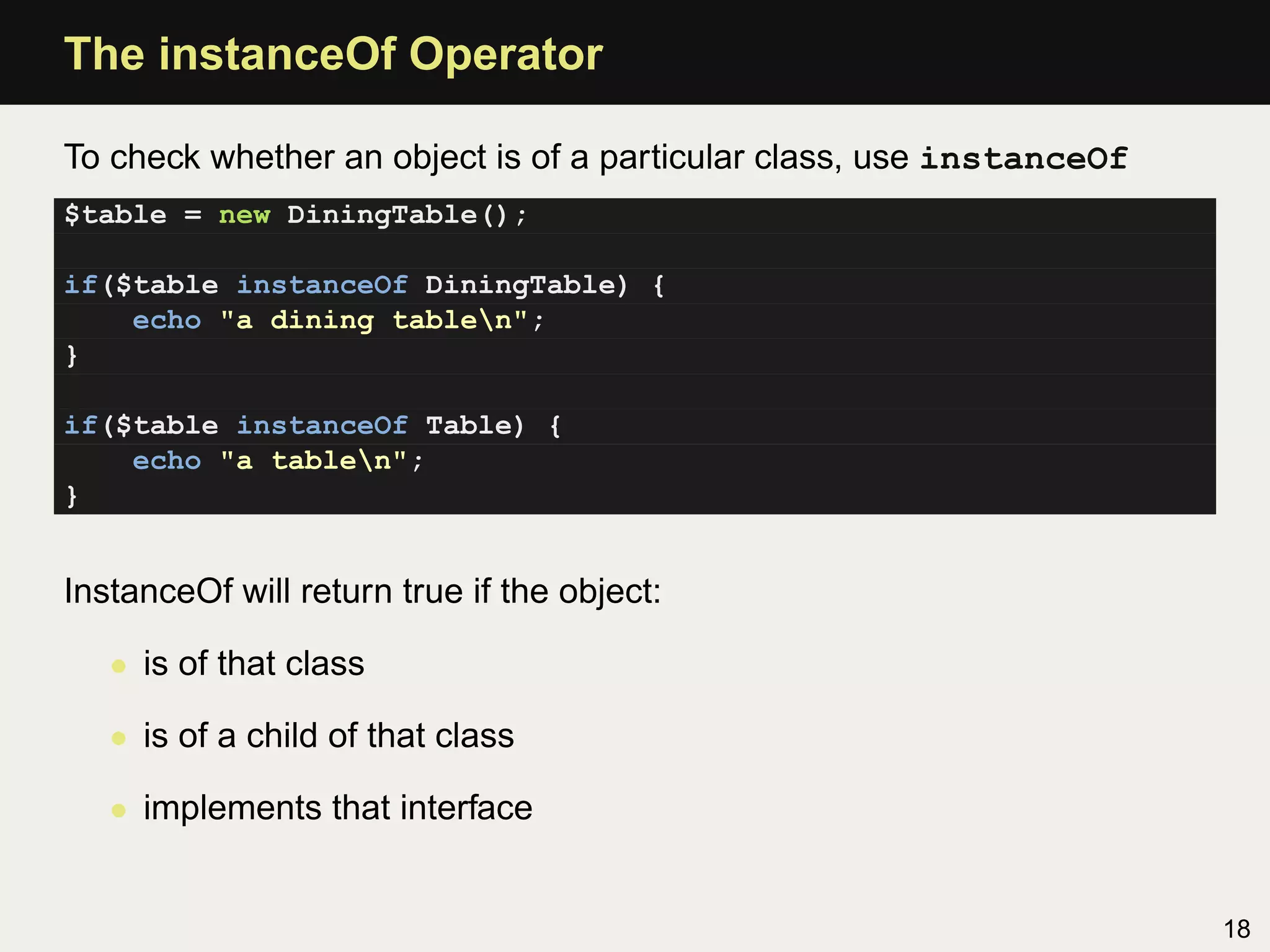
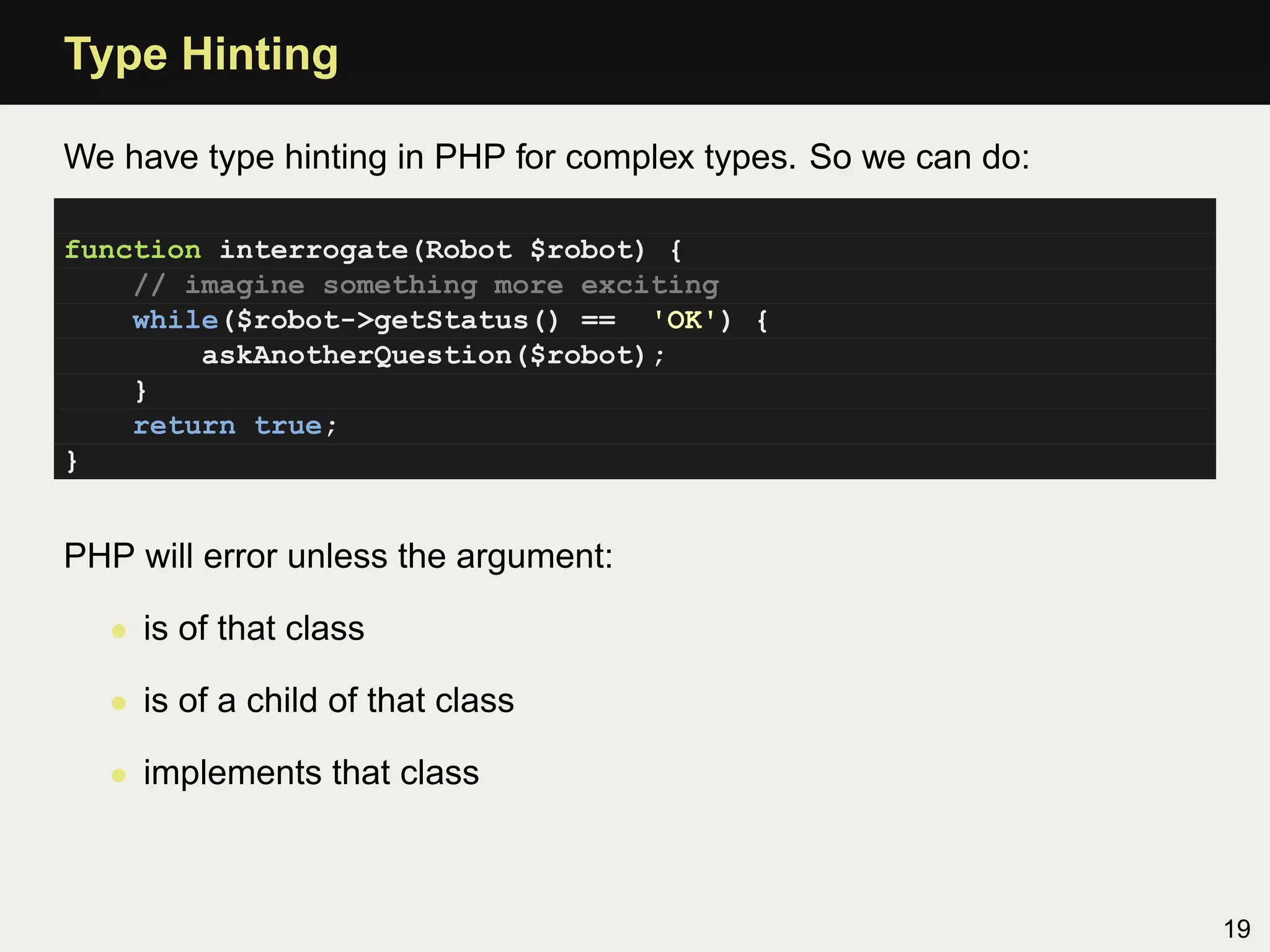

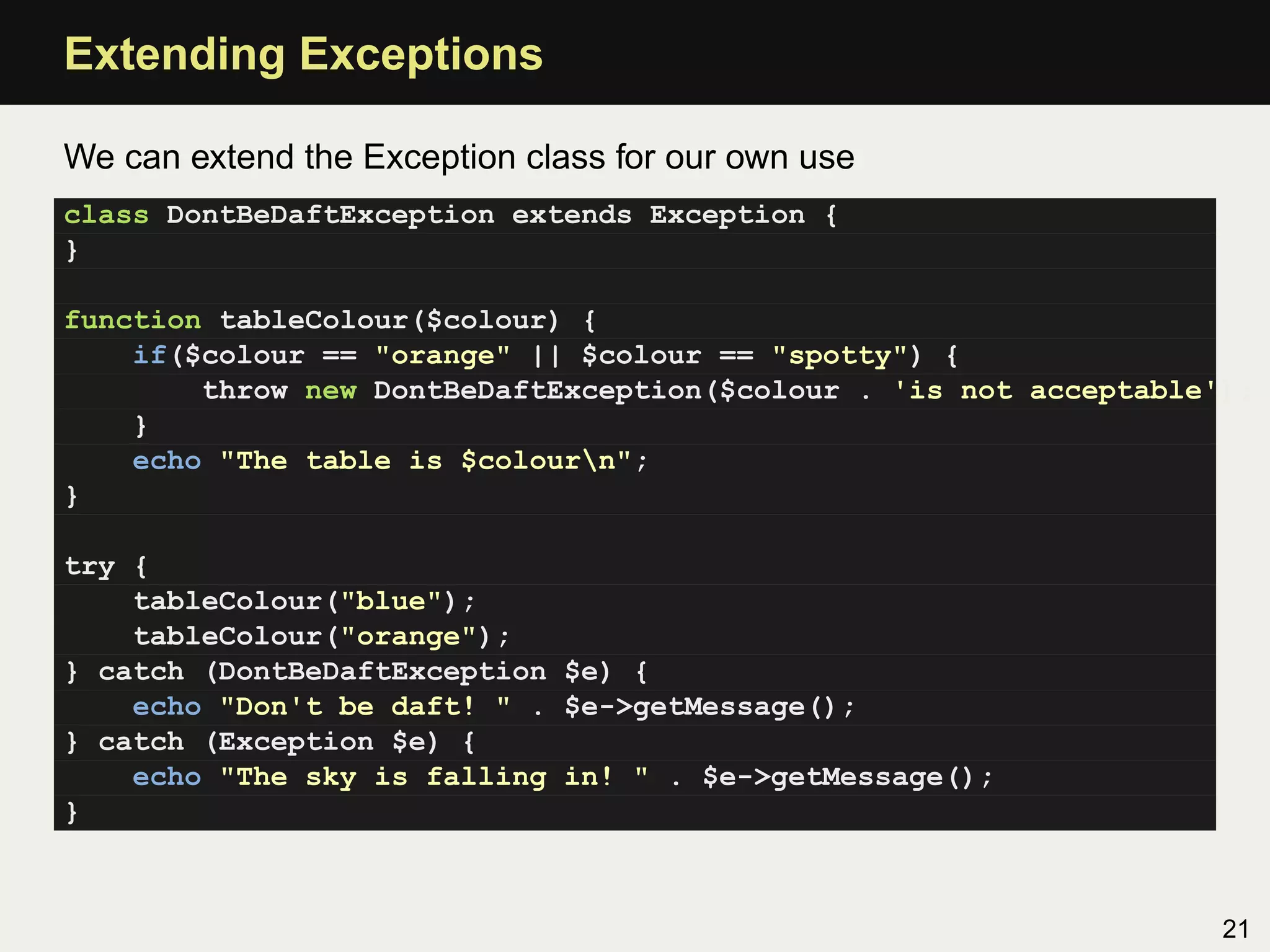
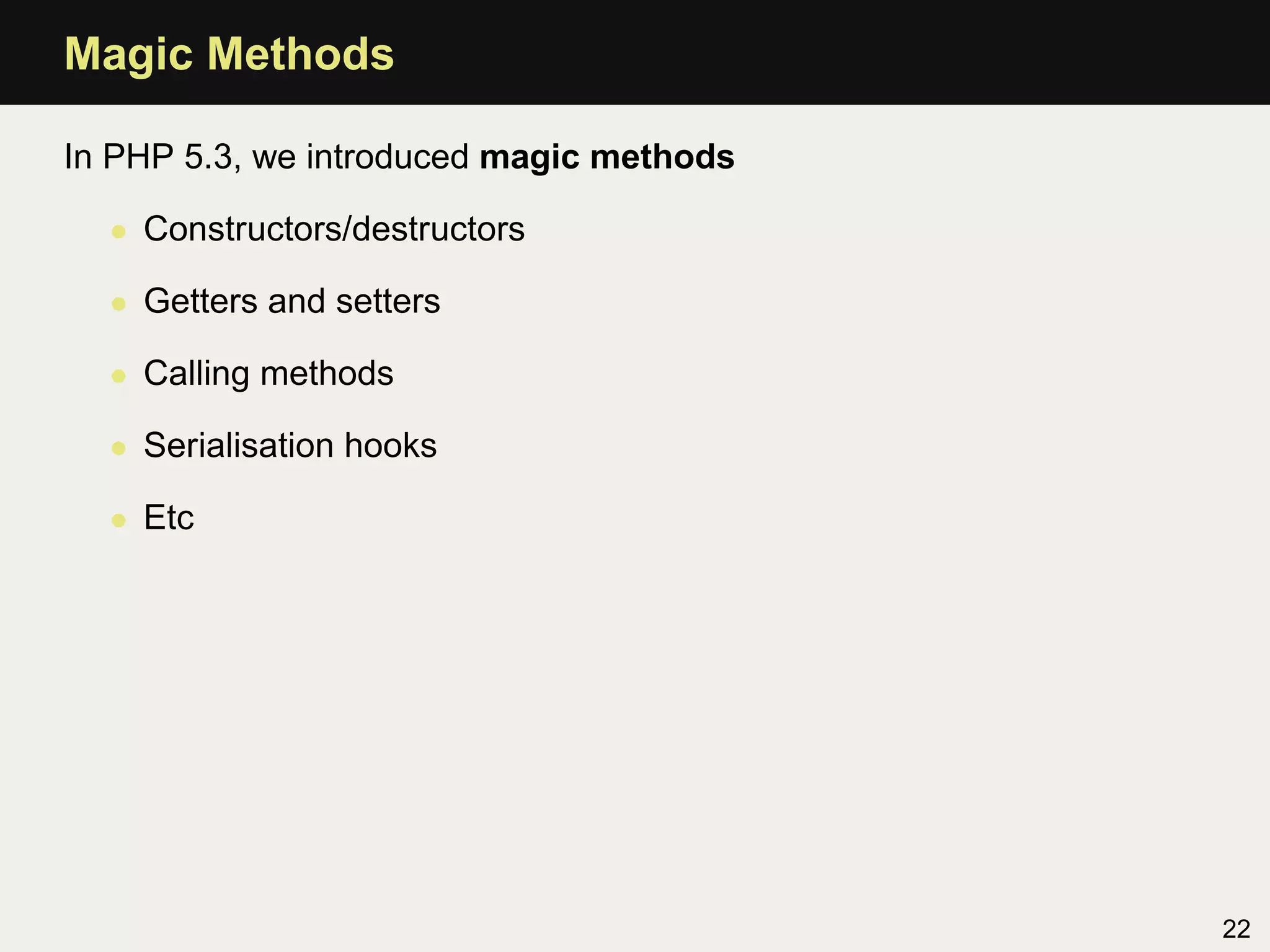
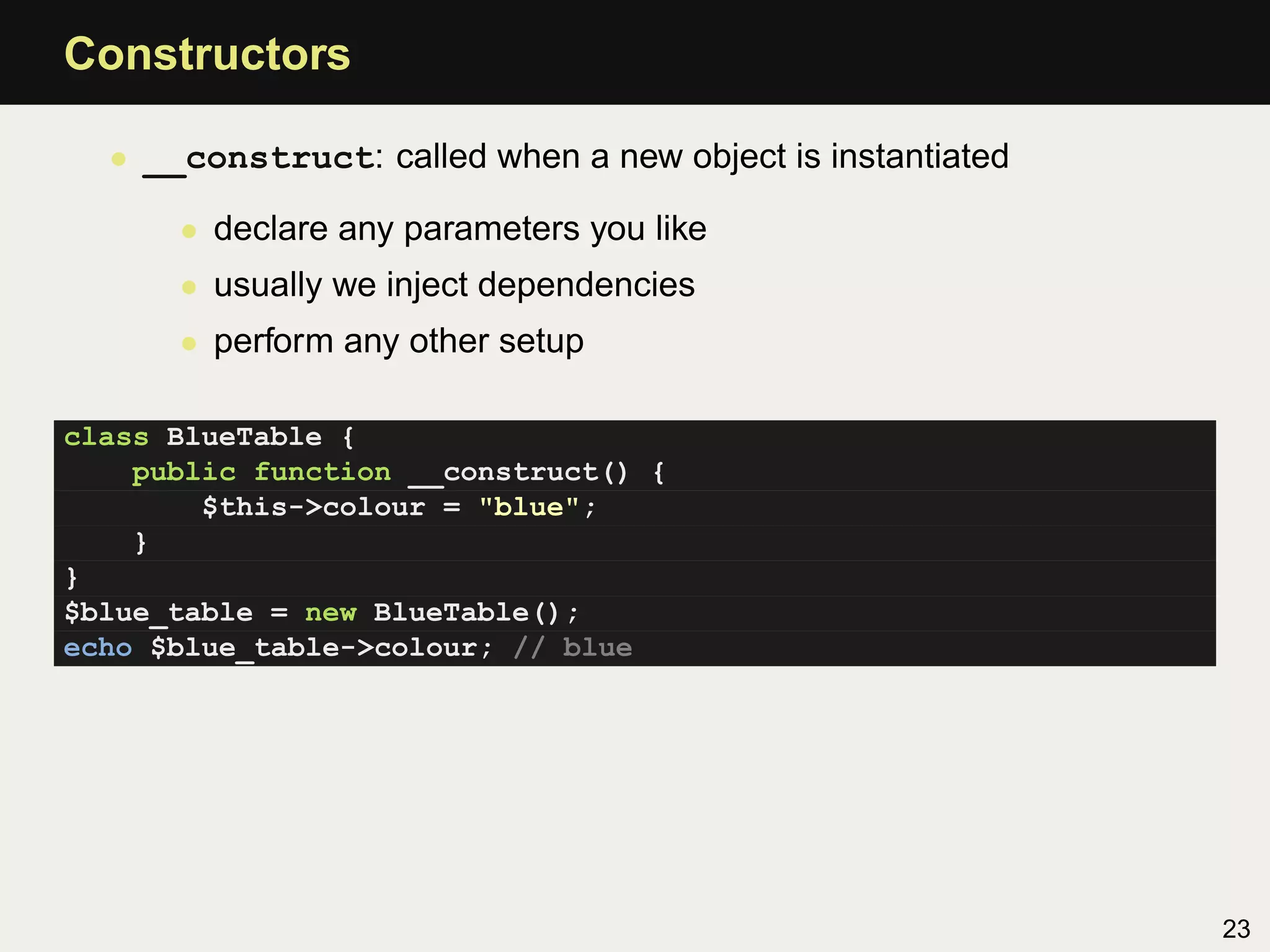
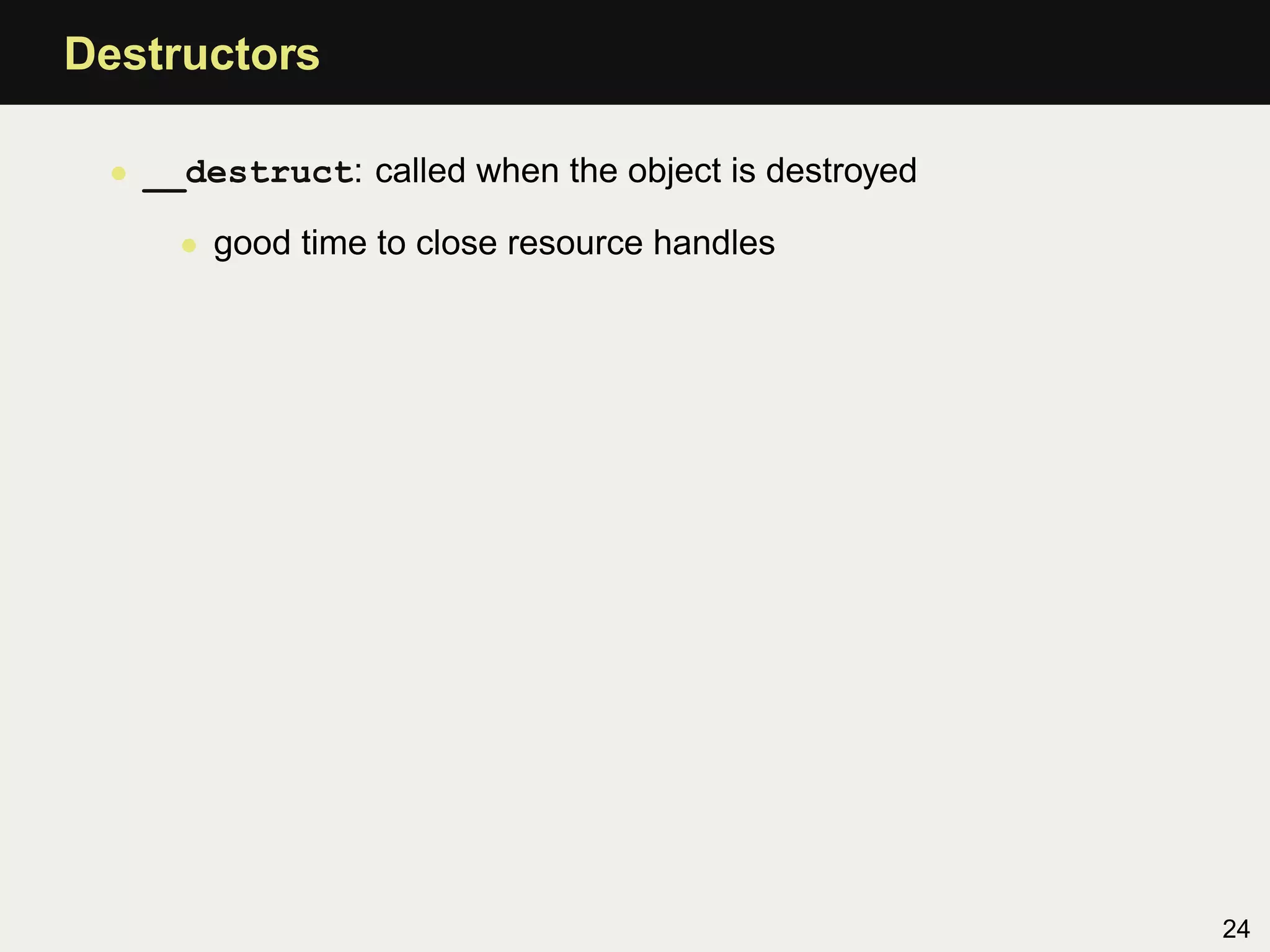
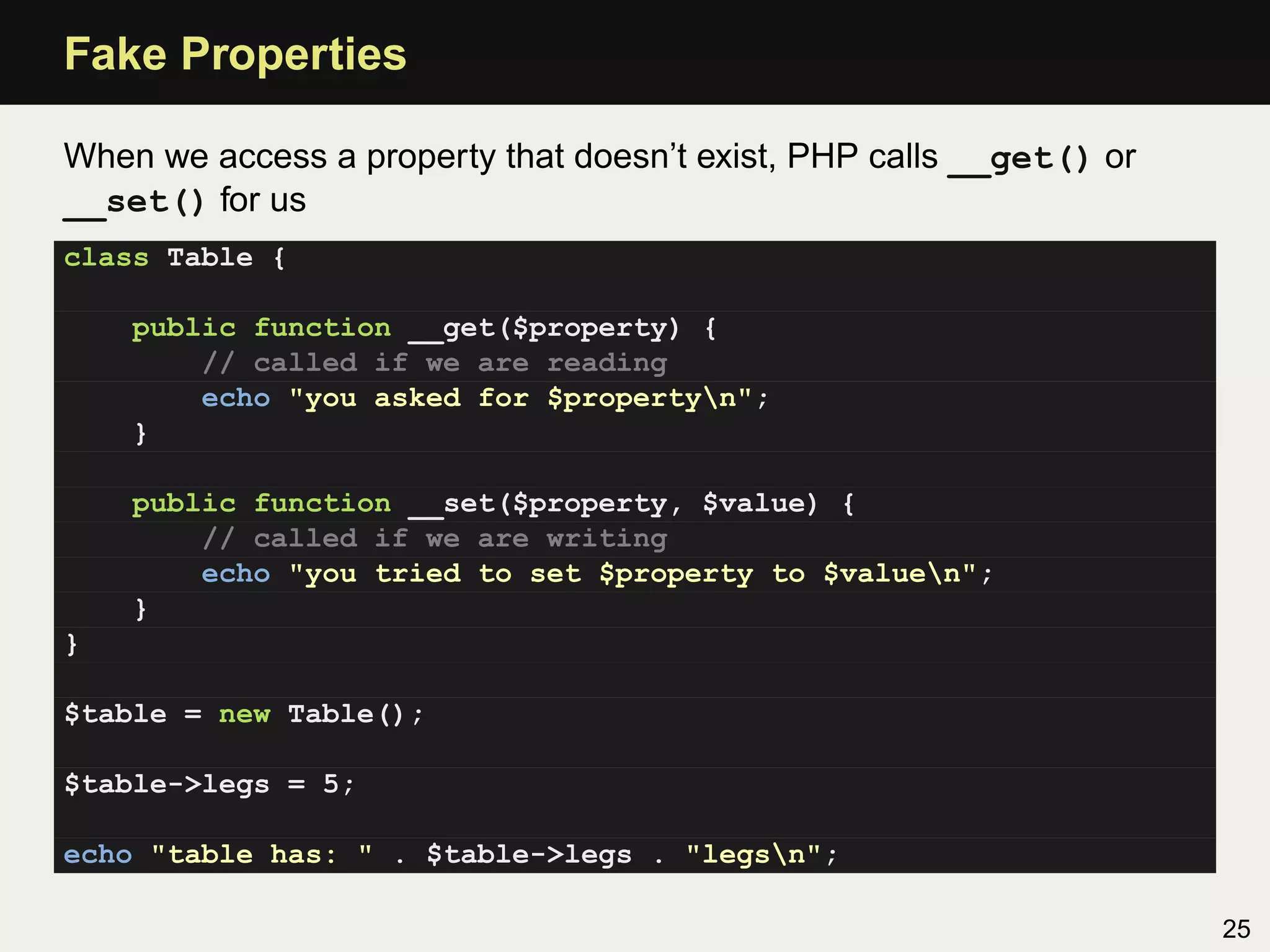
![Fake Methods
PHP calls __call when we call a method that doesn’t exist
class Table {
public function shift($x, $y) {
// the table moves
echo "shift table by $x and $yn";
}
public function __call($method, $arguments) {
// look out for calls to move(), these should be shift()
if($method == "move") {
return $this->shift($arguments[0], $arguments[1]);
}
}
}
$table = new Table();
$table->shift(3,5); // shift table by 3 and 5
$table->move(4,9); // shift table by 4 and 9
There is an equivalent function for static calls, __callStatic()
26](https://image.slidesharecdn.com/all-110517124055-phpapp02/75/Zend-Certification-Preparation-Tutorial-124-2048.jpg)
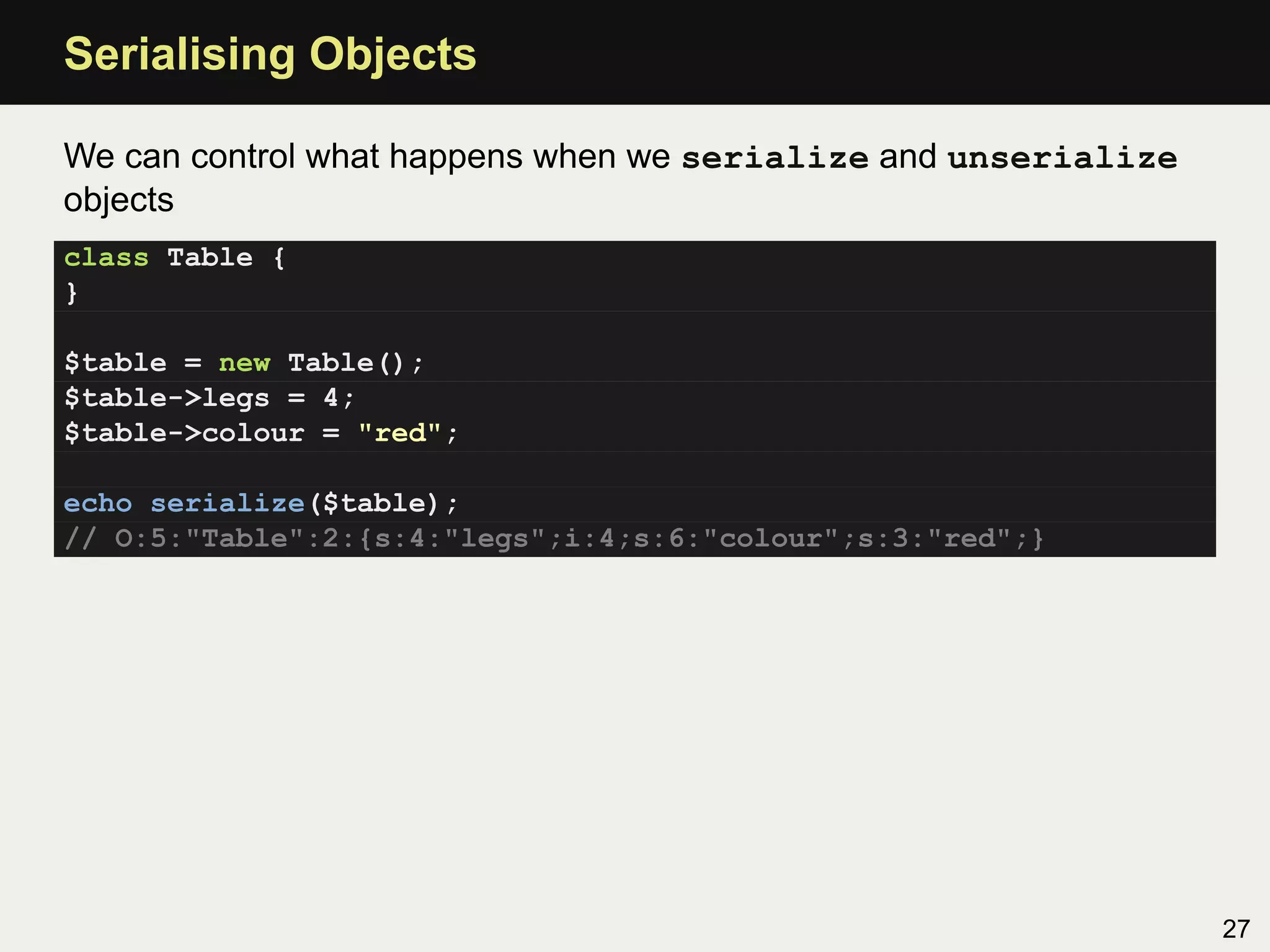
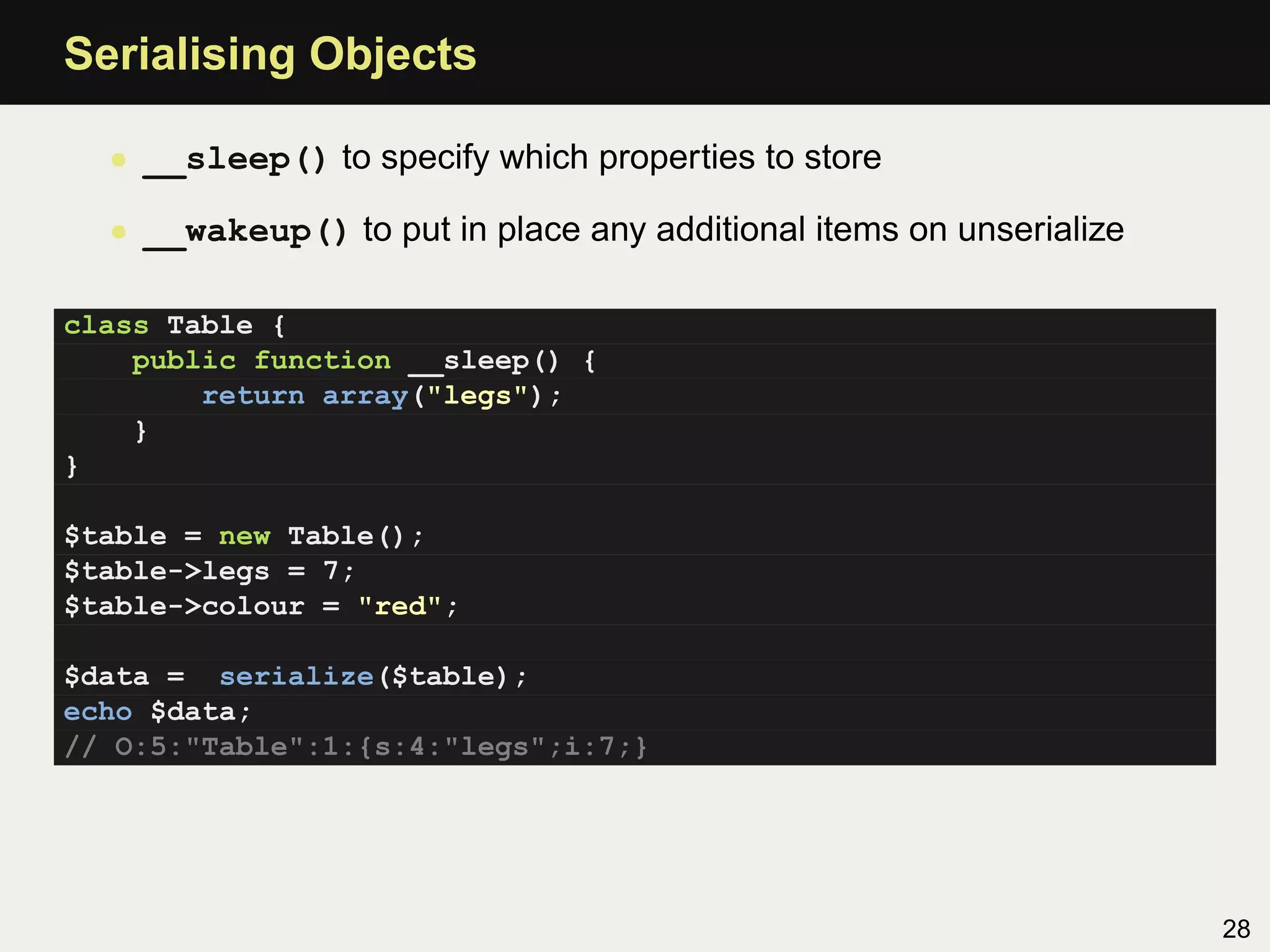
![Serialising Objects
• __sleep() to specify which properties to store
• __wakeup() to put in place any additional items on unserialize
class Table {
public function __wakeup() {
$this->colour = "wood";
}
}
echo $data;
$other_table = unserialize($data);
print_r($other_table);
/* Table Object
(
[legs] => 7
[colour] => wood
) */
29](https://image.slidesharecdn.com/all-110517124055-phpapp02/75/Zend-Certification-Preparation-Tutorial-127-2048.jpg)
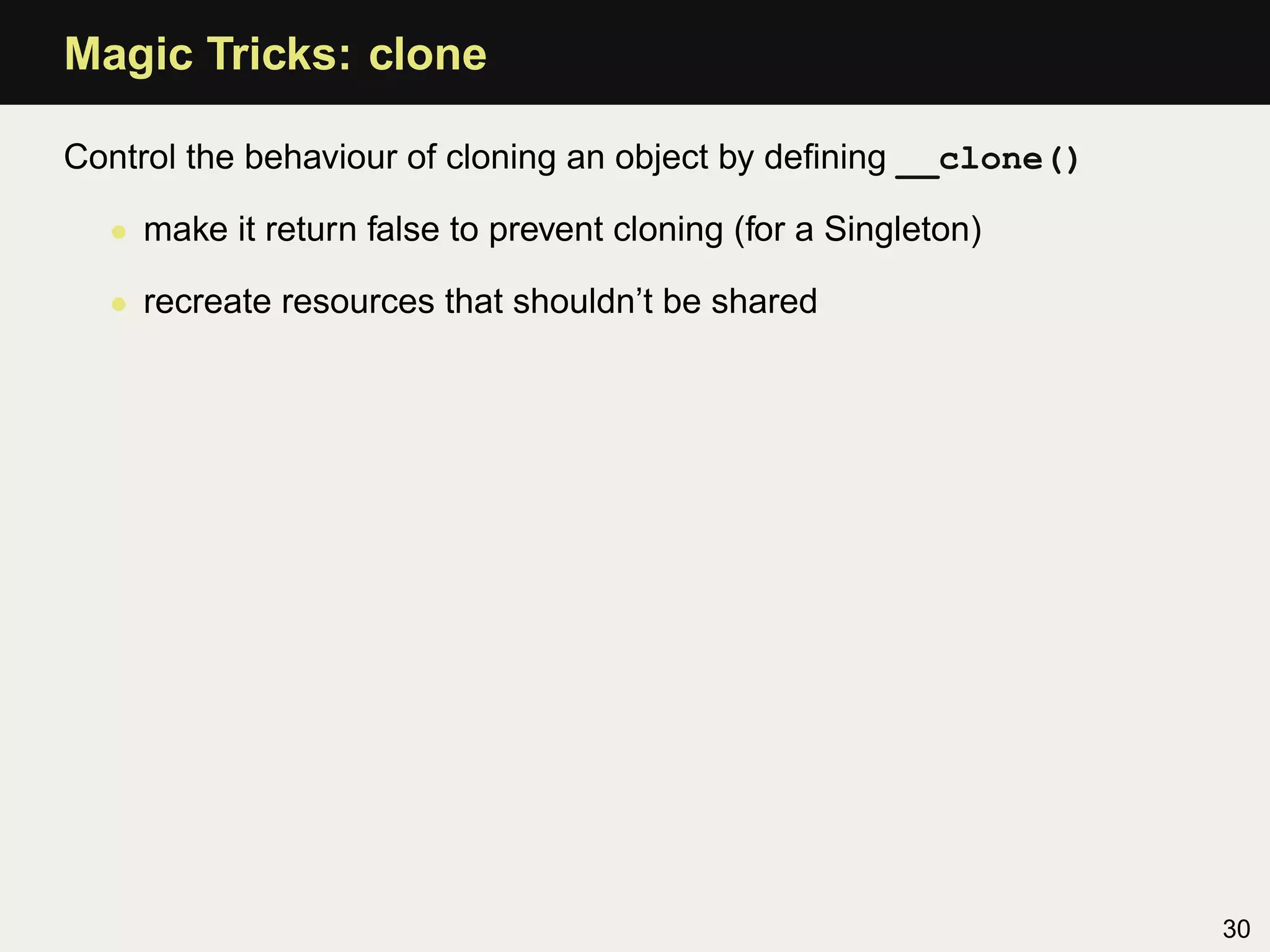

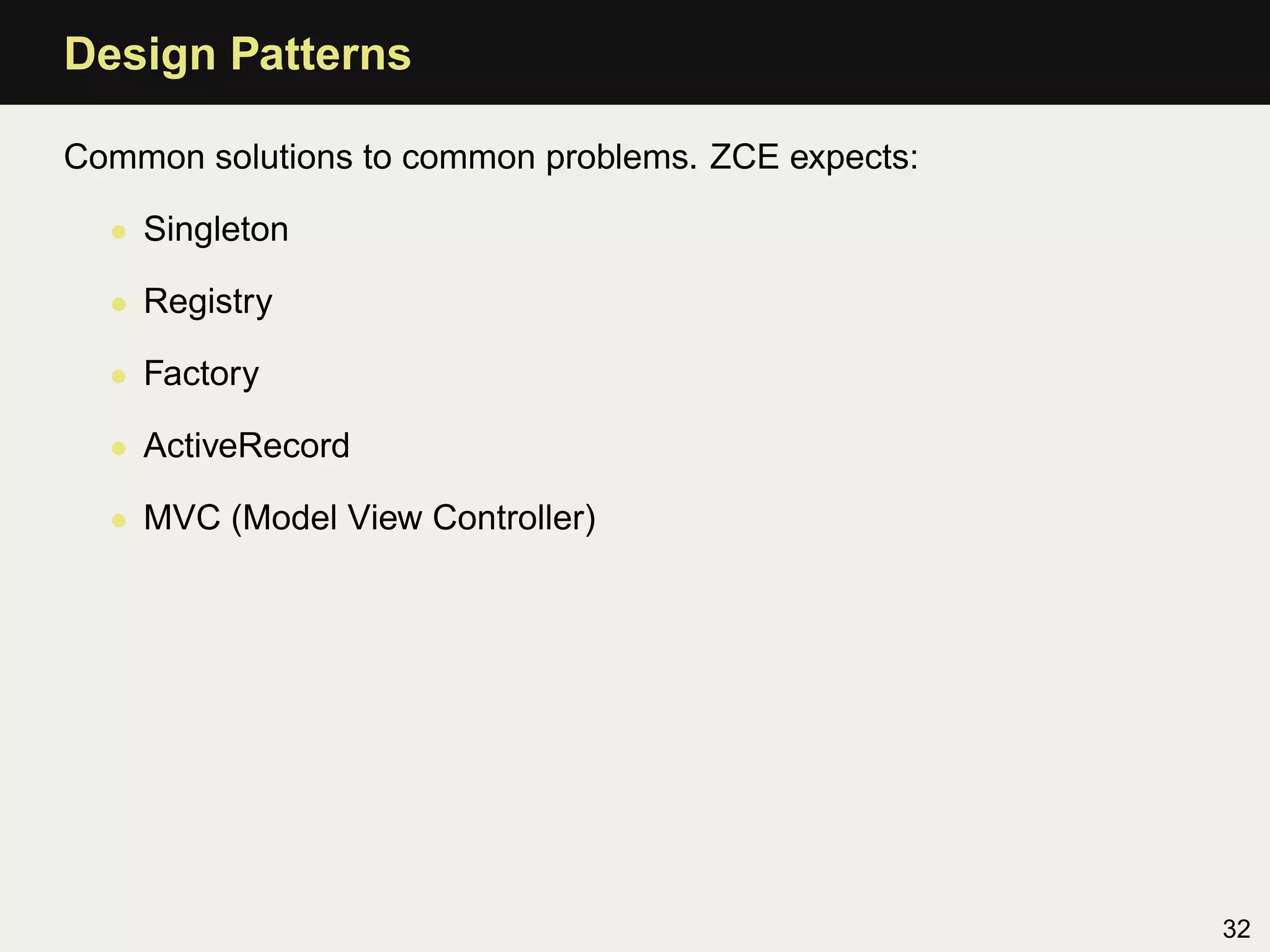
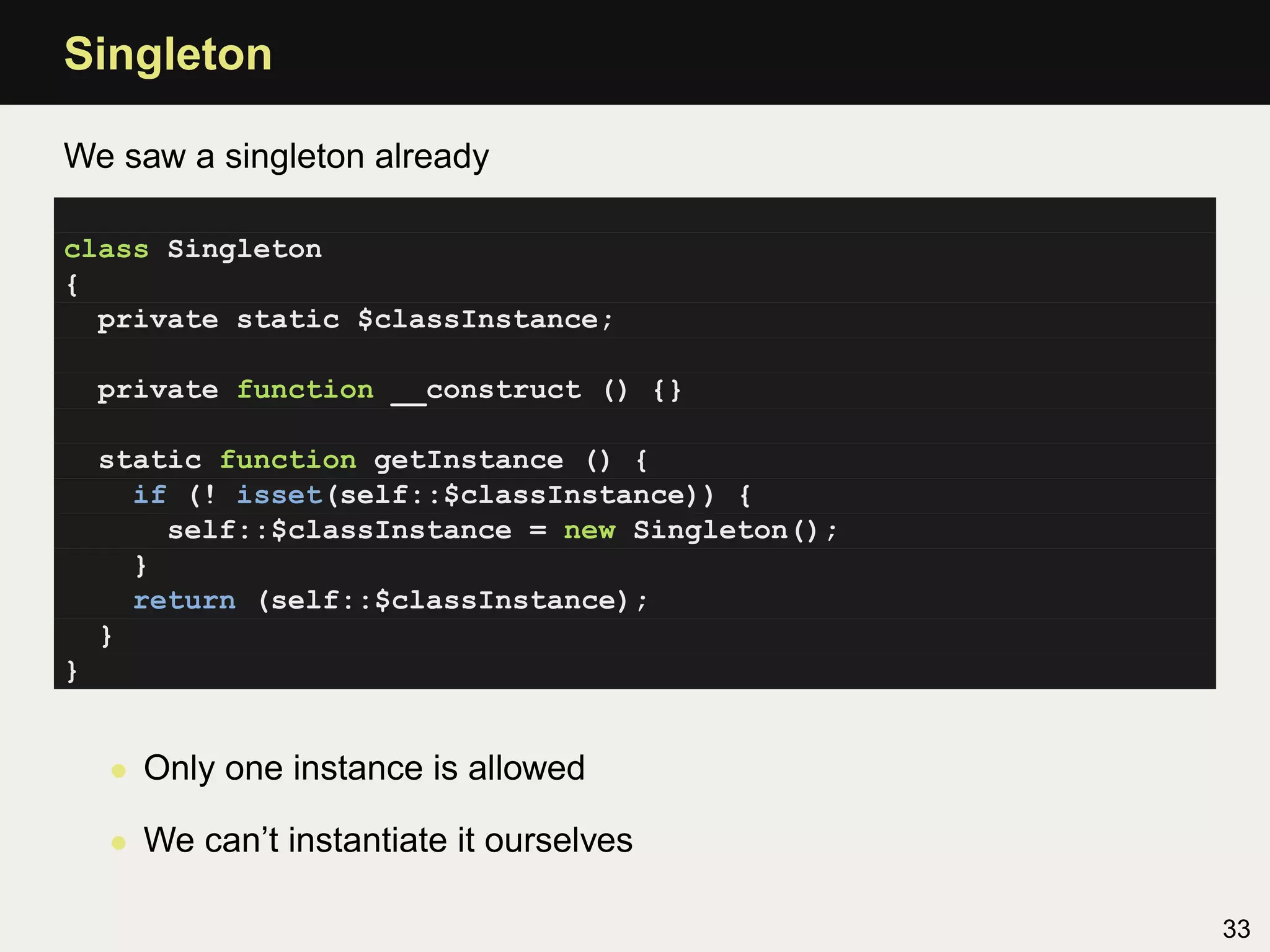
![Registry
class Registry
{
private static $storage;
private function __construct () {}
public function set($key, $value) {
self::$storage[$key] = $value;
}
public function get($key) {
if(array_key_exists($key, self::$storage)) {
return self::$storage[$key];
}
return false;
}
}
Registry::set('shinyThing', new StdClass());
// later ...
$shiny = Registry::get('shinyThing');
34](https://image.slidesharecdn.com/all-110517124055-phpapp02/75/Zend-Certification-Preparation-Tutorial-132-2048.jpg)
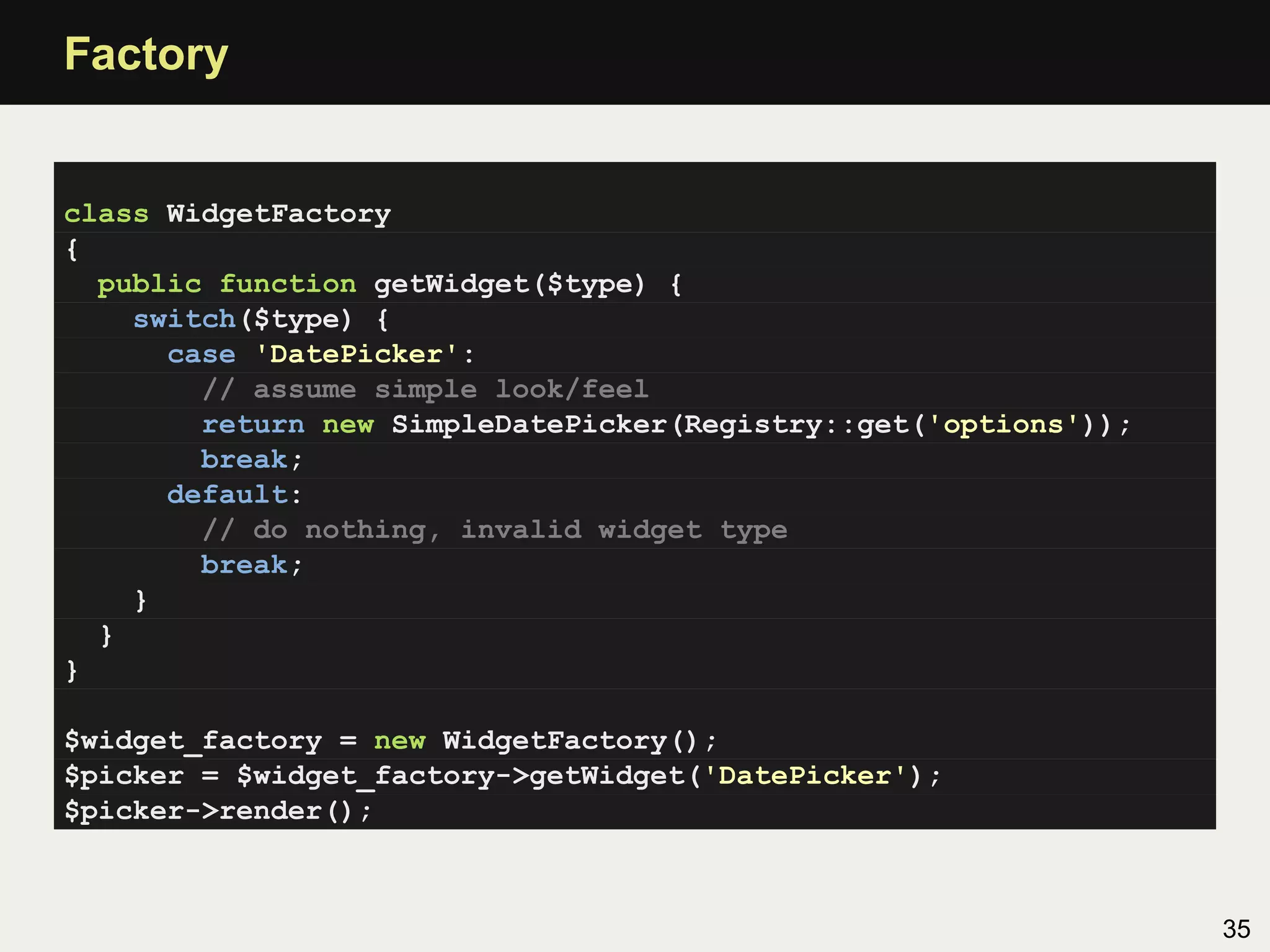
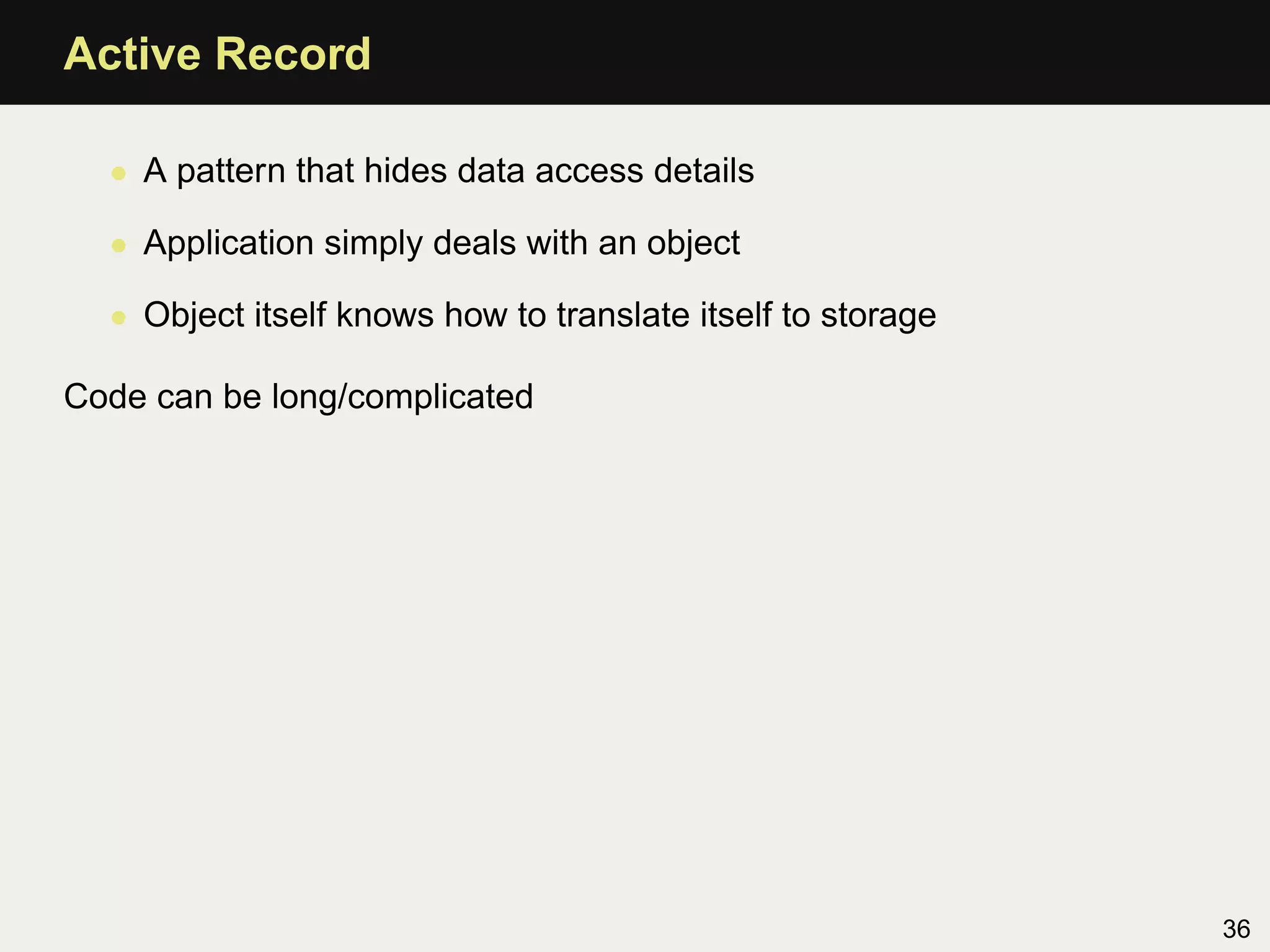
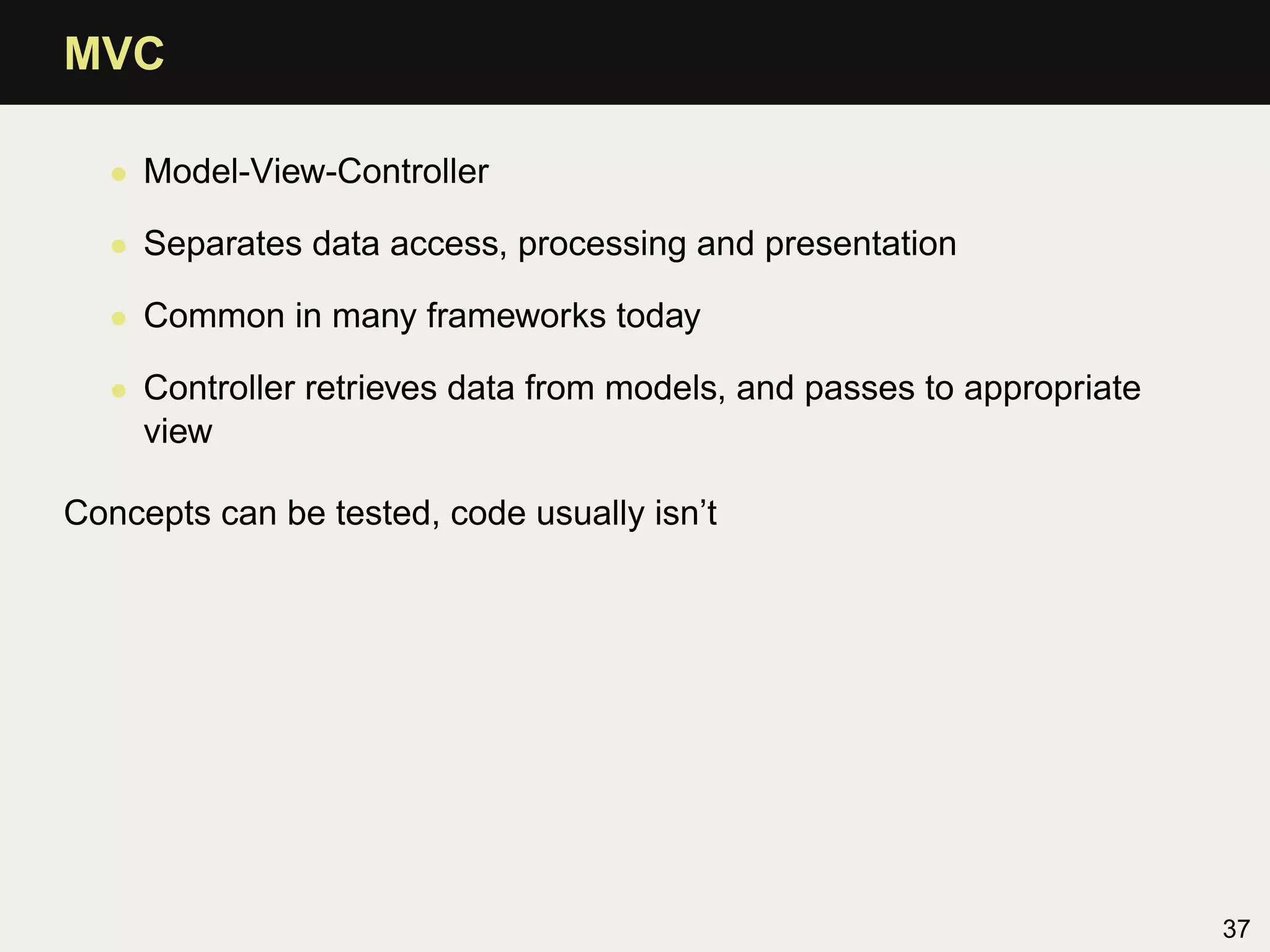
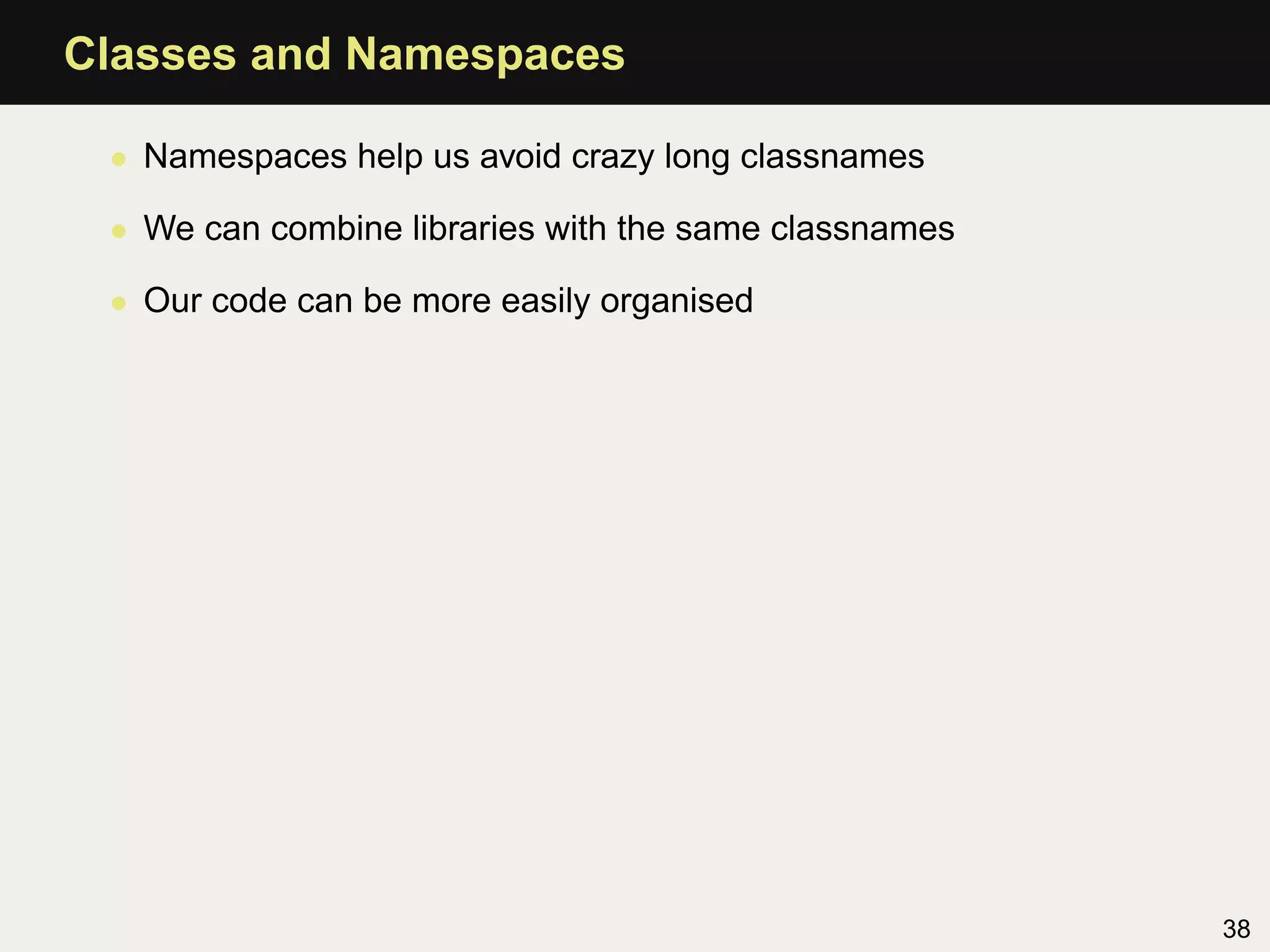
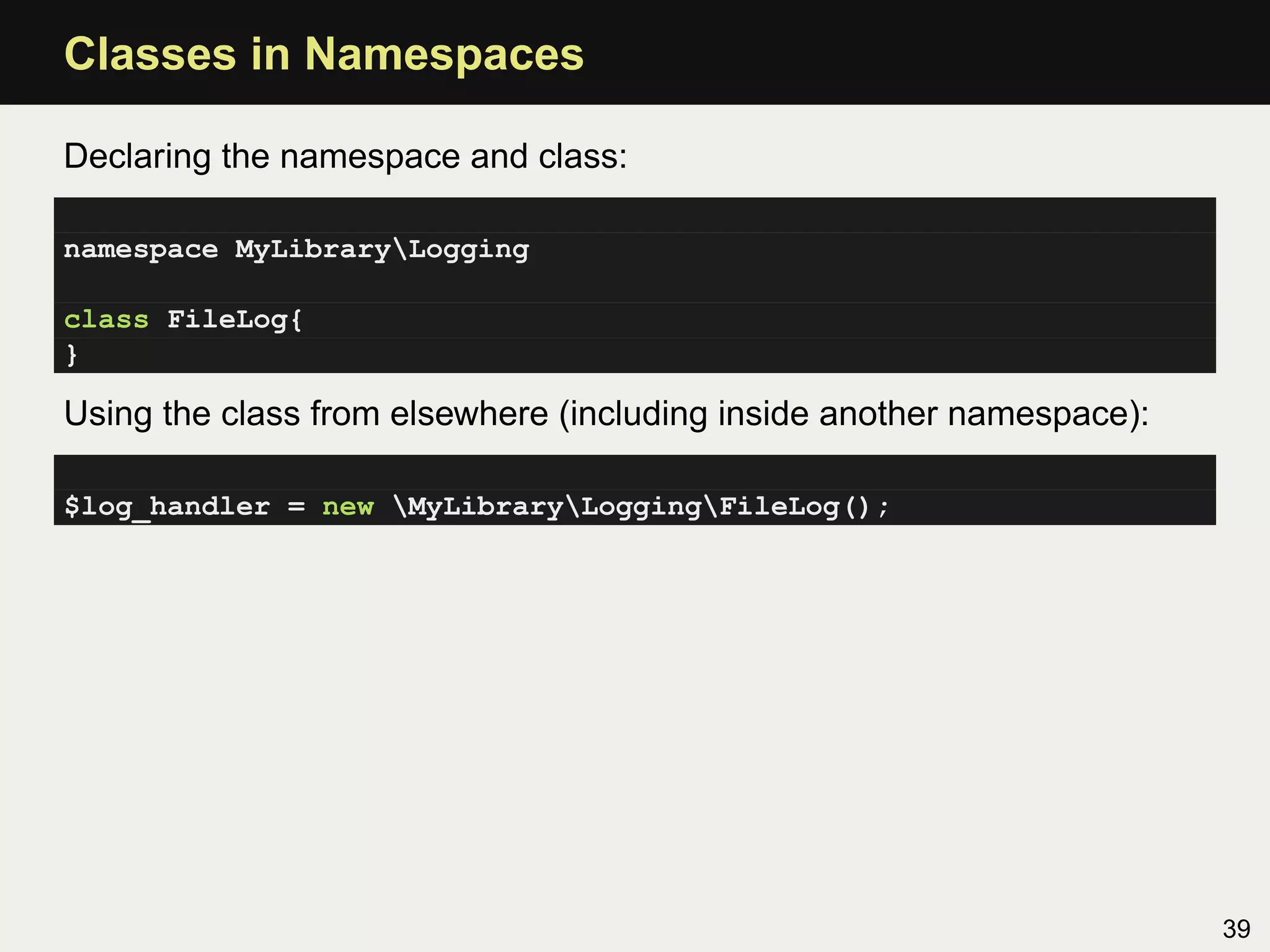
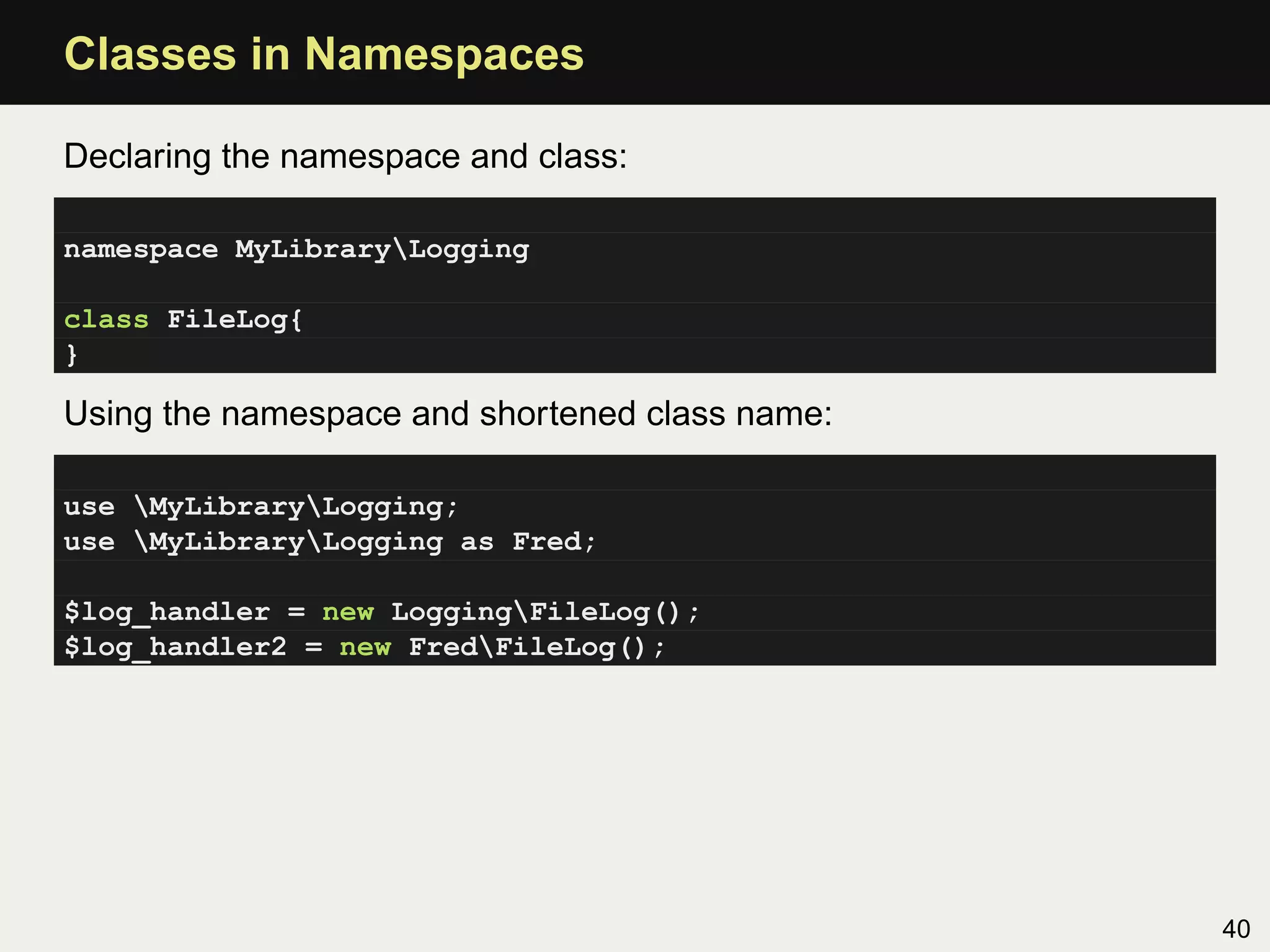
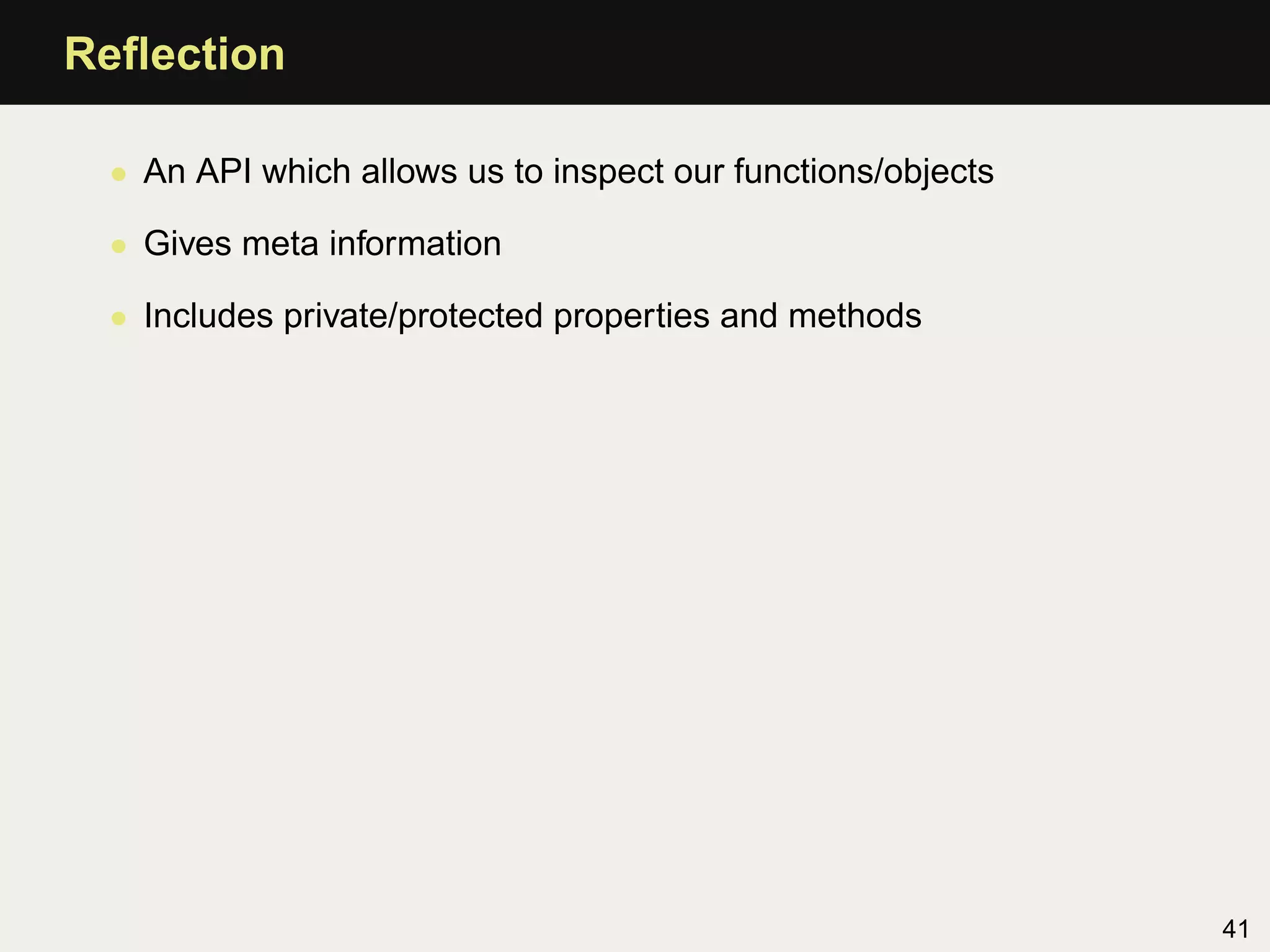
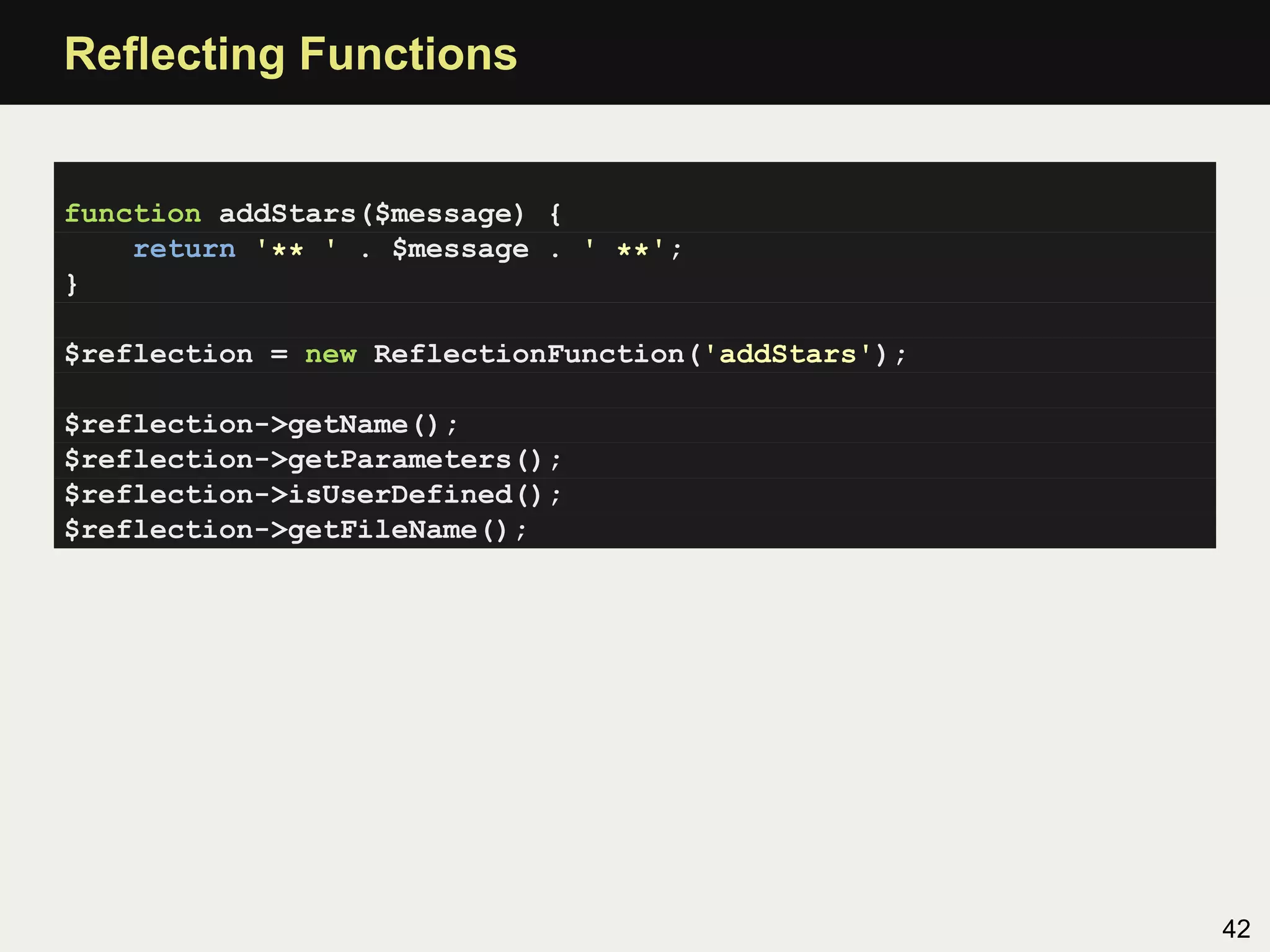
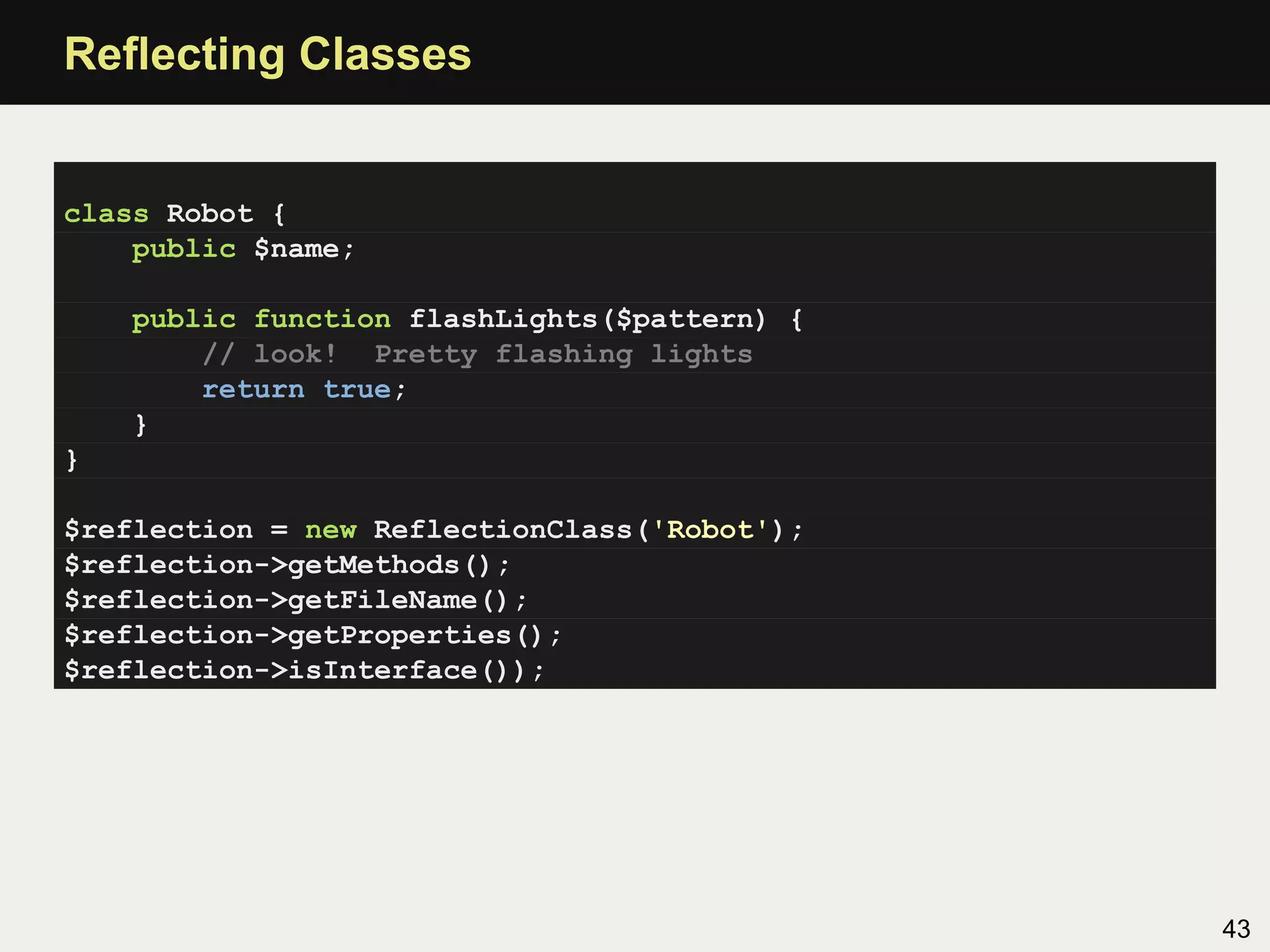
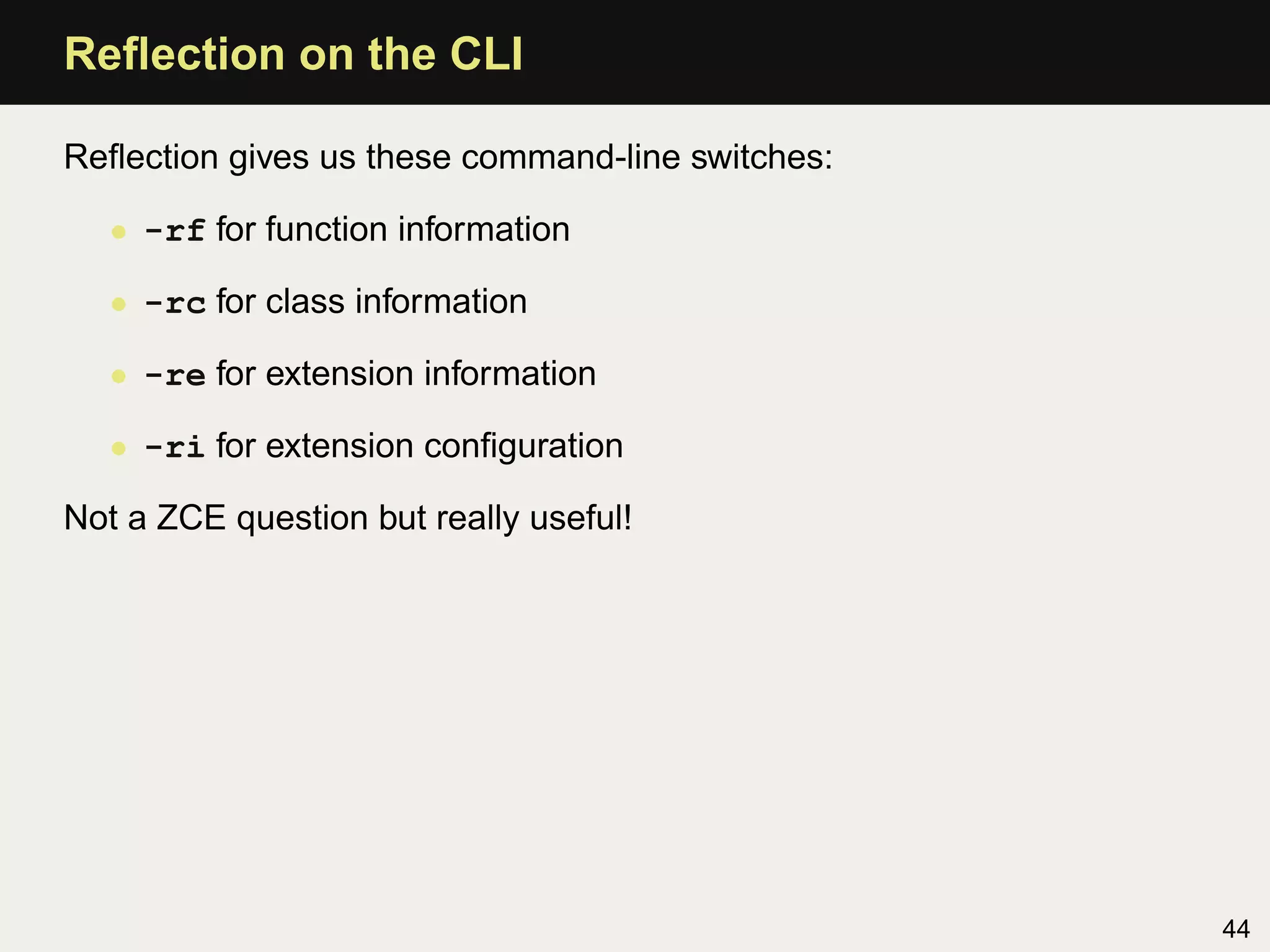
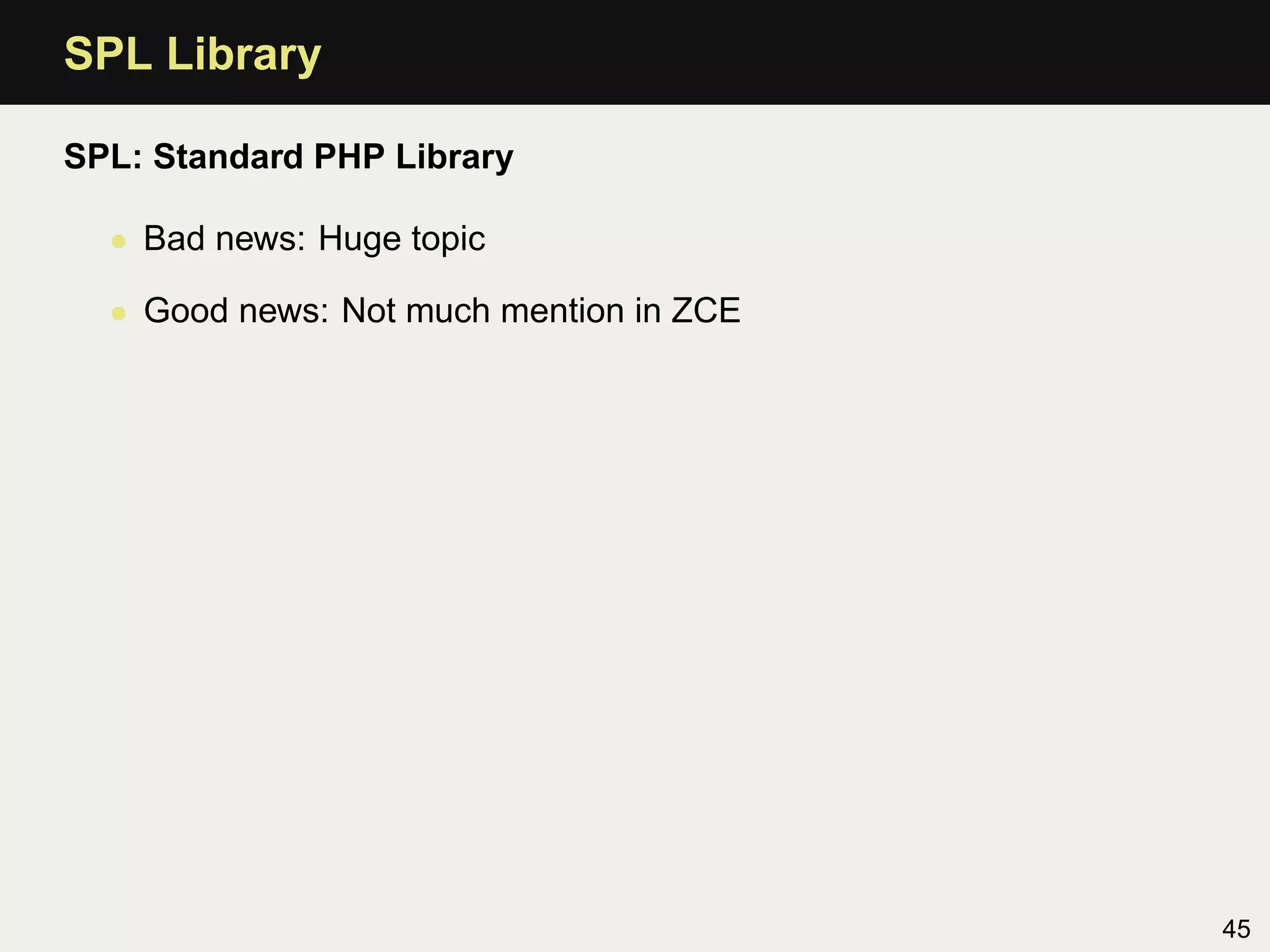
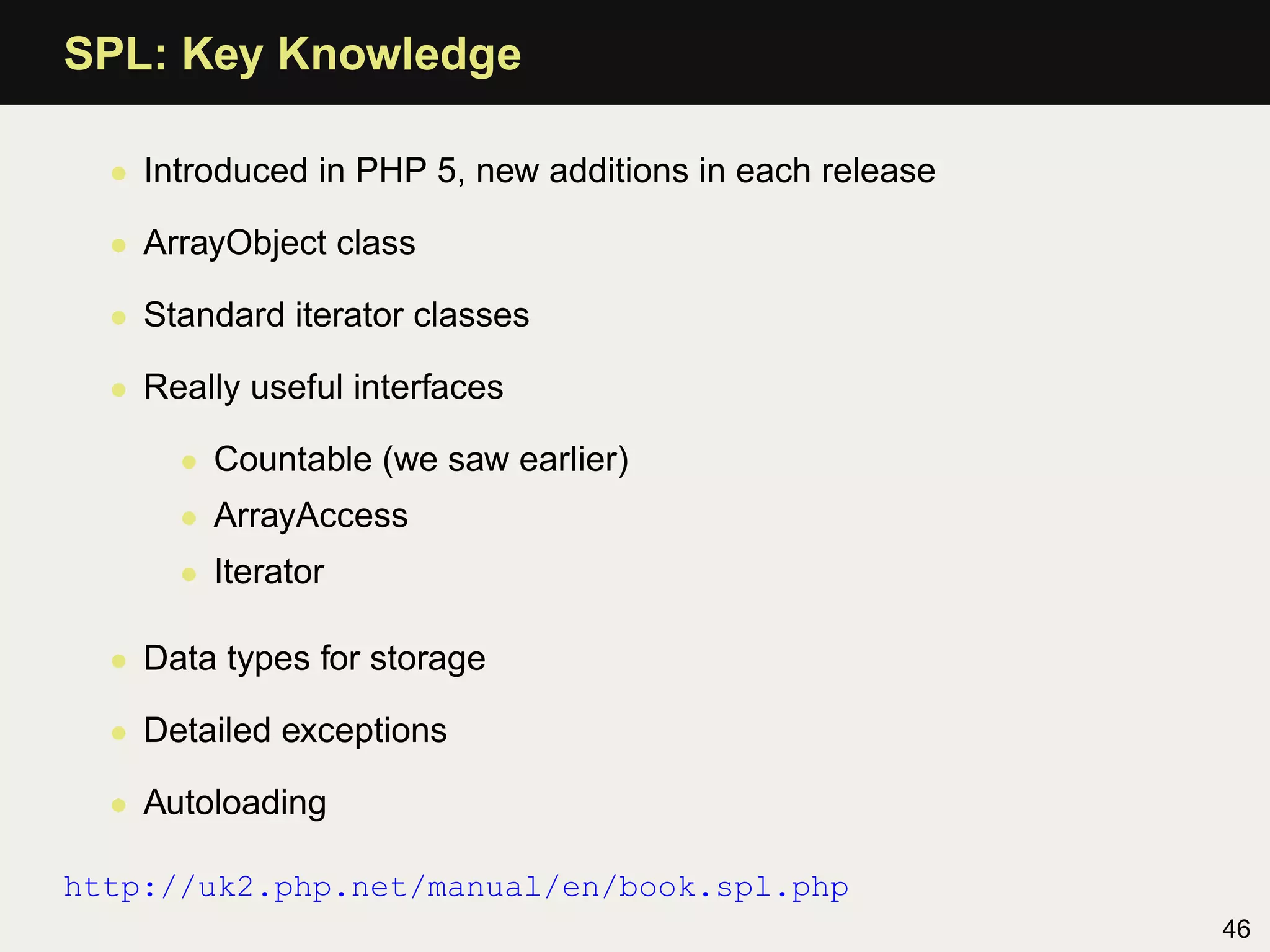
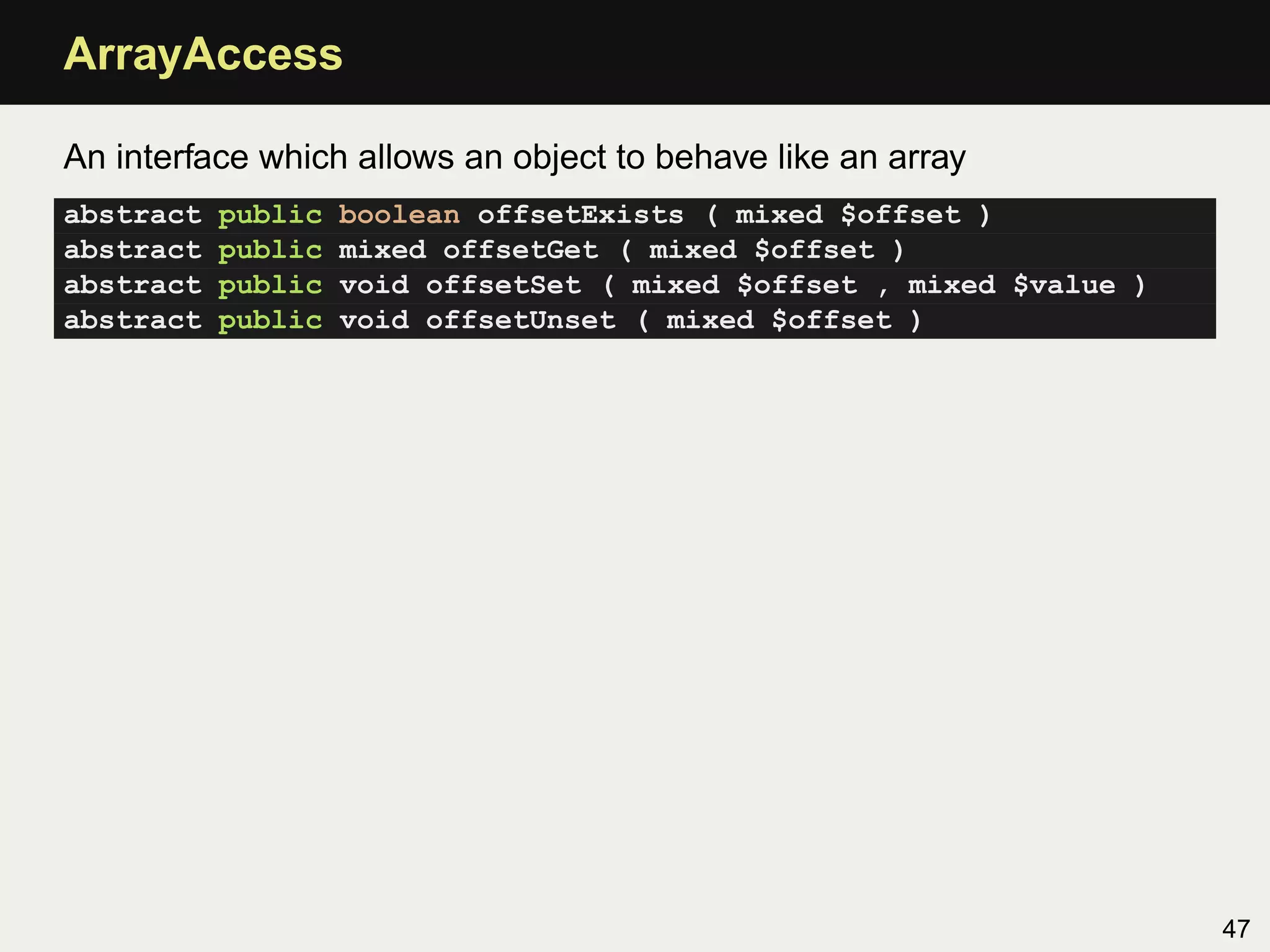
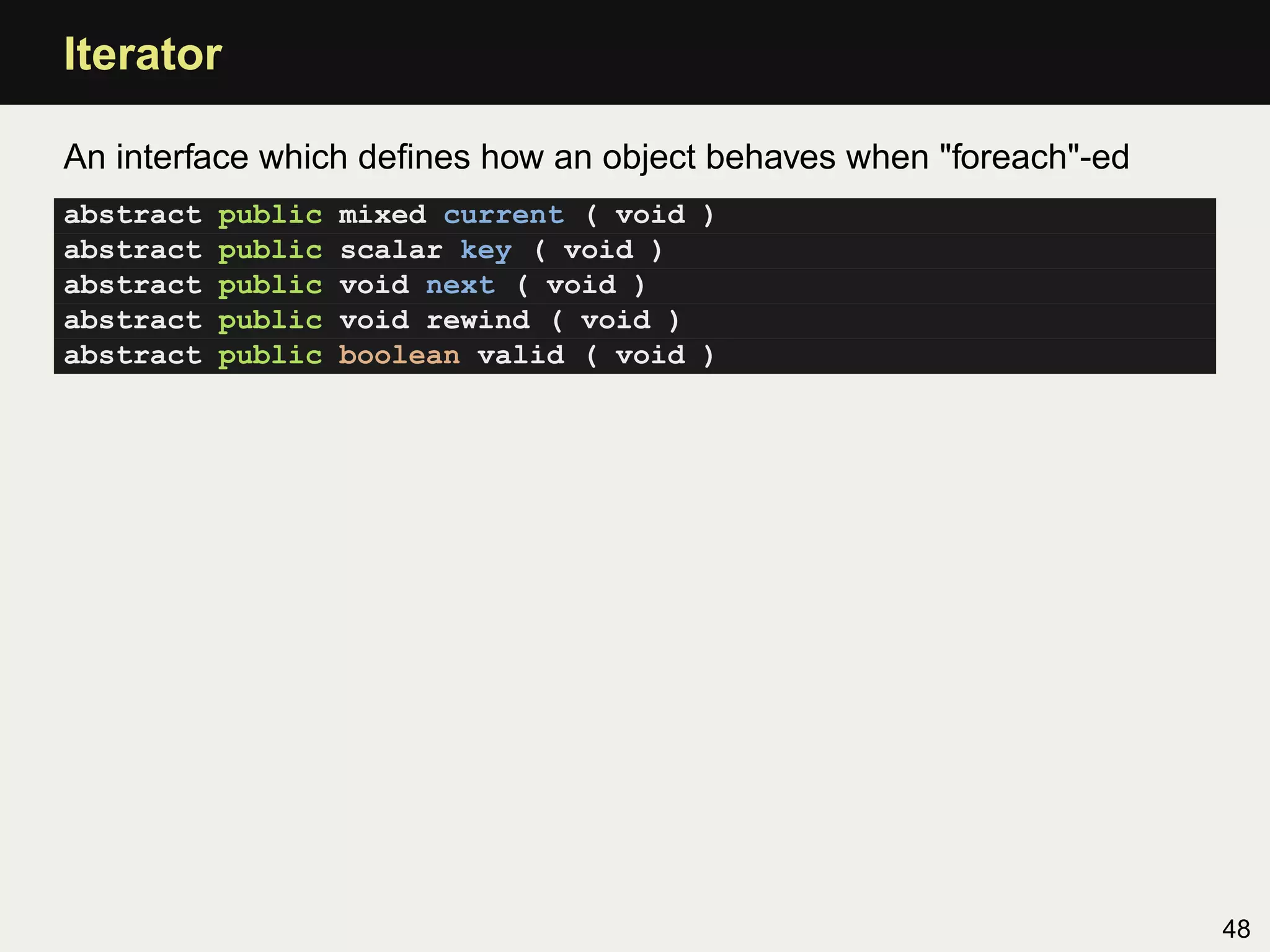
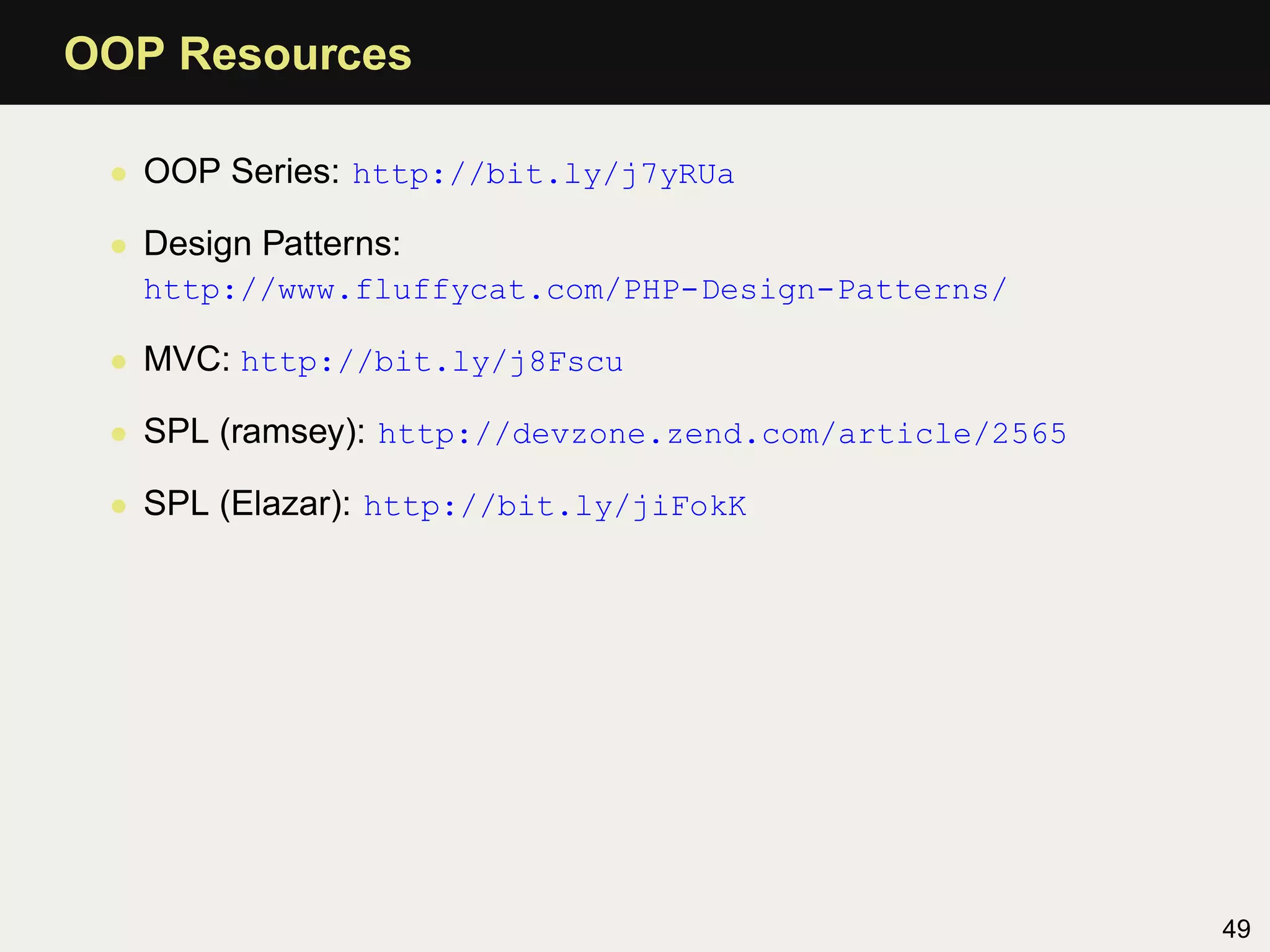

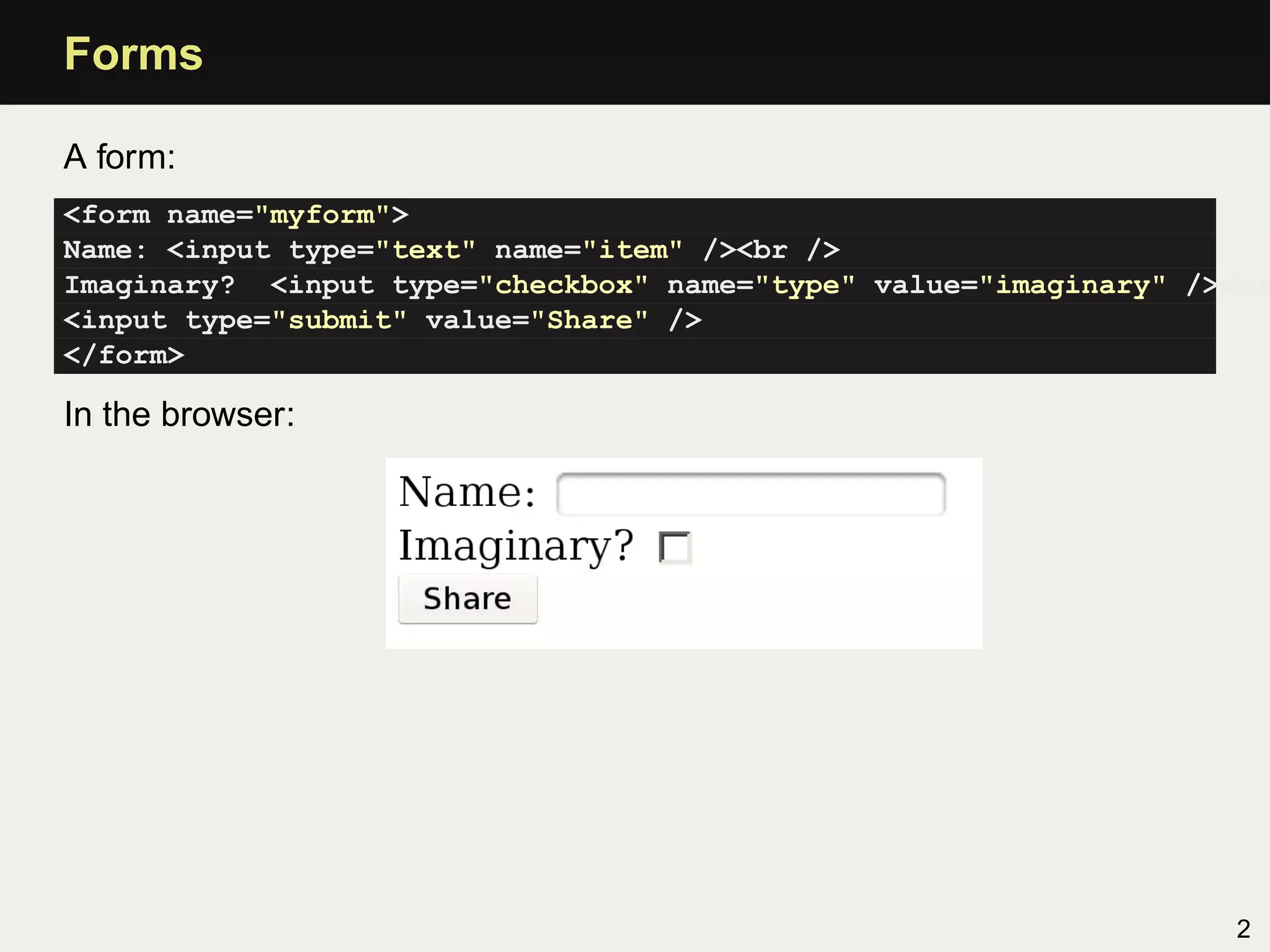
![Submitting Forms
PHP data in $_GET:
Array
(
[item] => Unicorn
[type] => imaginary
)
If form has method="post" attribute, data will be in $_POST
3](https://image.slidesharecdn.com/all-110517124055-phpapp02/75/Zend-Certification-Preparation-Tutorial-150-2048.jpg)
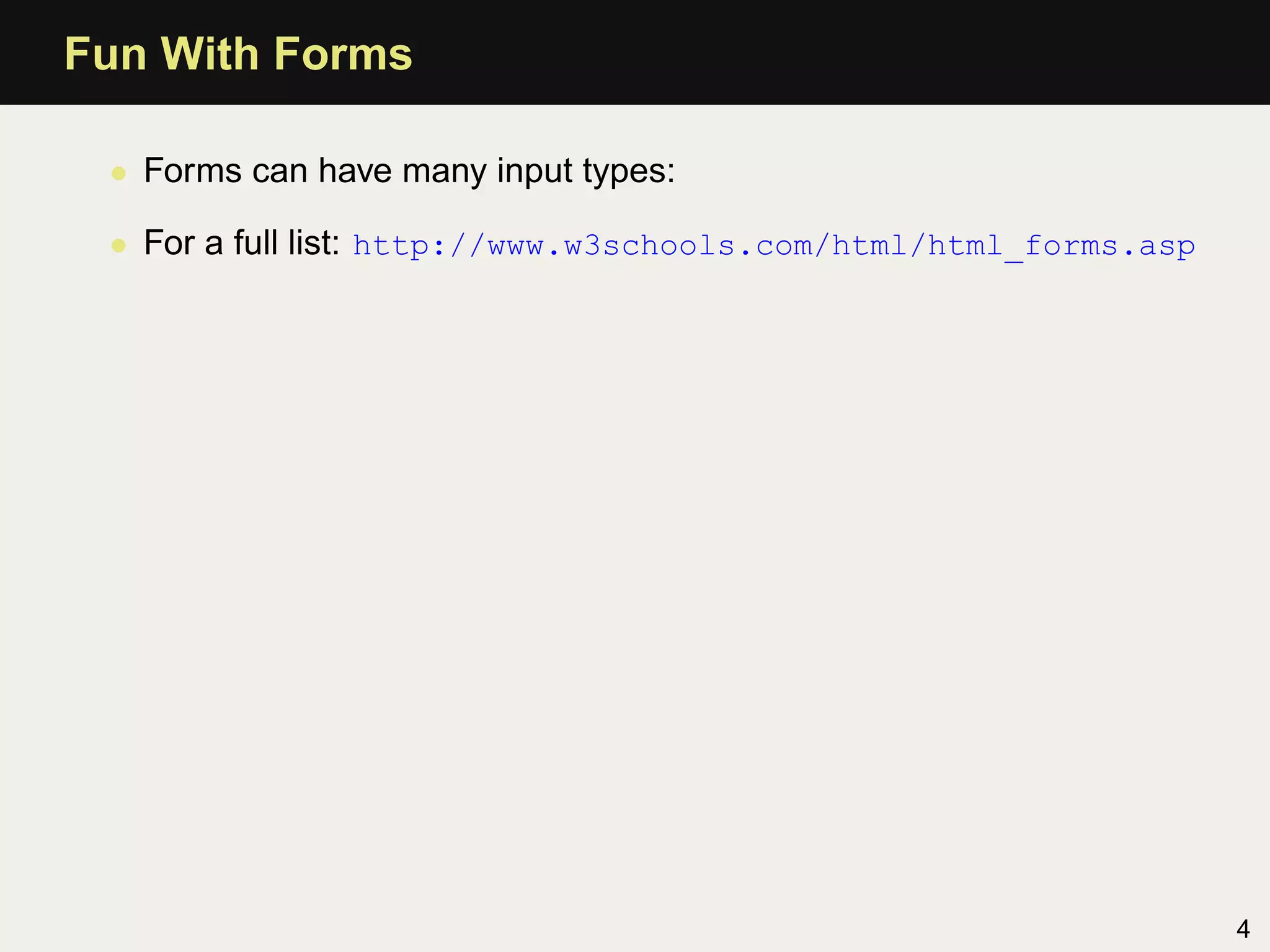
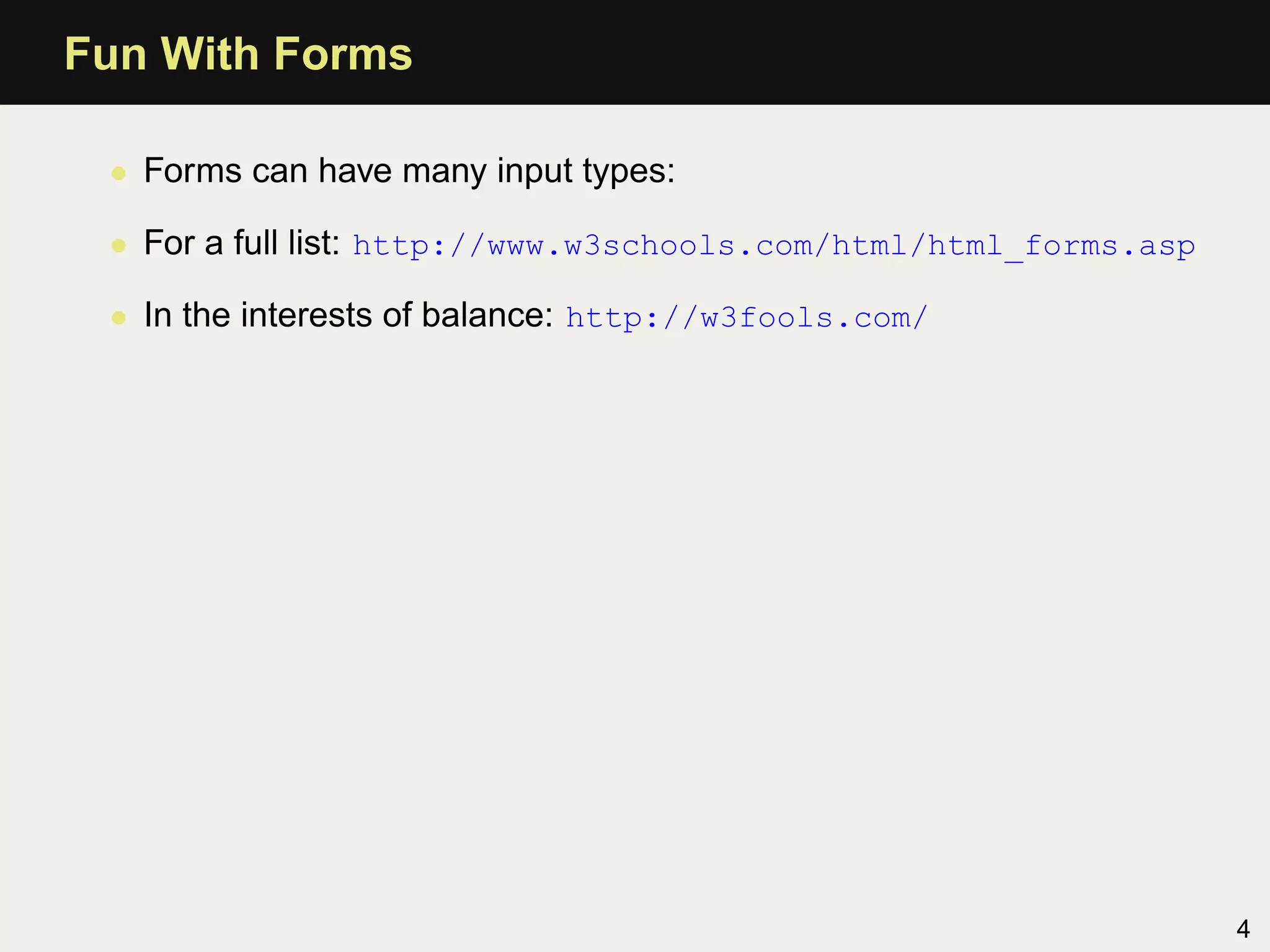
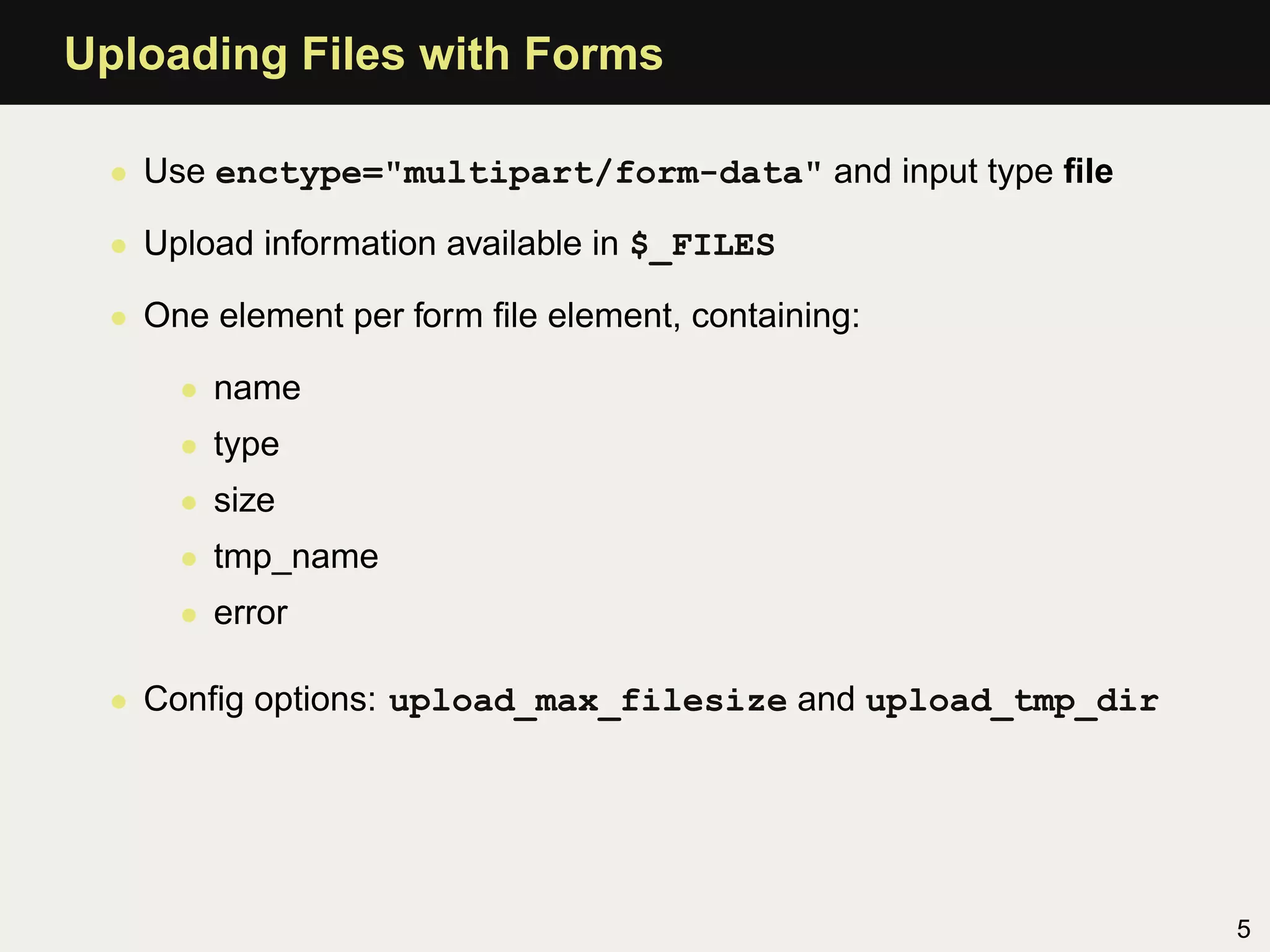
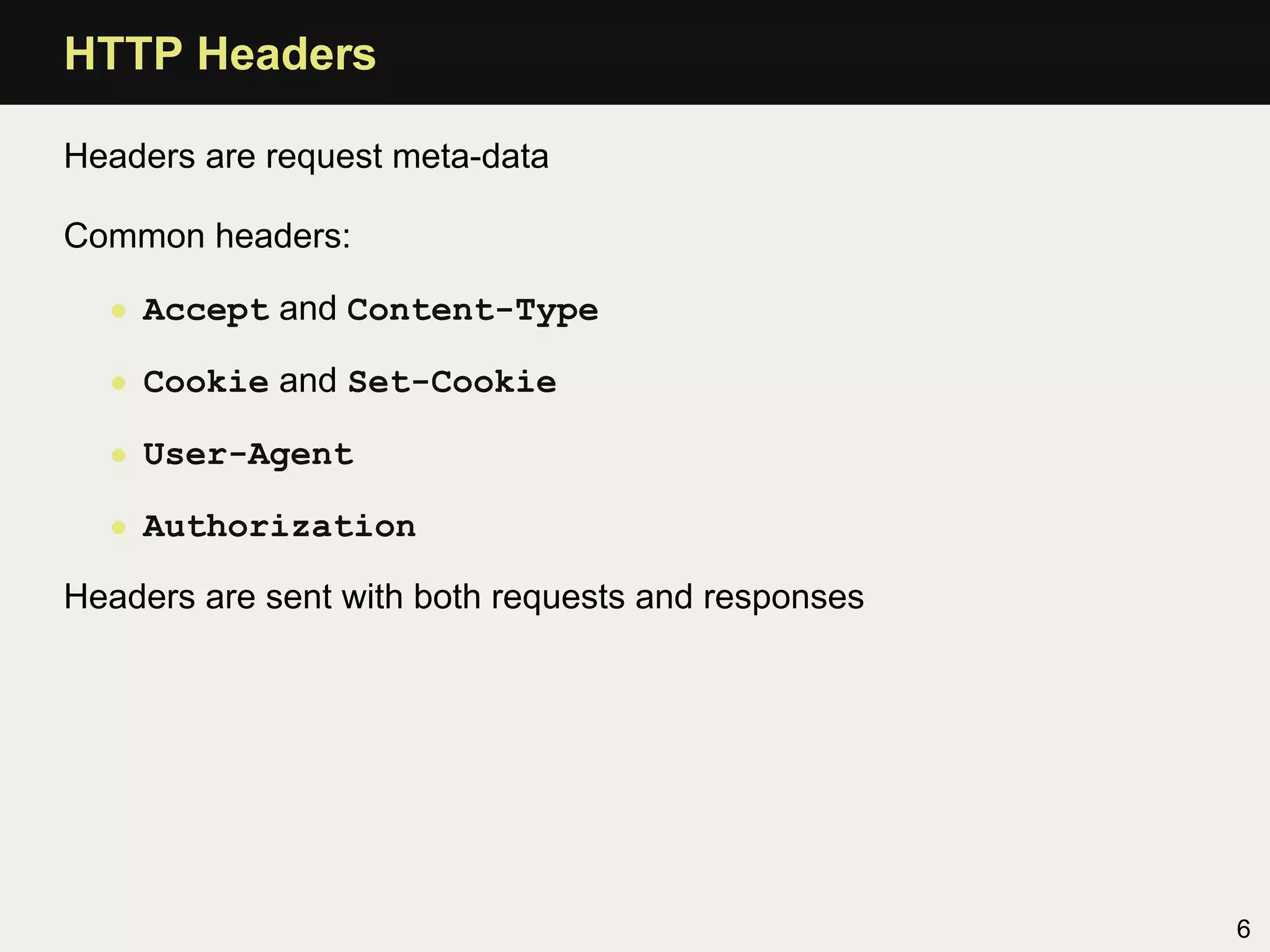
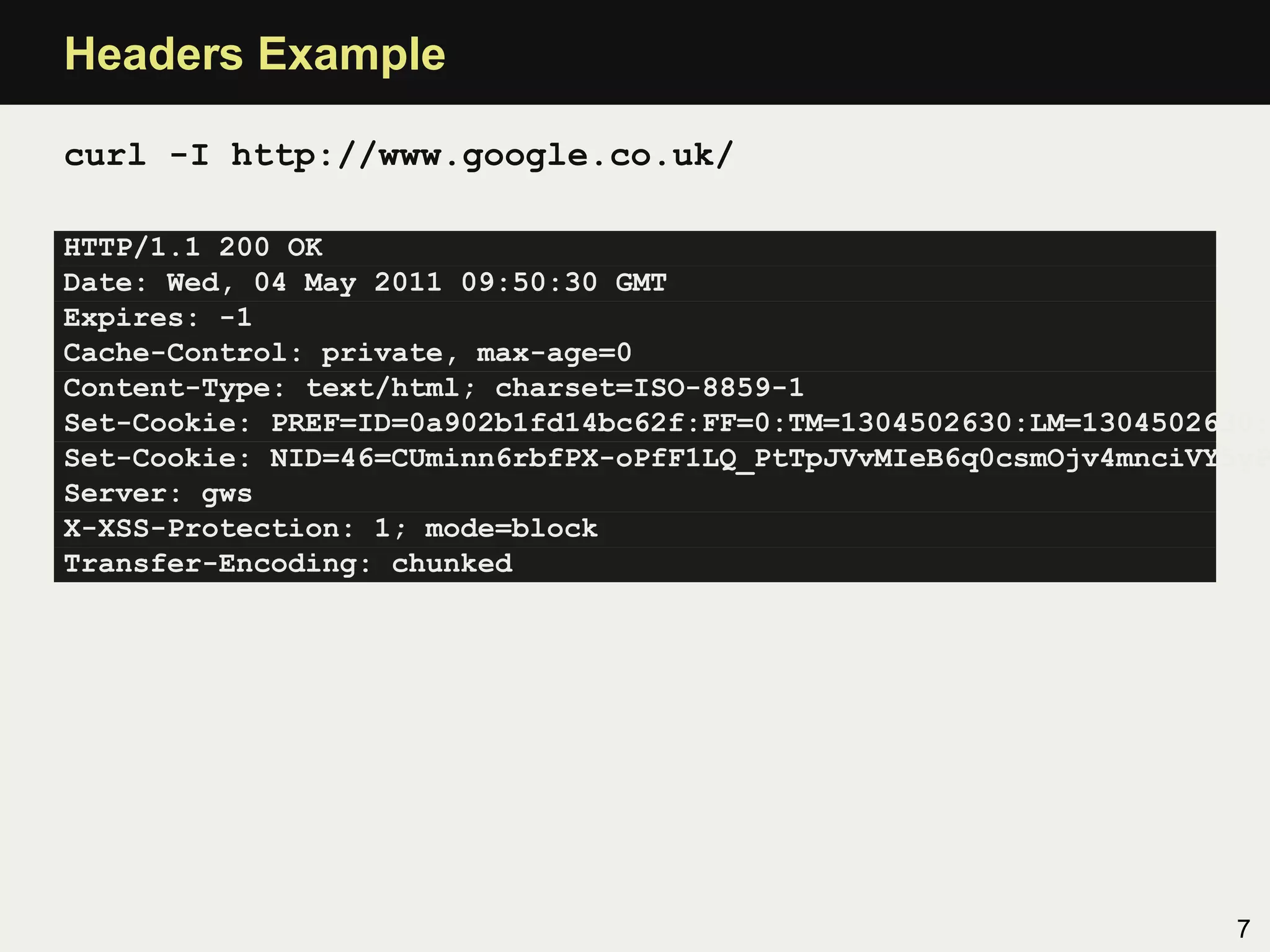
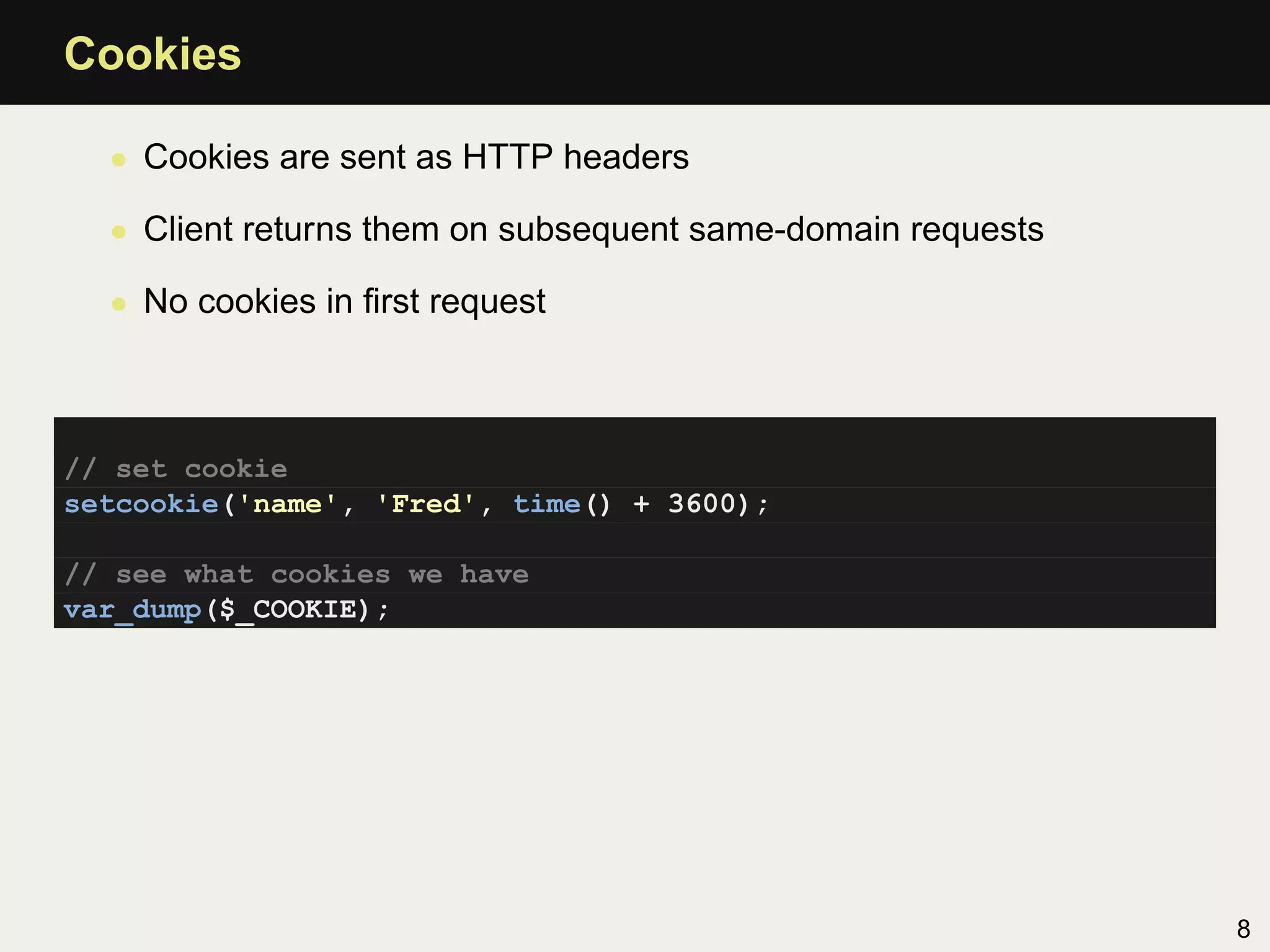
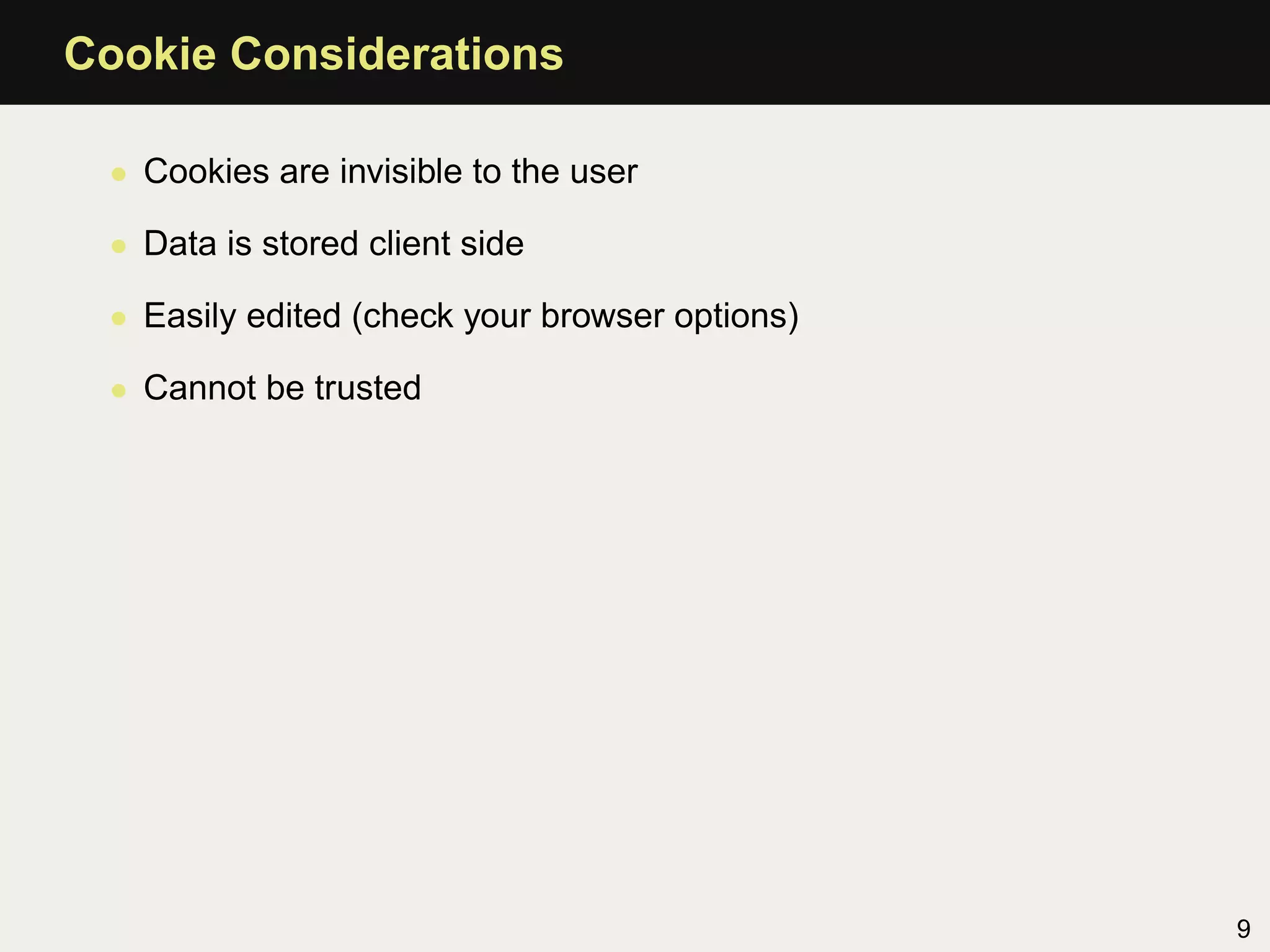
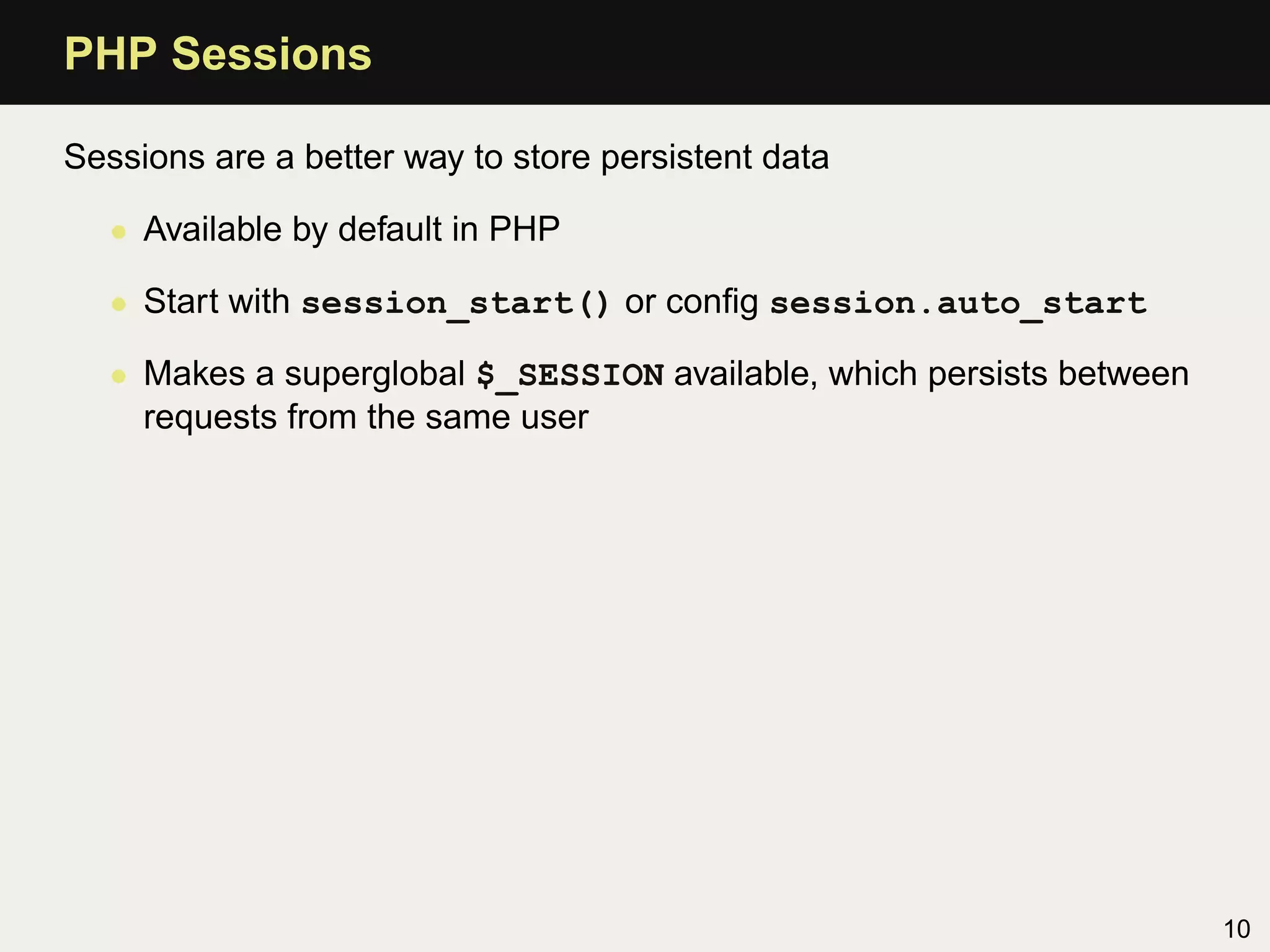
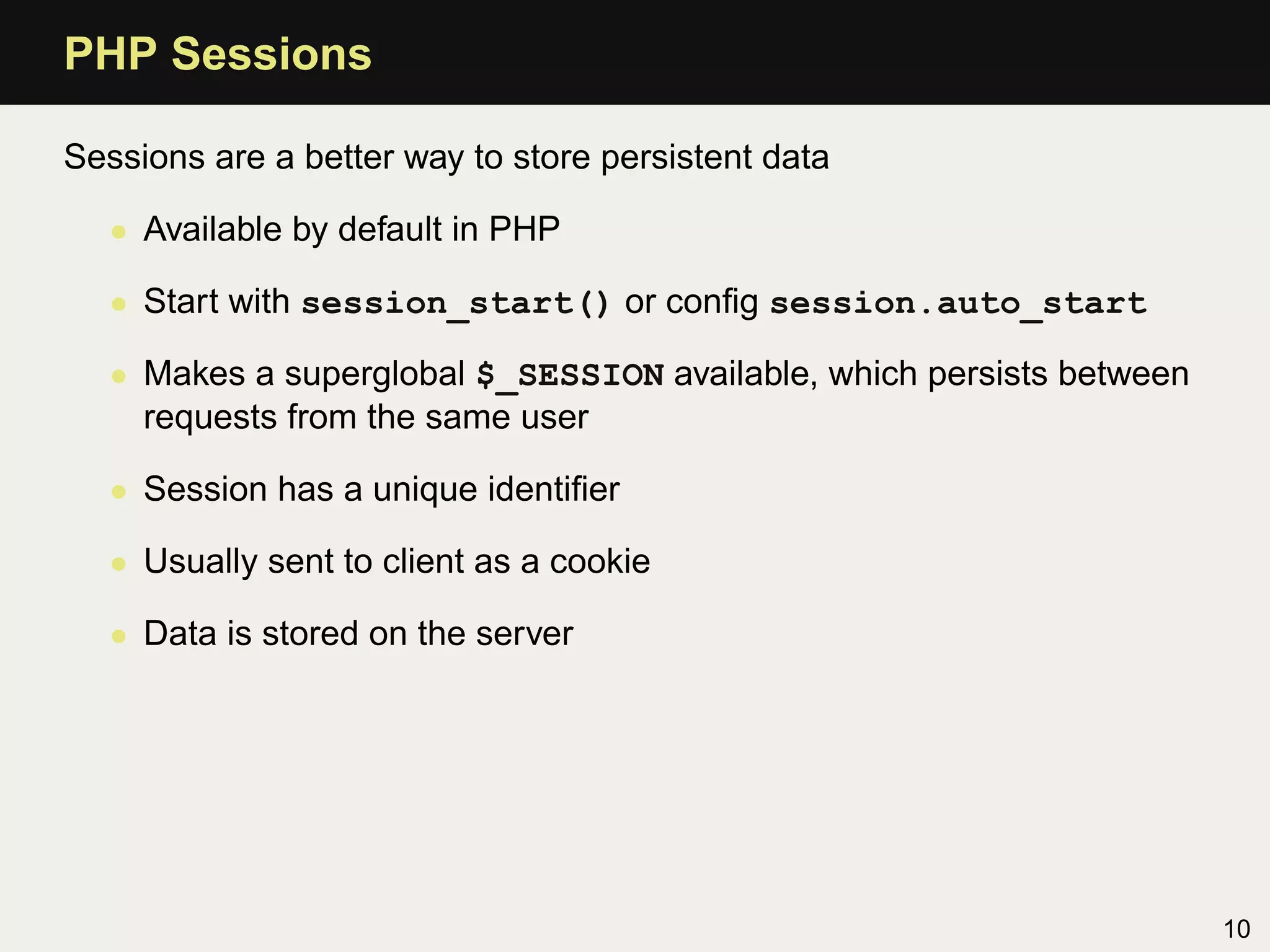


![HTTP Authentication
If you’re using Apache, you can use PHP and Basic Authentication
• If credentials were submitted, you’ll find them in
• $_SERVER[’PHP_AUTH_USER’]
• $_SERVER[’PHP_AUTH_PW’]
• To trigger authentication, send a WWW-Authenticate: Basic
realm=[realm] header
• http://bit.ly/jBeOwb
• http://php.net/manual/en/features.http-auth.php
13](https://image.slidesharecdn.com/all-110517124055-phpapp02/75/Zend-Certification-Preparation-Tutorial-162-2048.jpg)

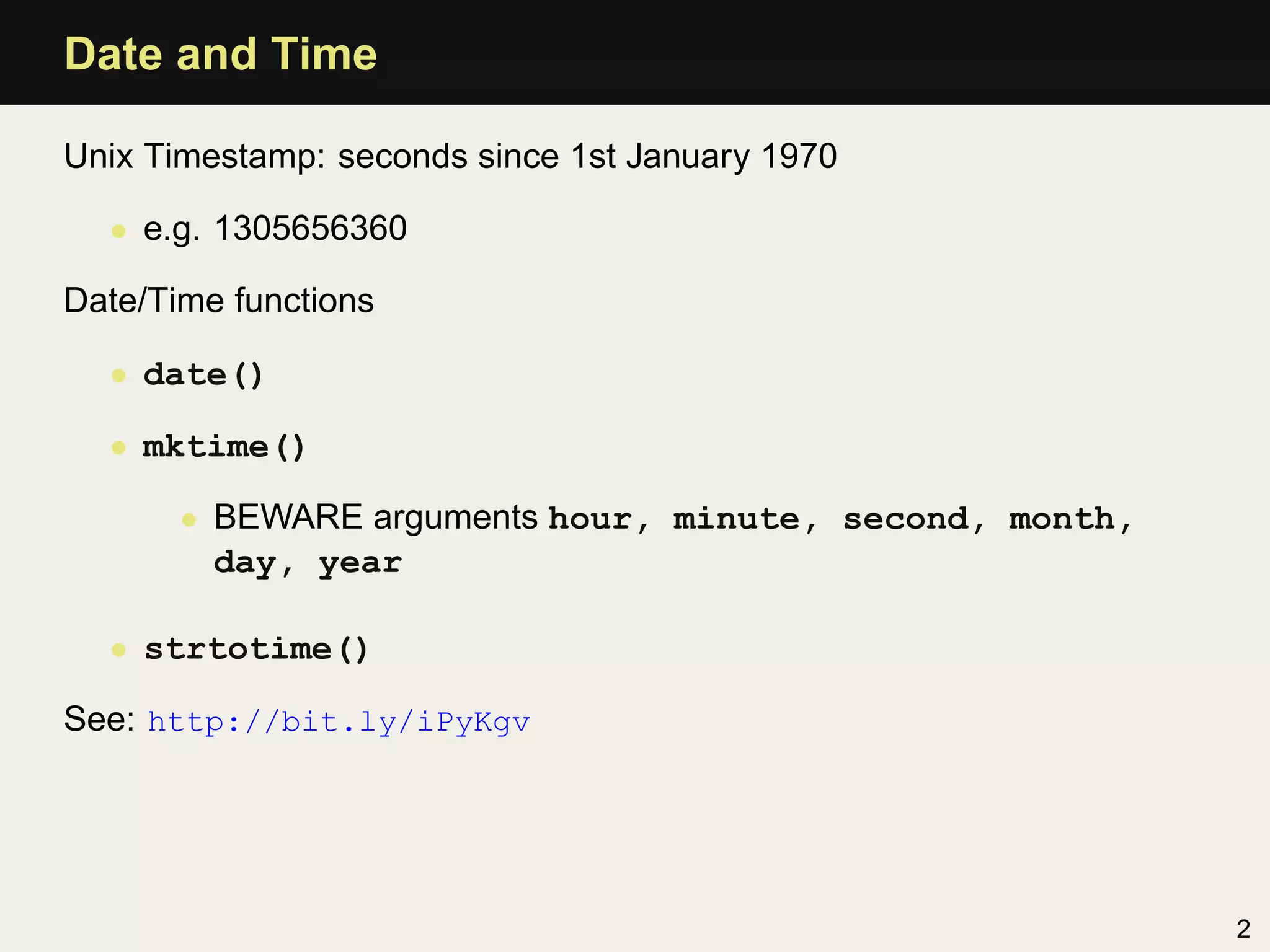
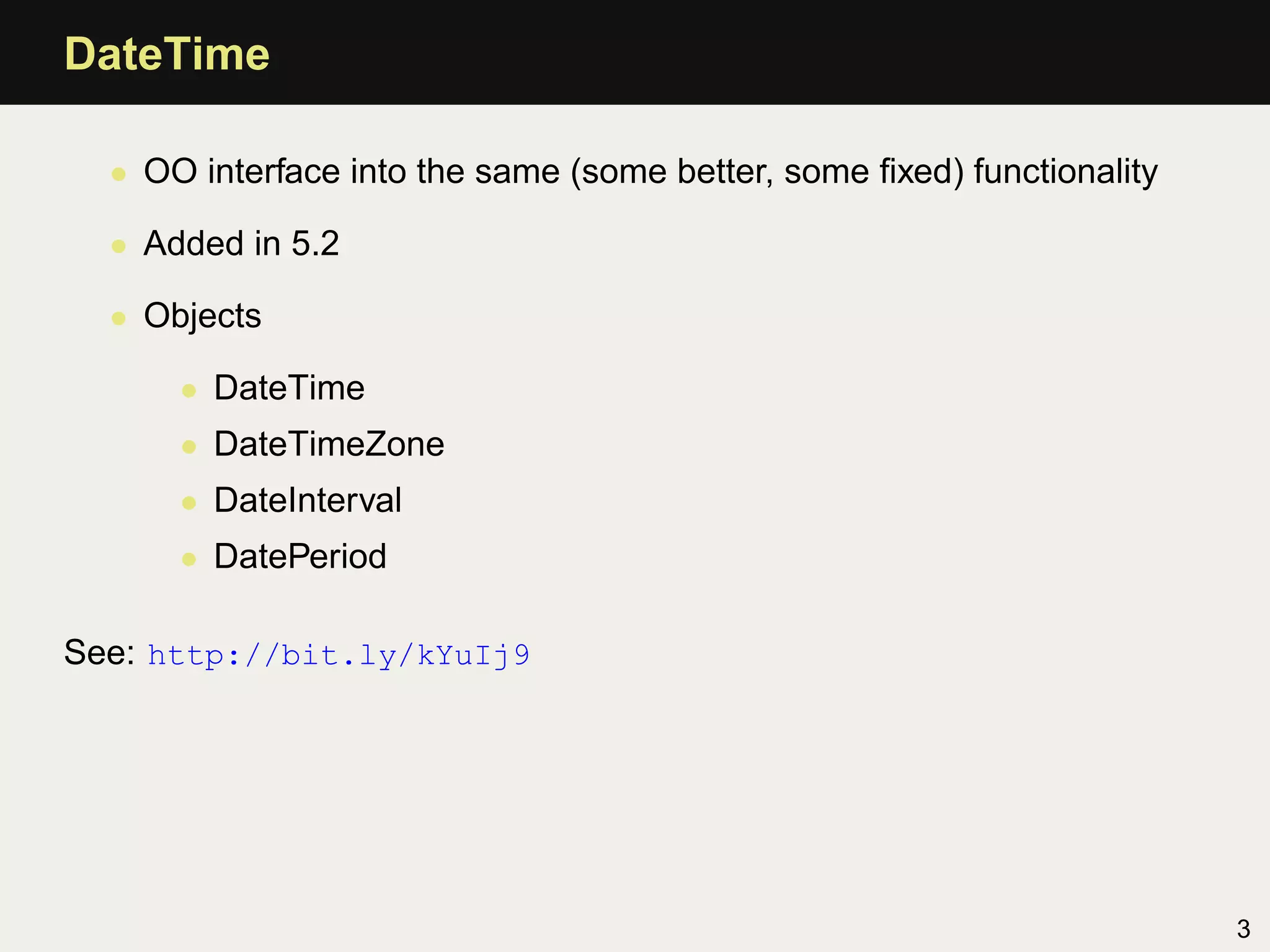
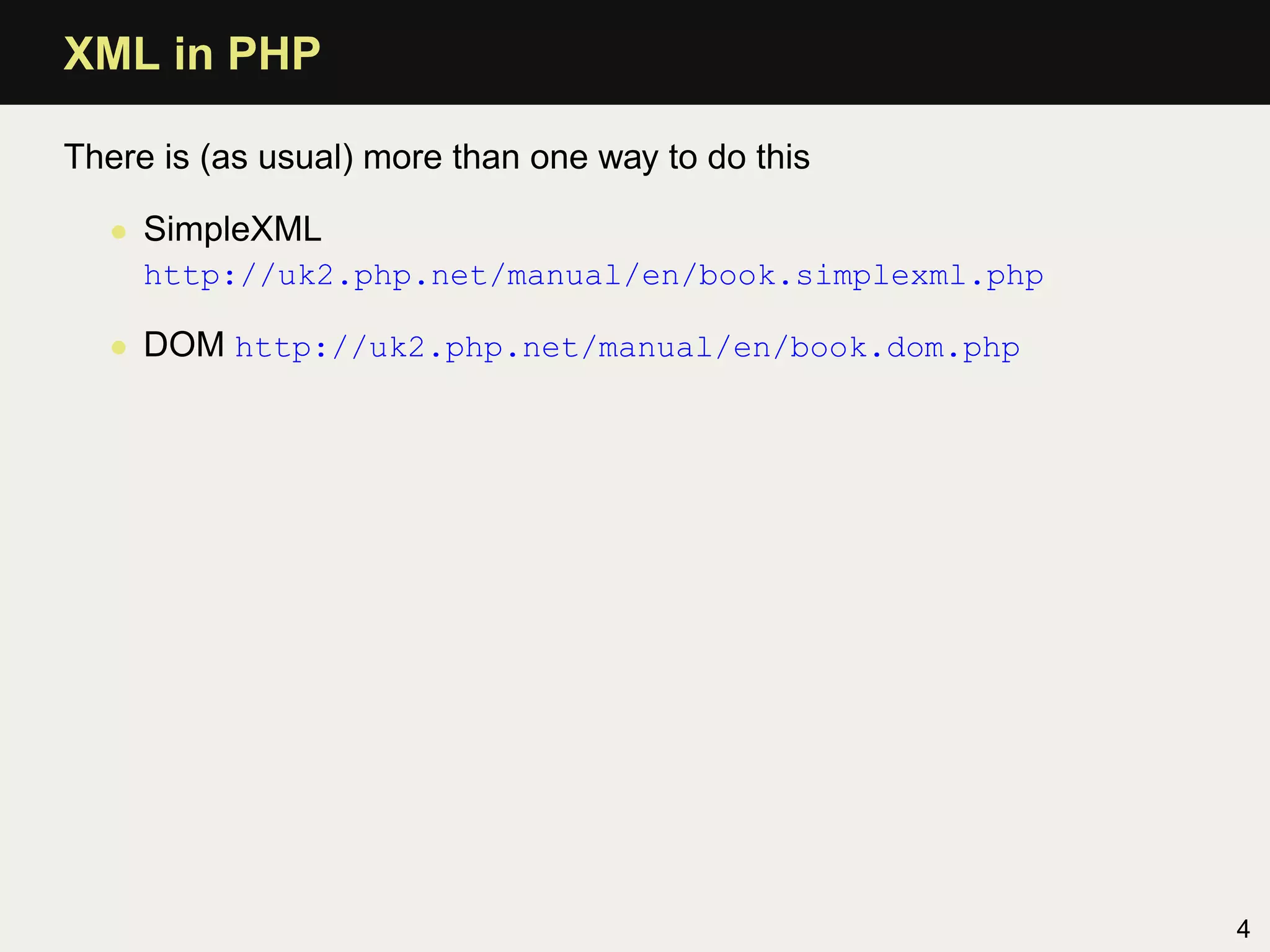

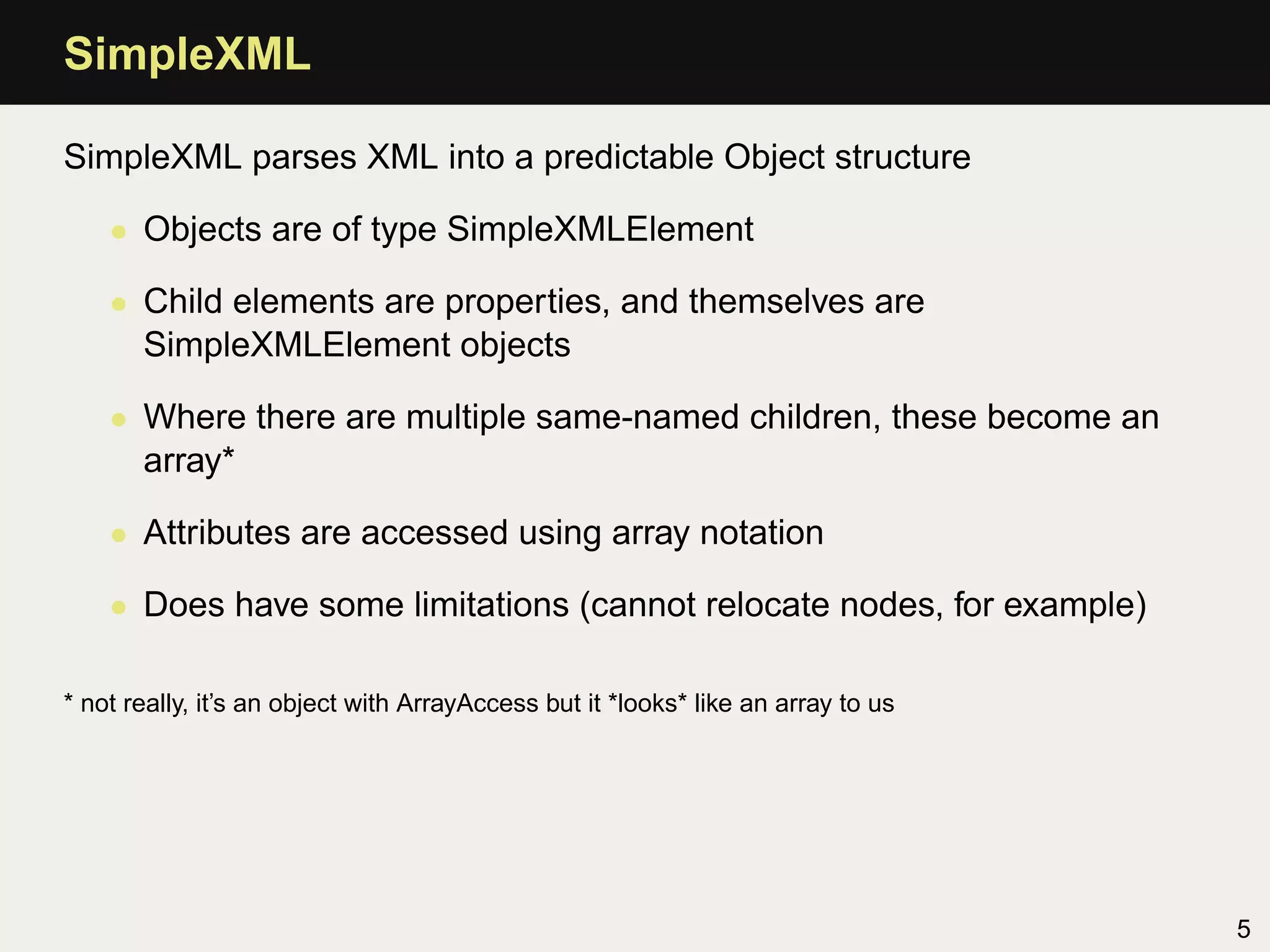
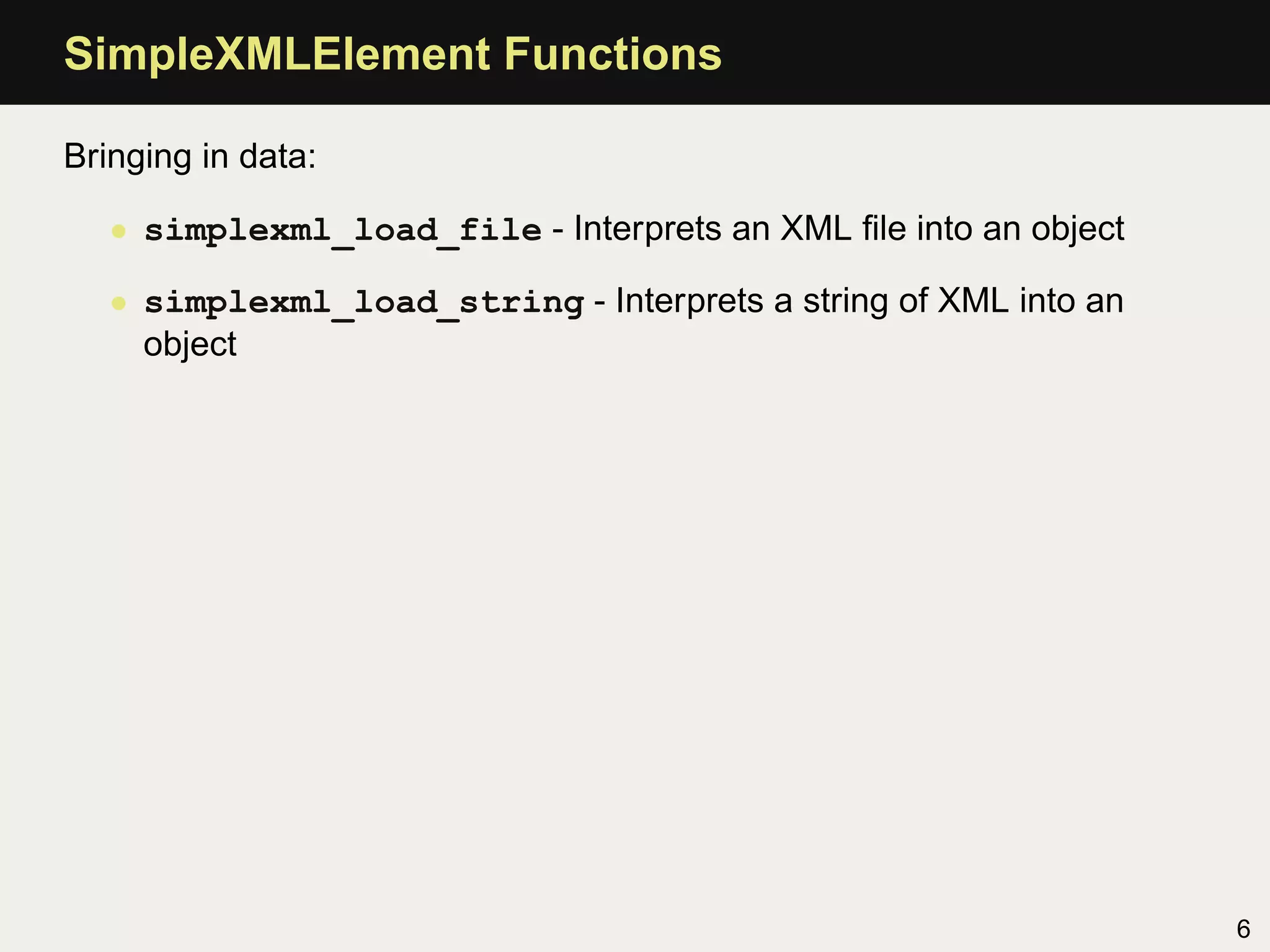
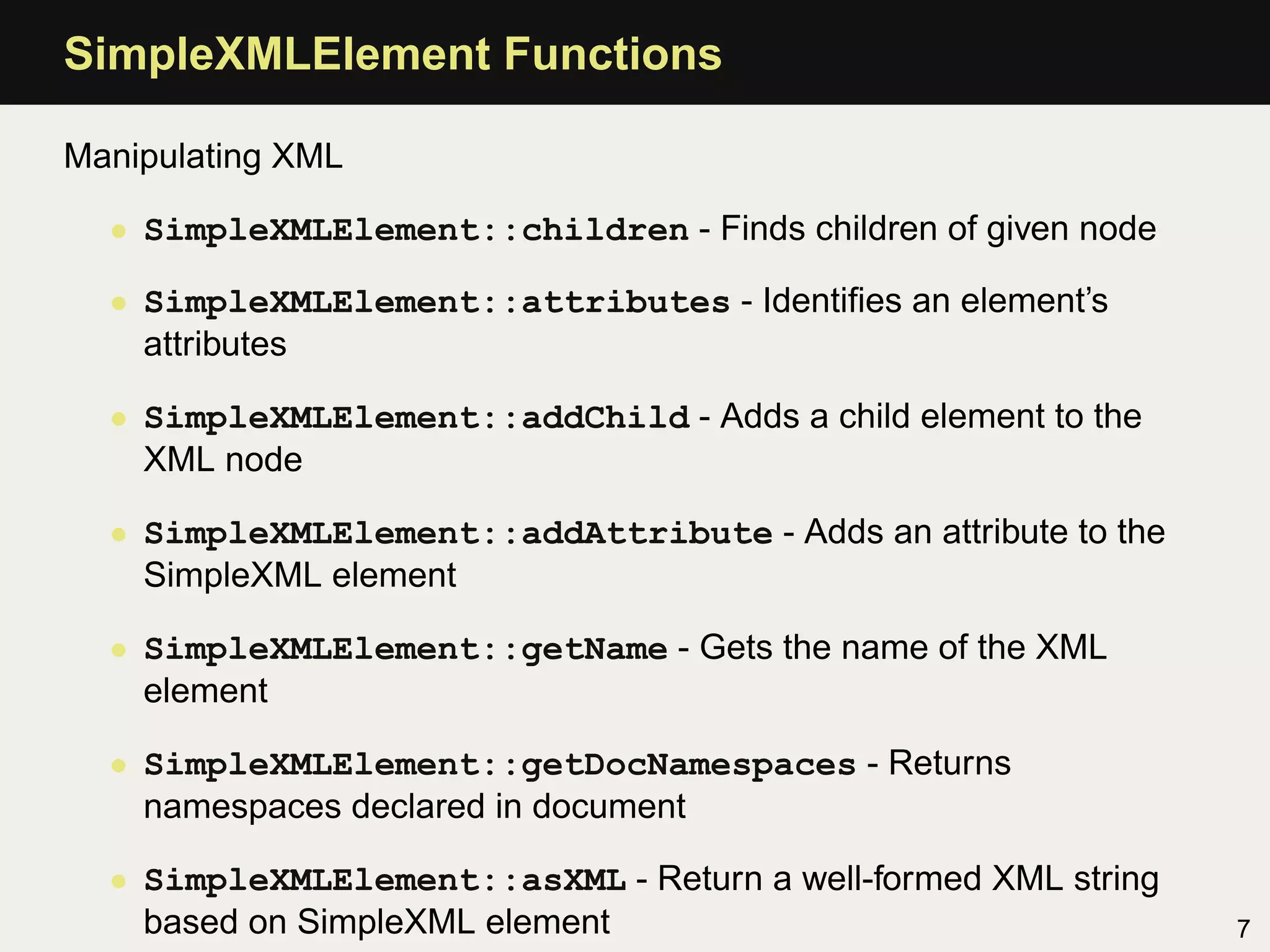
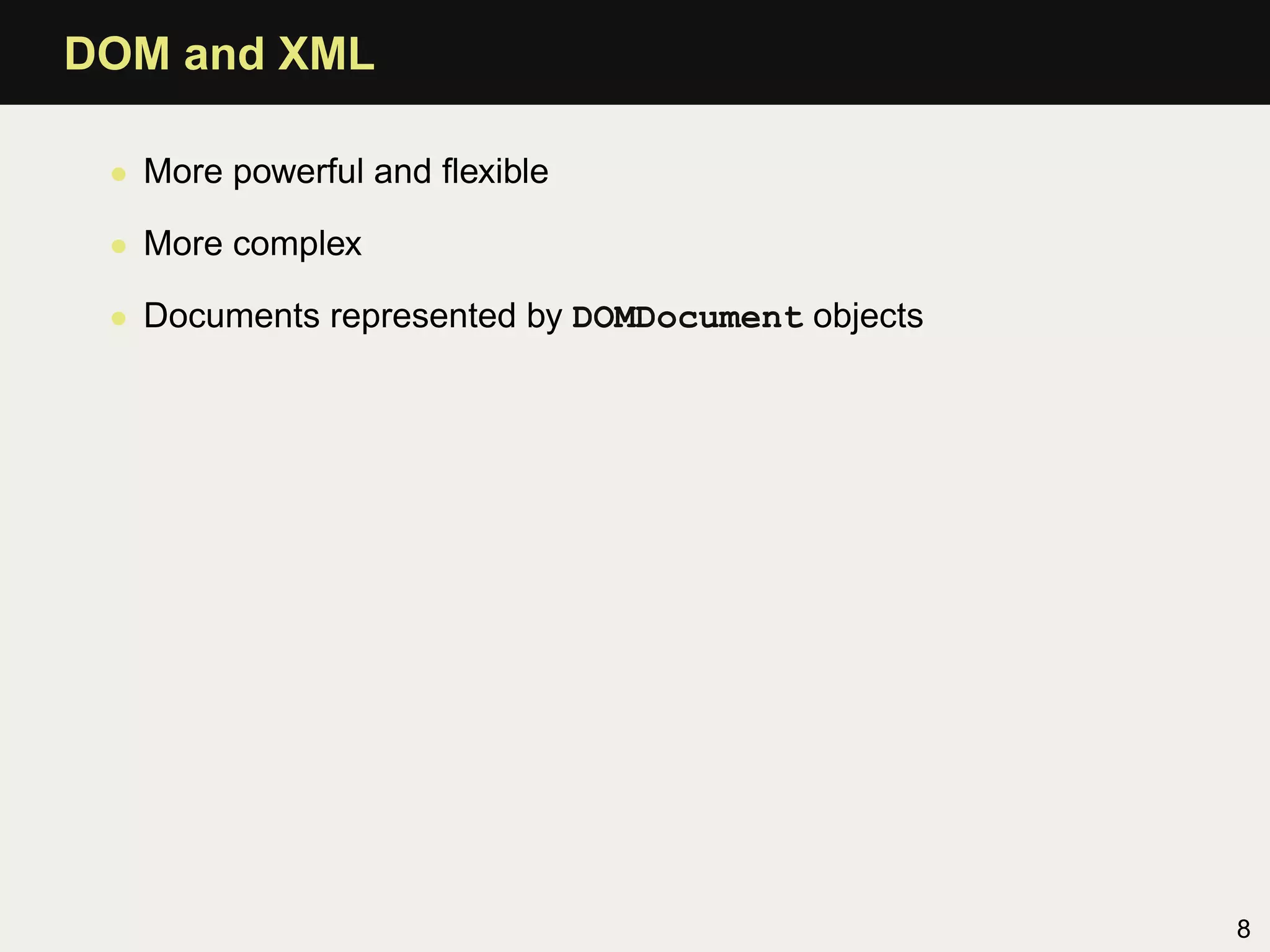
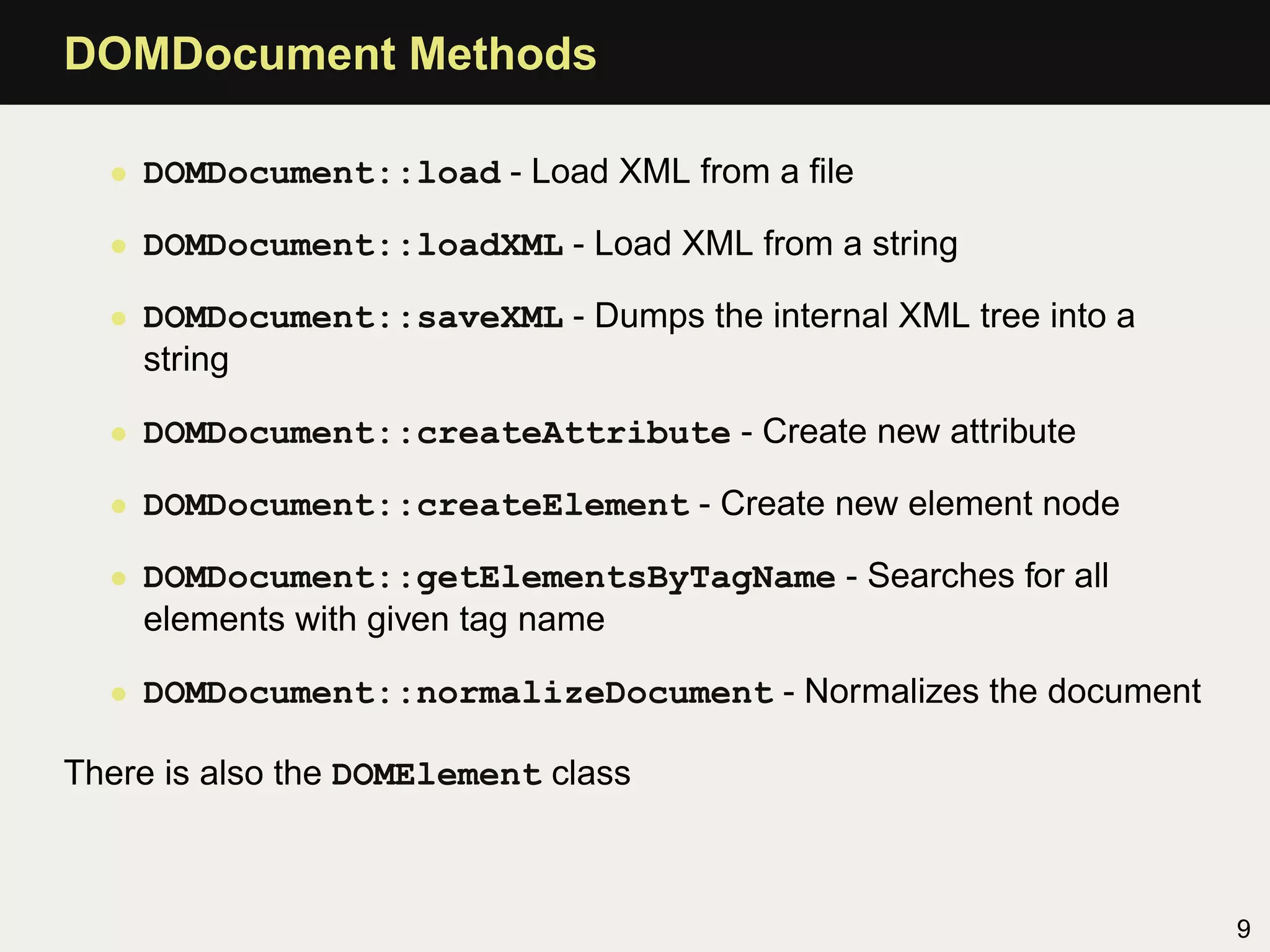
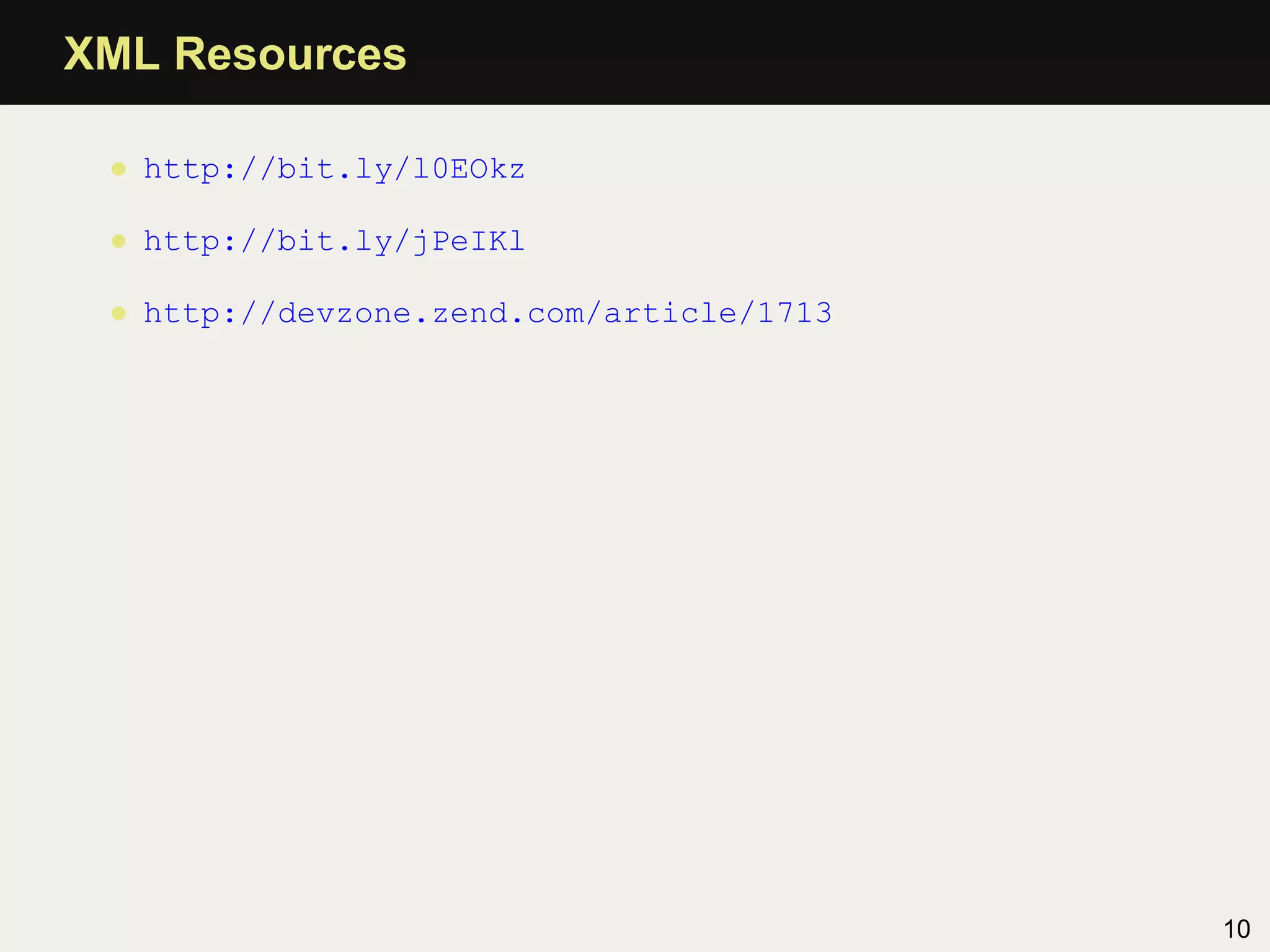
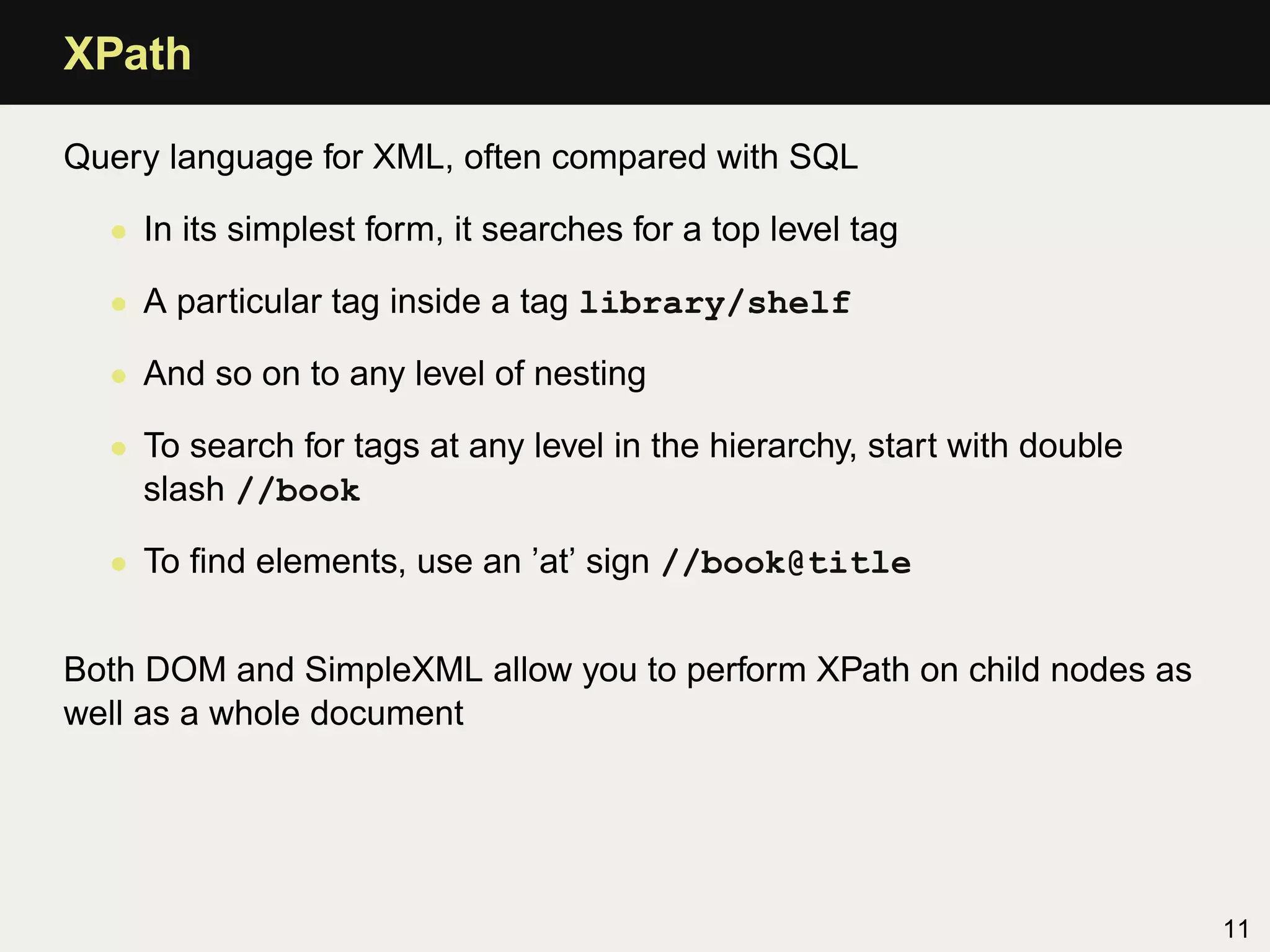

![JSON Example
$list = array("meat" => array(
"chicken",
"lamb",
"reindeer"),
"count" => 3);
echo json_encode($list);
"meat":["chicken","lamb","reindeer"],"count":3
13](https://image.slidesharecdn.com/all-110517124055-phpapp02/75/Zend-Certification-Preparation-Tutorial-176-2048.jpg)
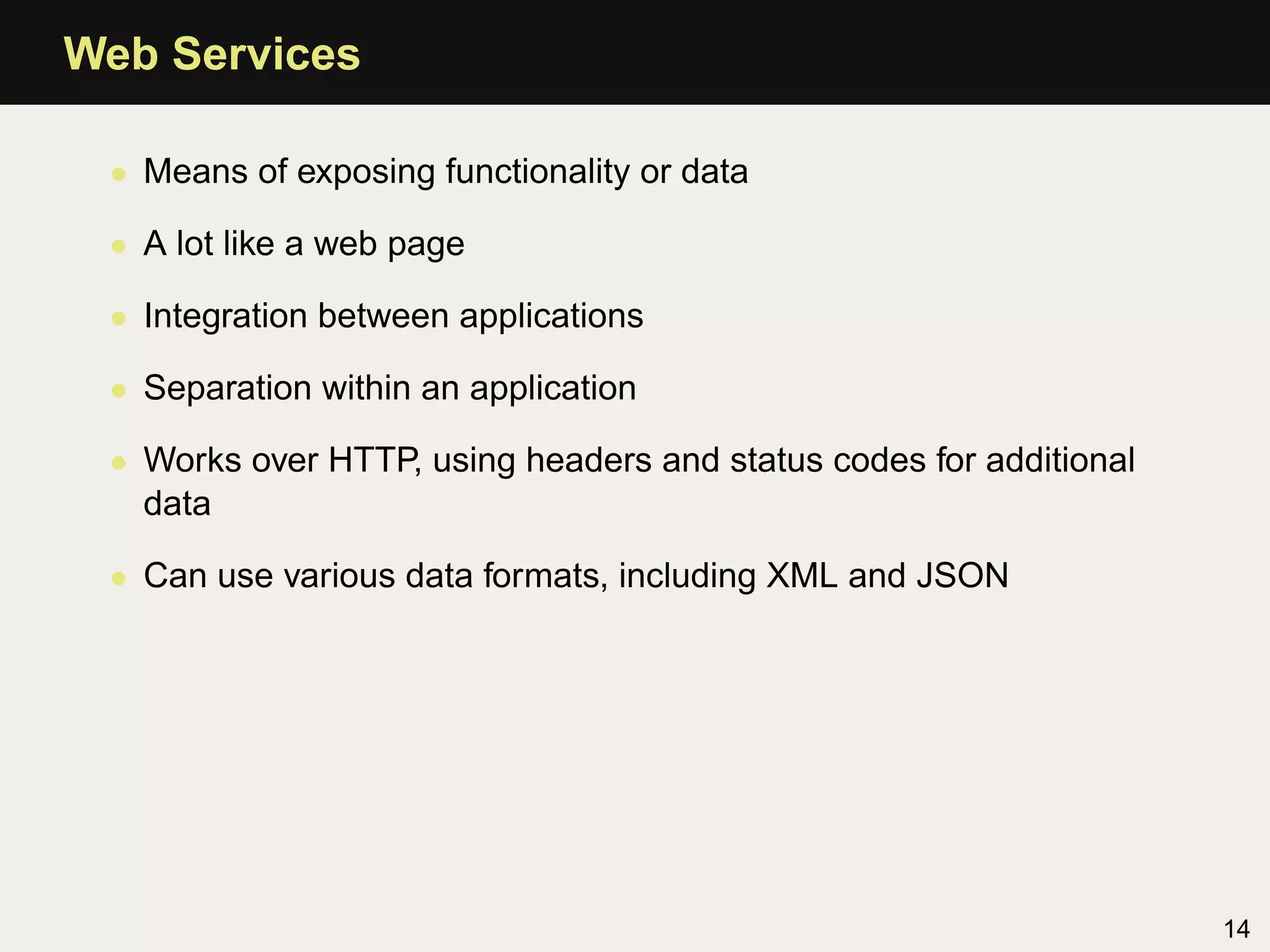
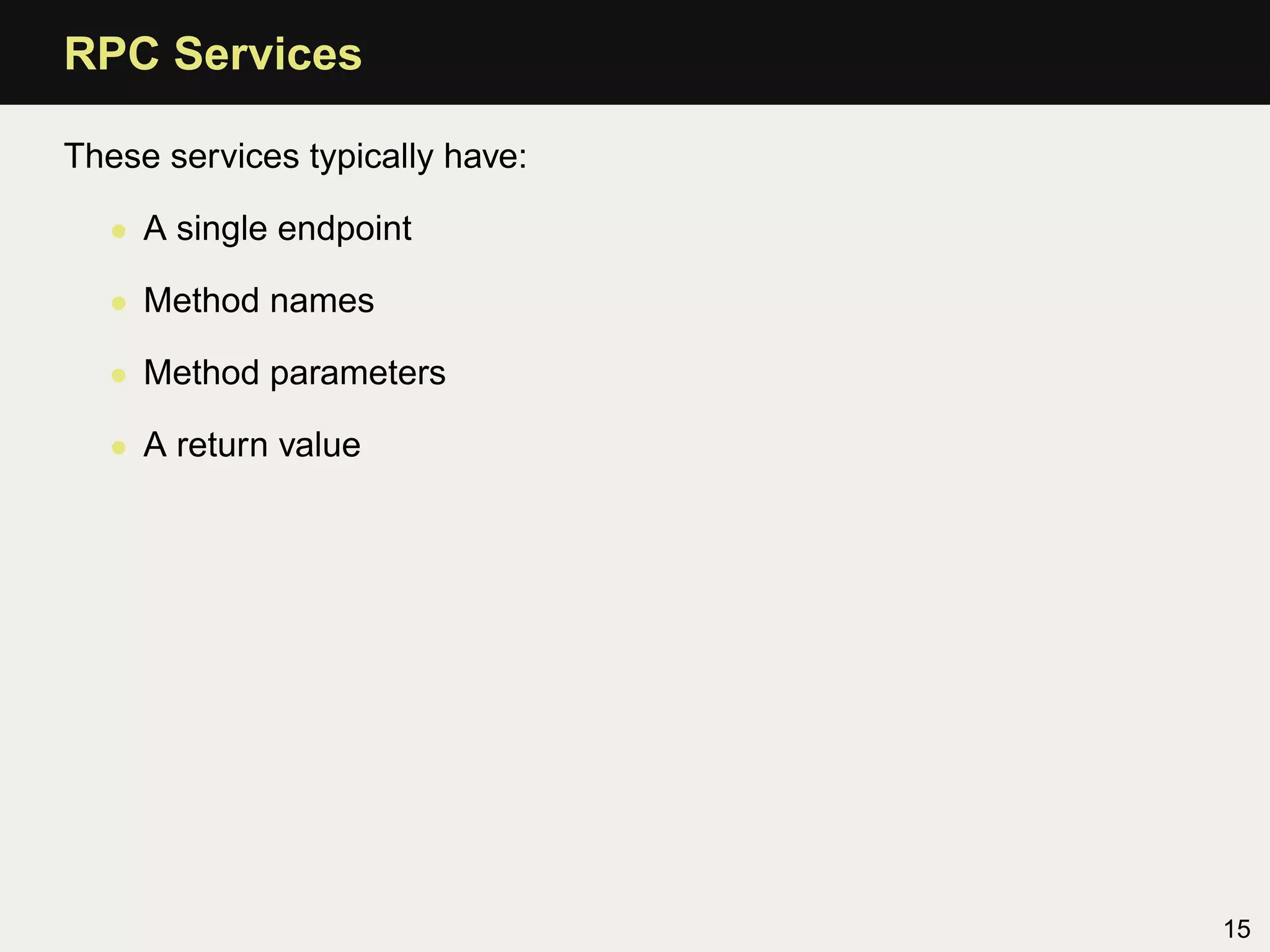
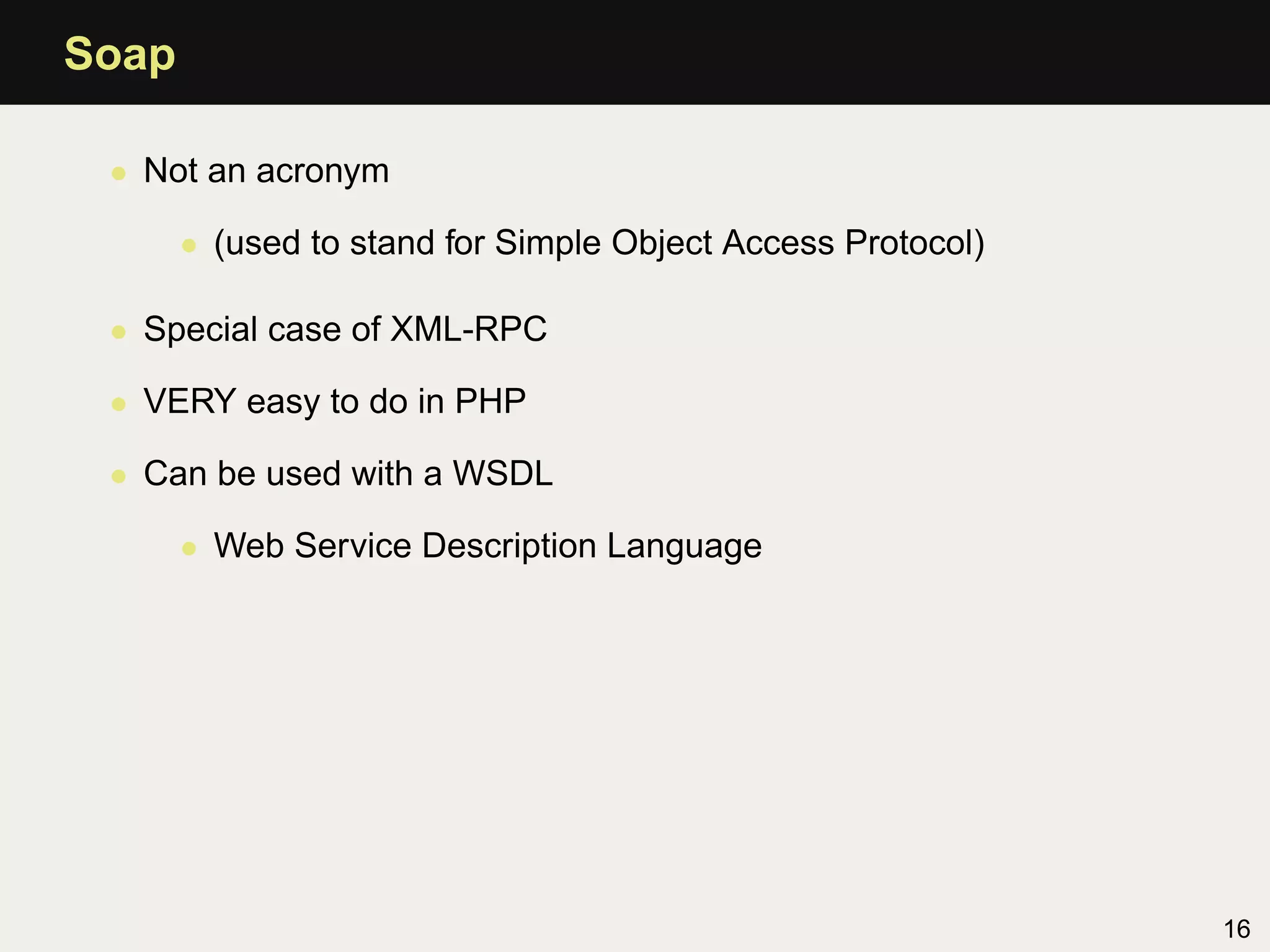
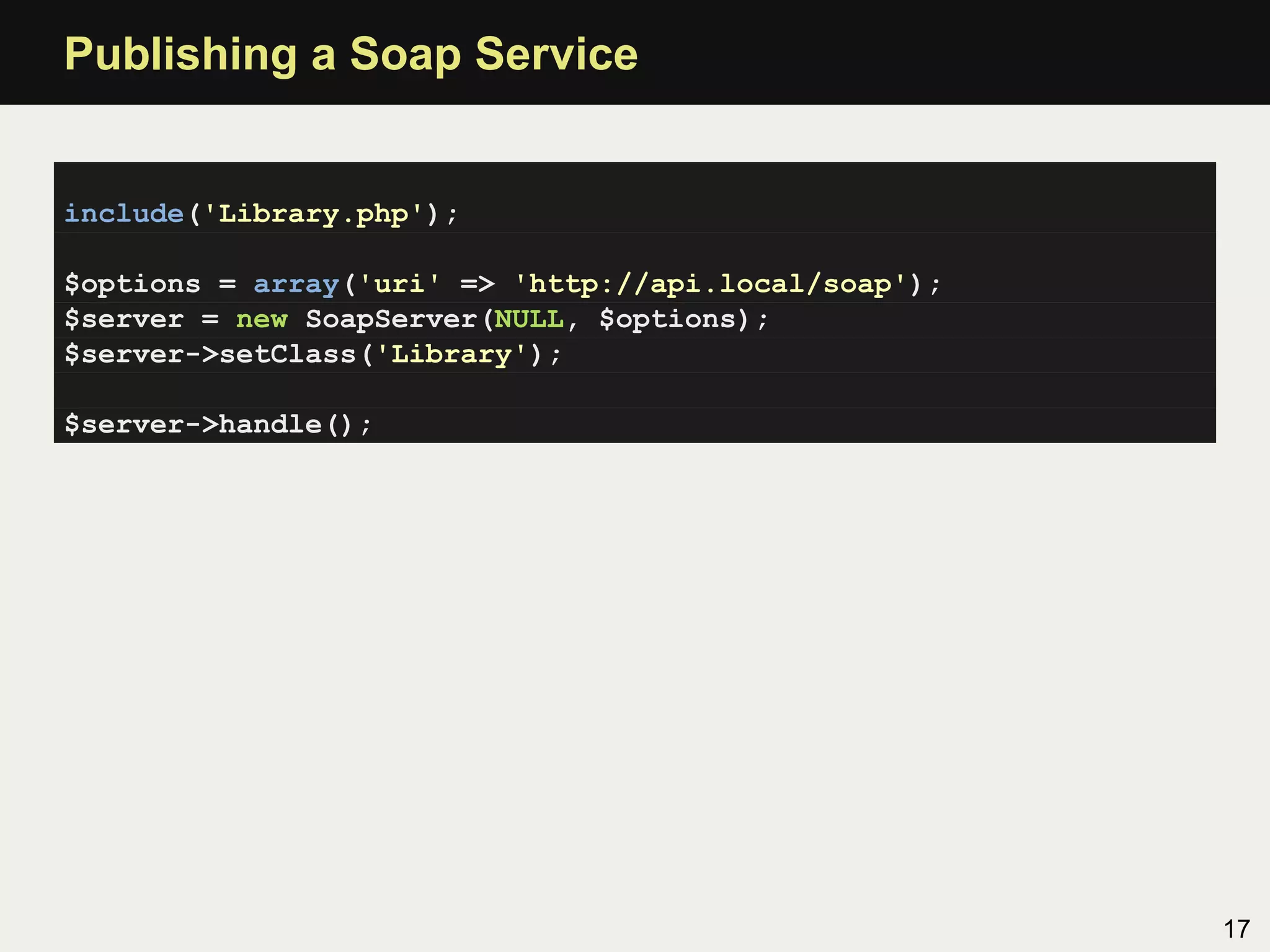
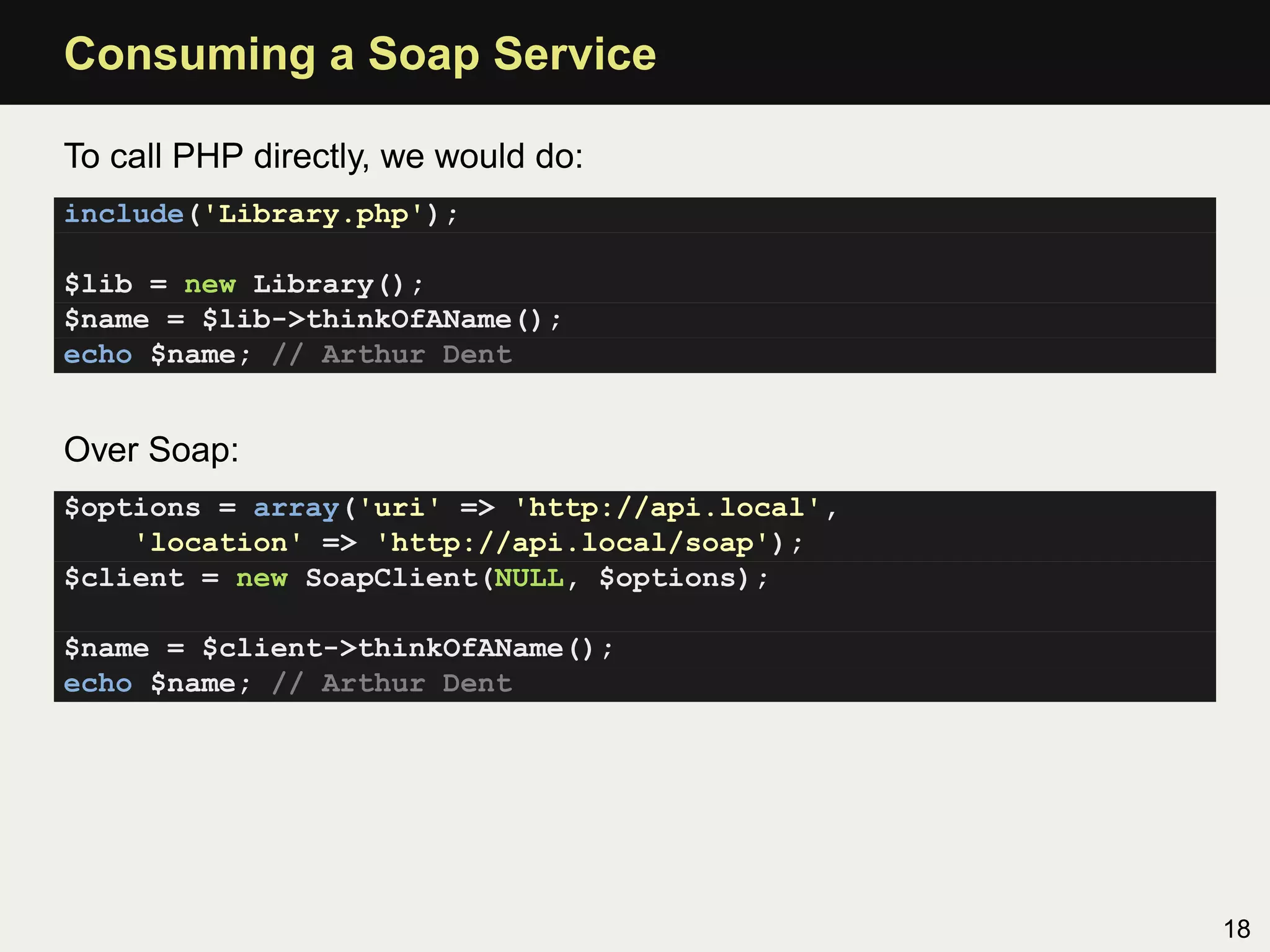
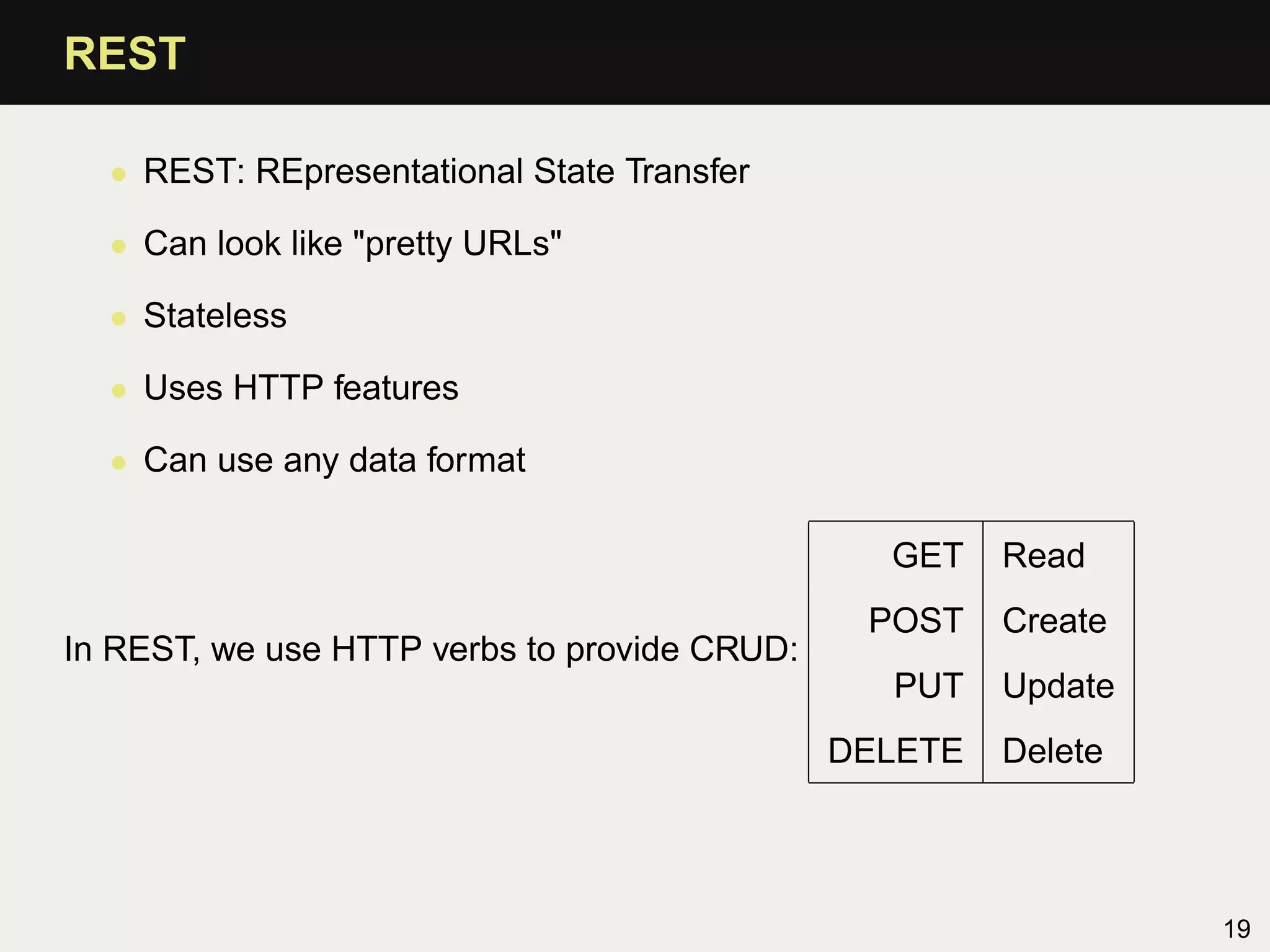
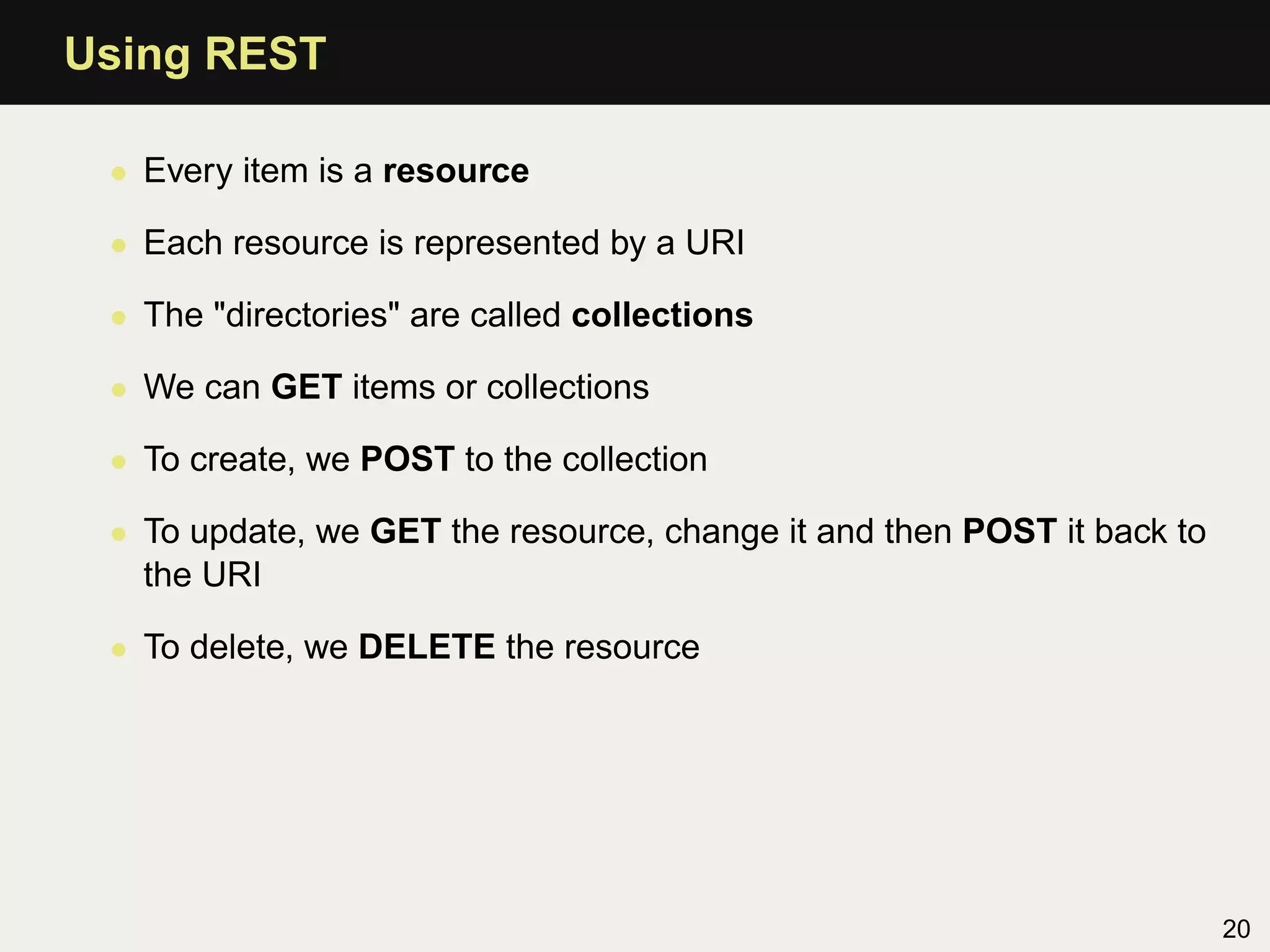


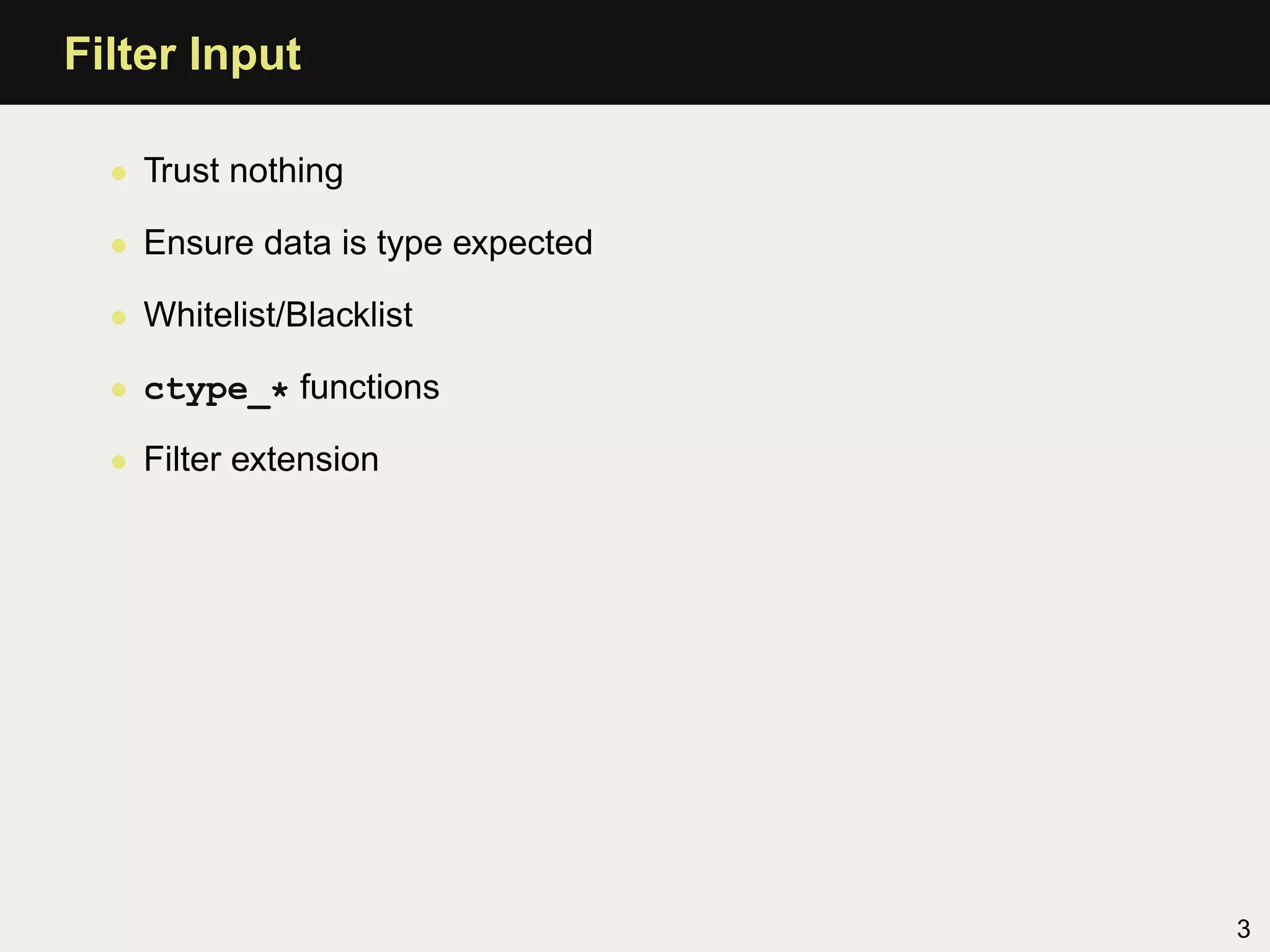



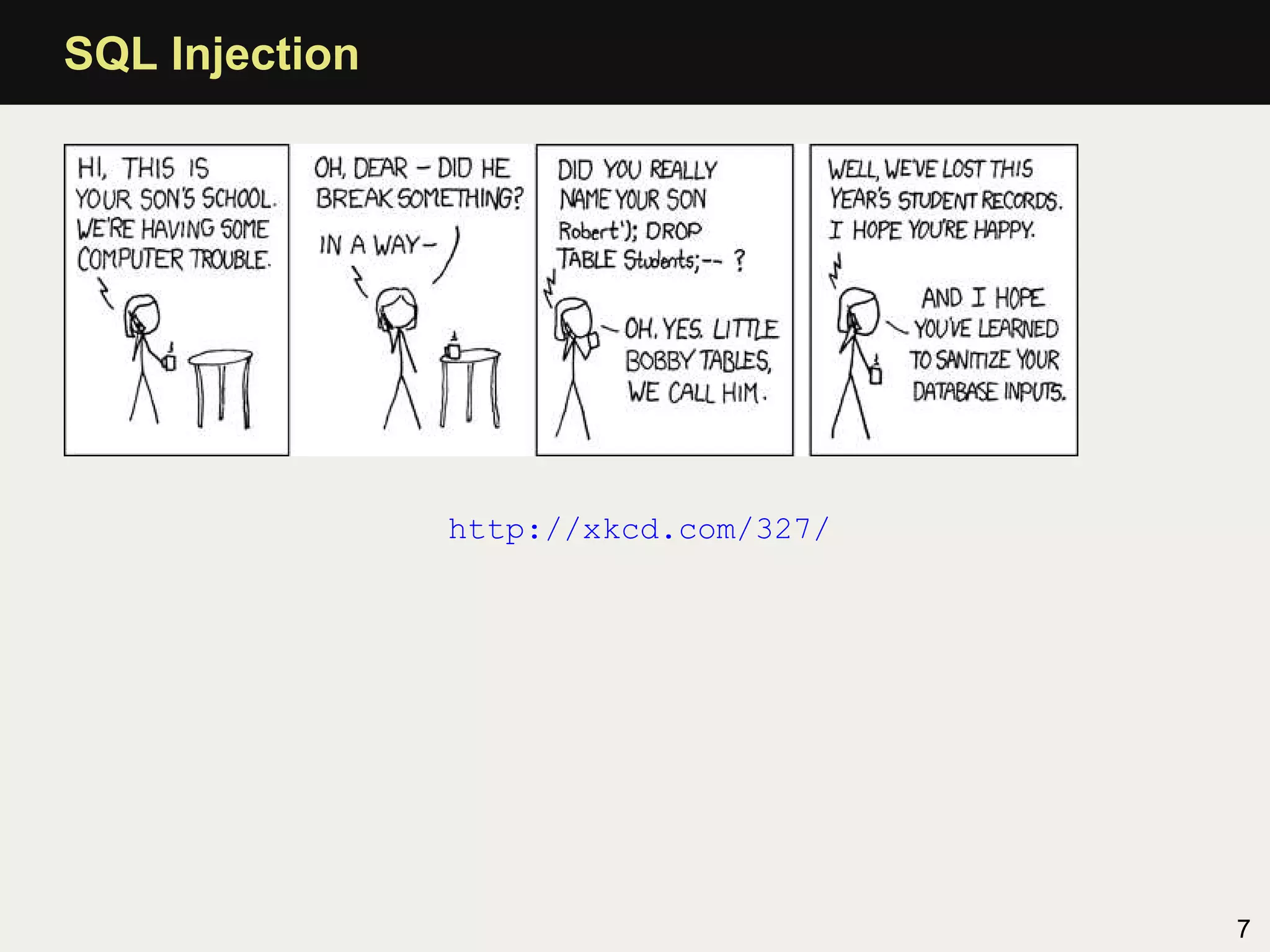


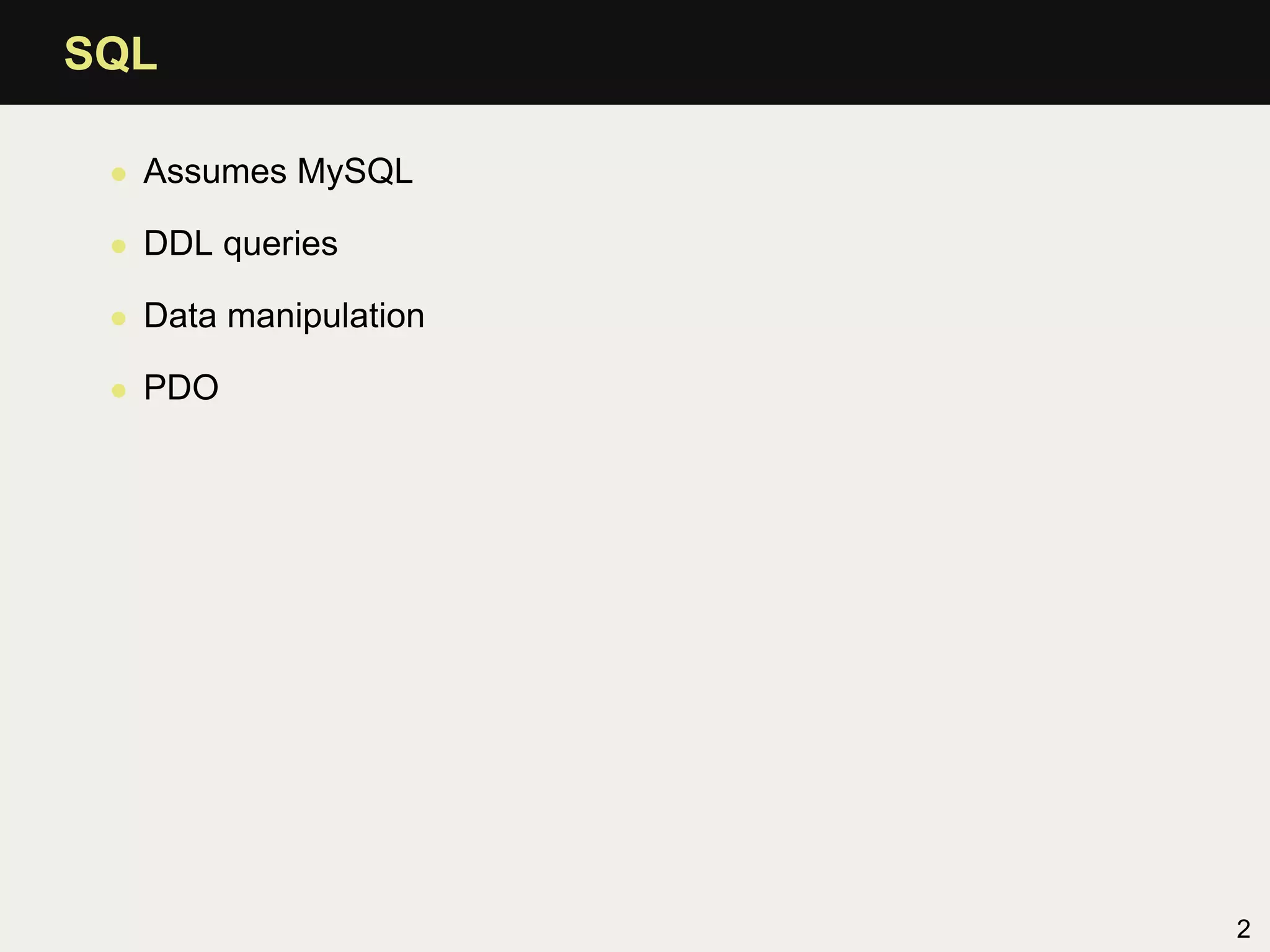
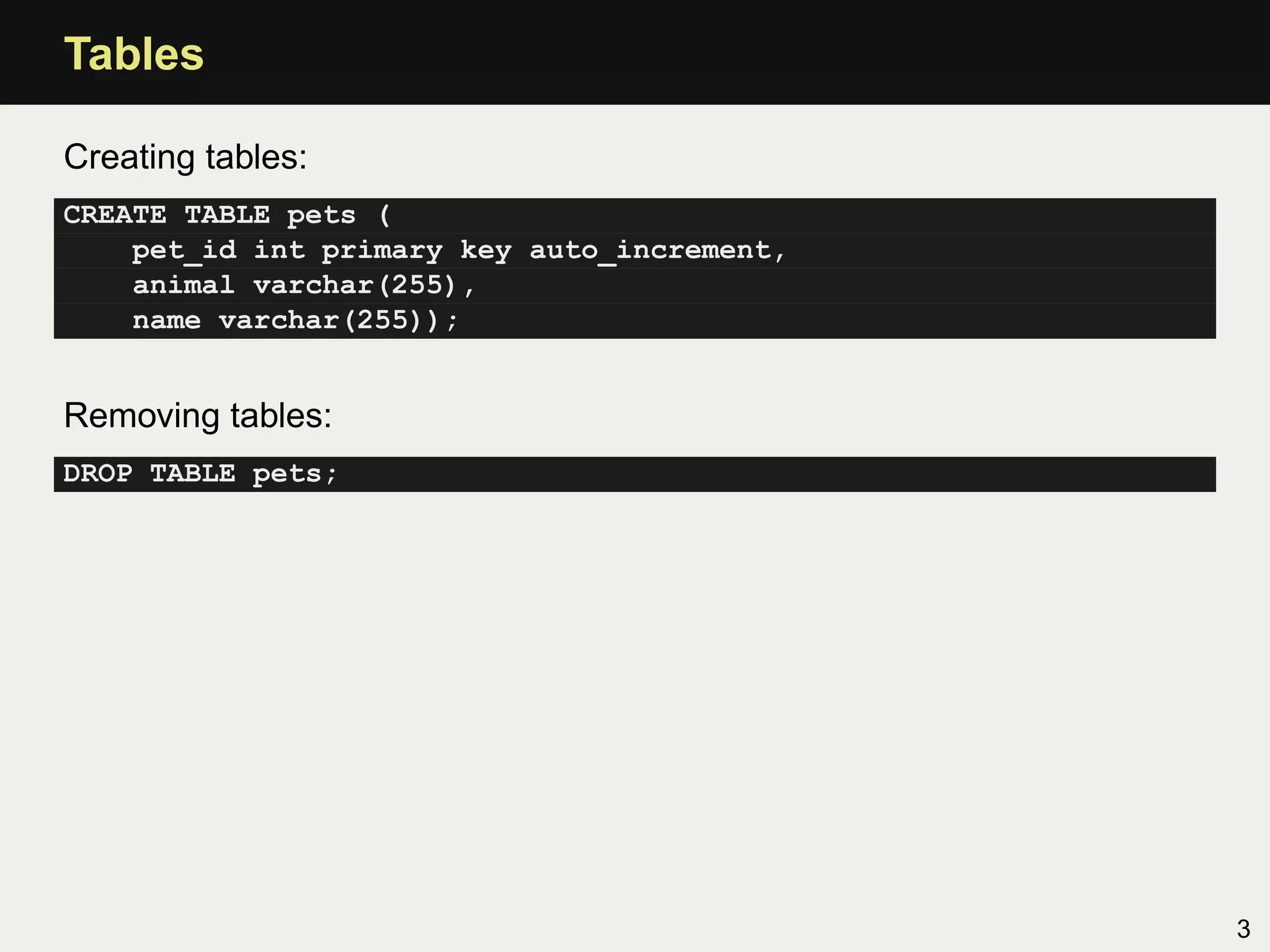
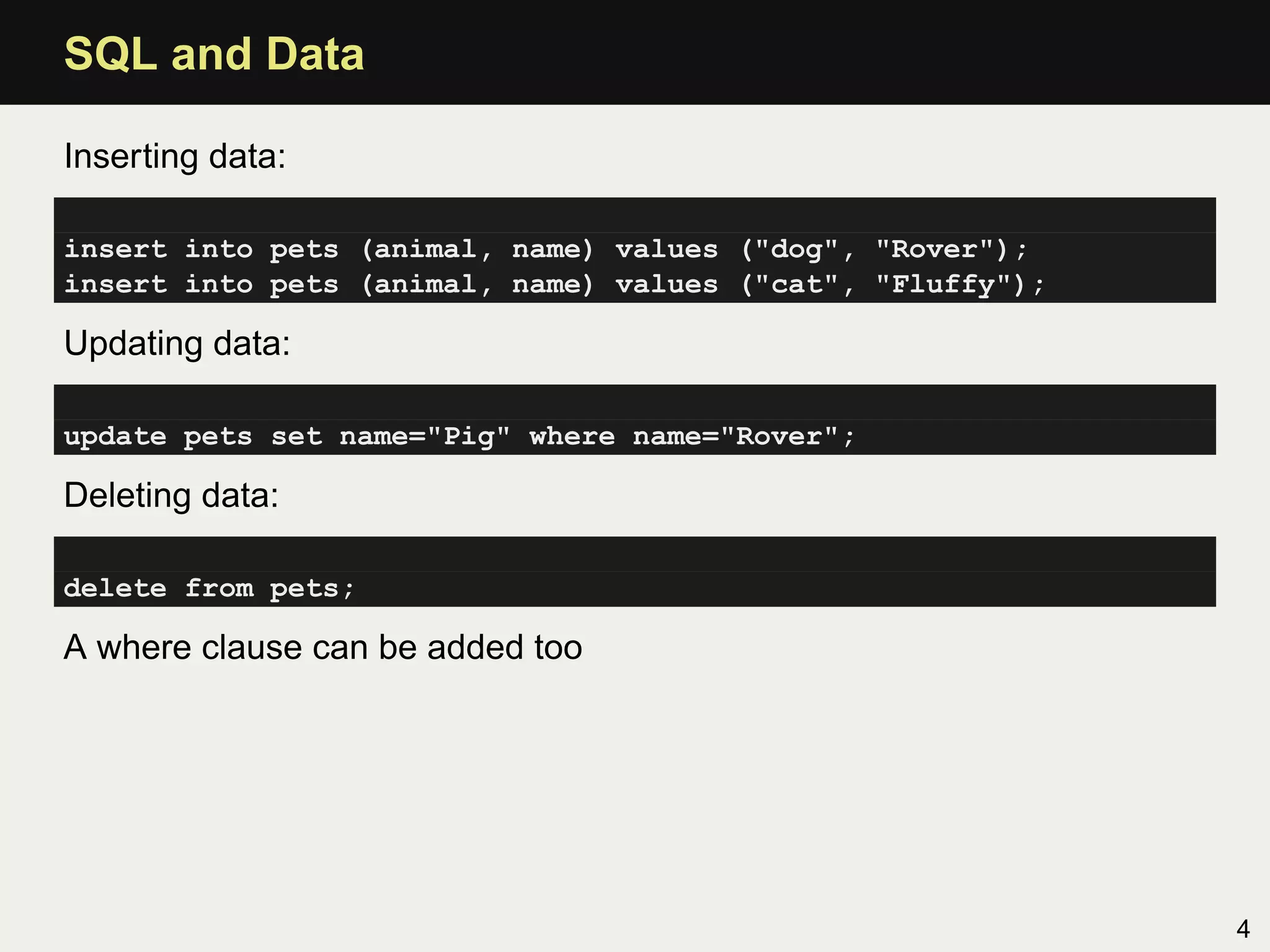
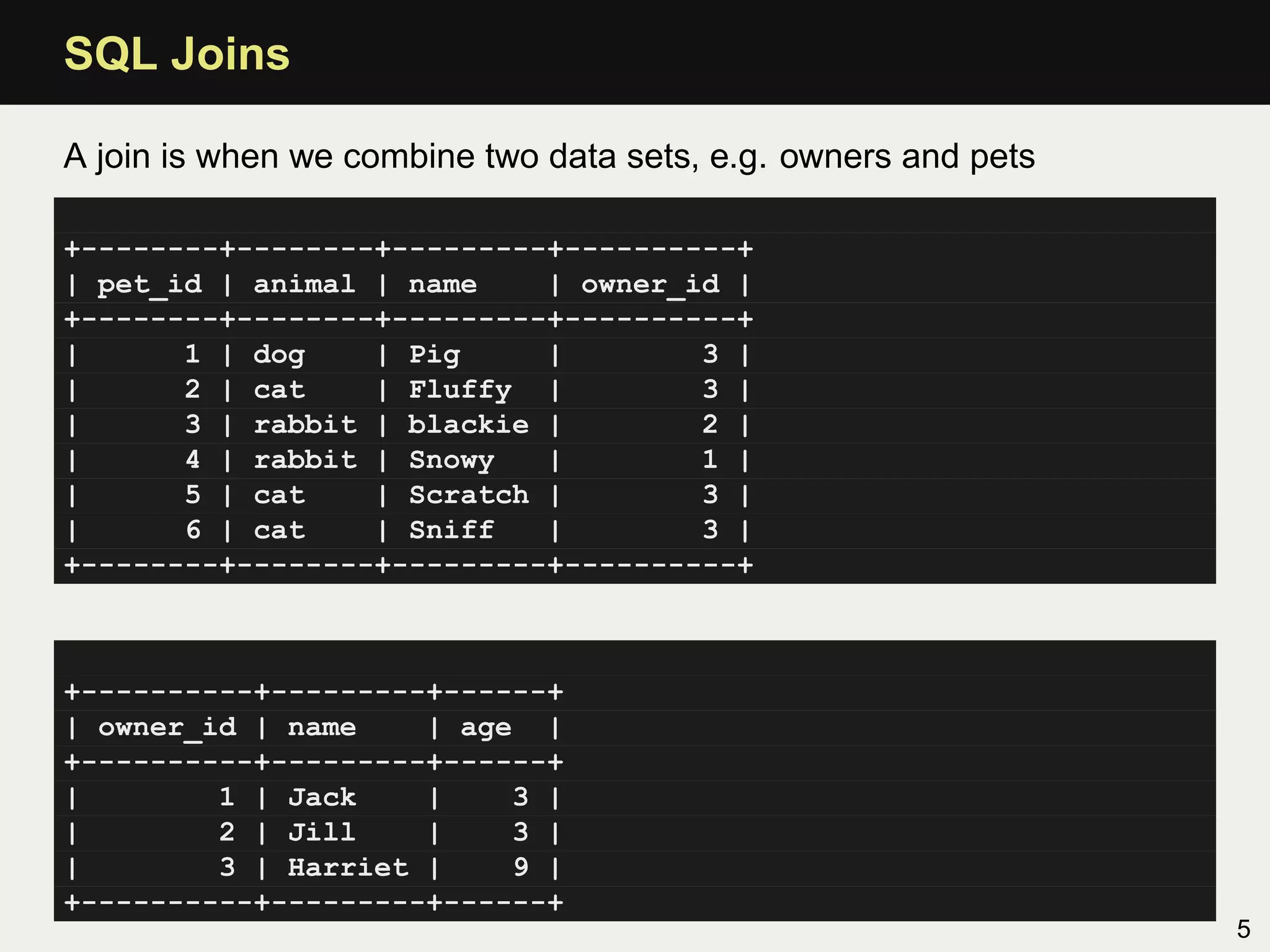
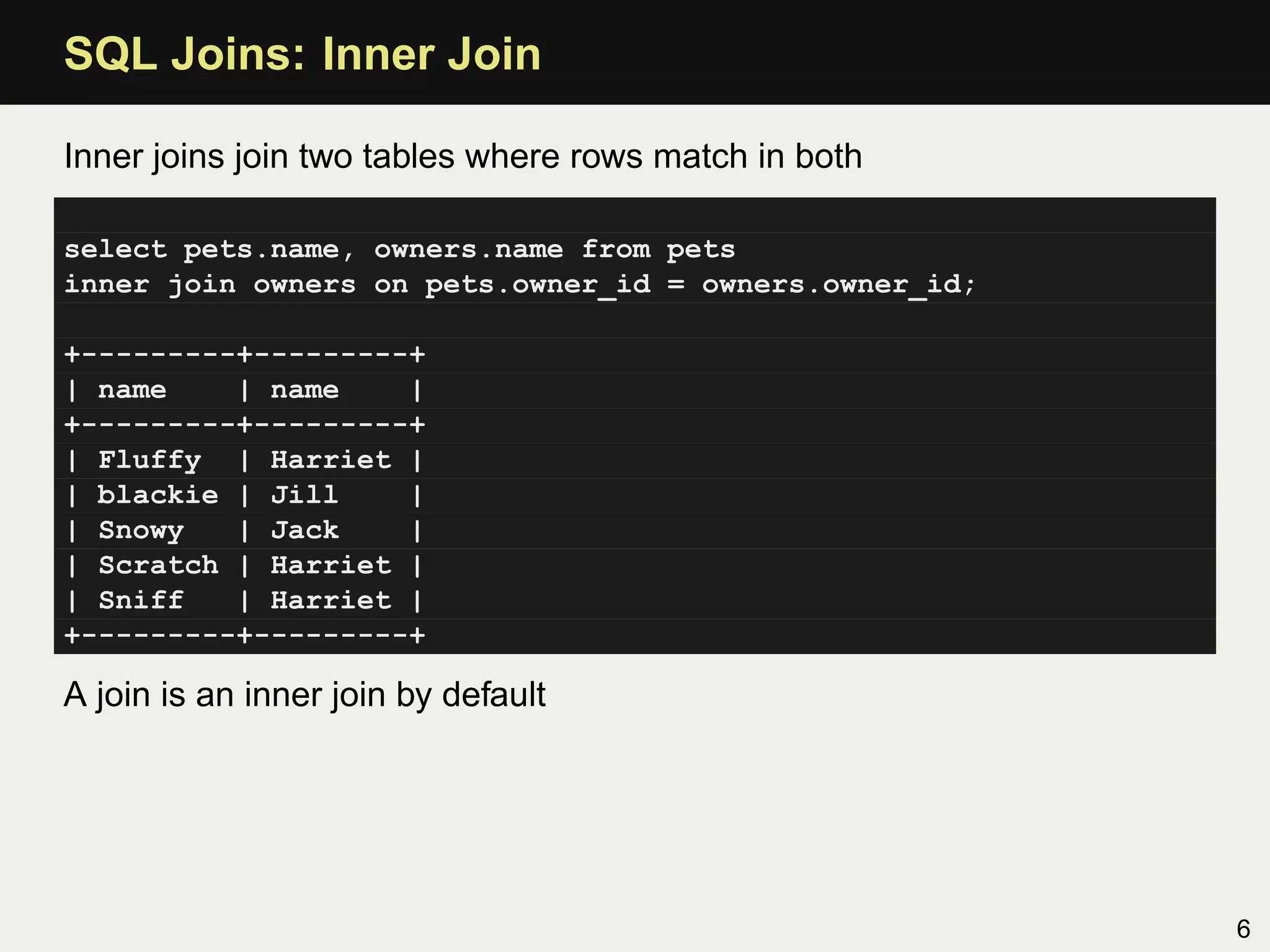
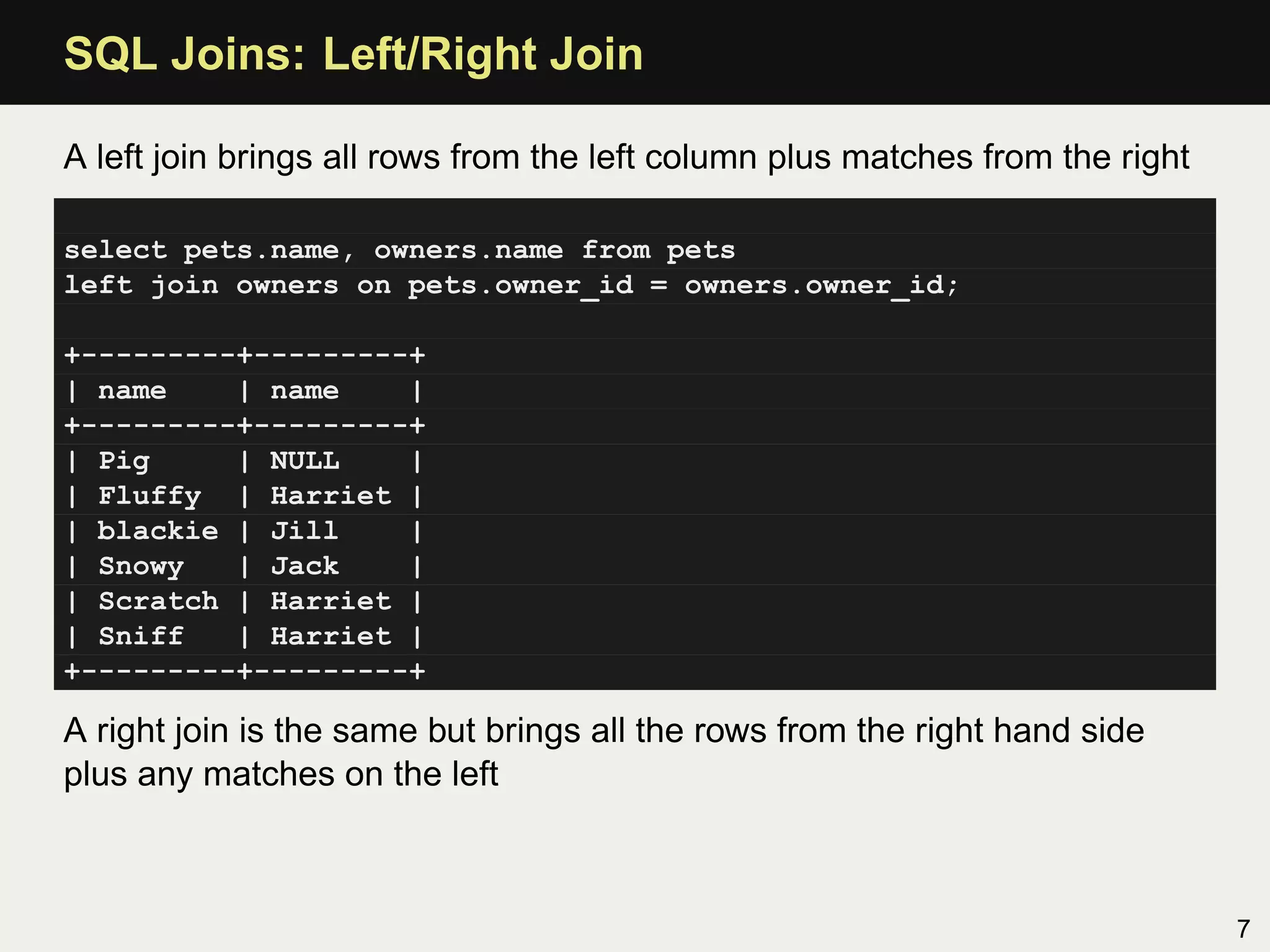
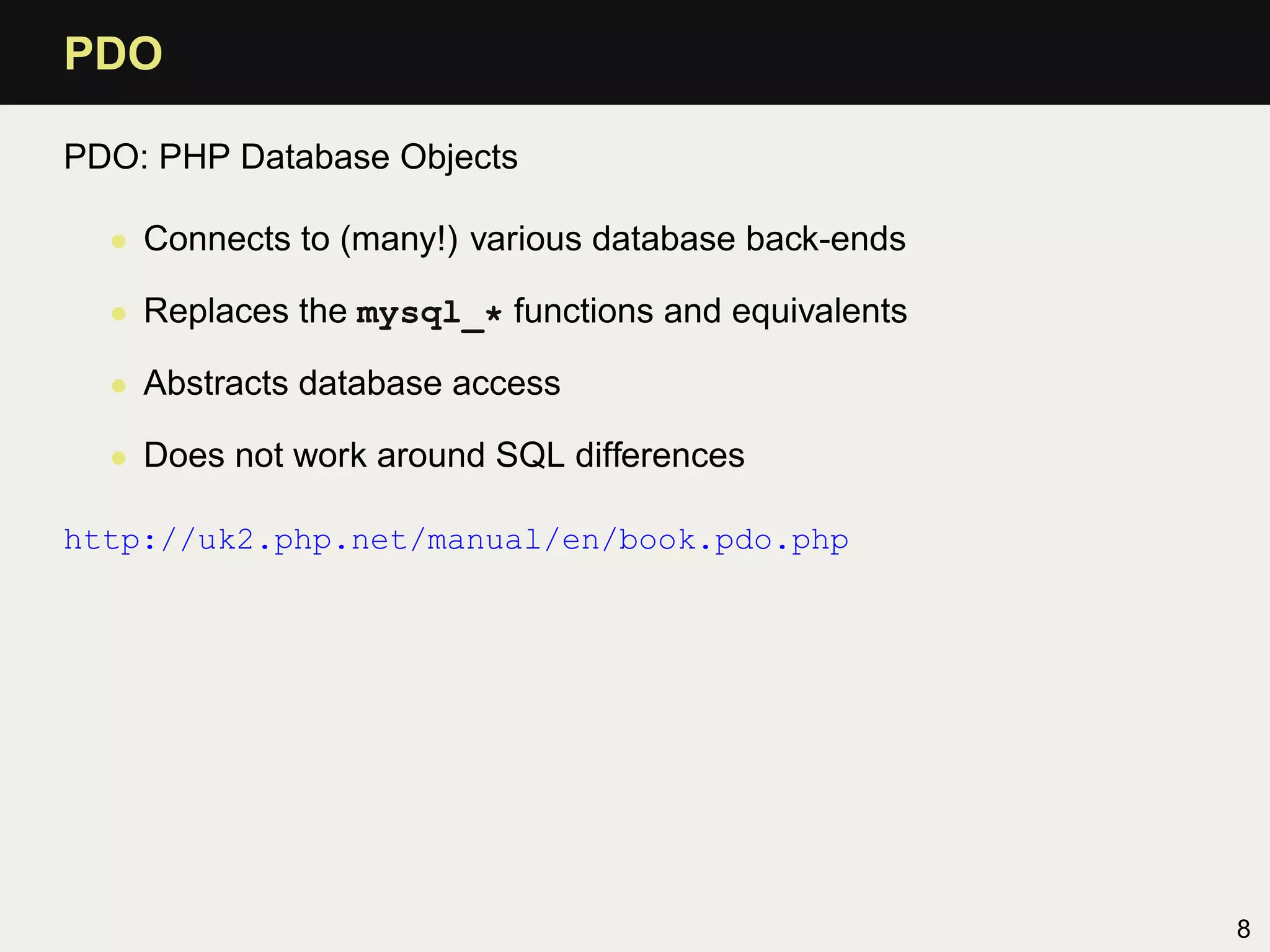
![PDO Examples
Fetching data
$dbh = new PDO('mysql:host=localhost;dbname=test', 'user', 'pass');
$query = "select name from owners";
$stmt = $dbh->prepare($query);
$success = $stmt->execute();
if($success) {
while($row = $stmt->fetch()){
echo "<p>".$row['NAME']."</p>n";
}
}
9](https://image.slidesharecdn.com/all-110517124055-phpapp02/75/Zend-Certification-Preparation-Tutorial-200-2048.jpg)
